Welcome to 3 Days of Design
It’s hard to fathom quite how quickly 3 Days of Design has risen to the top of the industry’s firmament. It started life in 2013 as a modest gathering of four brands in an old warehouse in Nordhavn. We were there, drinking craft beer out of cans, listening to house music surrounded by sofas, wondering if this was the future. Today, upwards of 500 companies, studios and designers from around the world will spill into venues across eight districts in the city. Around 45,000 visitors attended last year.
All year you hear talk of brands deciding to forego their usual presence at other fairs in favour of heading to the Danish capital in June instead. Warmer than Stockholm in February, more humane than Milan in April, closer to key markets than New York in May, 3 Days of Design has everything going for it. Its biggest success, most would agree, is that it is enjoyable. There is no fairground to suck your soul away from the midsummer sun. 3 Days is proof that a design event can inhabit a city and be dignified, combining business, culture and pleasure, symbiotically.
Of course it helps that Copenhagen is such a model urban experience, and the Danes are consummate hosts. The event feels seamless and grounded, working with the city and its resident population, not against it. It helps more perhaps because design is an embedded part of Danish culture, heritage and contemporary. Design is a business in Denmark, but it is also a democratic principle, not a luxury commodity as is the case elsewhere.
To bring 3 Days of Design to life for those not able to make it, we are on the ground this week, bringing live coverage in snippets and snapshots of our discoveries and discussions as we go.
To make it easier for you to navigate, we've pinned a few of our highlights for what to see at 3 Days of Design 2025 on to this map.
Hugo Macdonald
Meet the editors
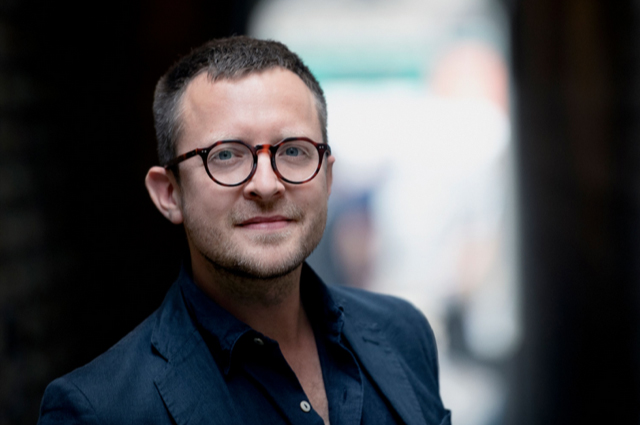
Hugo is a design critic, curator and the co-founder of Bard, a gallery in Edinburgh dedicated to Scottish design and craft. A long-serving member of the Wallpaper* family, he rejoined the team last year to cover the parental leave of Rosa Bertoli as Global Design Director.
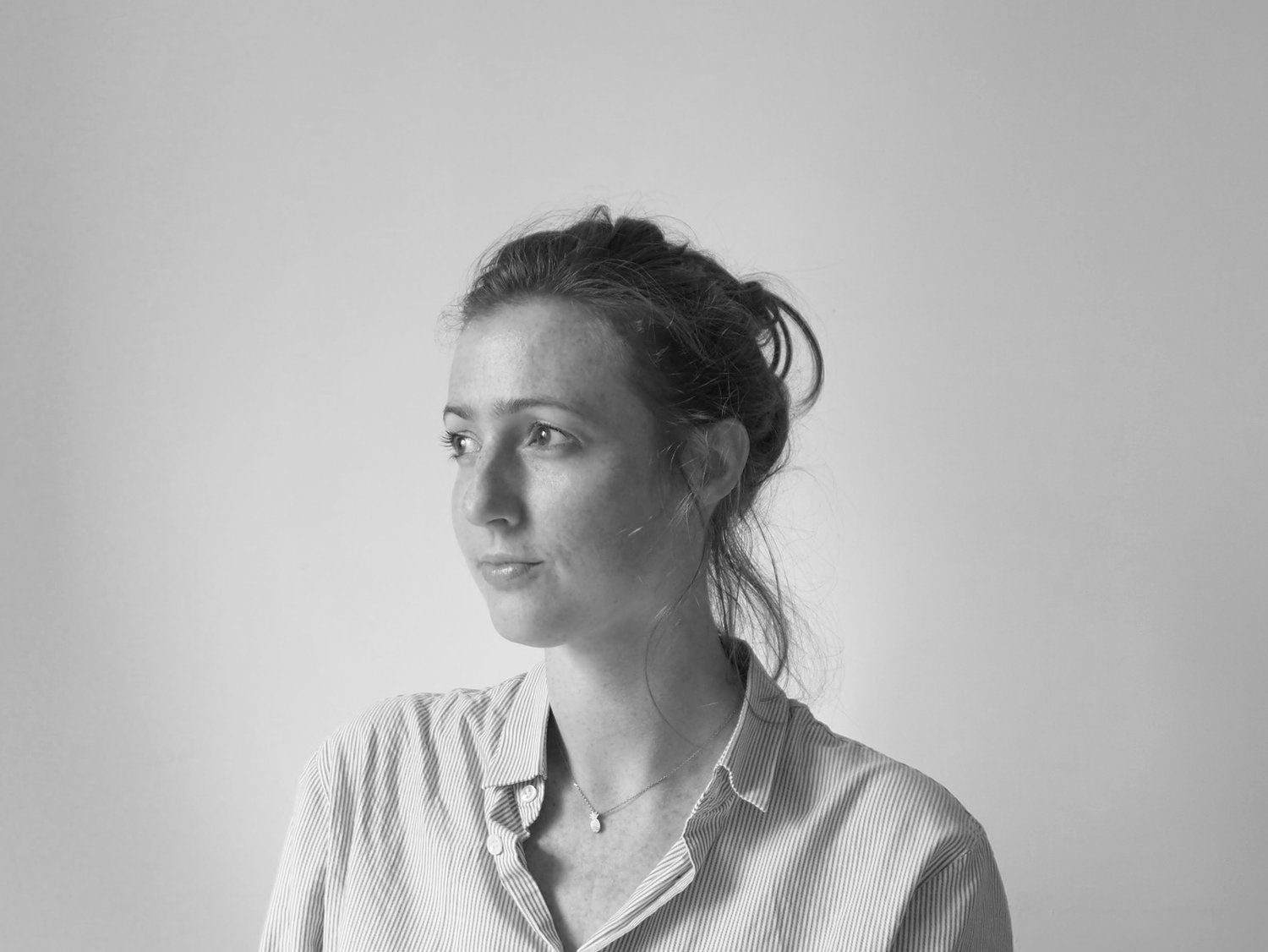
Ali Morris is a UK-based editor, writer and creative consultant specialising in design, interiors and architecture. In her 16 years as a design writer, Ali has travelled the world, crafting articles about creative projects, products, places and people.

Olly Mason is the Head of Interiors at Wallpaper*. Over the past decade working for us, she has frequently attended design weeks around the world, with Copenhagen’s 3 Days of Design being a regular highlight. Through these visits, Olly gains invaluable insight into furniture and global design culture, building meaningful connections with designers and brands that help shape the interiors direction of the brand and guide the creation of Wallpaper’s interiors photoshoots.
A trip to Carl Hansen & Søn
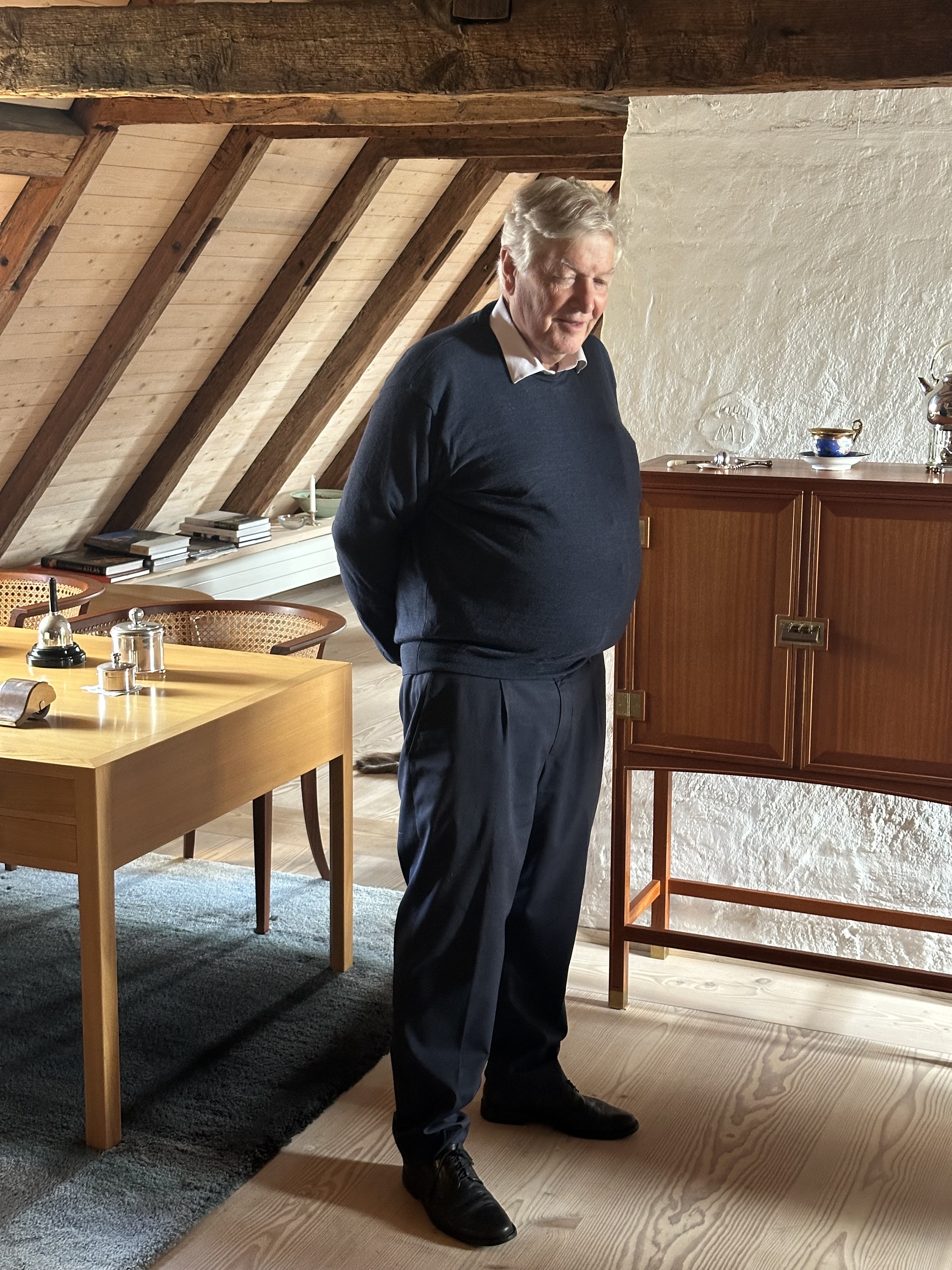
Before the main event officially kicks off on Wednesday, I headed north to the island of Funen to the castle that is home of Knud Eric Hansen, the third generation managing director of Carl Hansen & Søn. Knud Eric took the reins of Carl Hansen from his brother in 2002, inheriting one of the world’s more significant furniture portfolios and 15 employees. Today there are 600 employees, an ever-expanding factory operation and an impressive apprenticeship program. Carl Hansen is one of Denmark and Europe’s modern manufacturing success stories. Hugo Macdonald
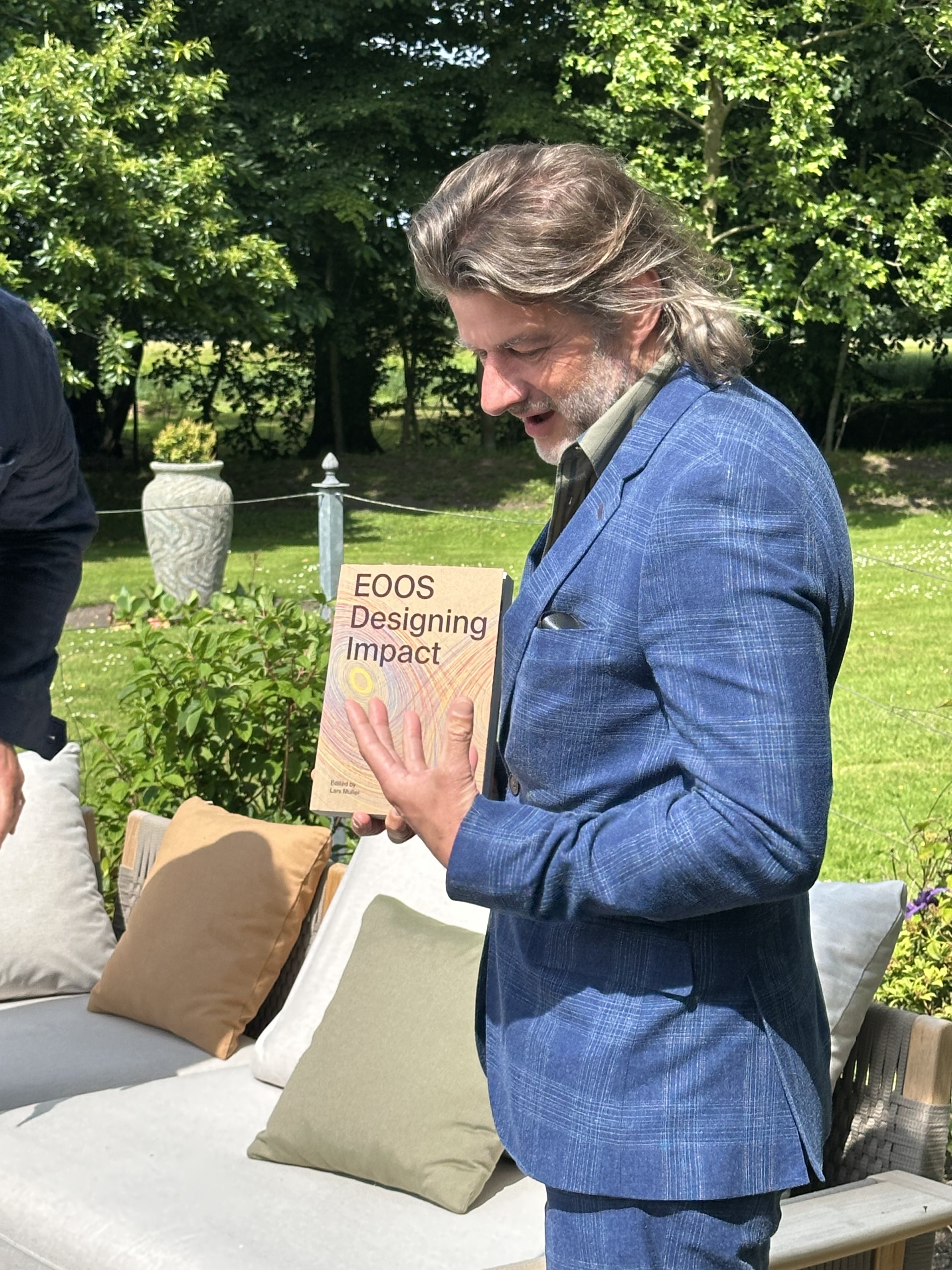
Martin Bergmann of EOOS shows us the studio’s new book
We were entertained by Viennese design studio EOOS who demonstrated the clever multi-configurable, sectional and flatpack mechanism of their new Cocoon outdoor seating system for Carl Hansen (the secret is in the joints). Martin Bergmann of EOOS unveiled the studio’s new book ‘Designing Impact’ published by Lars Muller, while Knud Eric’s beloved German Shepherd, Polly, polished off the rest of our tea quietly in the background. Hugo Macdonald
Overnight in Odense
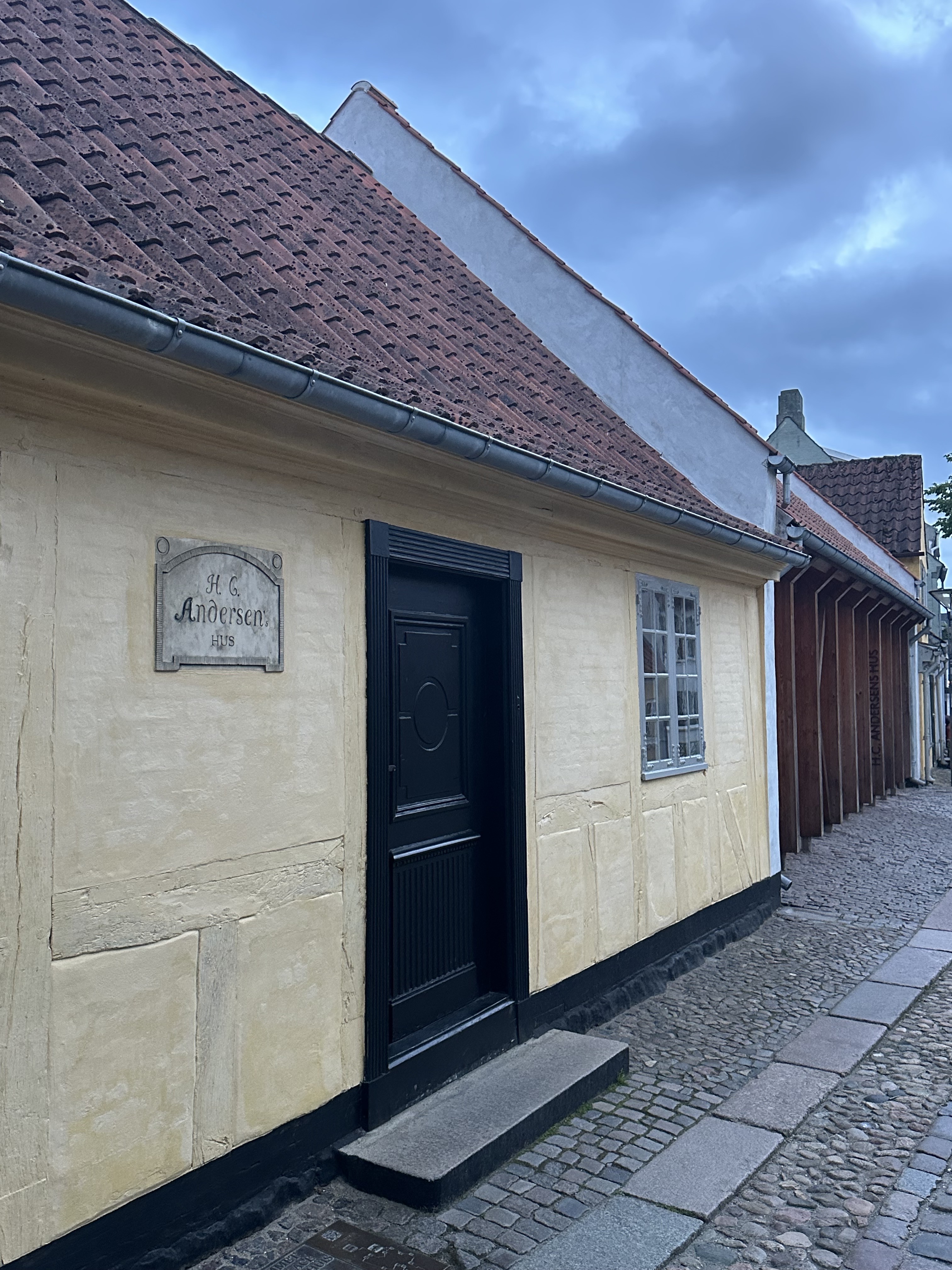
Hans Christian Andersen’s childhood home, with a little bit of Kengo Kuma’s museum visible next door on the right
An overnight stay in nearby Odense, Denmark’s third city, meant a post-dinner pilgrimage to the childhood home of Hans Christian Andersen, master-storyteller of Ugly Duckling fame. Kengo Kuma has designed a beautiful series of museum buildings and gardens adjoining the humble house, which opened in 2022. Odense rightly wears its HCA association proudly. Less heavily promoted is the fact that HCA couldn’t wait to escape small town life for the bright lights of Copenhagen. I’m following in his fabled footsteps, heading back to Copenhagen via the Carl Hansen factory this afternoon. Hugo Macdonald
Meanwhile, in Copenhagen...
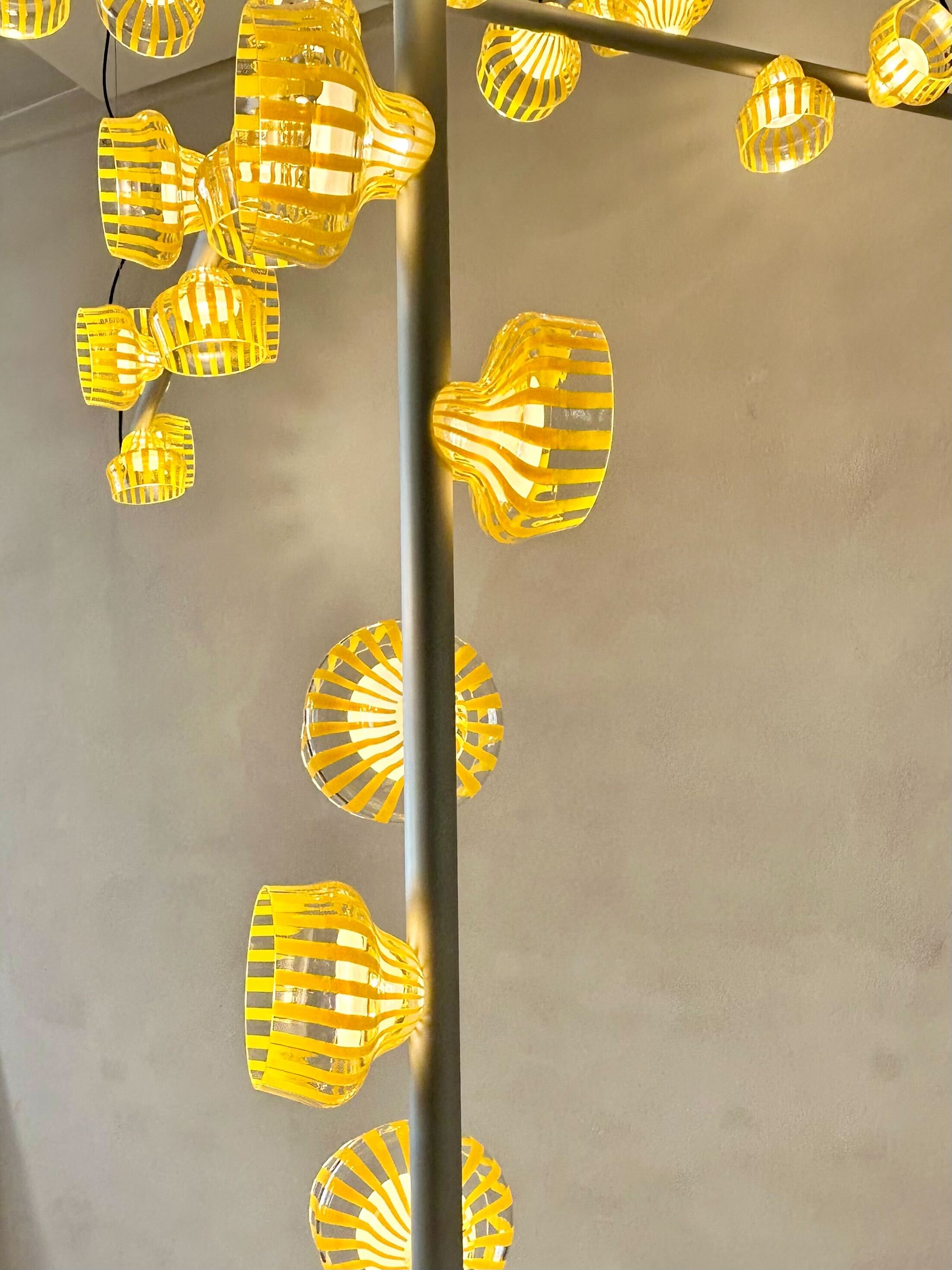
A lamp by Matteo Fogale
As the world’s design press descended on the city for sneak peeks yesterday, our day began admiring offcuts from the Murano glass industry repurposed as beautiful lighting designs for Fucina Frammenti. Pieces included a suspended glass lamp with yellow ‘blooms’, and a portable lamp by Copenhagen-based Matteo Fogale. All are on show as part of the Venice brand’s ‘Appartamento’ exhibition on Sankt Peders Stræde 35. Ali Morris
‘Bread and Butter’
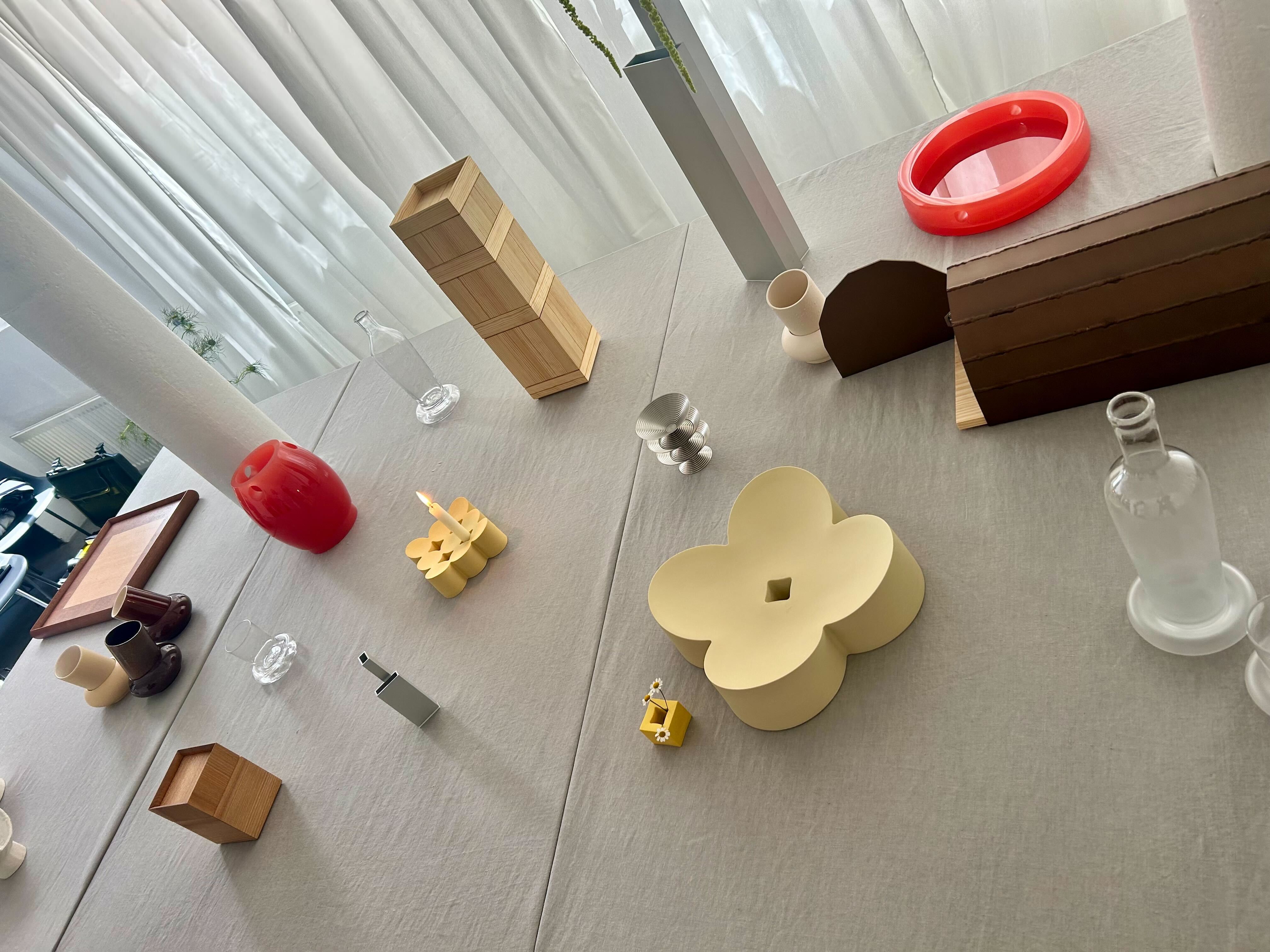
Taking place in Korean restaurant Ouri on Sankt Peders Stræde, ‘Bread and Butter’ is a playful showcase of specially commissioned objects for the dining table. Created by 12 designers hailing from Denmark, Korea, the Netherlands and Germany, the objects are all designed as pairs. Highlights include a mouth blown glass carafe and glass set with coasters by Maria Bruun, an off-kilter ceramic cup and saucer by Hun Lee, and a resin wine cooler and serving tray by Forever Studio. Curated by Ae Office and Pyeori Jung. Ali Morris.
‘Home from Home’ by Charlotte Taylor x Noura Residency

Continuing the recent theme of cinematic exhibitions that resemble lived-in apartments, Noura Residency (a location apartment on Sankt Peders Stræde) has teamed with art director and designer Charlotte Taylor to create ‘Home from Home’. Here guests are welcomed inside to explore a series of atmospheric room sets featuring work by established and emerging designers. Shown here - a kitchen table designed by curator Charlotte Taylor, with chairs by Kasper Kyster and stone glasses by Diego Sanchez Barcelo. Ali Morris
Dinner in Tivoli with Velux
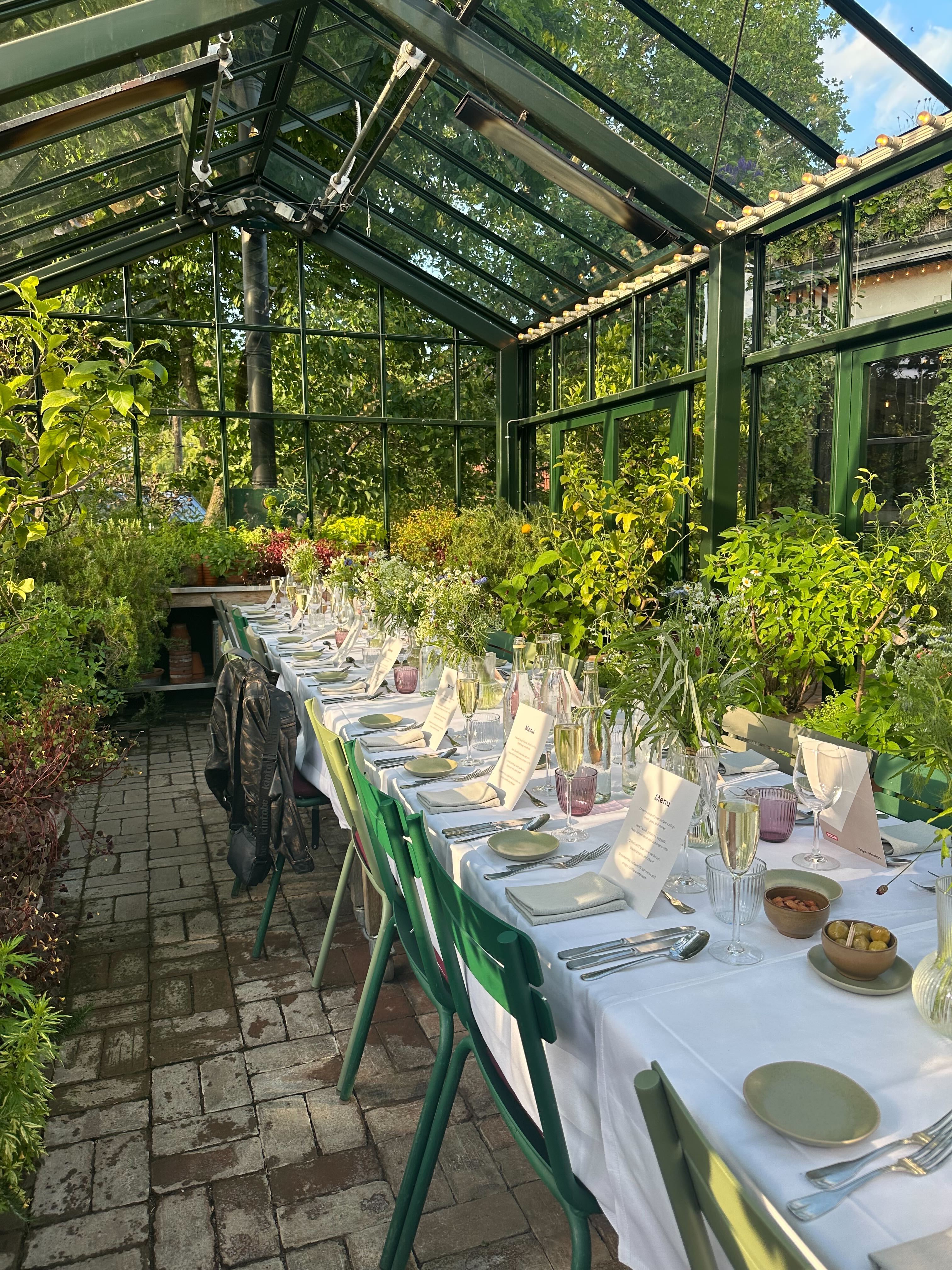
One of the world’s oldest amusement parks, Tivoli Gardens in the heart of Copenhagen is bypassed by most discerning visitors who write it off as a tourist trap. Take heed from us and do pop in - it’s another world in there: verdant, weird and wonderful in every way. This was King Christian VIII’s intention when he commissioned it in 1843 - to distract the population from political unrest. Nothing really changes. The greenhouses in Tivoli made the perfect venue for a dinner hosted by Danish window manufacturer Velux. We were treated to chilled garden pea soup, slow cooked hogget and sweet milk ice cream. Hugo Macdonald
‘No.1 Common’ at Material Matters
One of my last stops of the day was AHEC’s ‘No.1 Common’ exhibition, which finds beauty in imperfection. Featuring pieces by Andu Masebo, Daniel Schofield, Anna Maria Øfstedal Eng (one of her yellow birch pieces is pictured here) and Kia Utzon-Frank – all are made from discarded planks at Benchmark’s UK workshop. Full of knots, colour shifts and bent grain – it challenges our idea of defects, showing the potential for a more responsible future where uniformity is rejected and the unusual celebrated. Ali Morris
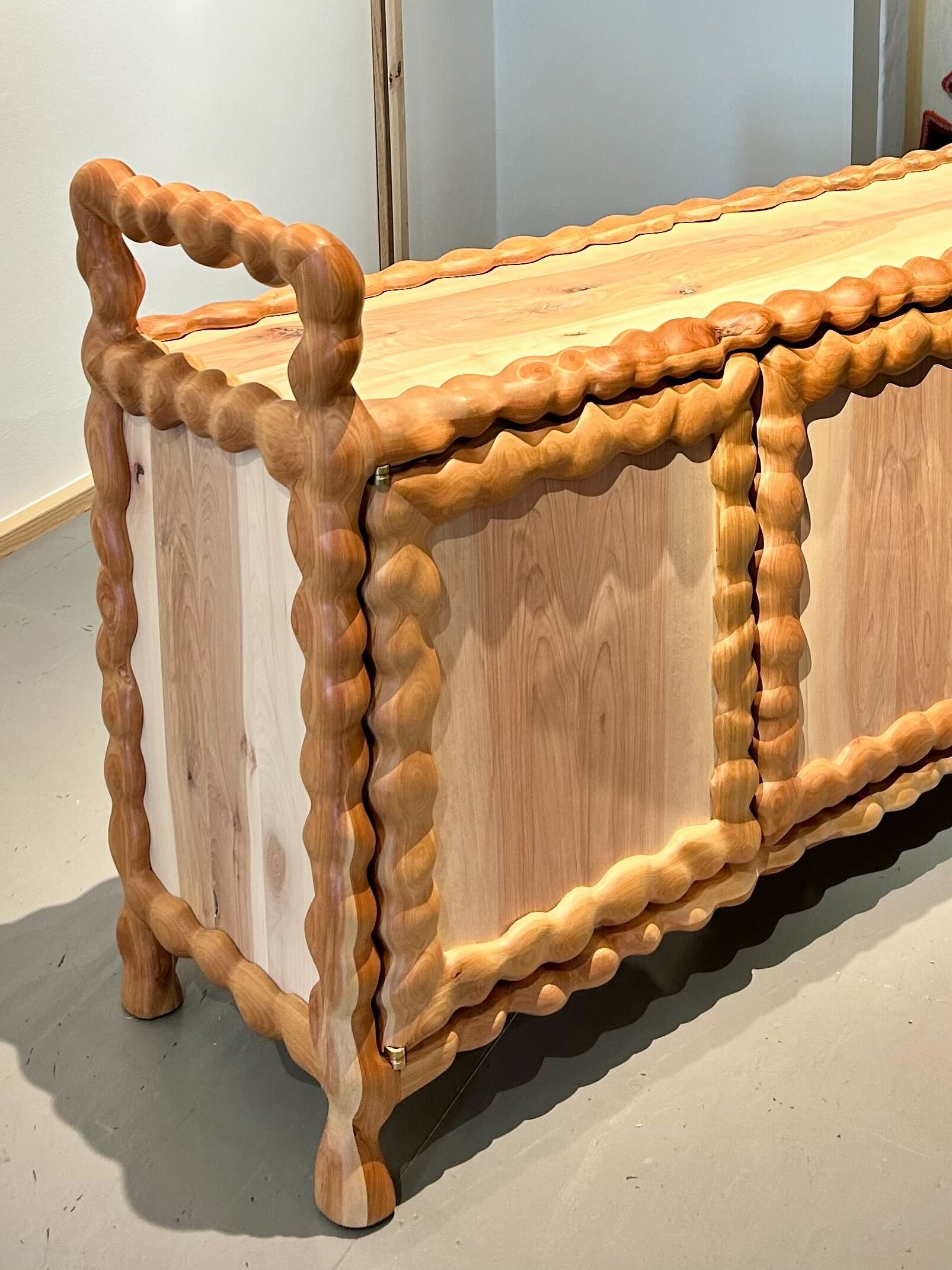
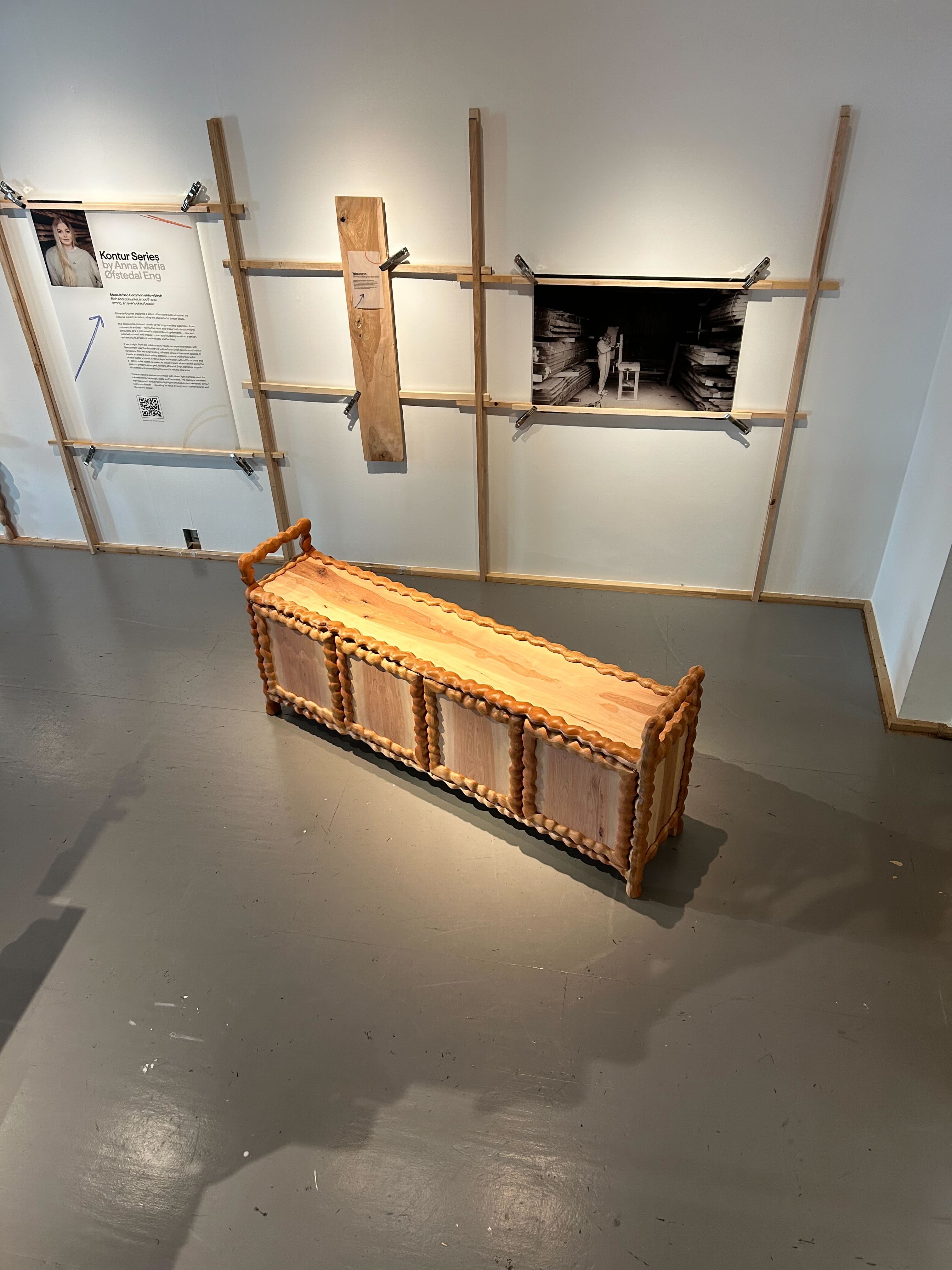
Finnish glassmaker Iittala looked to science fiction cinema for its 3 Days of Design debut
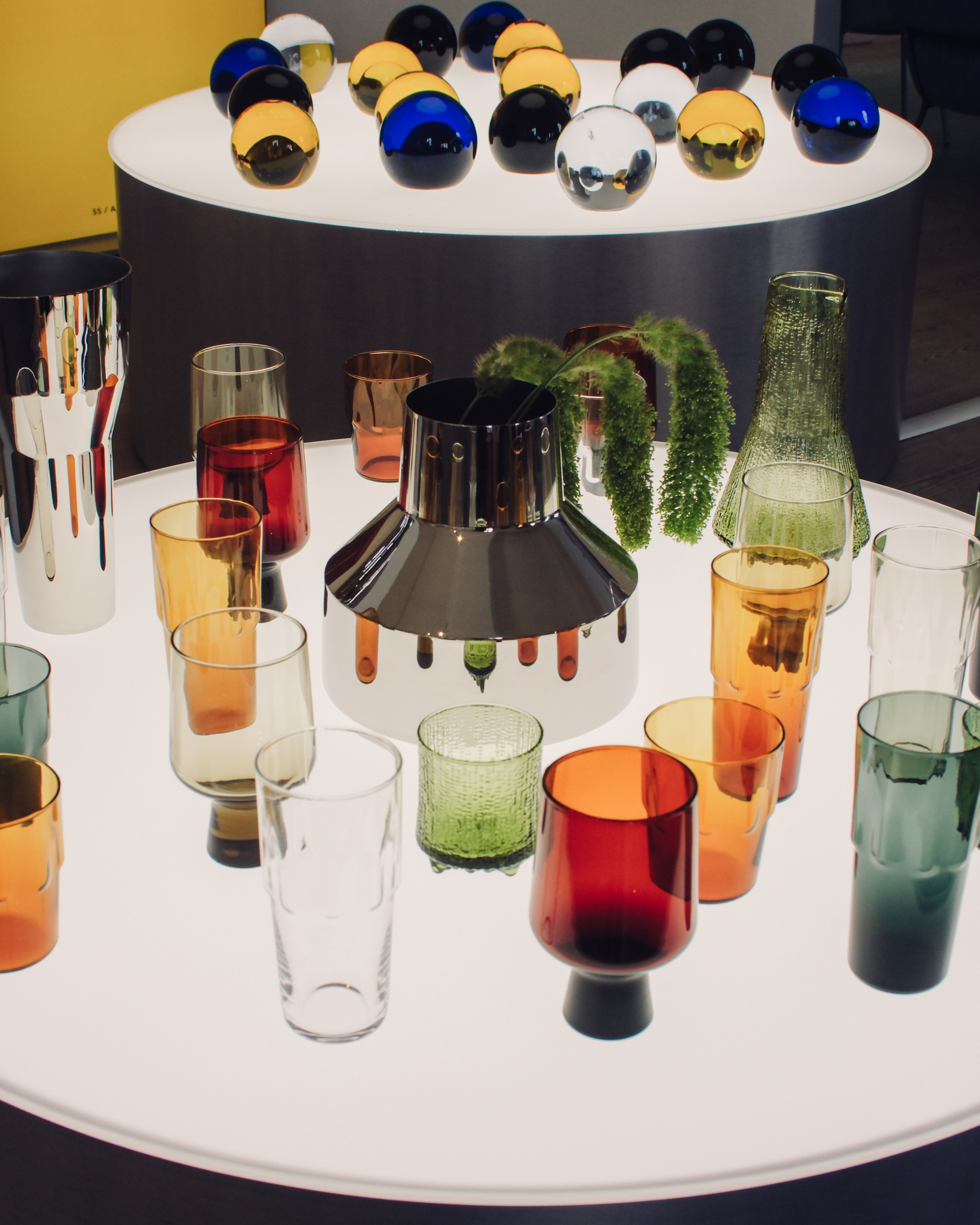
'Solare’s colour palette is inspired by the heat and energy of the midsummer sun,' said Iittala’s creative director, Janni Vepsäläinen, speaking on the first morning of the Copenhagen-based festival, which takes place only a few long and light-filled days before the solstice. 'During these months, when the sun barely goes down at all, the heat and energy make us a little crazy — and that’s the feeling I wanted to project into this collection.'
Installed on the ground floor of the historic Frederiksgade House of Design in central Copenhagen, Vepsäläinen and her team presented a striking installation that nodded to sci-fi film and experimental architecture. A sculptural steel framework, composed of undulating arms evoking Santiago Calatrava’s kinetic bridges, suspended a constellation of blown glass goblets, their placement tracing the arc of the sun as it moves across the Nordic sky. 'For the presentation, we collaborated with London-based set designer Paulina Piipponen,' said Vepsäläinen, who joined the brand in 2024 following a tenure as senior knitwear designer at JW Anderson. 'I wanted to evoke the sensation of flight. An aerodynamic moment, like stepping into a space shuttle.'
Alongside the luminous summer palette, first launched earlier this year — a blend of sun-bleached yellows and moody, inky blues — Iittala introduced a new autumnal range, inspired by the rich tones of a northern forest in late September. Among the new seasonal releases, the brand unveiled its first scented candles — with fragrances grounded in the elemental materials of glassmaking: fire, sand and water — poured into the sinuous form of Alvar Aalto’s iconic 1936 vase. Also on show was a new edition of the Ultima Thule glassware, made entirely with local Finnish sand, which imbues the pieces with a natural greenish tint reminiscent of the Nordic country’s ancient boreal forests. Laura May Todd
‘Optical Flow’ by Fanzi
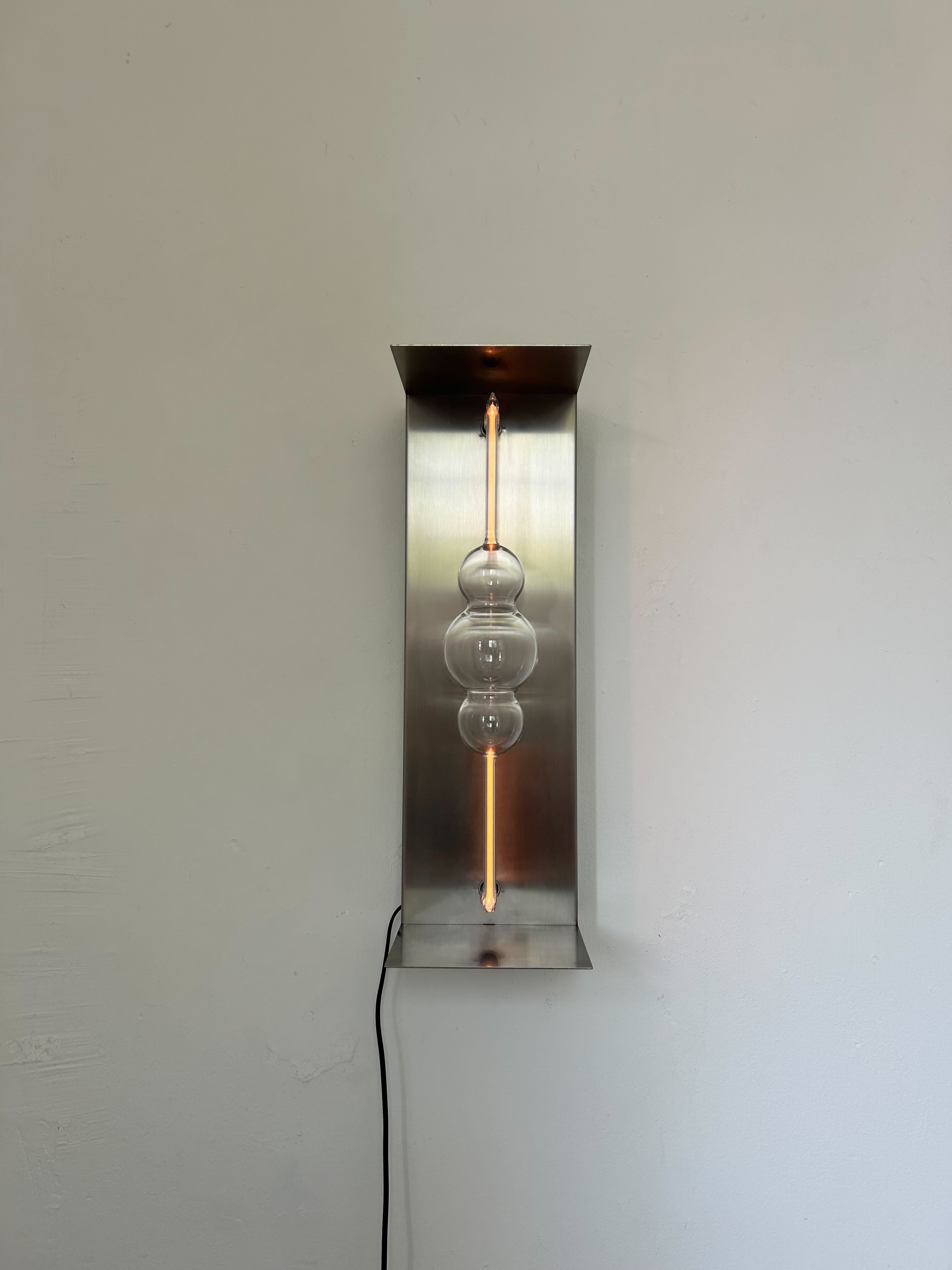
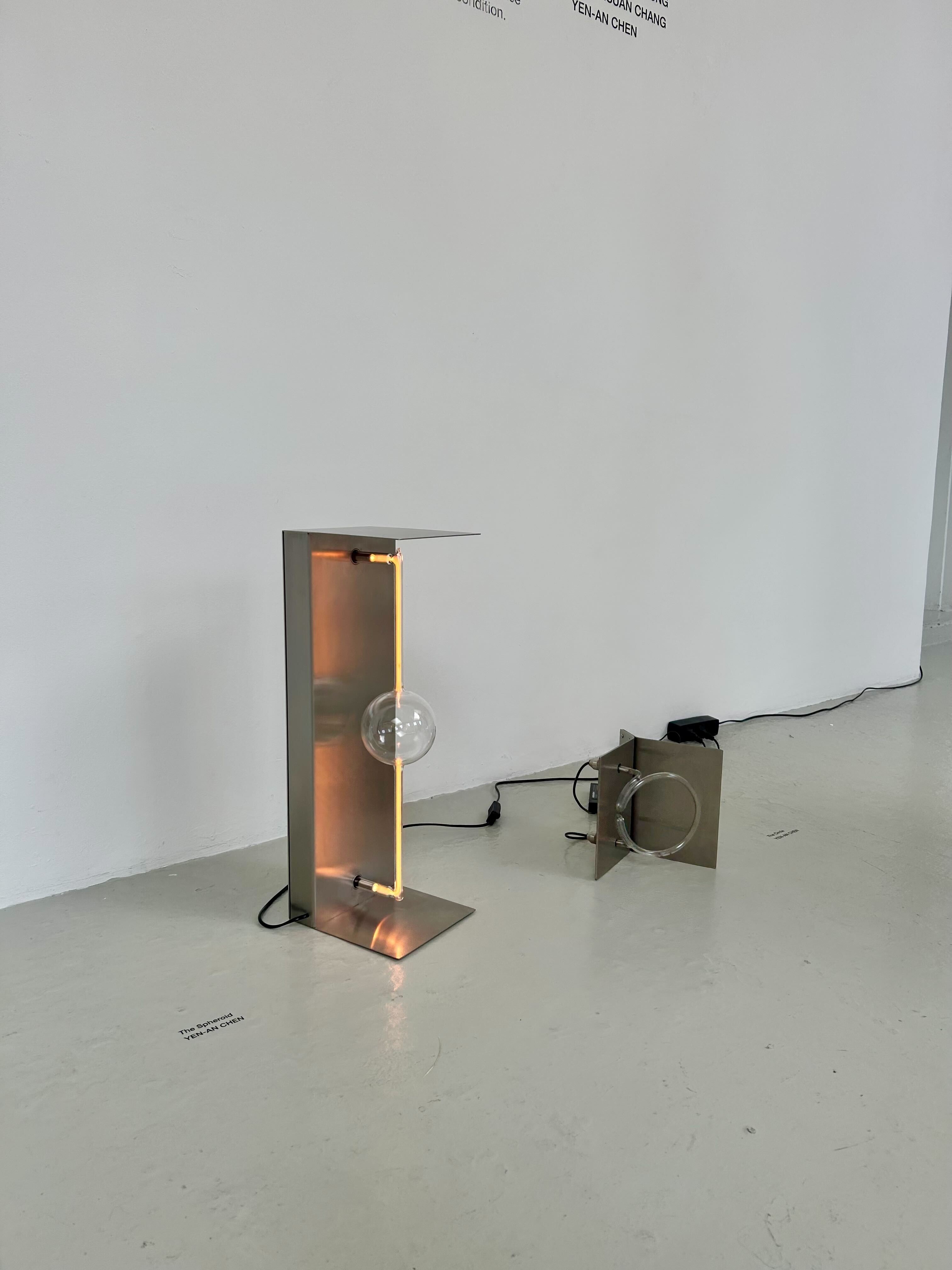
Offering a moment of almost ecclesiastical calm, ‘Optical Flow’ is an exhibition of Taiwanese design curated by Copenhagen gallery Fanzi. We stopped by for 20 minutes to enjoy the work over a delicate cup of tea and mouthful of pineapple cake; among the sculptural lighting and furniture pieces were these blown glass and folded stainless steel lighting designs – ‘The Spheroid’ and ‘The Circle’ by Taipei designer Yen-An Chen. The design is a nod to the Taiwanese city’s neon signs that Chen says have been gradually disappearing since the 1960s. Ali Morris
Humans since 1982 x BIG x SolidNature

We didn’t really need an excuse to snoop inside BIG’s megalithic seven-storey headquarters in Nordhavn – it’s worth it for the architectural spectacle alone – but the unveiling of two kinetic travertine sculptures made it all the more worthwhile. Created with Stockholm-based Humans since 1982 and stone brand SolidNature, the timepieces form part of ‘Materialism’ – a year-long editorial and spatial project carried out by Bjarke Ingels as part of his role as 2025 guest editor of Domus.
Getama classics rise from the ashes
Getama started life in 1899 making mattresses from seaweed. The company merged with a cabinet maker in the 1940s and subsequently made beautiful wooden furniture from Hans Wegner and Nanna Ditzel. In February last year, Getama’s factory burnt to the ground. Carl Hansen & Søn acquired the company’s portfolio and yesterday unveiled three beautiful pieces from Getama’s archive, now back in production: the Vita sofa (1952) and the ND55 coffee table (1955) both by Nanna and Jørgen Ditzel (1952); and a very handsome office chair by Hans Wegner. This is a rare beast – one of only five office chairs among the 400-odd chair models he designed during his prolific career. Good for gliding down polished wooden office floors in style and at speed.
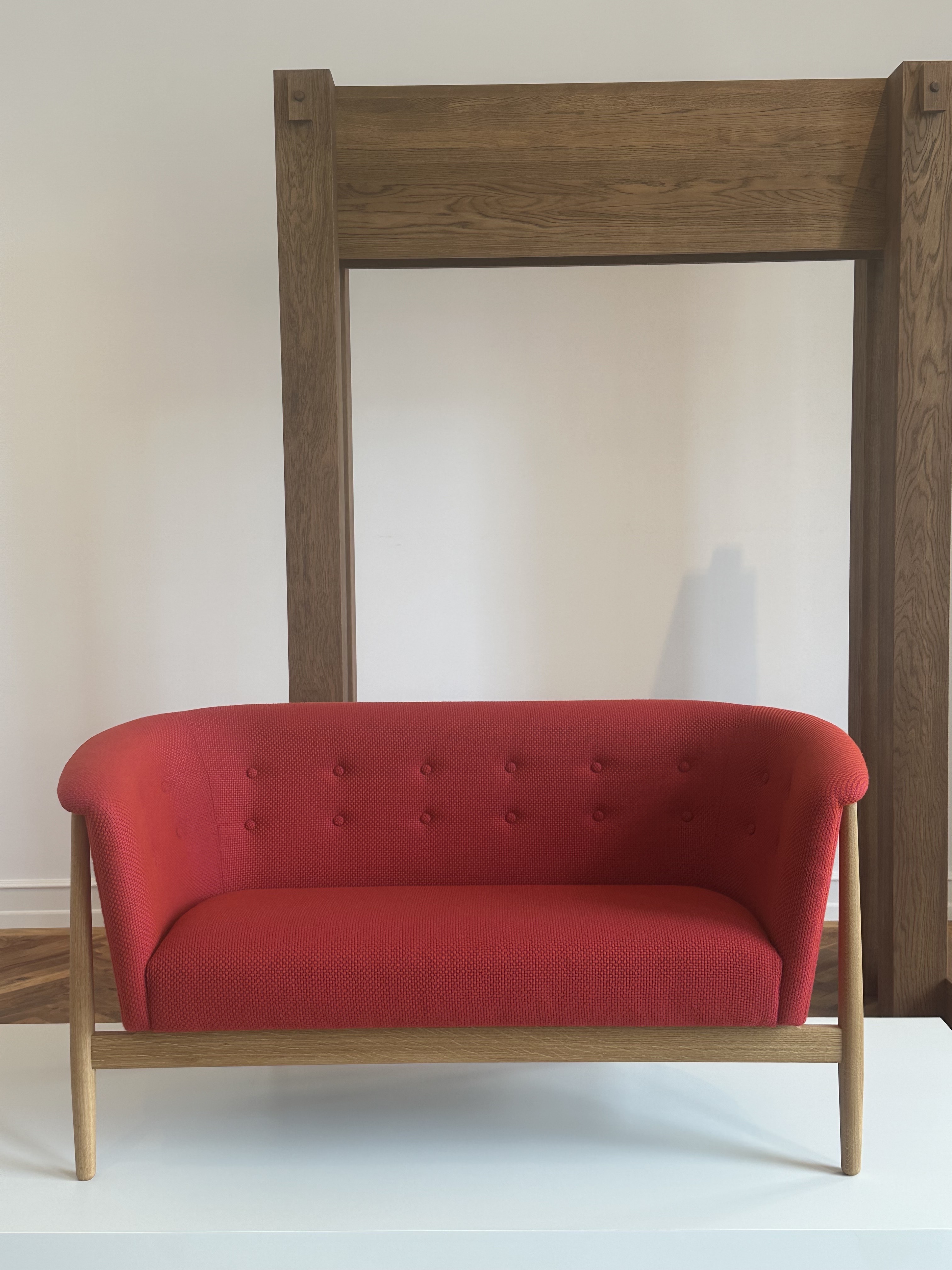

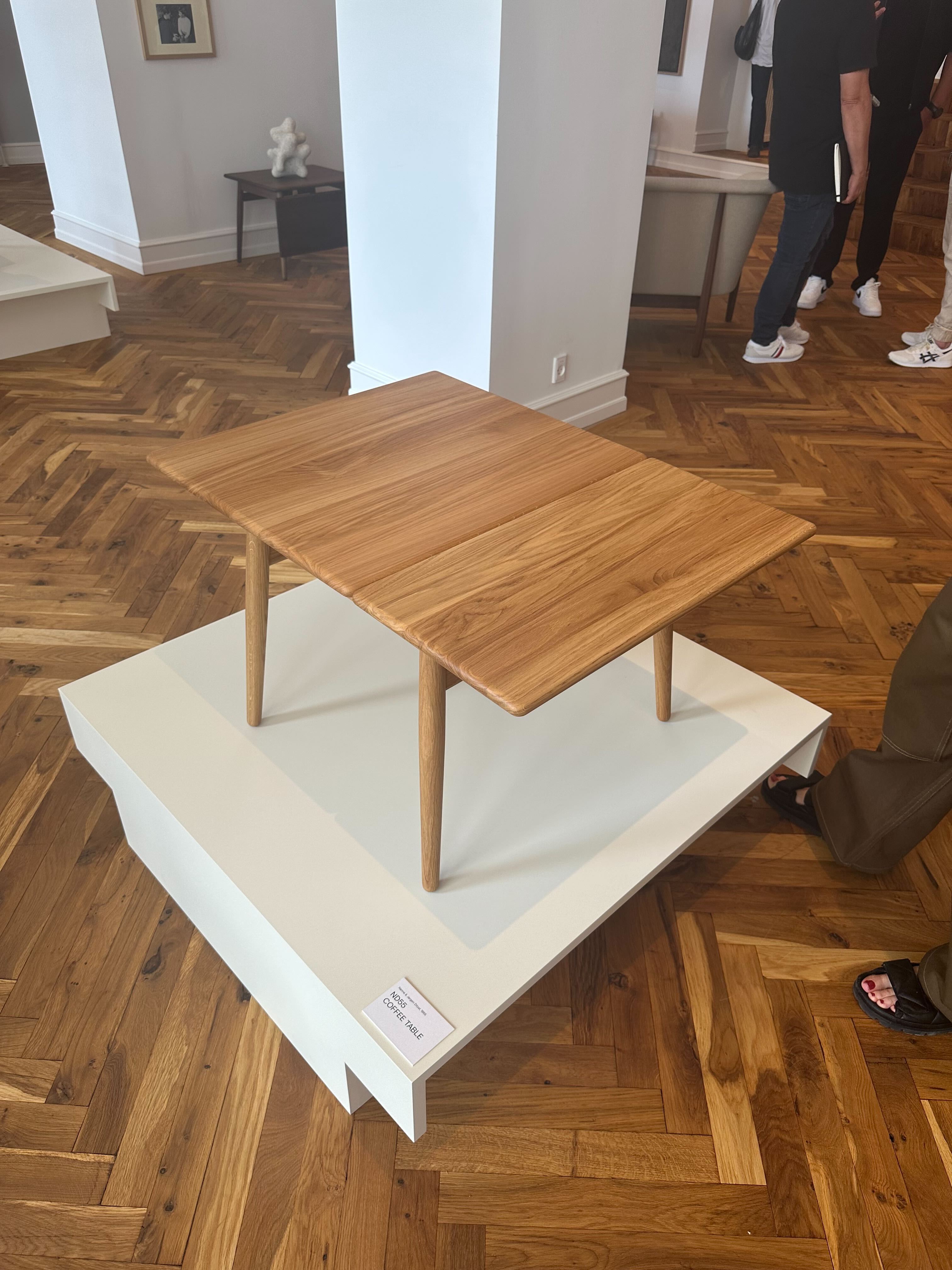
Also at Carl Hansen’s beautiful new flagship store, we swooned over Kaare Klint’s magnificent Spherical Bed, an award winner in our 2025 February Design Awards.
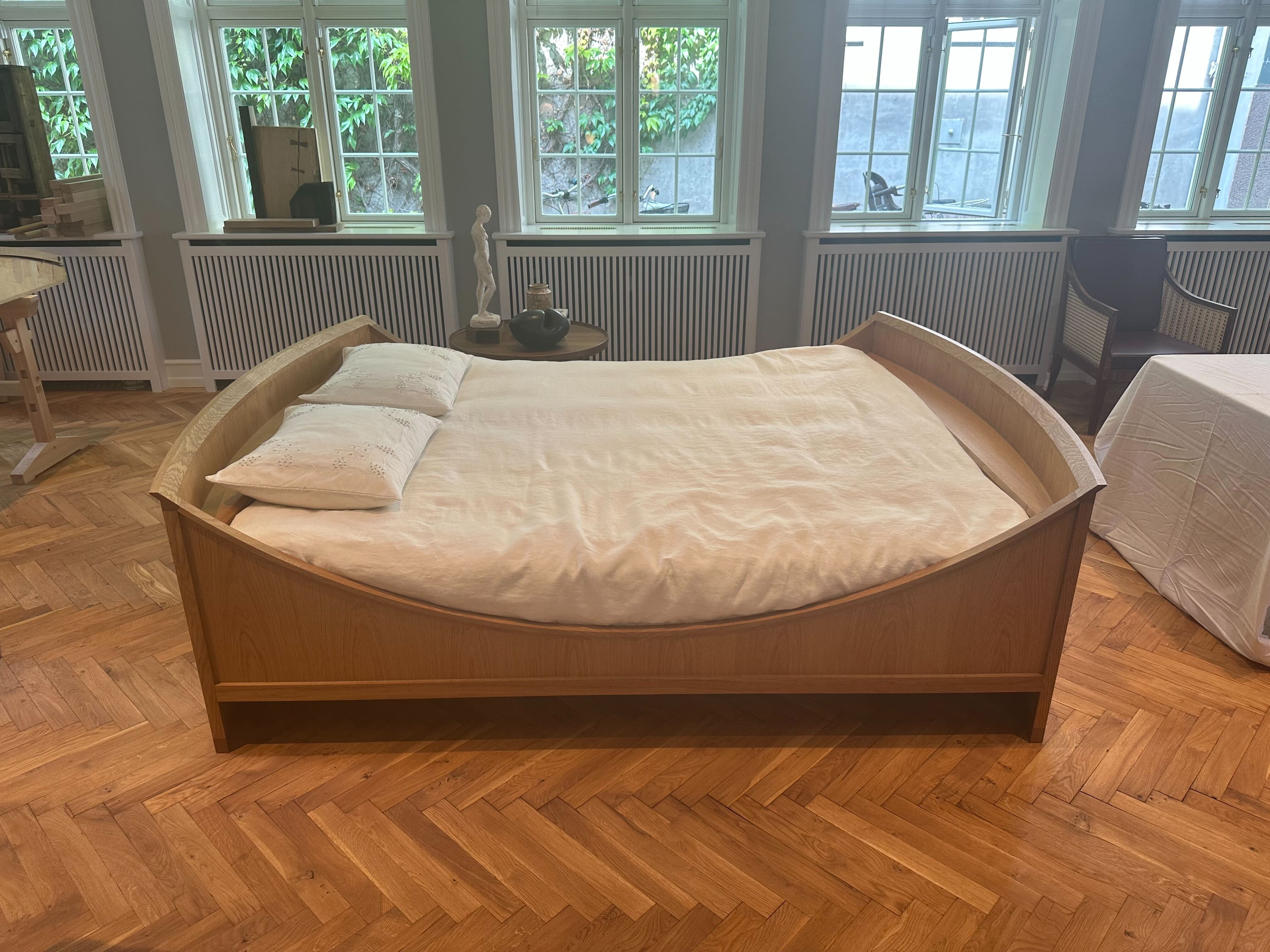
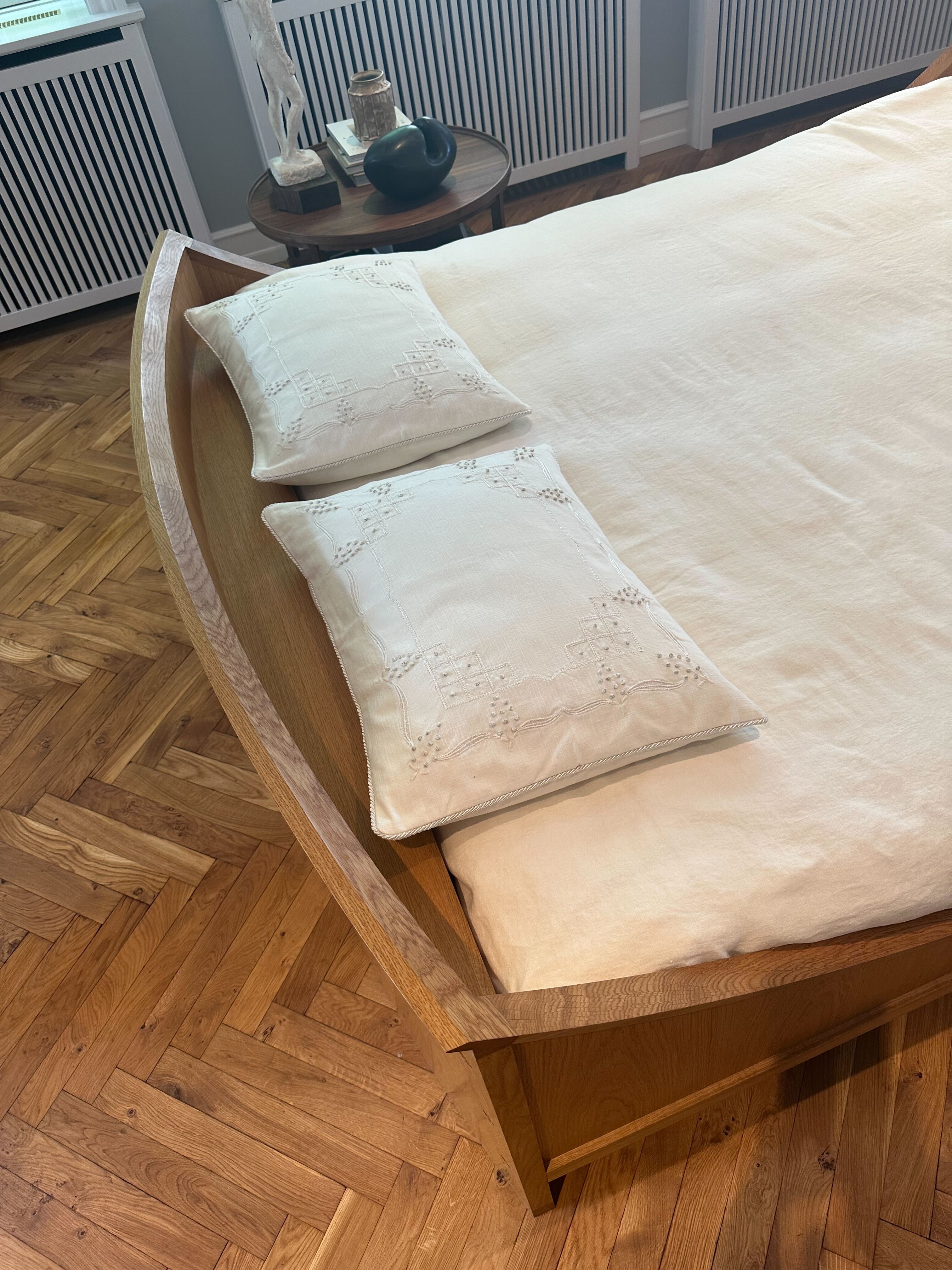
The roof terrace at Carl Hansen’s new showroom is an excellent spot to pause and sample the brand’s expansion into outdoor furniture. Made largely from teak in a Carl Hansen-owned factory in Vietnam, we will be making space on our own terrace for EOOS’s Cocoon range. Hugo Macdonald
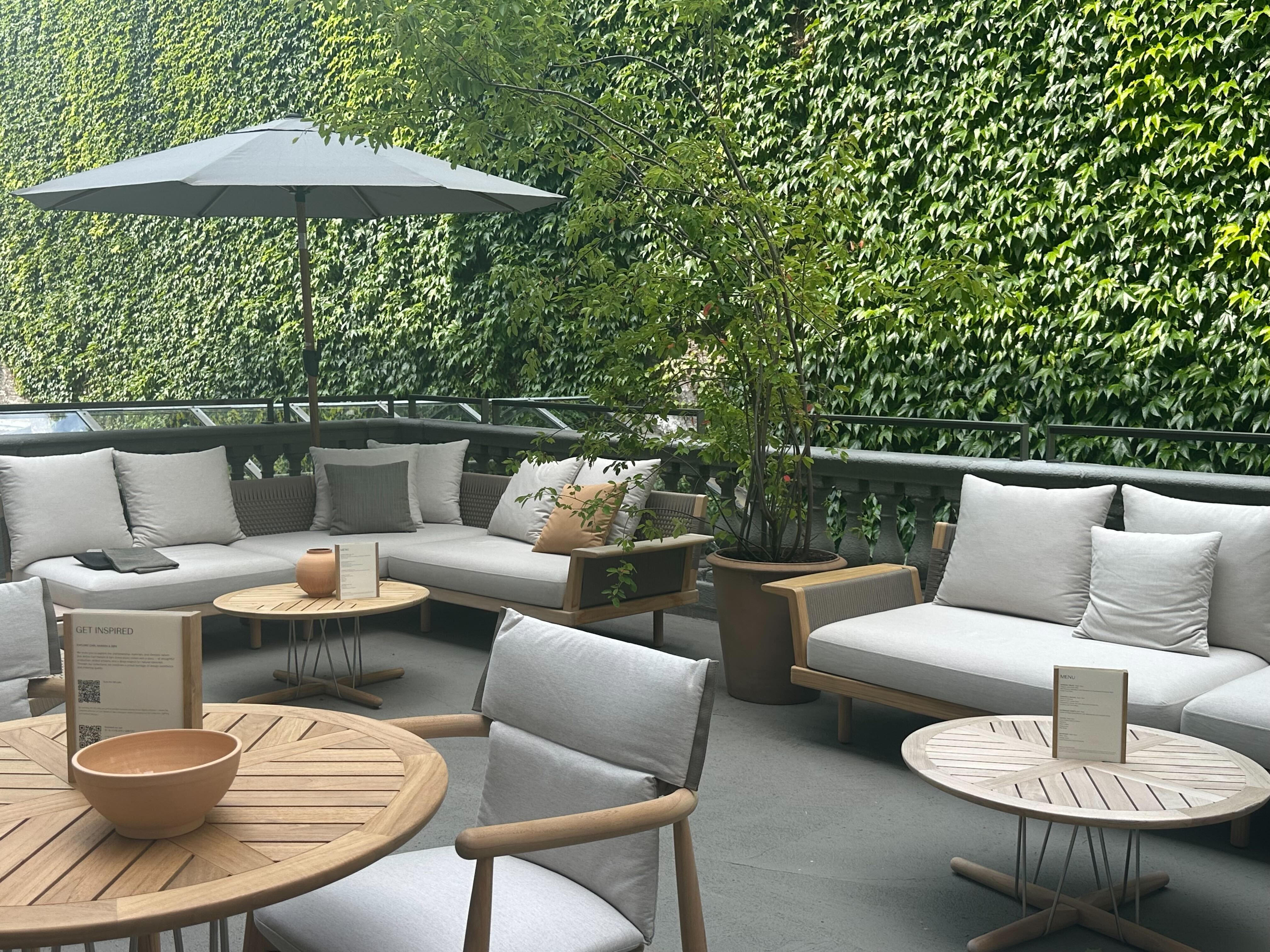
&Tradition at 3 Days of Design
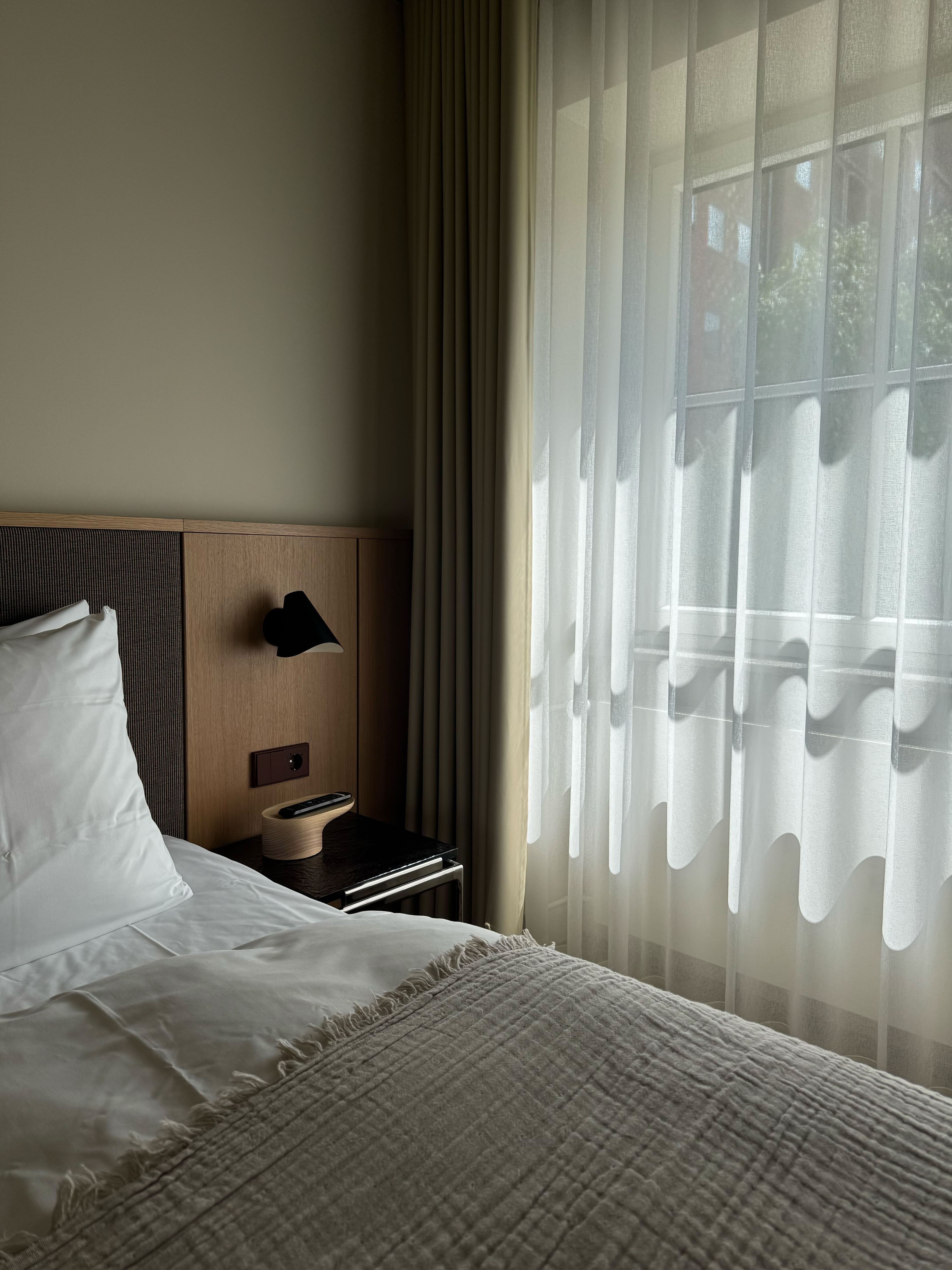
We stepped inside the new Hotel Petra, designed by Copenhagen brand &Tradition.
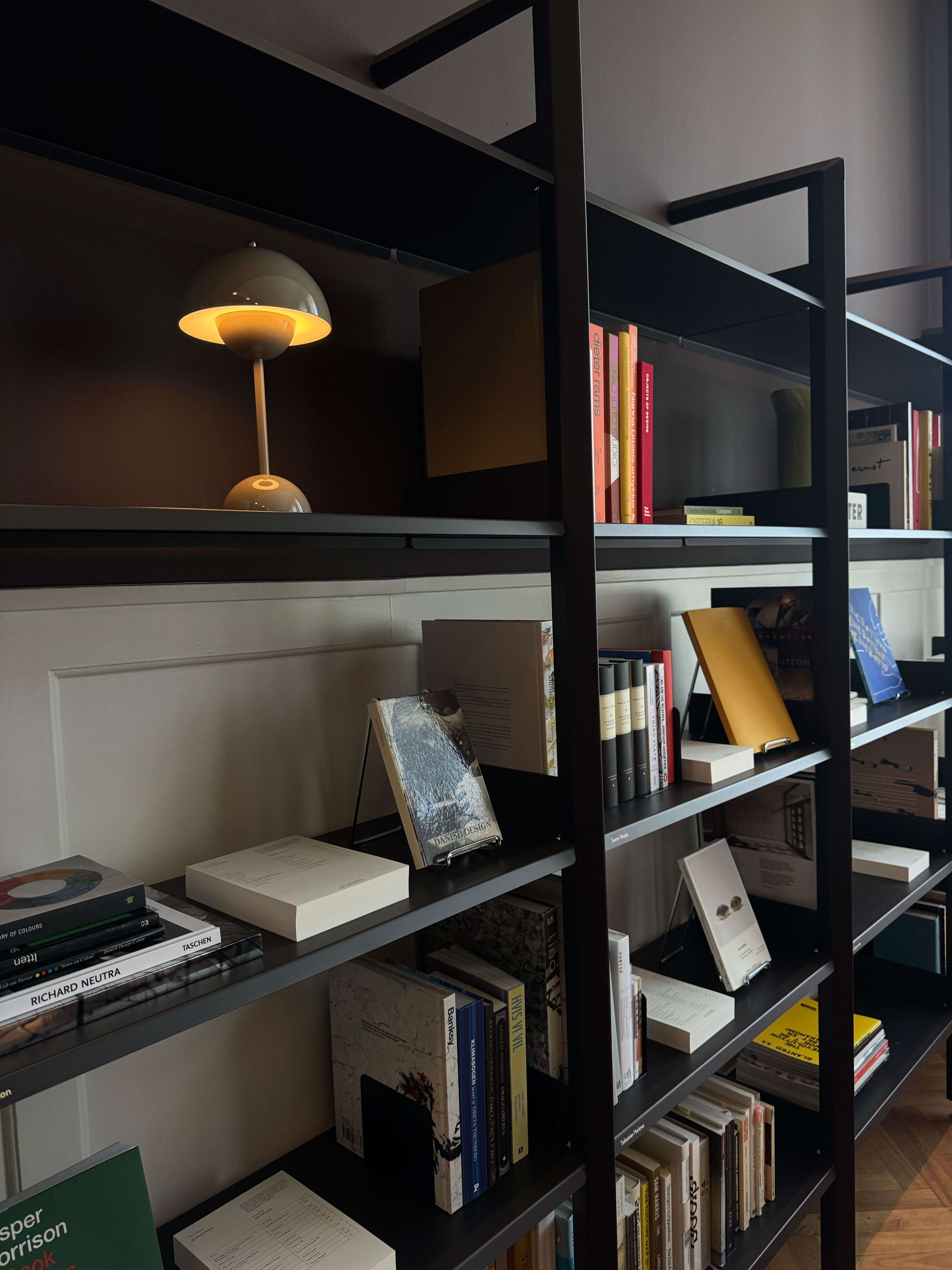
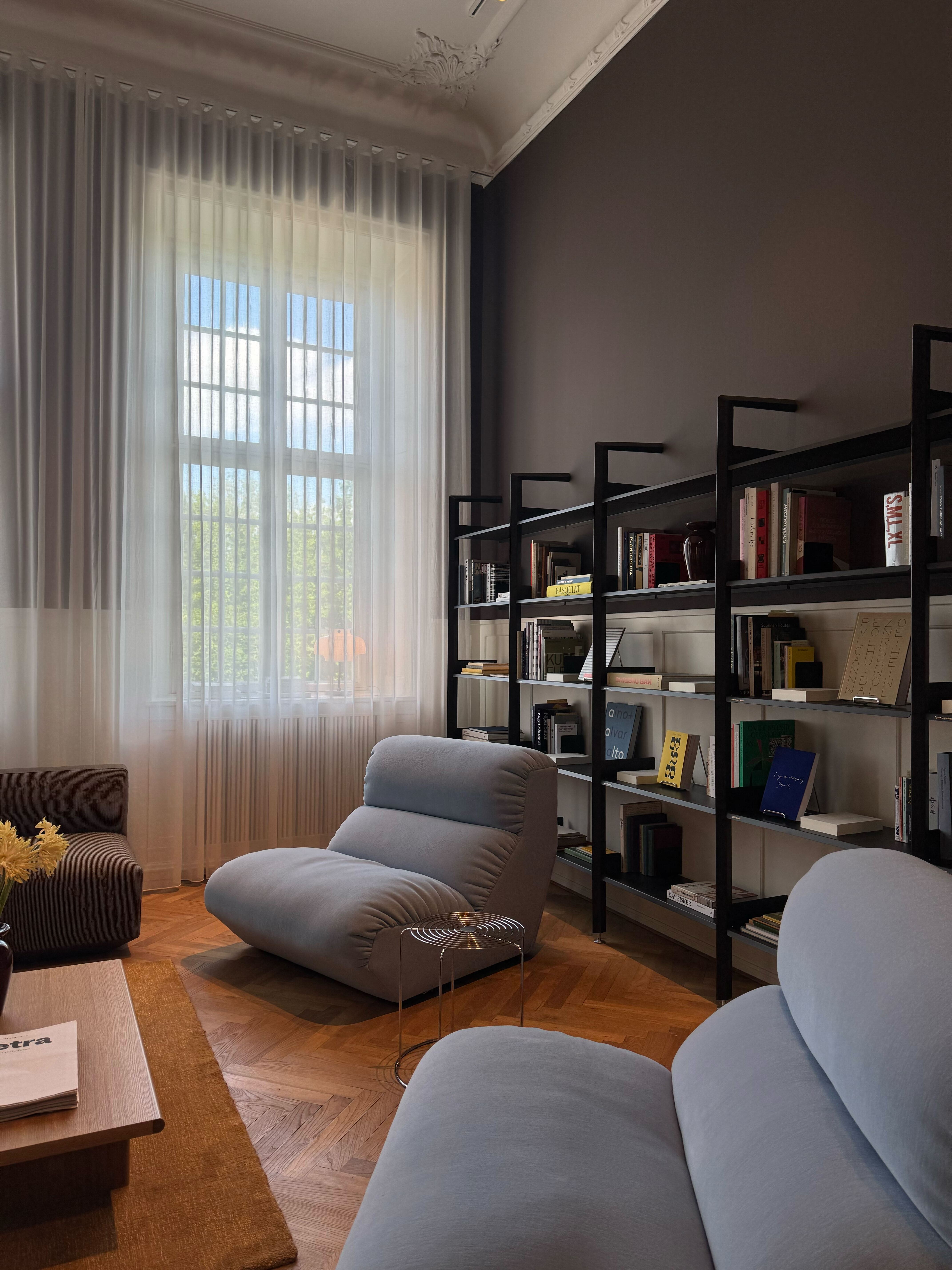
&Tradition also collaborated with Industrial Facility to present its first design for the Danish brand: a new shelving system, Rombe.
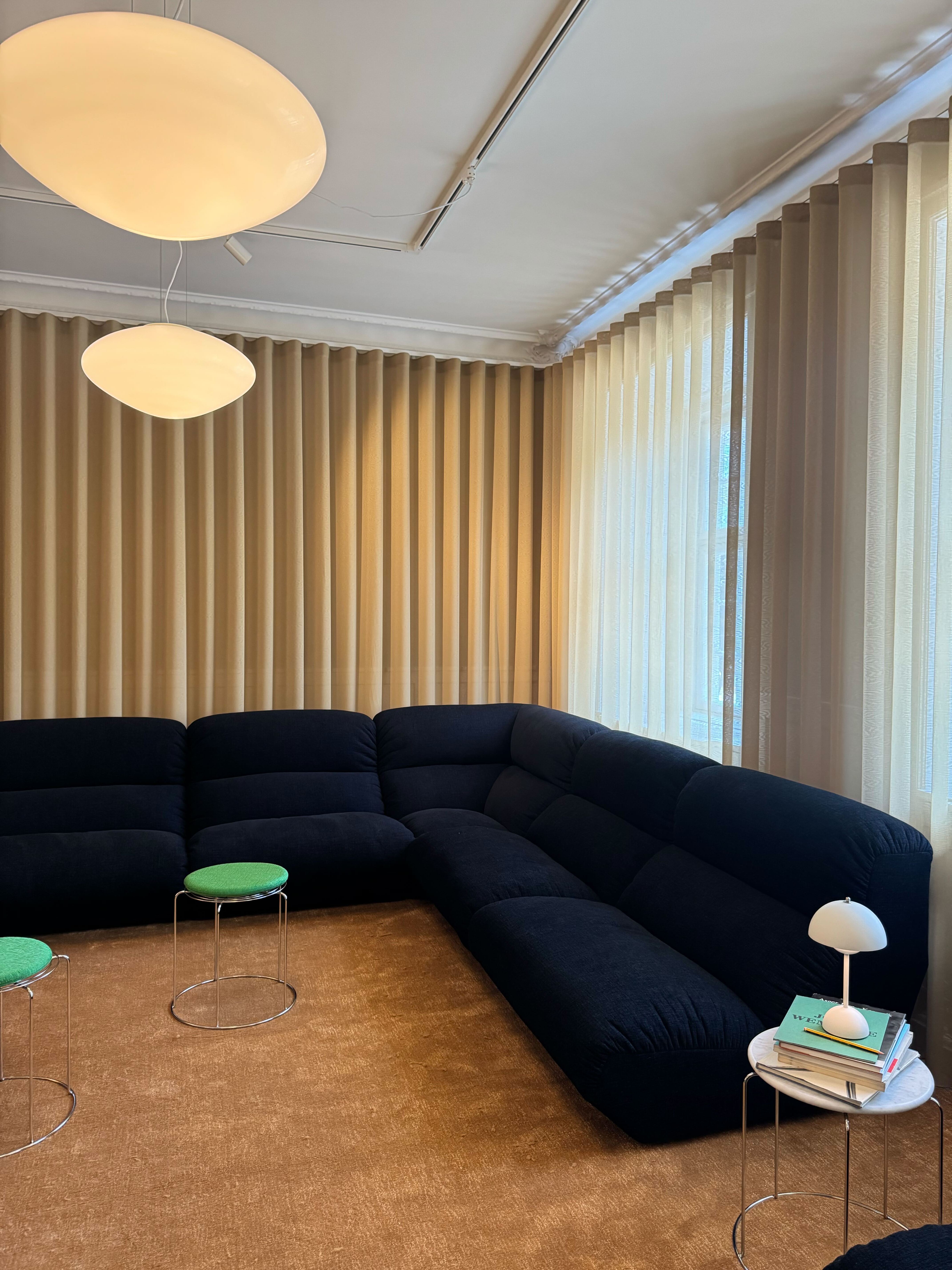
The Hi Lo lounge
We also visited the Hi Lo lounge by &Tradition and Norwegian design duo Anderssen & Voll, housing Hi Lo, a new series of modular sofas and lounge chairs.

Topan light
Meet the Topan light by &Tradition and Verner Panton, a lighting variation within the iconic Flowerpot series. Olly Mason
Gubi x Brian Rideout
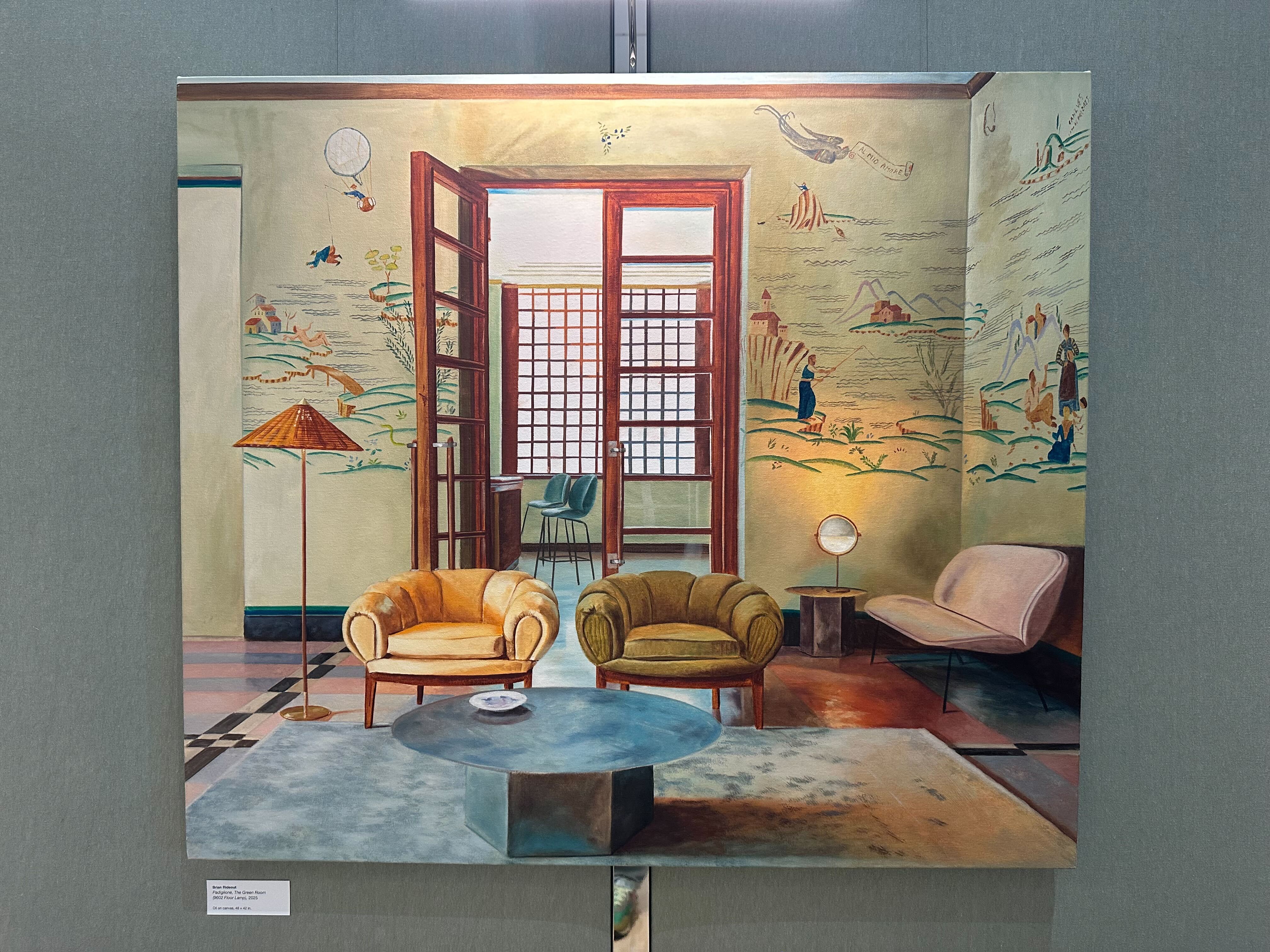

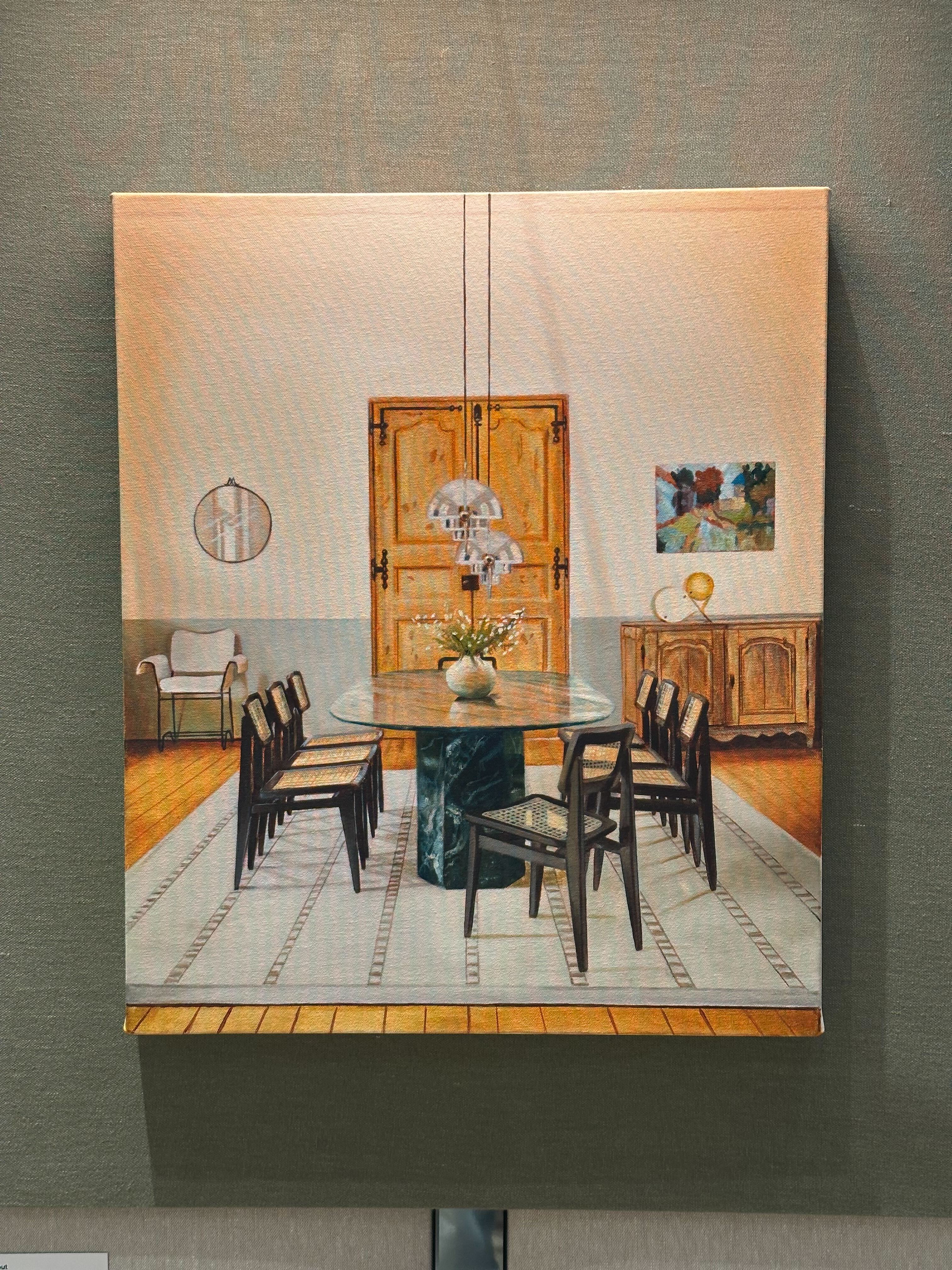
In their cavernous Nordhavn HQ, Danish stalwarts Gubi have offered up a beautiful, whimsical collaboration with Canadian artist Brian Rideout. The question posed to the artist was how to bring Gubi’s collections to life in painted scenes. Against a backdrop of standard campaign photography, and ever-more AI reliant imagery that is used to sell design, the slower craft of the paintbrush, hand, eye and imagination makes for a distinctly evocative and richly atmospheric series of works. Hugo Macdonald
St Leo x Space CPH
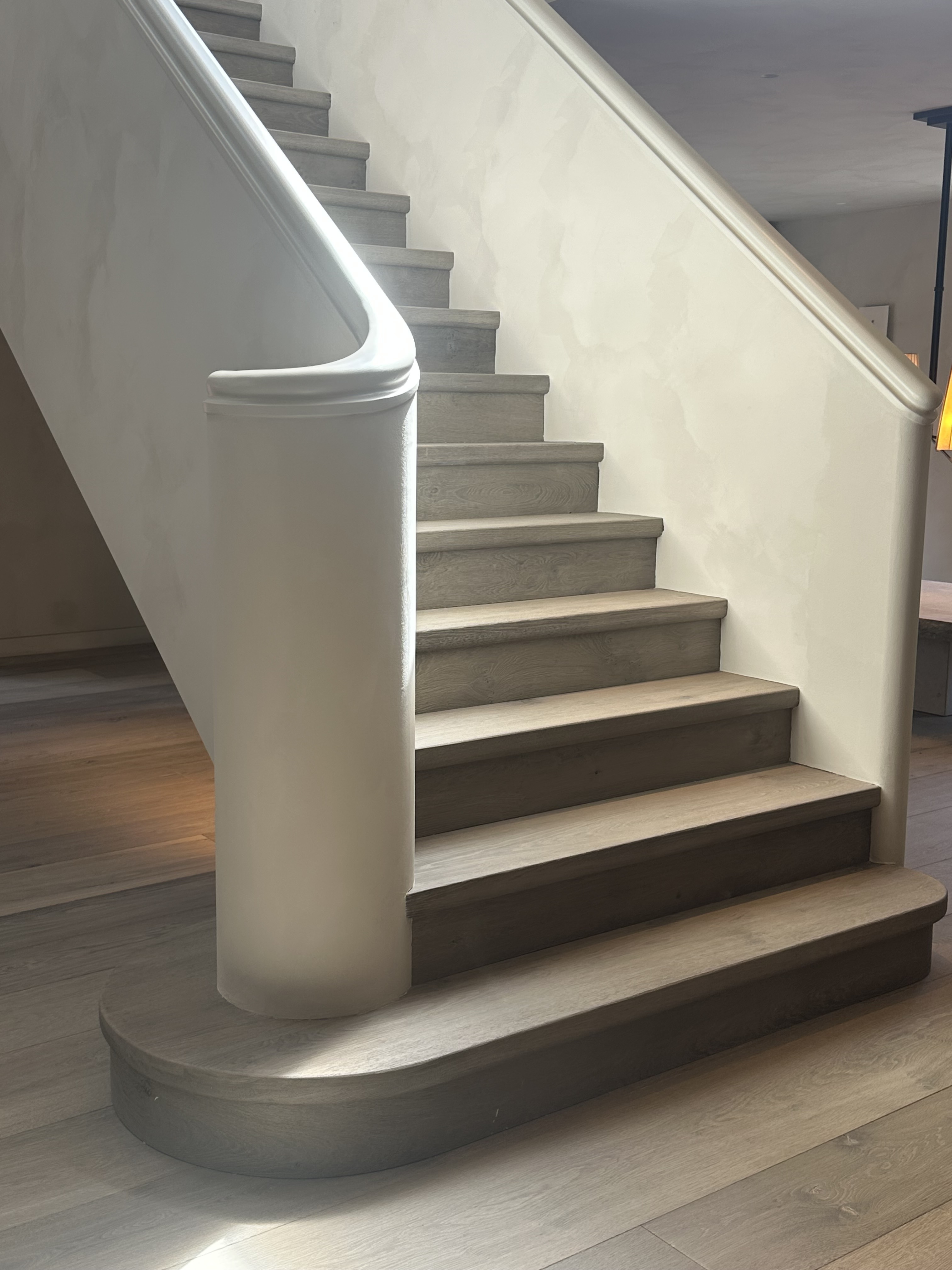
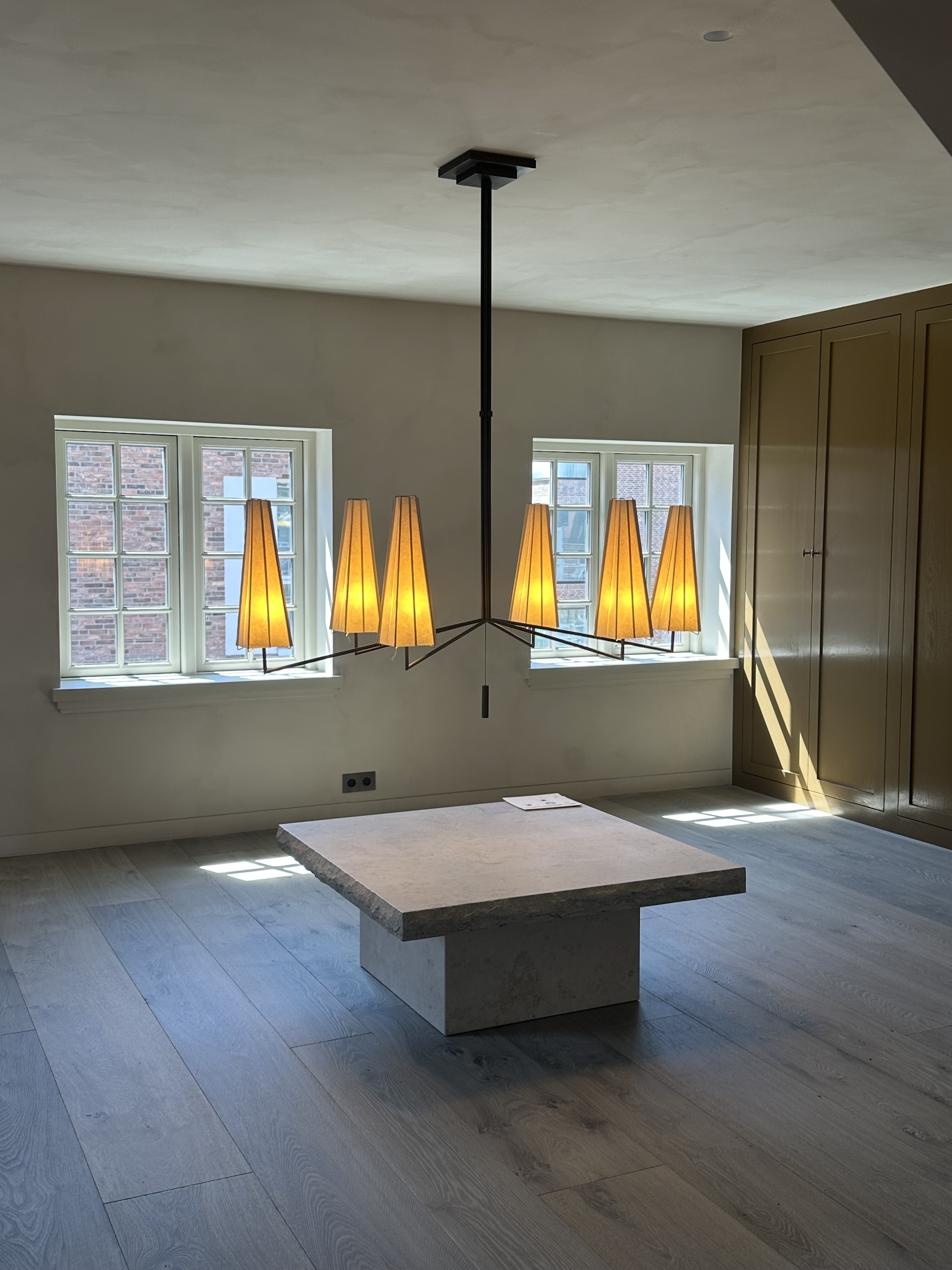

St Leo, the young Danish biopaint manufacturer founded in 2019 by Martin Kornbek Hansen (also founder of &Tradition), has opened an exquisite building in Nordhavn, designed by Space CPH – which is celebrating its 20th anniversary this year. The building is a home for St Leo to showcase their natural paints in various settings, bringing them to life in a variety of domestic atmospheres. As well as a showroom, the house will host exhibitions and events, and guests can stay over. Alongside the exquisite chalky walls and the spectacular stairs, we are particularly taken by the Christian+Jade stitched wax paper lighting. Hugo Macdonald
Tina Seidenfaden Busck x St Leo

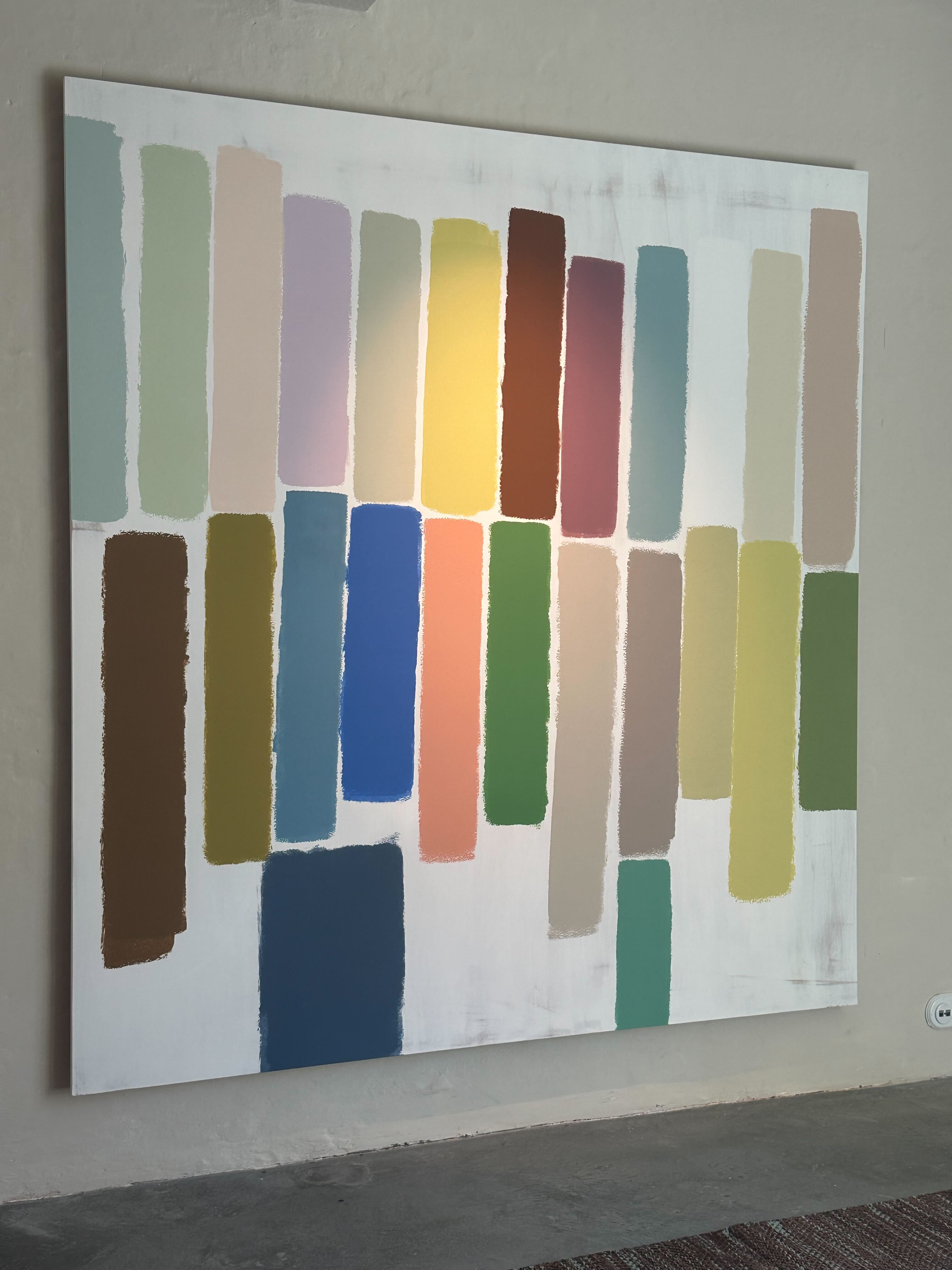

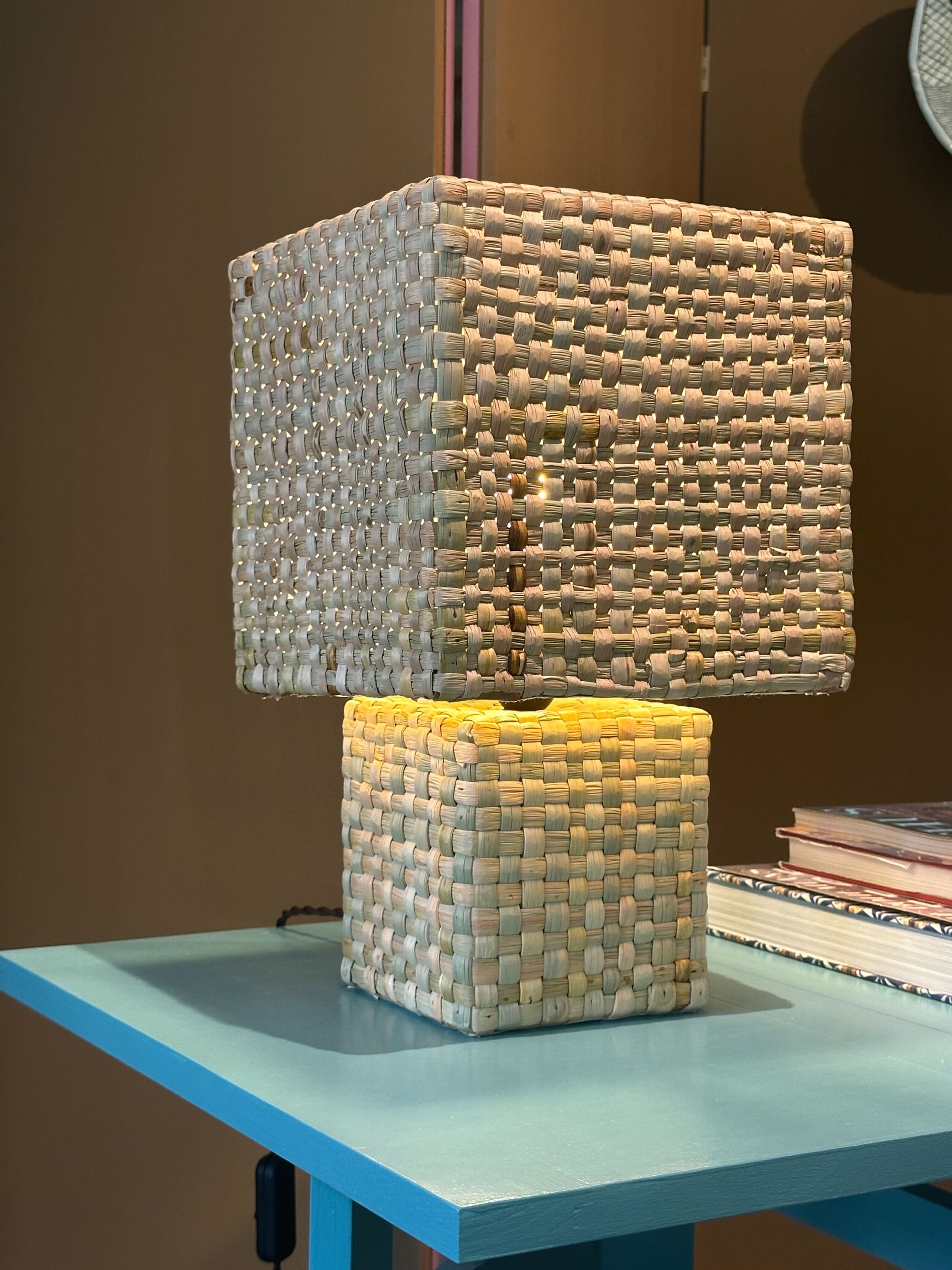

Founder of The Apartment, Tina Seidenfaden has collaborated with St Leo on a range of rich, moody, uplifting and transporting natural paints. These are on show in the ground floor of St Leo’s new Nordhavn home (see below), augmented by an exhibition curated by Tina called ‘Where Colours Unfold’. A series of vignettes are composed of exquisite antique textiles by Märta Måås-Fjetterström, alongside woven works by Deborah Needleman and various 20th century furniture and ceramics from Tina’s collection. A masterclass in colour, composition and culture. Hugo Macdonald
Velux – Designing with Daylight
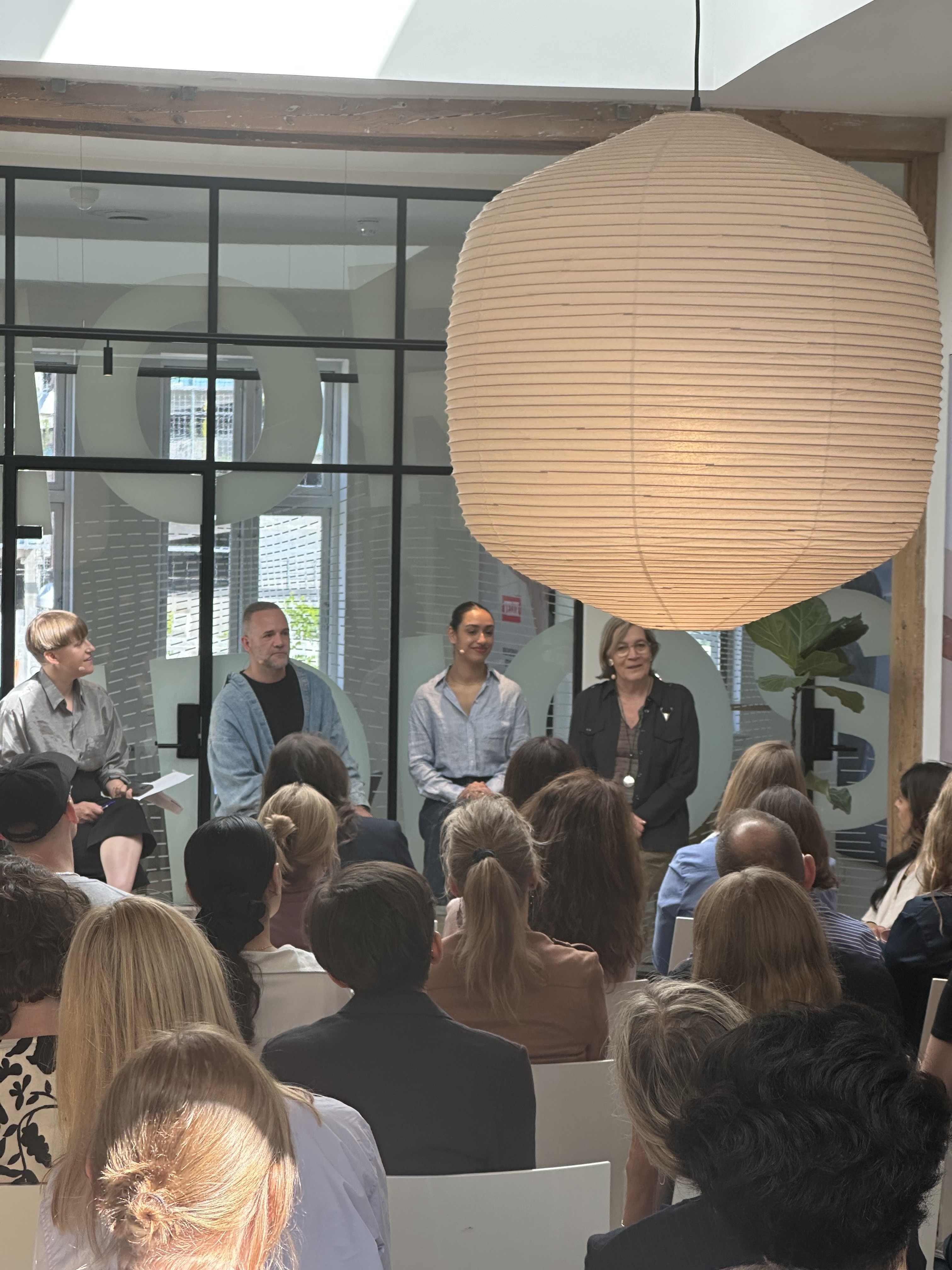
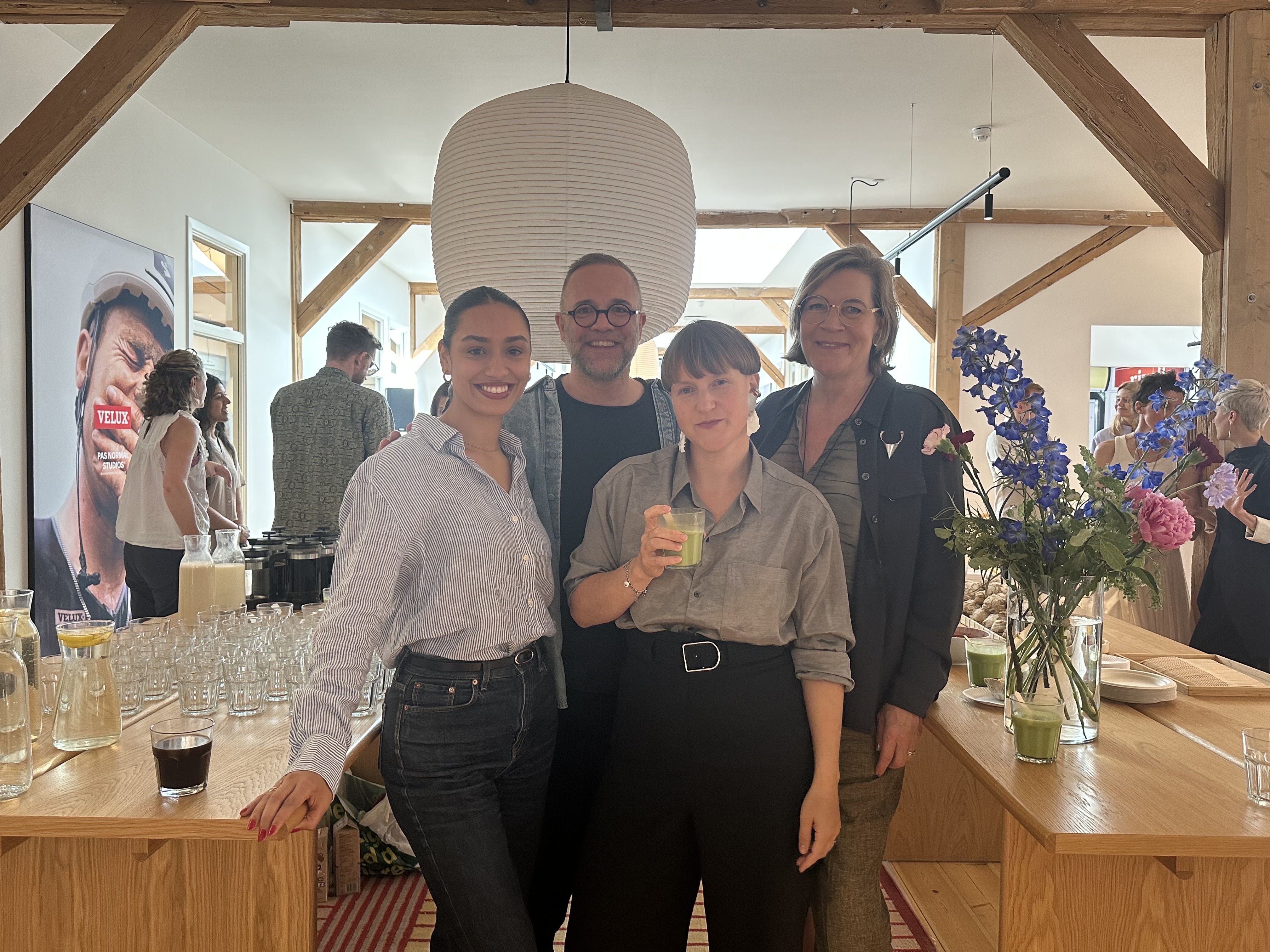
We attended a riveting breakfast talk about the importance of daylight in design, hosted by Velux in the newly refurbished HQ of hip young cycle gear brand Pas Normal. It was particularly interesting for having Selma Tir as a panellist – a neuroscientist at the University of Oxford who researches the physiological and behavioural effects of daylight. Alongside the charming Thomas Lykke from OEO (an original Wallpaper* alumni and responsible for the Pas Normal design) and Lone Feifer, director of sustainable buildings and architect at Velux, we learnt a lot about daylight and health in design and life. Could there be a more fitting panel for Midsummer Eve? Several illuminating facts emerged but I was particularly tickled by Lone’s advice that the single best thing any of us can do to get more daylight into our lives is to ‘get a dog’. Hugo Macdonald
Inside Vipp's new guesthouse
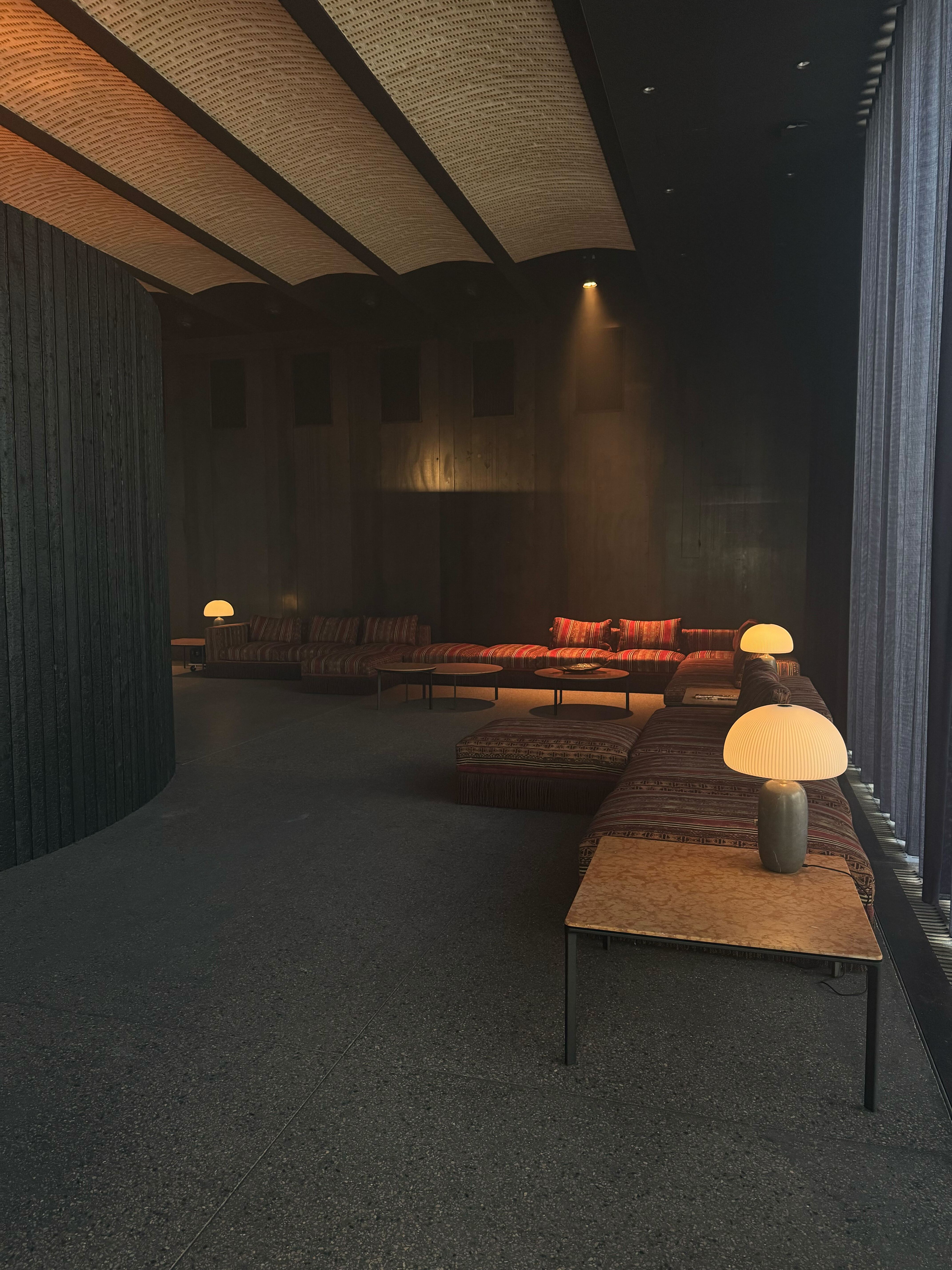
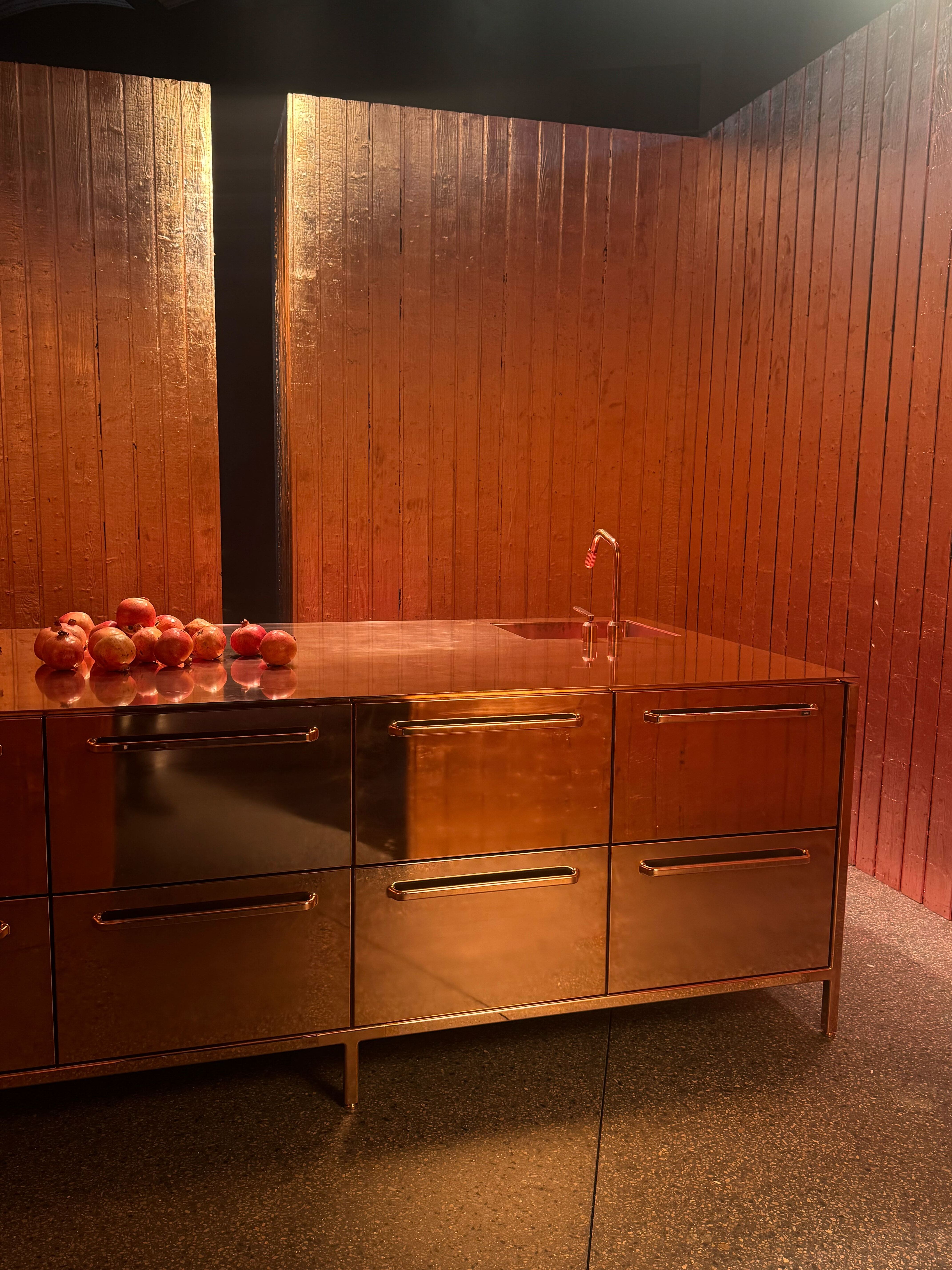
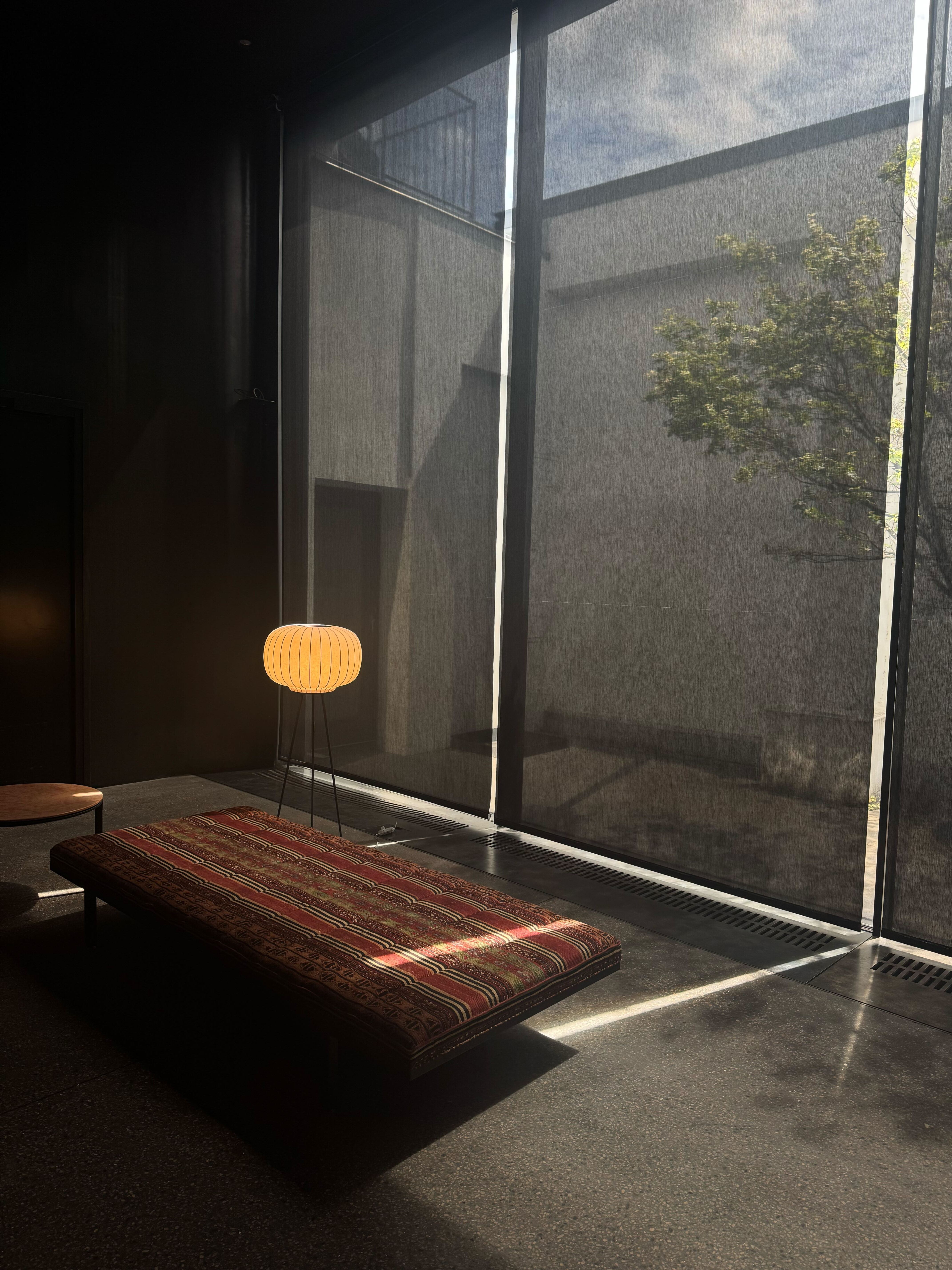
In an unexpected rendez-vous between refinement and roughness, Danish design brand Vipp has invited Marrakesh- and Paris-based architecture practice Studio KO to design an ephemeral guesthouse – featuring a copper leaf and charred wood installation.
The Vipp guesthouse by Studio KO is fitted with a cavalcade of bespoke pieces from Vipp's collection of furniture and accessories. Highlights include an endless modular Vipp Loft sofa and the best-selling Vipp Swivel chair. Typically made in a leather finish, it has been upholstered in a Pierre Frey textile that evokes an ancient culture and craftsmanship through a tradition of artisanal hand weaving. The designs embody the contrast between the clean lines of Scandinavian design and the more organic quality of traditional artisanry. Olly Mason
Rue Verte
Since 1992, Michala Jessen has been designing interiors and curating her gallery space in Ny Ostergade with a discerning hand and eye. For this year’s 3 Days of Design a cool air of decadence was in order. A bronze ash tray by Rick Owens held a few rogue cigarette butts, sitting next to a vintage pamphlet of house rules for cocaine use. These set the scene for some knockout design elements - a few highlights below. The crowning glory? A fancy little Italian Greyhound, who trotted in and out of the various rooms, very much at home.
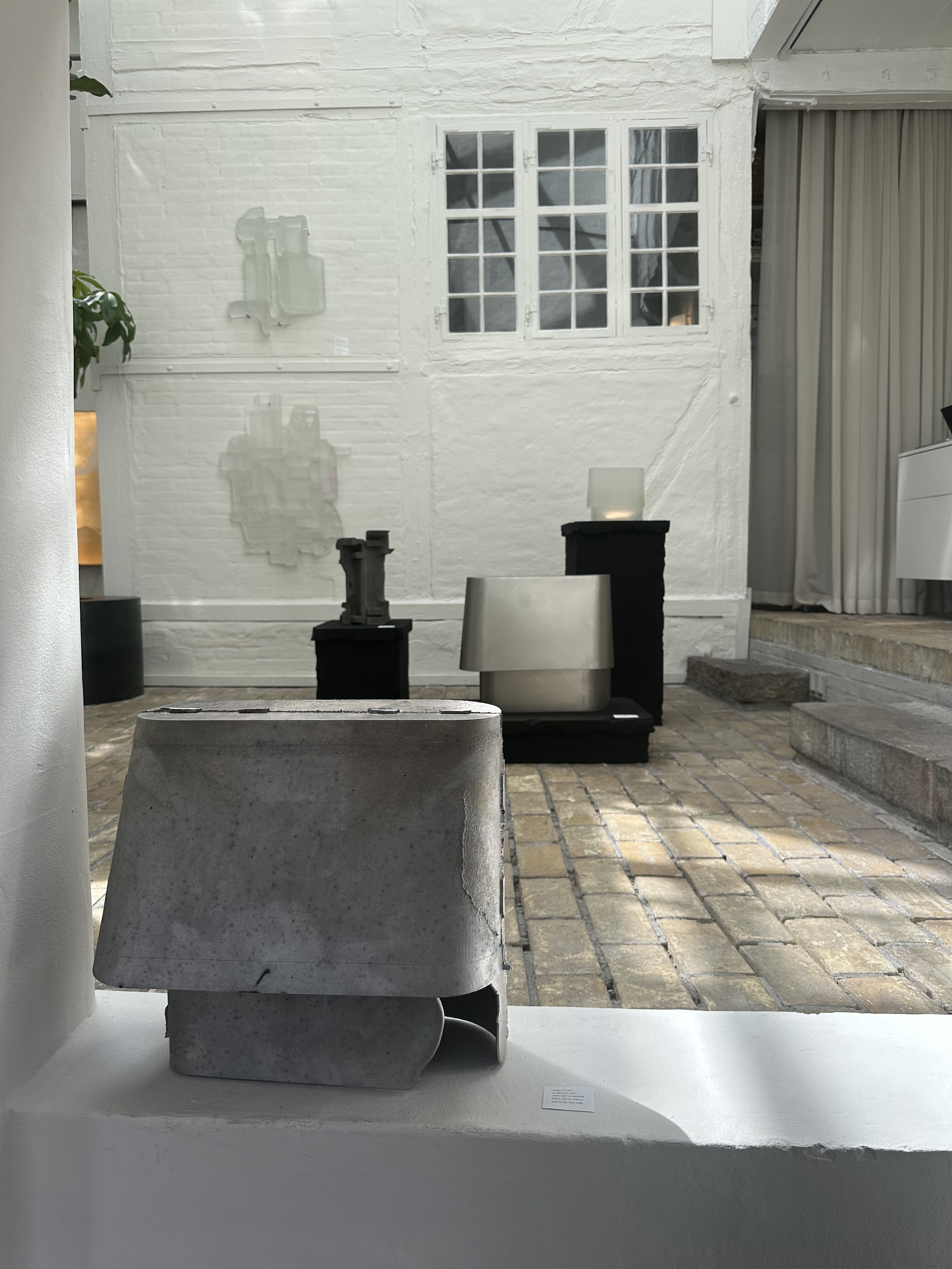
Handcast Aluminium Lights by Vogel Studio
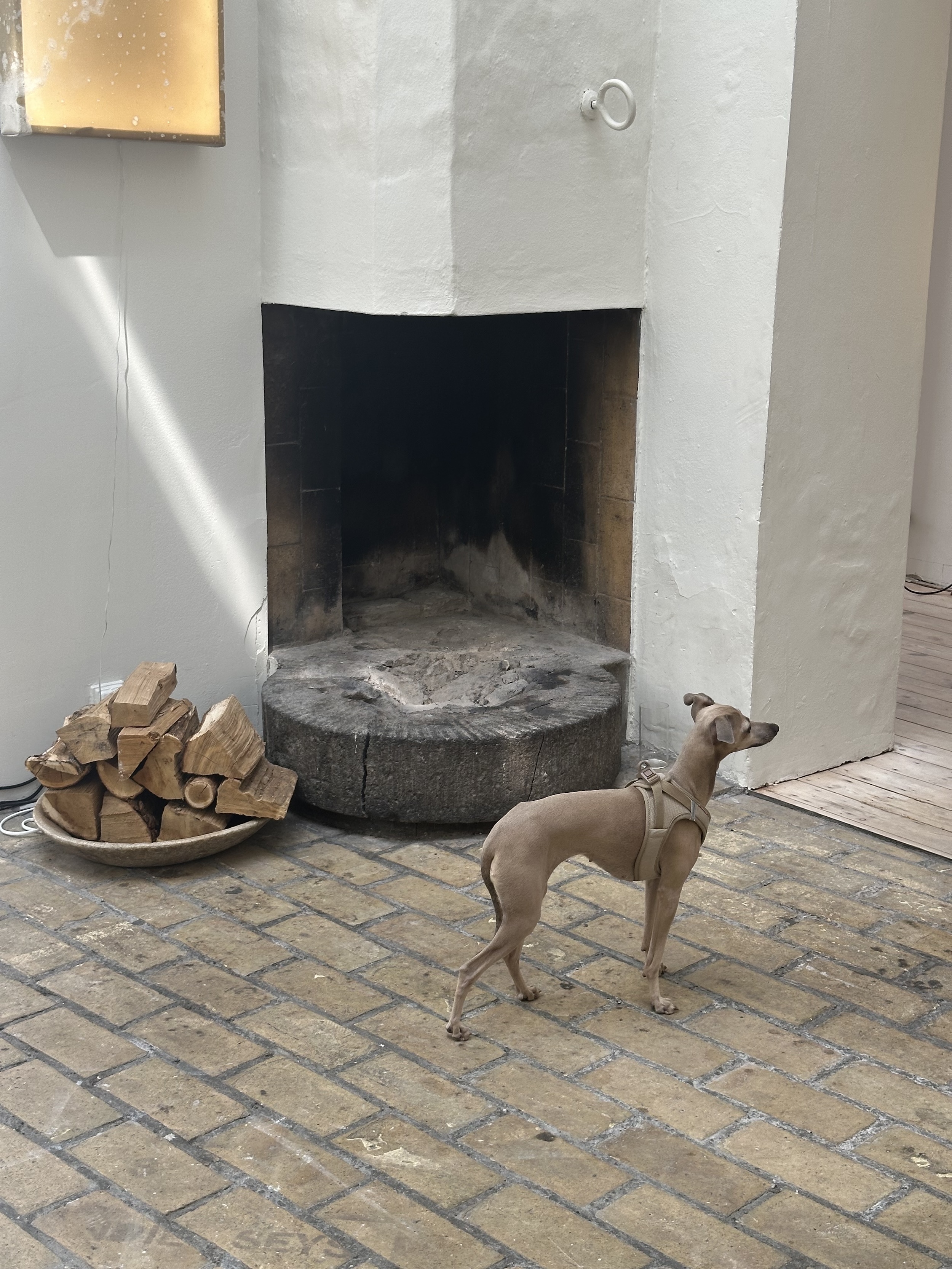
Hello, darling!
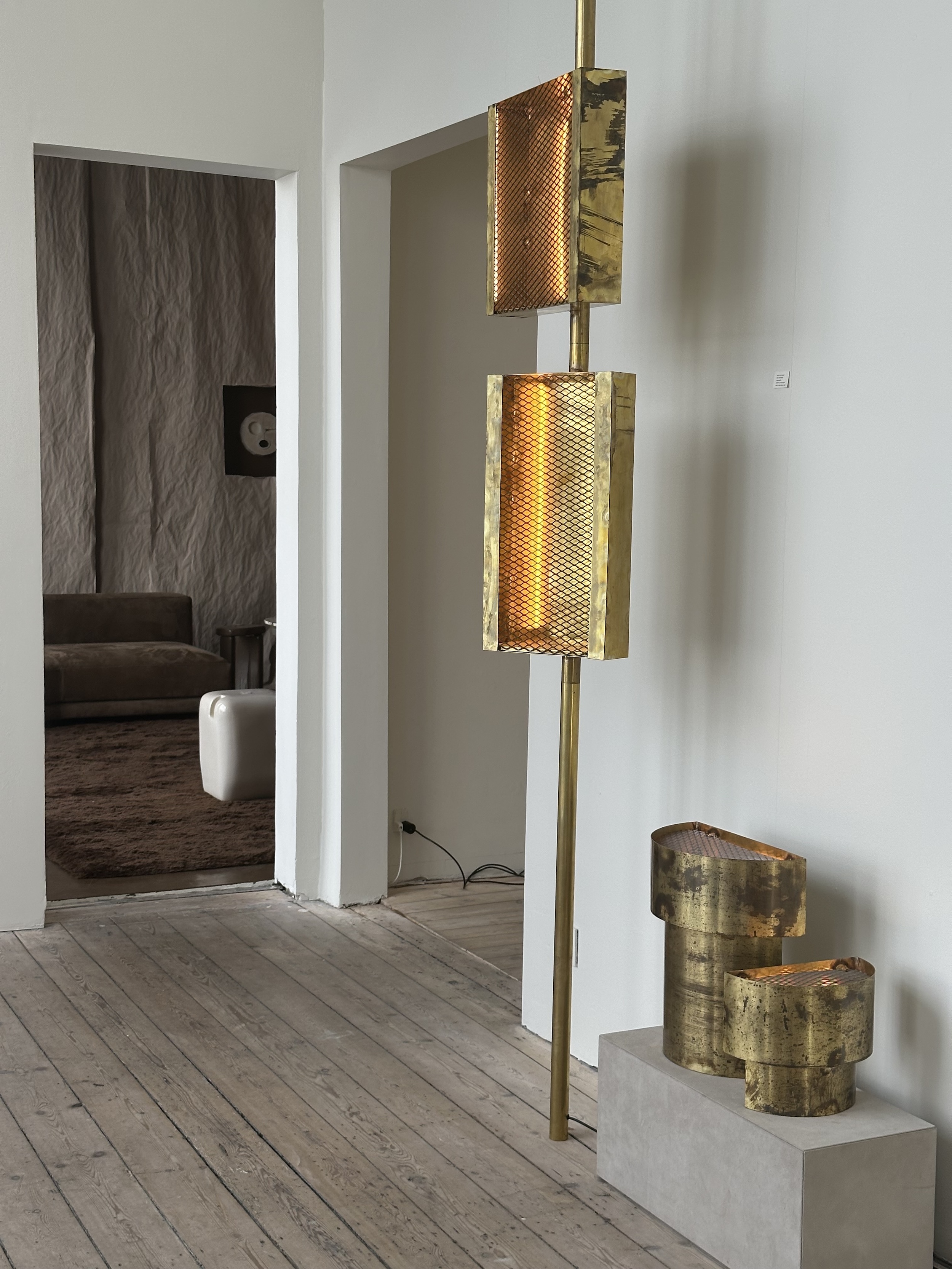
Pole Dancers by Koen Van Guije
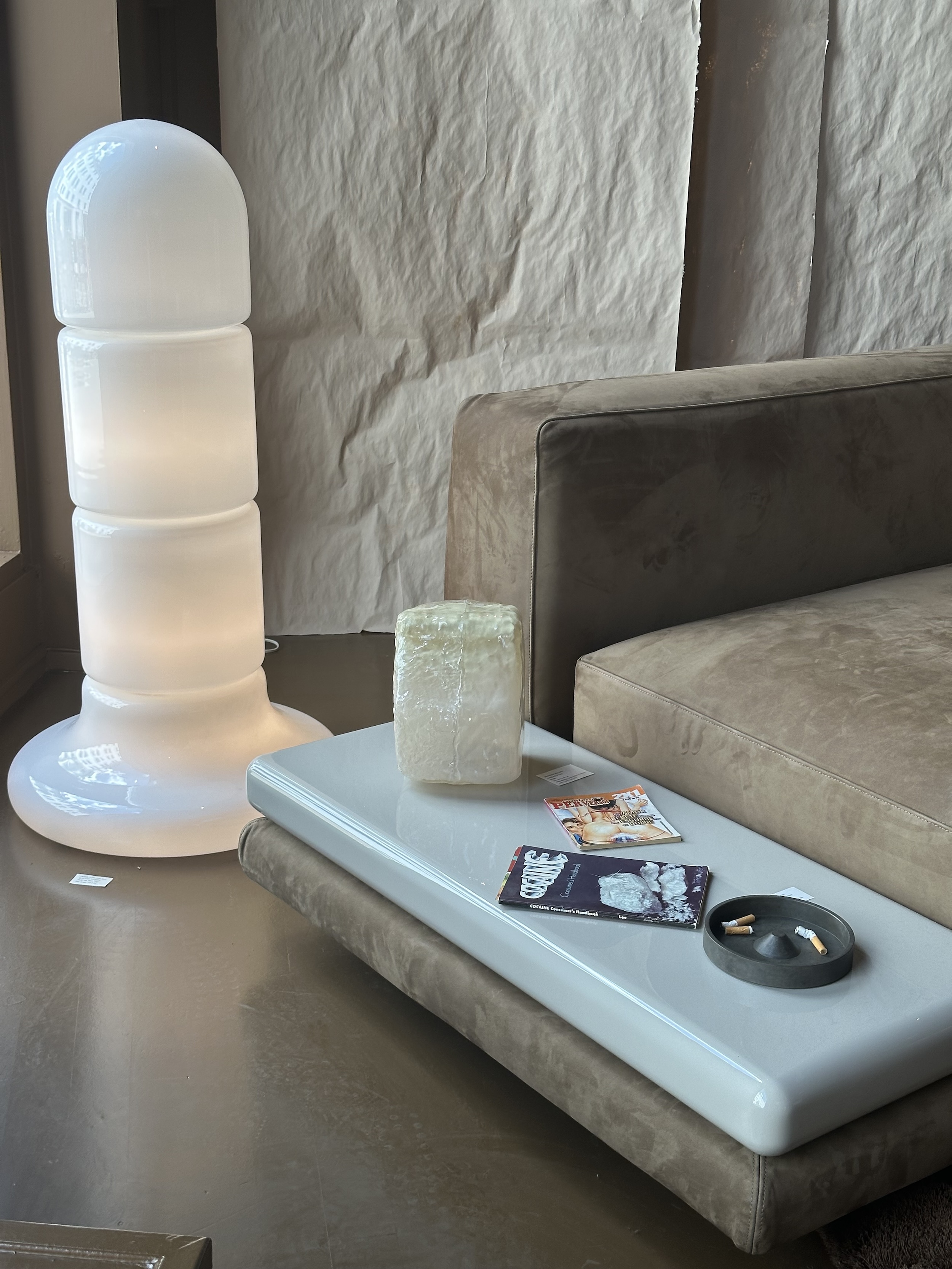
Zea glass lamp by Claudio Salocchi
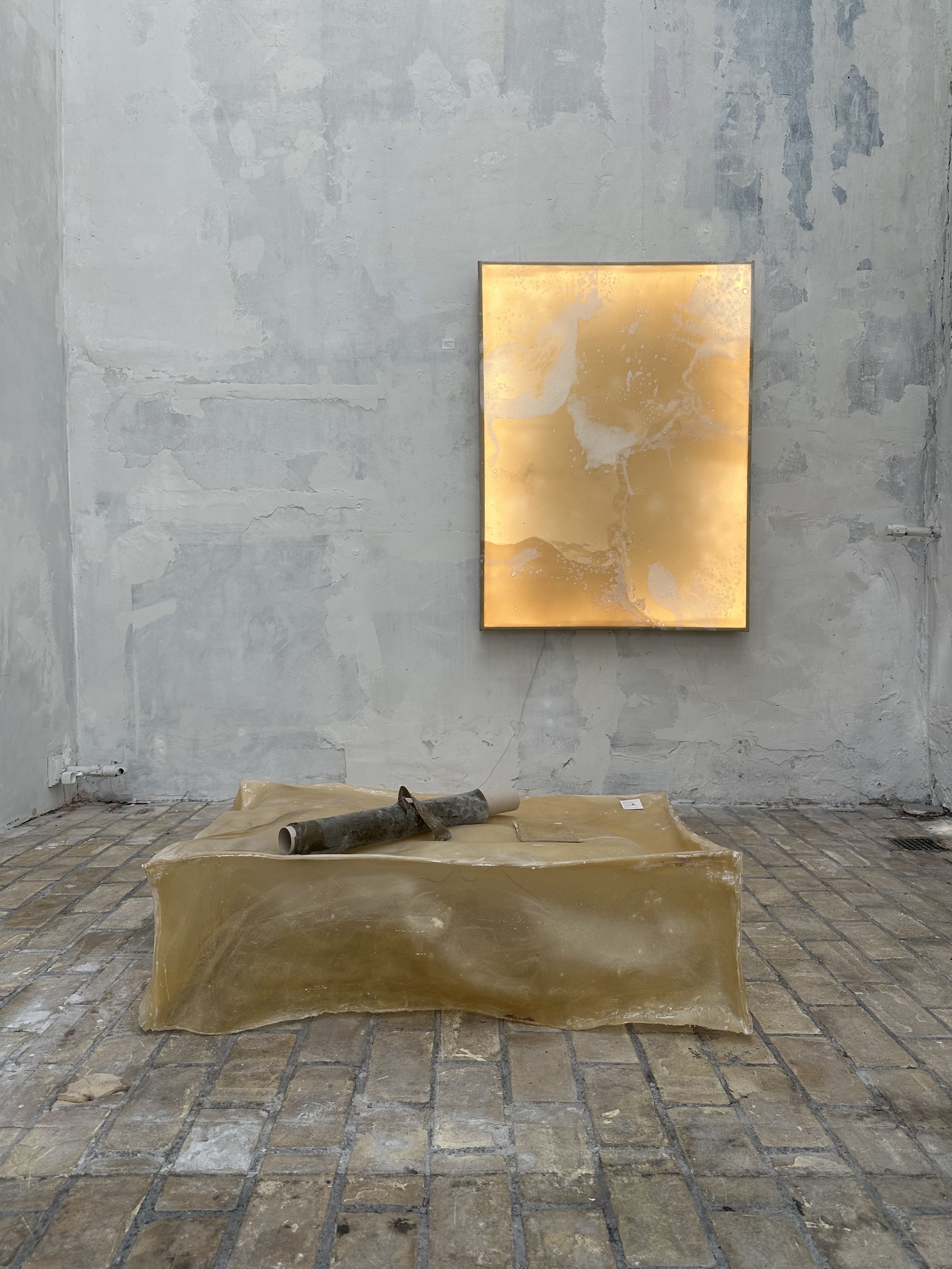
Light Box and Research Table by Natural Material Studio
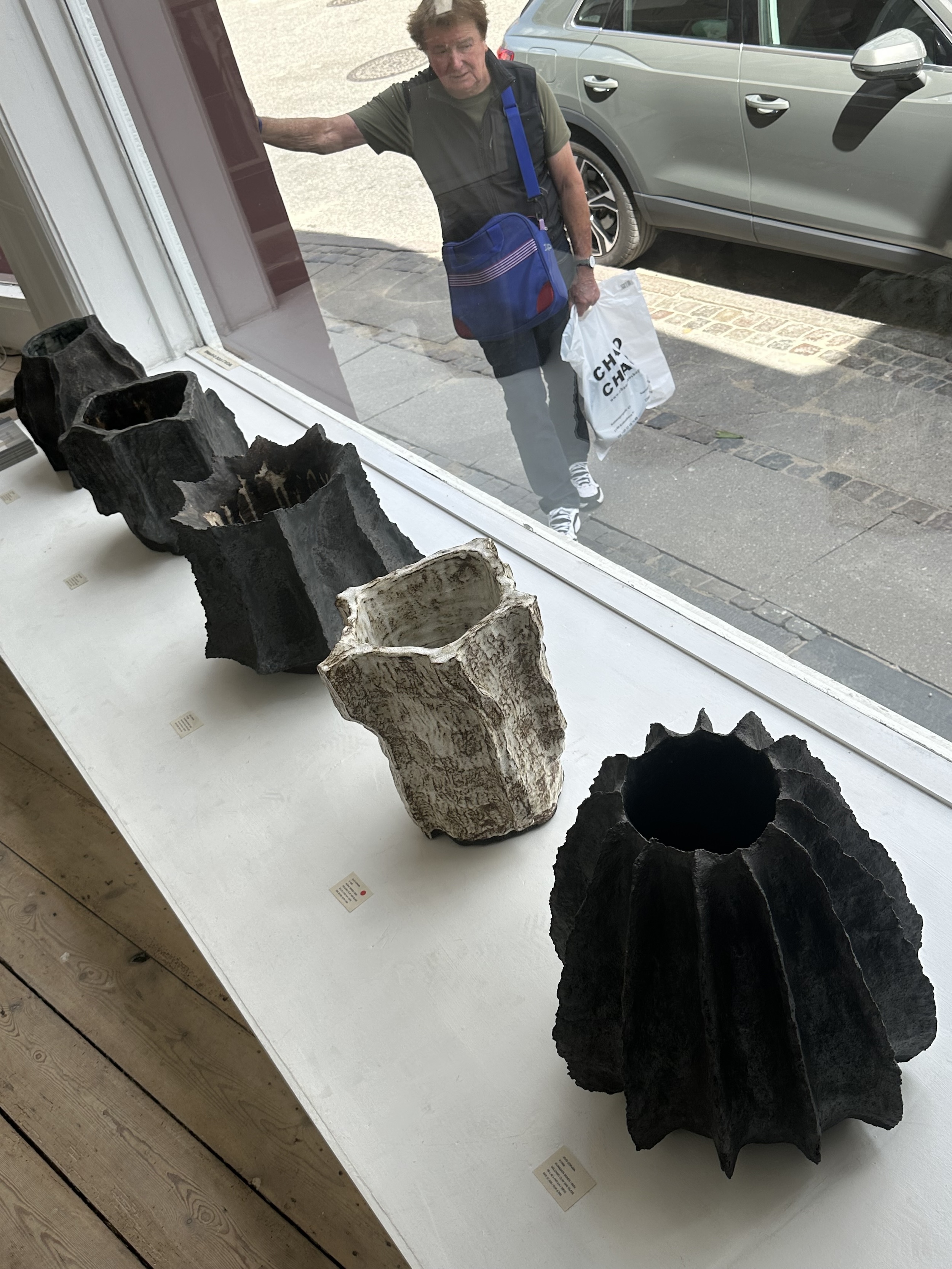
Ceramic vessels by Jojo Corvaïa
A visit with Tage Andersen, Denmark's 'King of Flowers'
No trip to Copenhagen is complete without a pitstop into the masterpiece of Denmark’s ‘King of Flowers’: Tage Andersen. He's has had a shop since 1967 and conjures magic from the natural world in his store and workshop. Crossing Andersen’s threshold is like stepping into a romantic gothic fantasy. While the design industry clamours for our attention on the streets and in our inboxes, we enjoyed a quiet, restorative sandwich in the company of Mr. Andersen in his cool, dark cavern. ‘This is my world,’ he says, ‘I feel lucky to live in it. Please sit down and relax.’

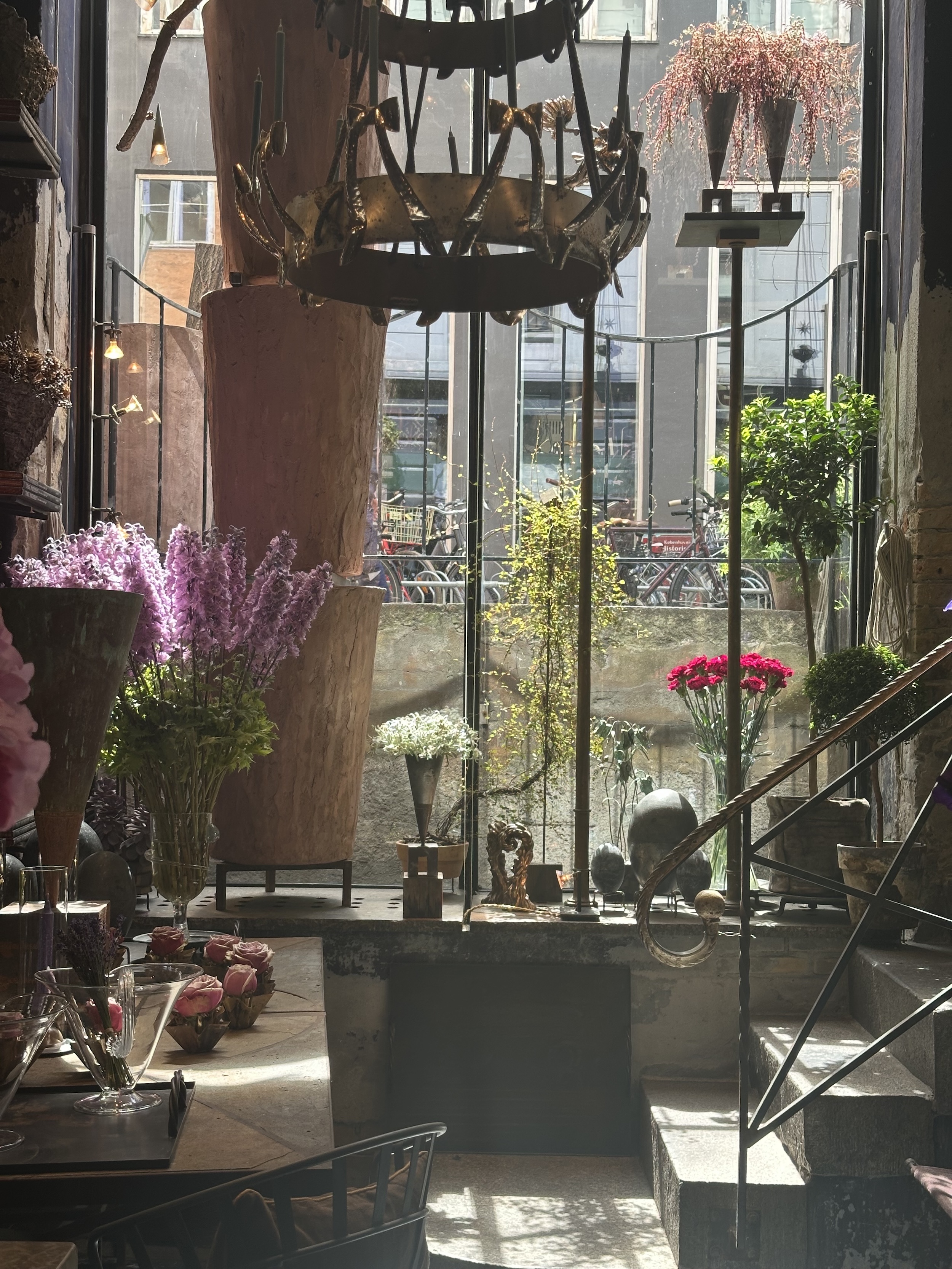
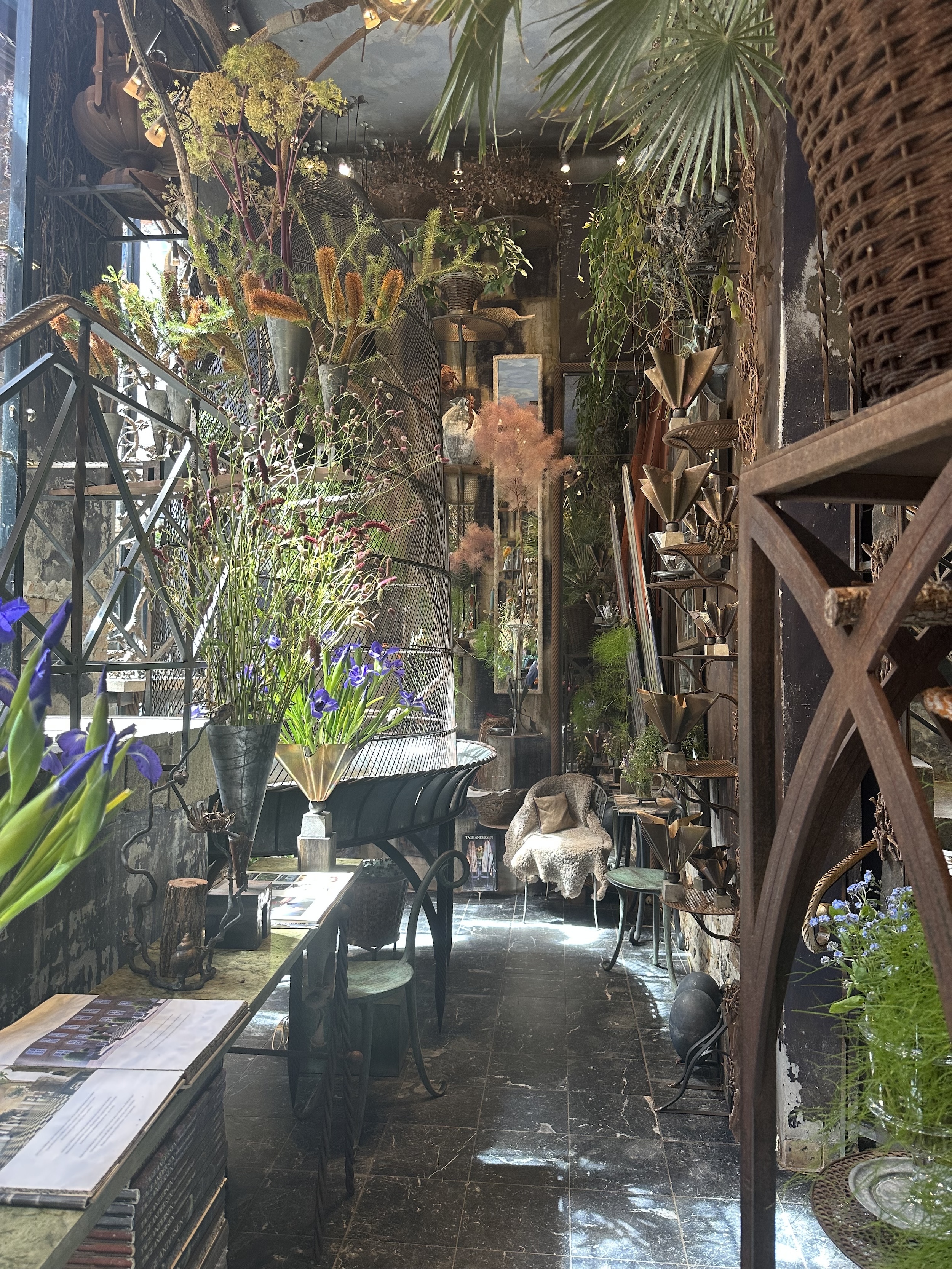
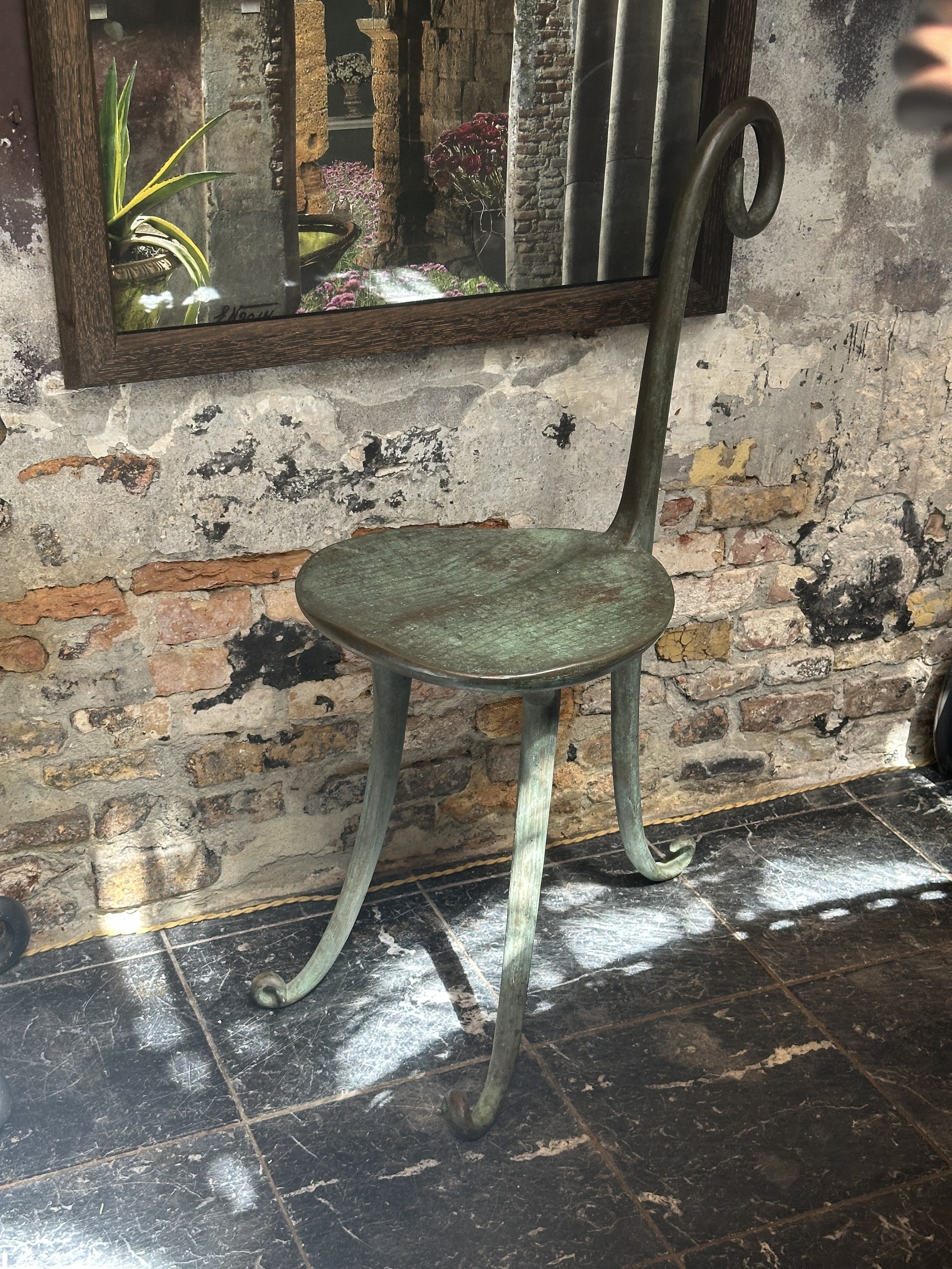
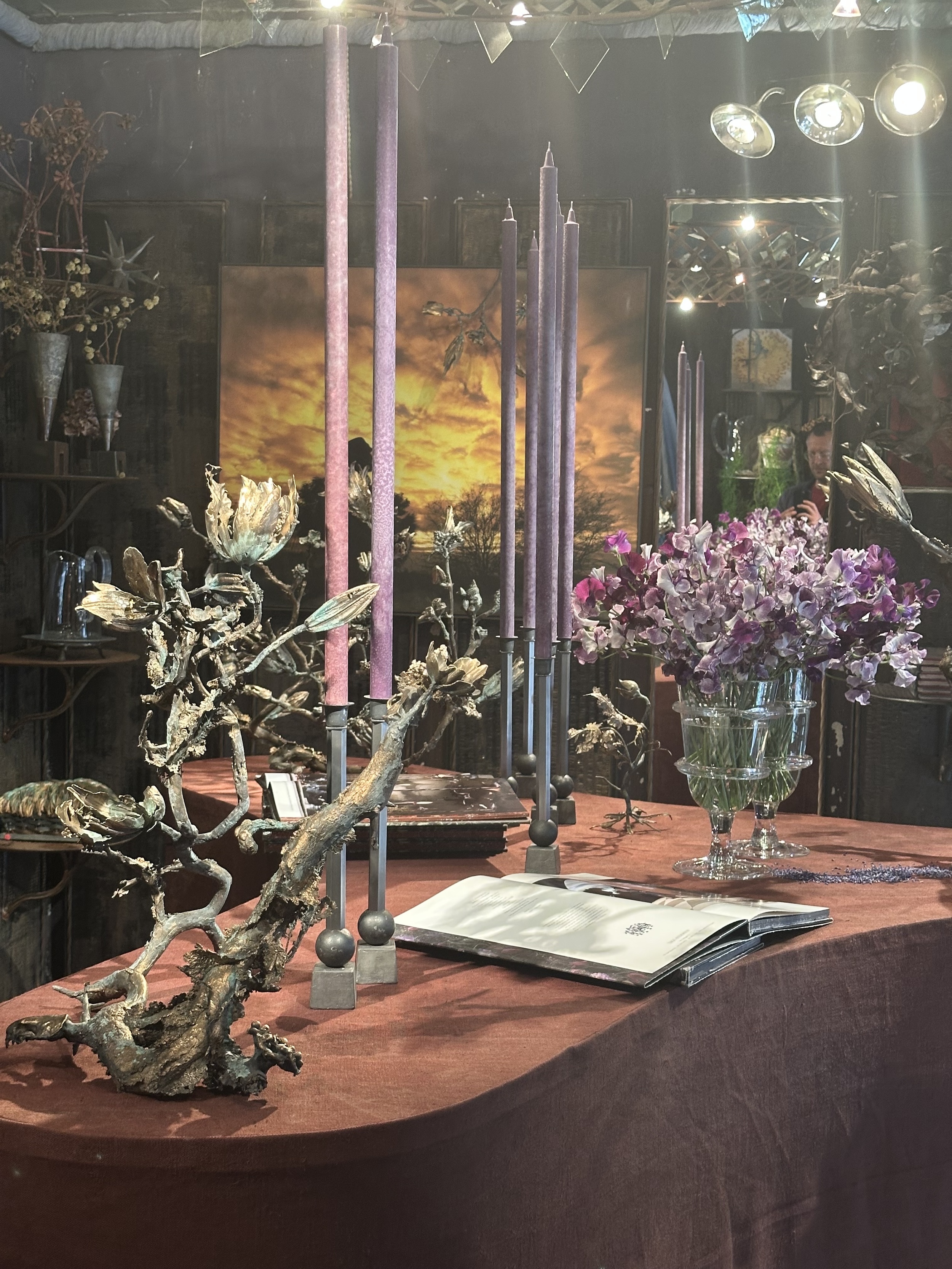

Monica Forster's recycled marble furniture for Fogia
Swedish manufacturer Fogia has debuted a very enticing set of tables with Monica Forster called Kern. They are made from a new patented material OUTT, which takes waste marble chips and dust and combines them into a new material for interior architectural use. Brushed rather than polished for optimal tactility, Forster's side table and coffee table are hunky, chunky and extremely satisfying in weight and texture. Rough edges nod to the broken stone origins of the material’s former life. Just wonderful.
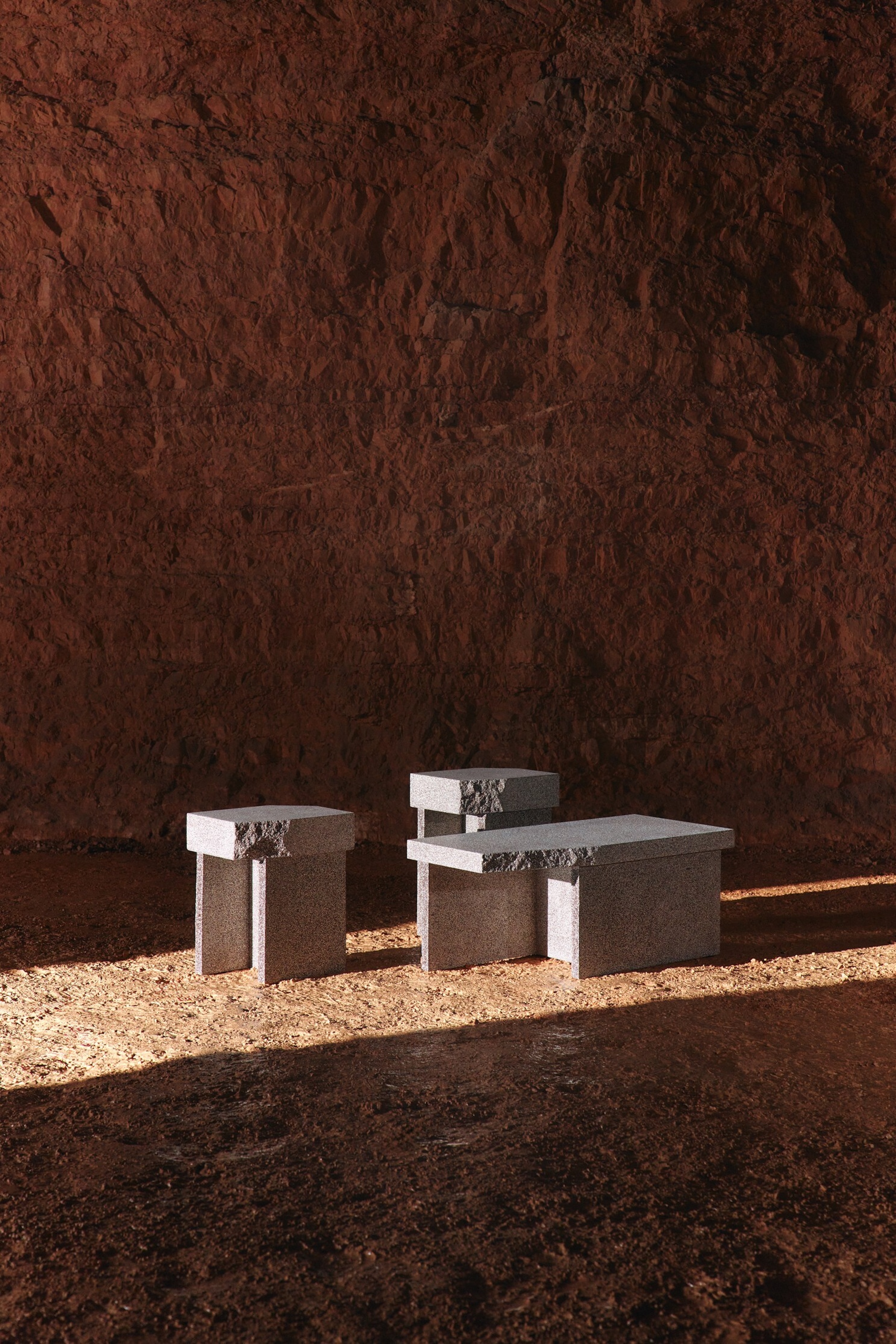
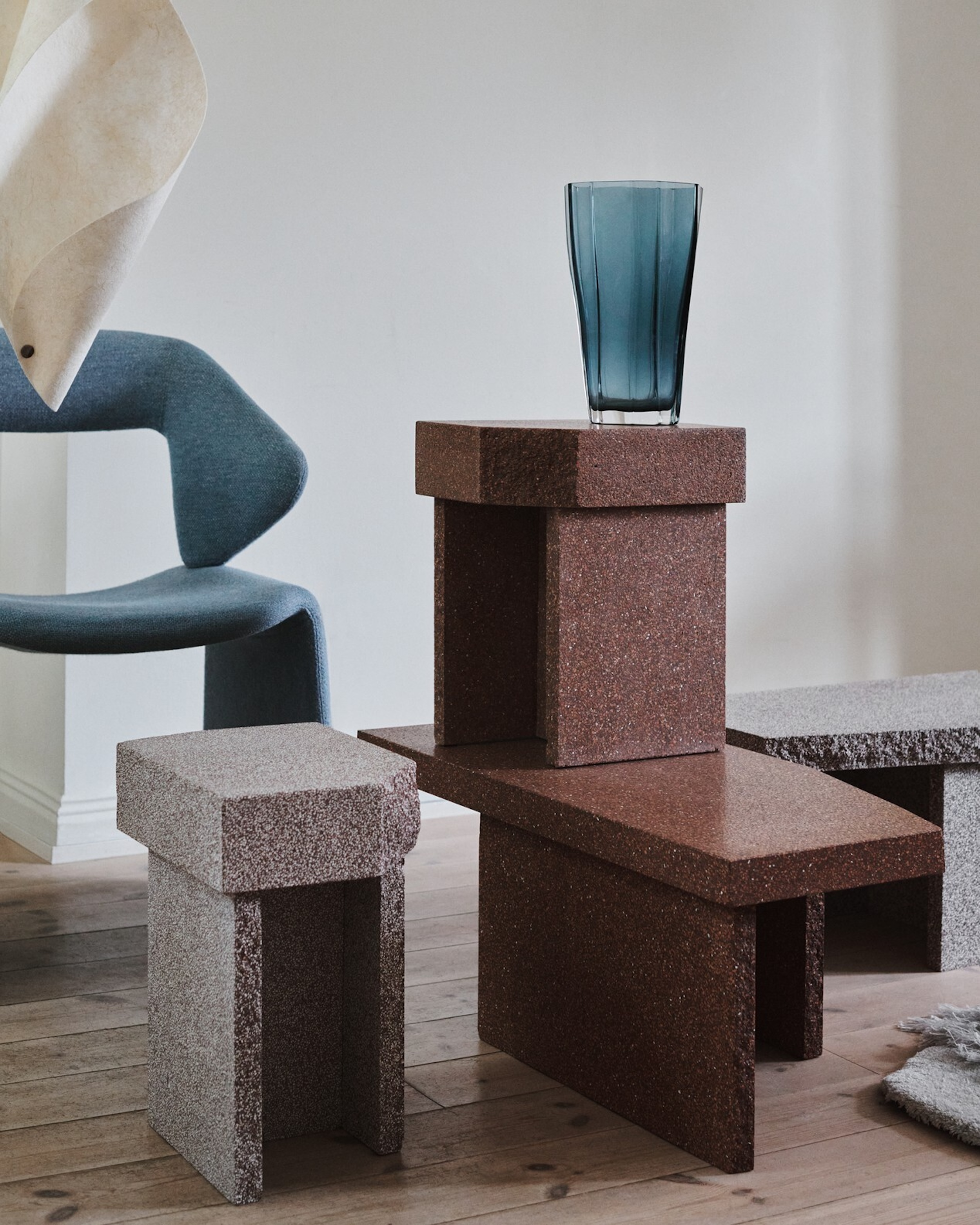

Royal Copenhagen’s 250th anniversary
We are all for celebrating birthdays, and 250 - quarter of an actual millennium - is a big one. Putting the Danish national characteristic of ‘janteloven’ into practice, Royal Copenhagen’s celebrations are charmingly modest. In the atrium of their Stroget showroom, they placed two benches with live demonstrations of their porcelain being painted. The message is clear – handcraft and humility endure across centuries. That said, in the next door room was a fairly spectacular ceramic showstopper – a super-sized piece from the new ‘Kontour’ collection, inspired by the movement of the sea.
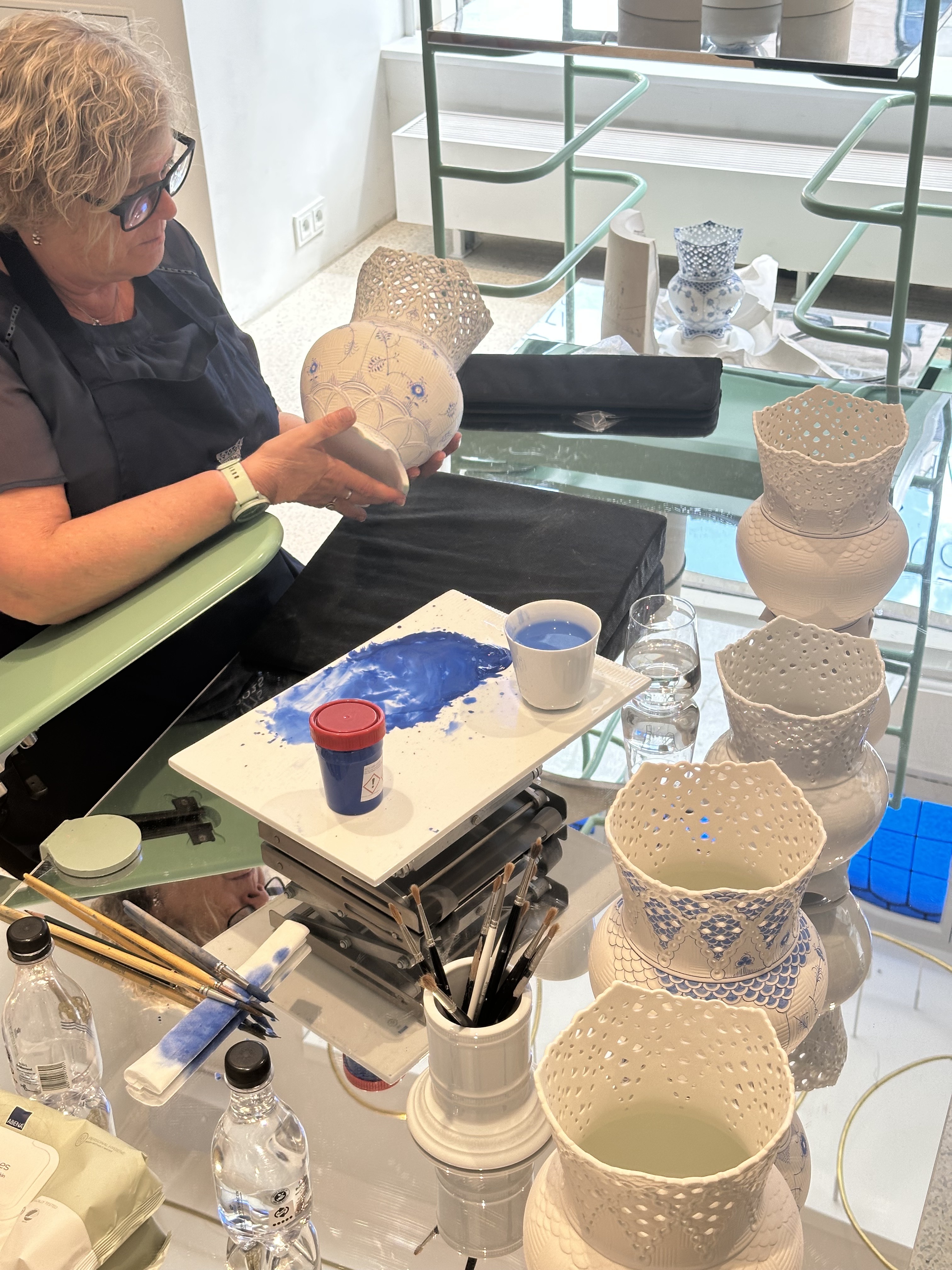
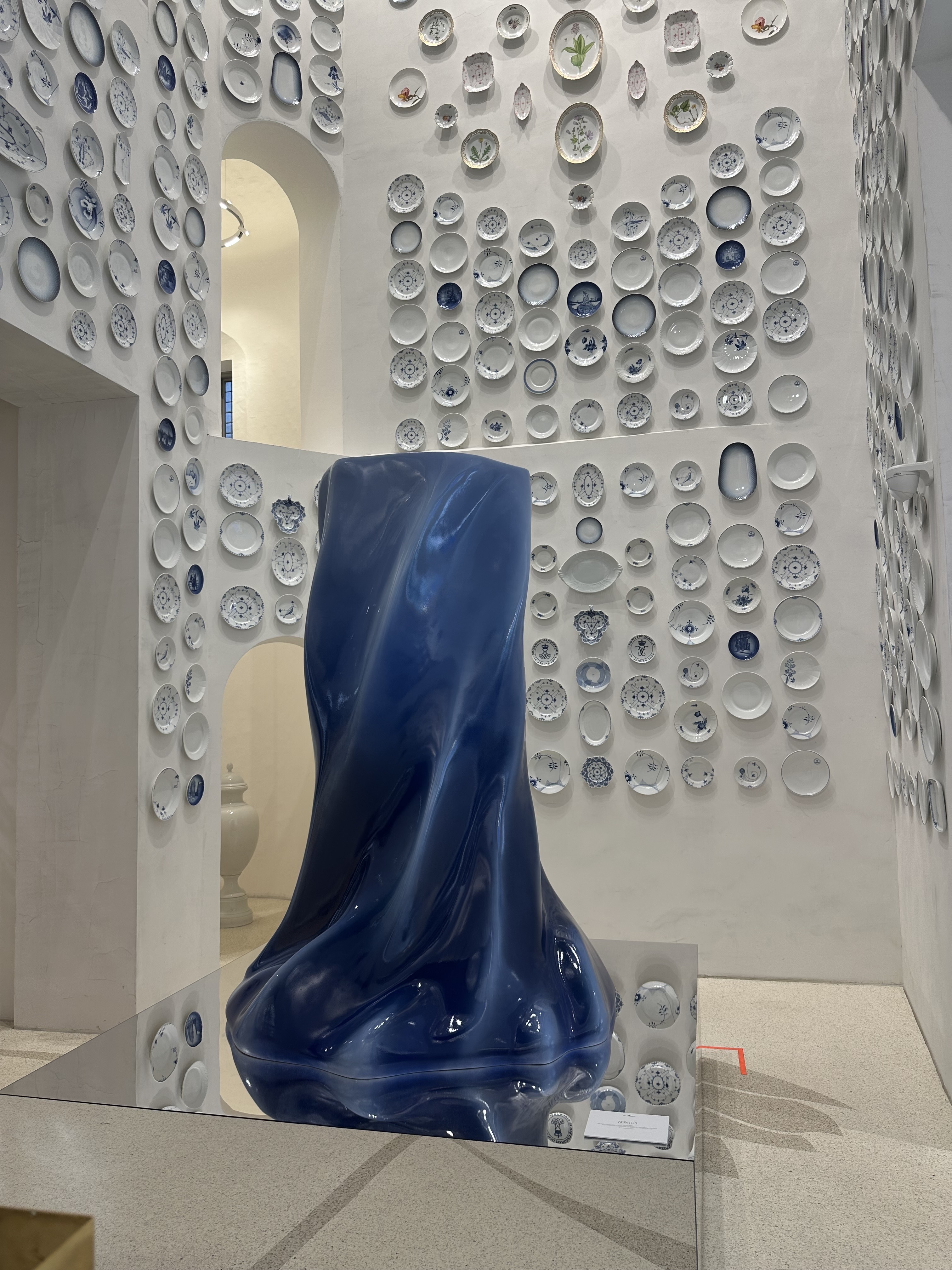
'Functional Clay' at Peach Corner
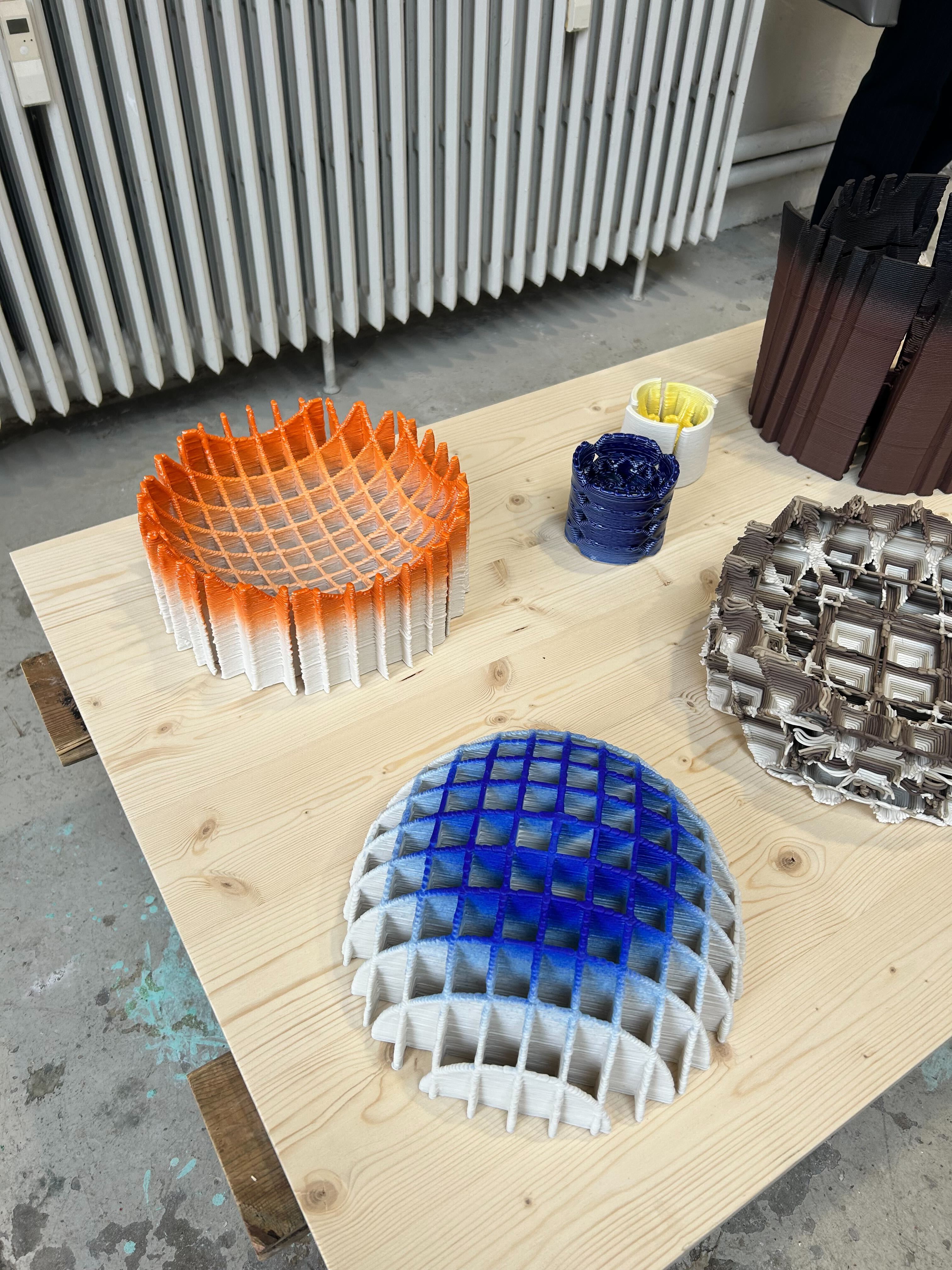
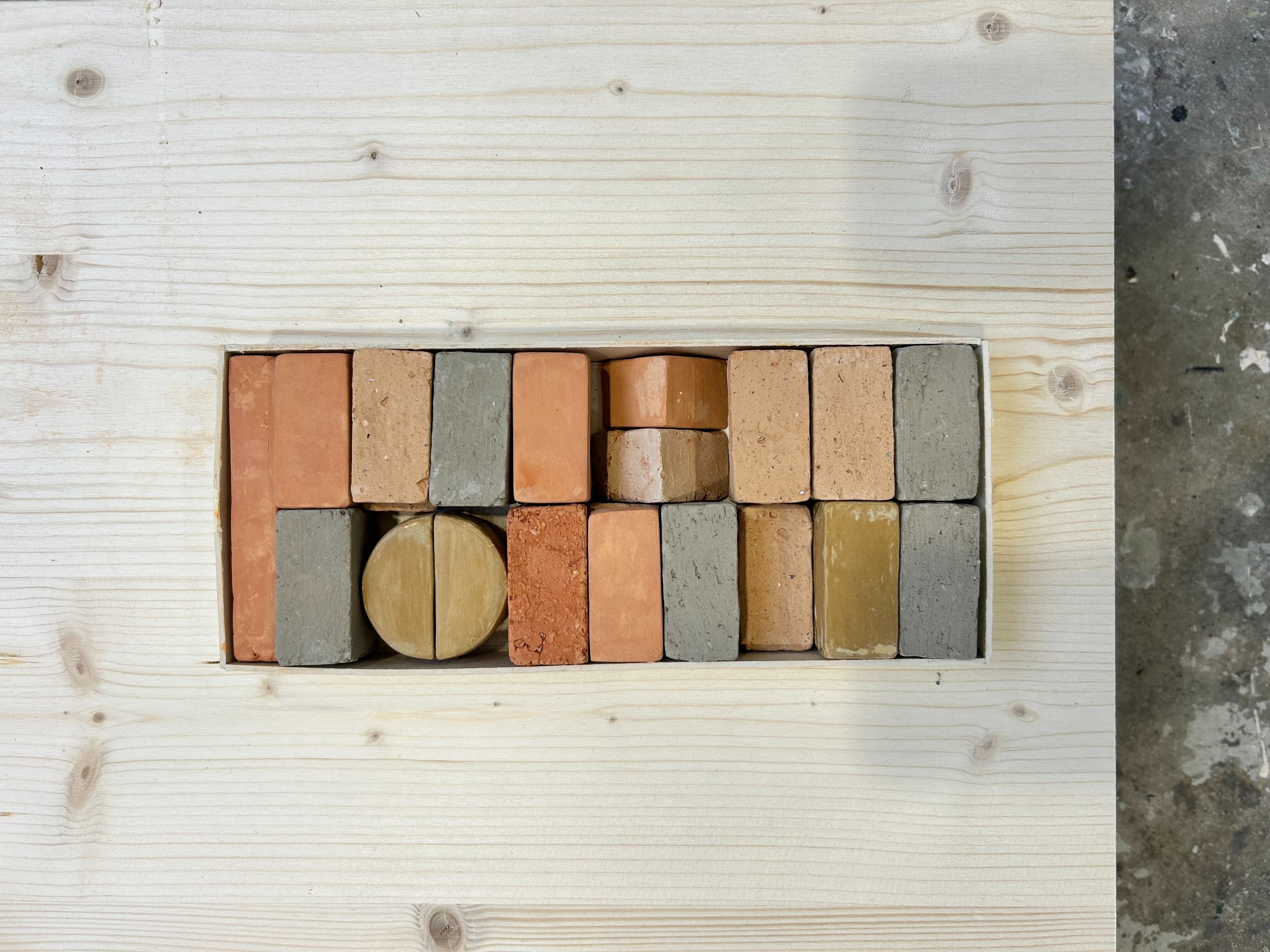

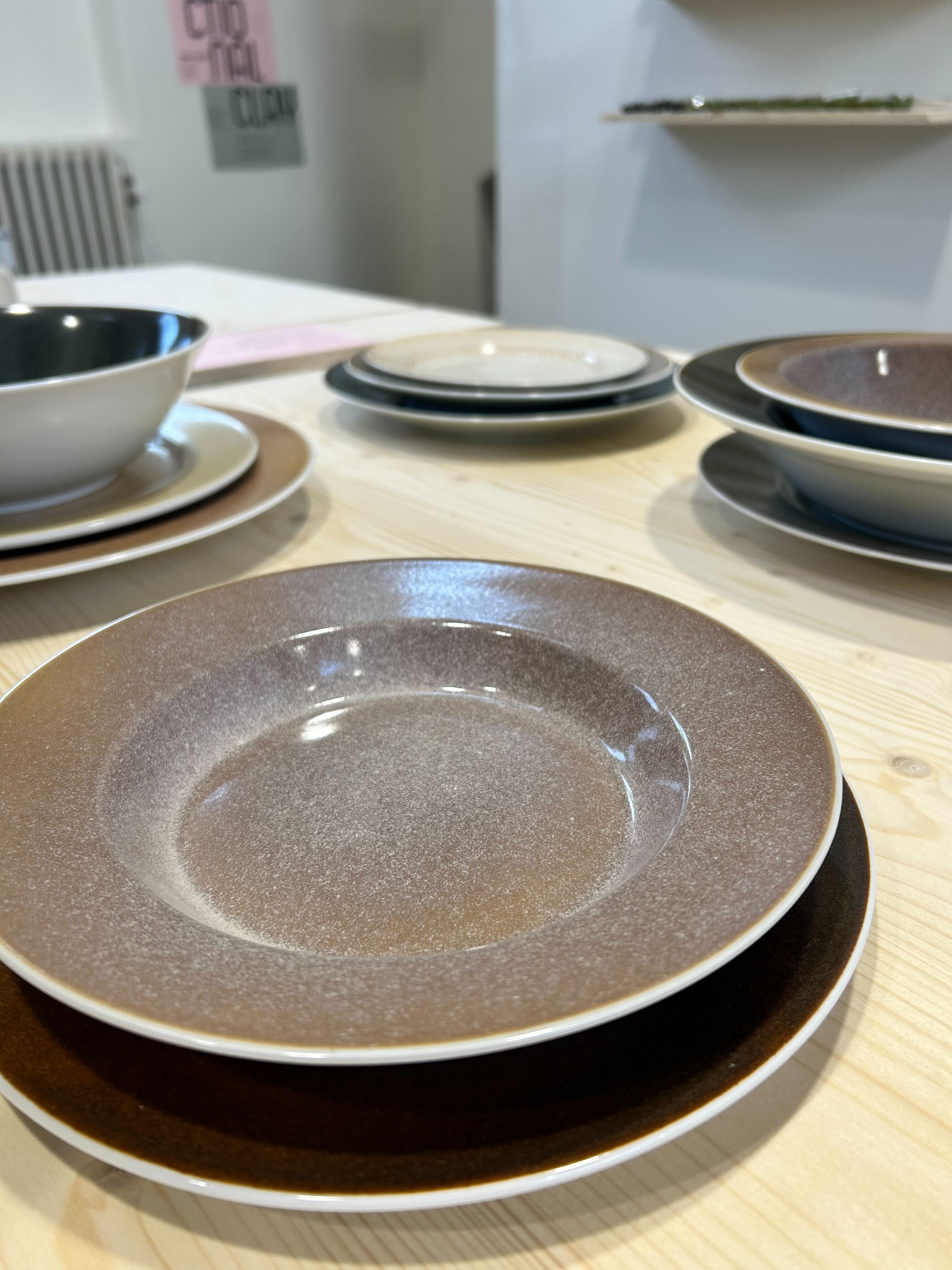
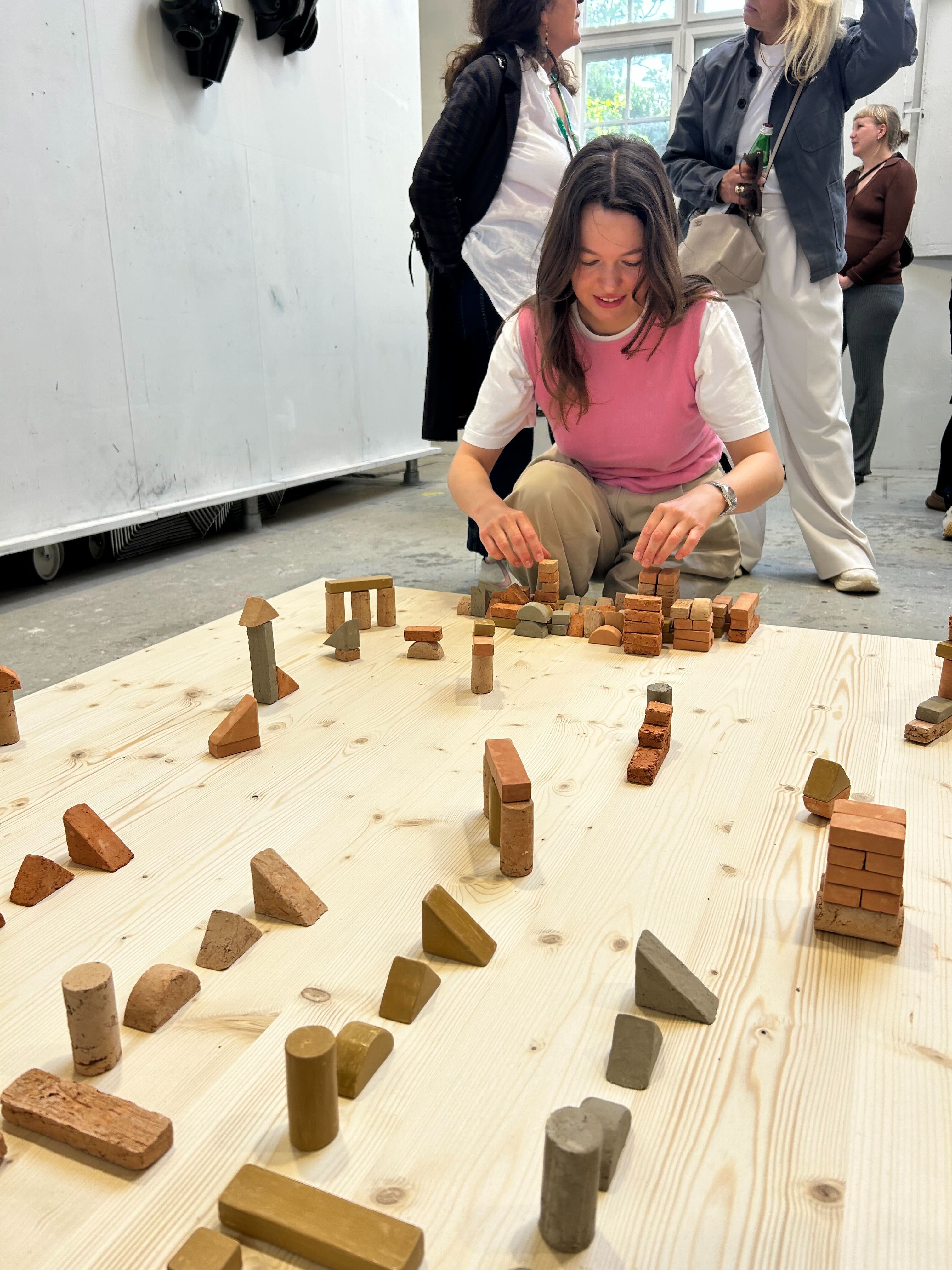
A small but mighty ceramics show is tucked inside the artist-run exhibition space Peach Corner. Titled 'Functional Clay', the group exhibition explores utilitarian ceramic objects – from tableware to climbing holds – and brings together works by seasoned makers and first-time clay experimenters alike. Highlights include 'Replated' by Birgit Marie Østerby, in which discarded white porcelain plates are revived with new glazes made from industrial by-products. The resulting colours and textures are shaped by the glaze material’s chemical makeup and region of origin.
Hilda Piazzola’s 3D-printed vessels, meanwhile, reveal the complex infill patterns usually hidden beneath the surface. Engineered for structural integrity, they turn efficiency into ornament. And because we can’t resist anything miniature, we also enjoyed this set of stacking bricks designed for tiny architects and engineers by Zuzanna Skurka. To keep discerning young minds stimulated, the bricks come in a tactile mix of materials – from fired and unfired clay to rammed earth, recycled fragments, and smooth or rough finishes. Ali Morris
Anne Marie Carl-Nielsen Studio, Frederiksholms Kanal 28B, 1120 Copenhagen
Aussies unite for The Streaks by Bankston x YSG
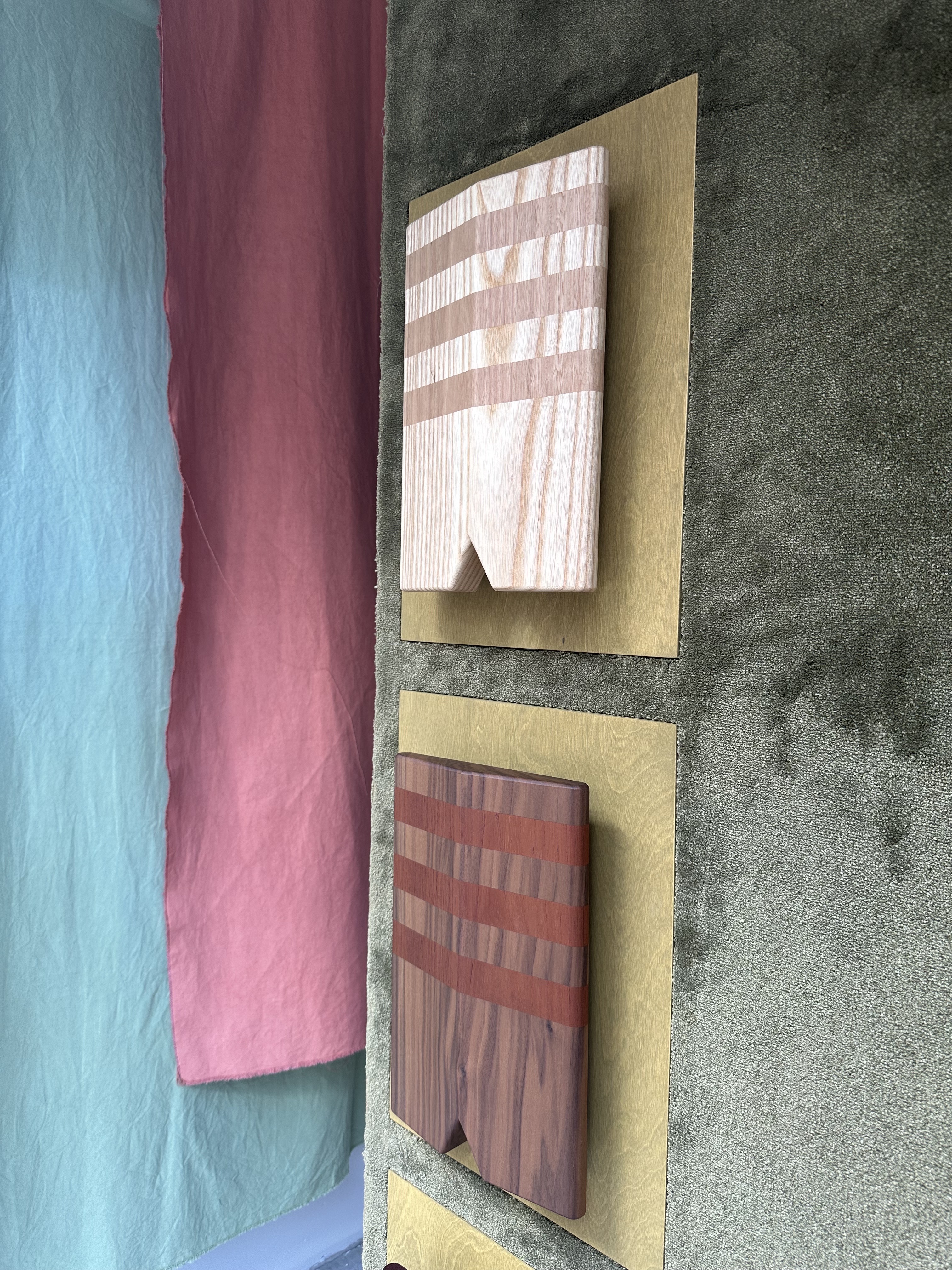
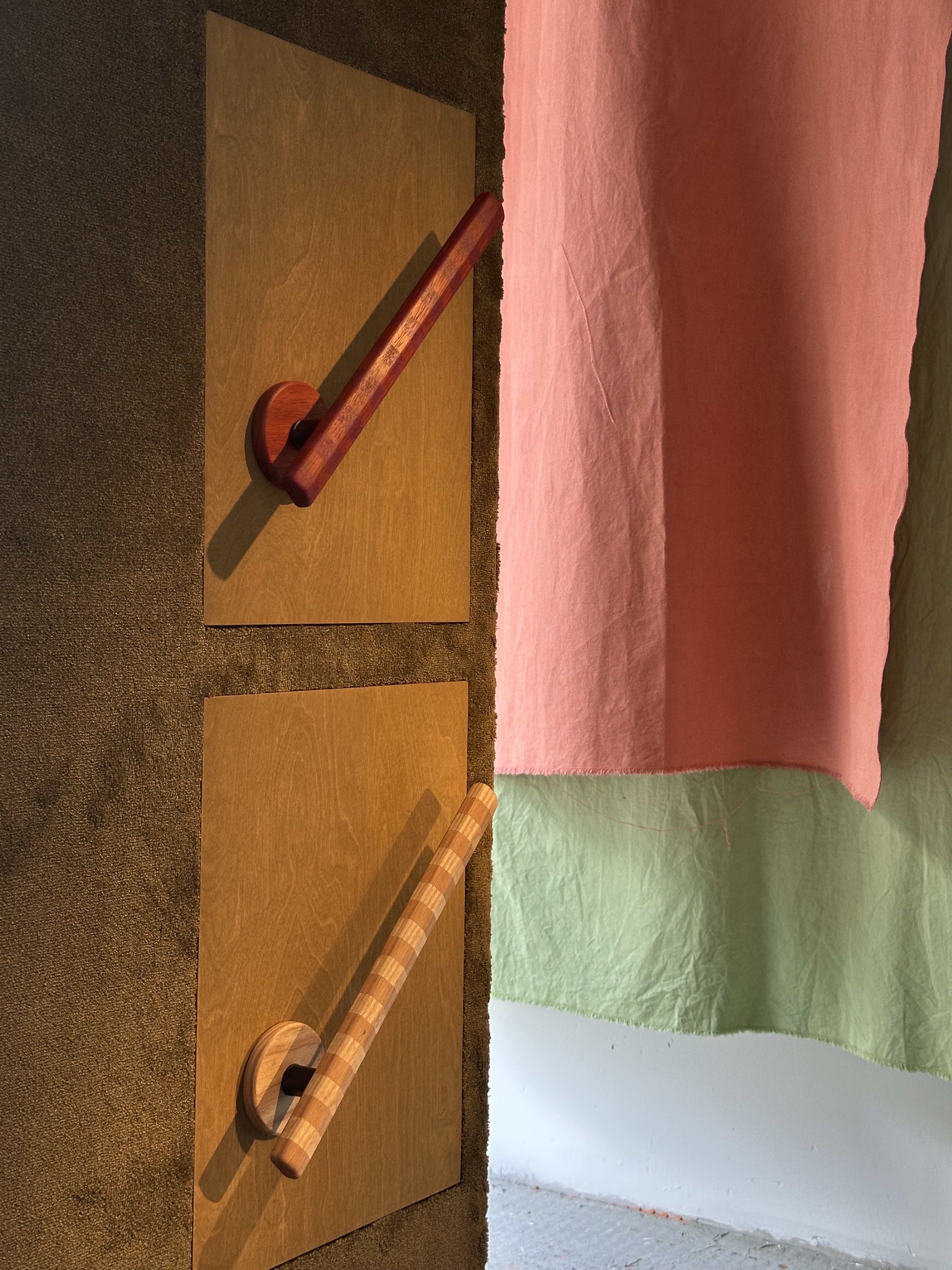
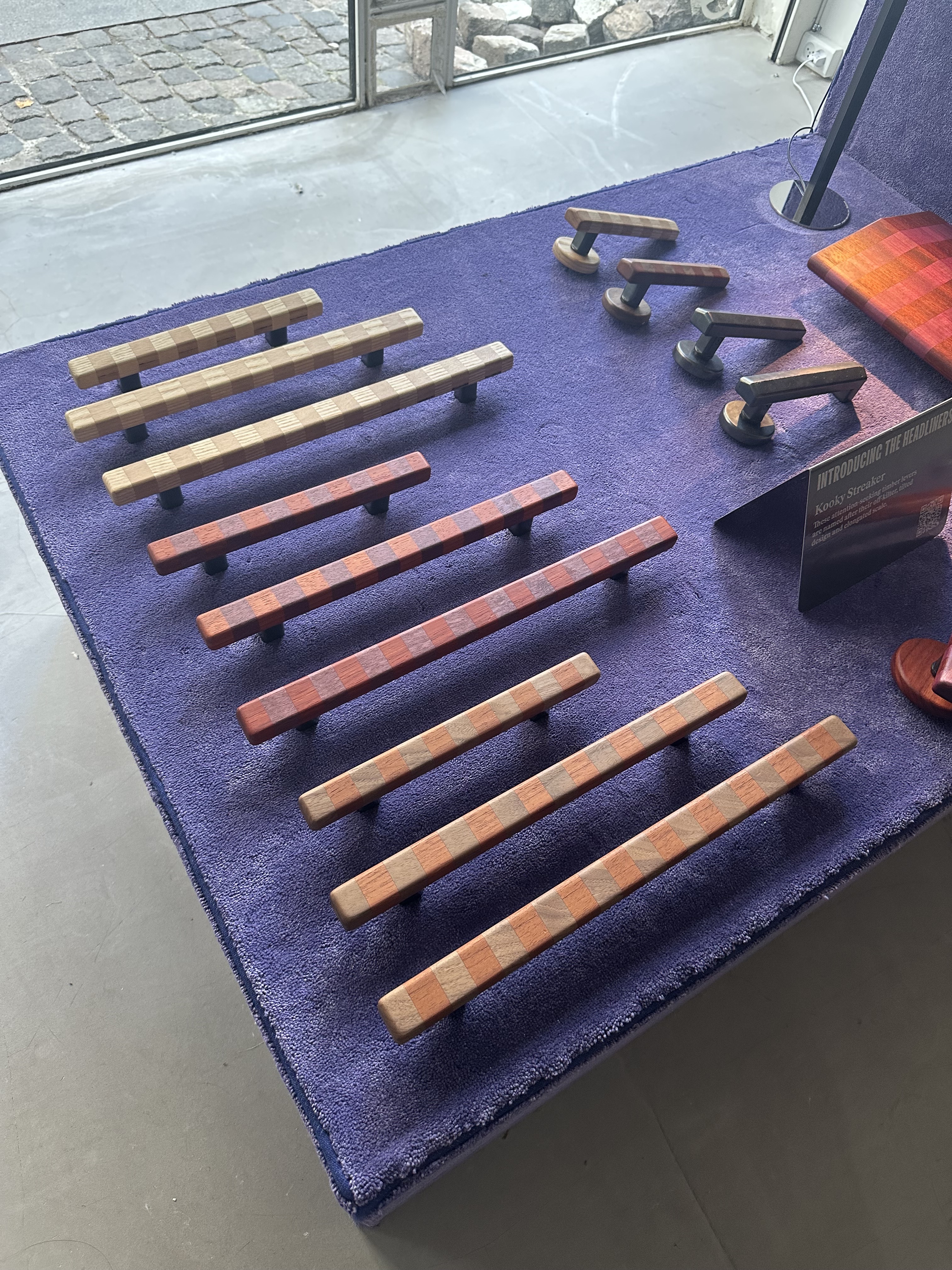

Proof of the global pulling power of 3 Days, there are several Australian brands and designers showing in the city. We enjoyed making acquaintances with Australian hardware company Bankston, whose collaboration with Sydney-based design studio YSG has resulted in a range of charismatic door levers and pulls. Mind-bogglingly, given the richness of colour, these are all made from undyed woods in contrasting tones (all FSC-certified too, we should note). The Streaks, as the collection is called, are jaunty – making a visual and tactile virtue of our entrances and exits. Alongside the three paired wood models, is a patinated bronze version, with natural pitting and pour marks – a particularly beautiful beast to wrap your paws around. Hugo Macdonald
Lee Broom's grand 'From Here Now' presentation
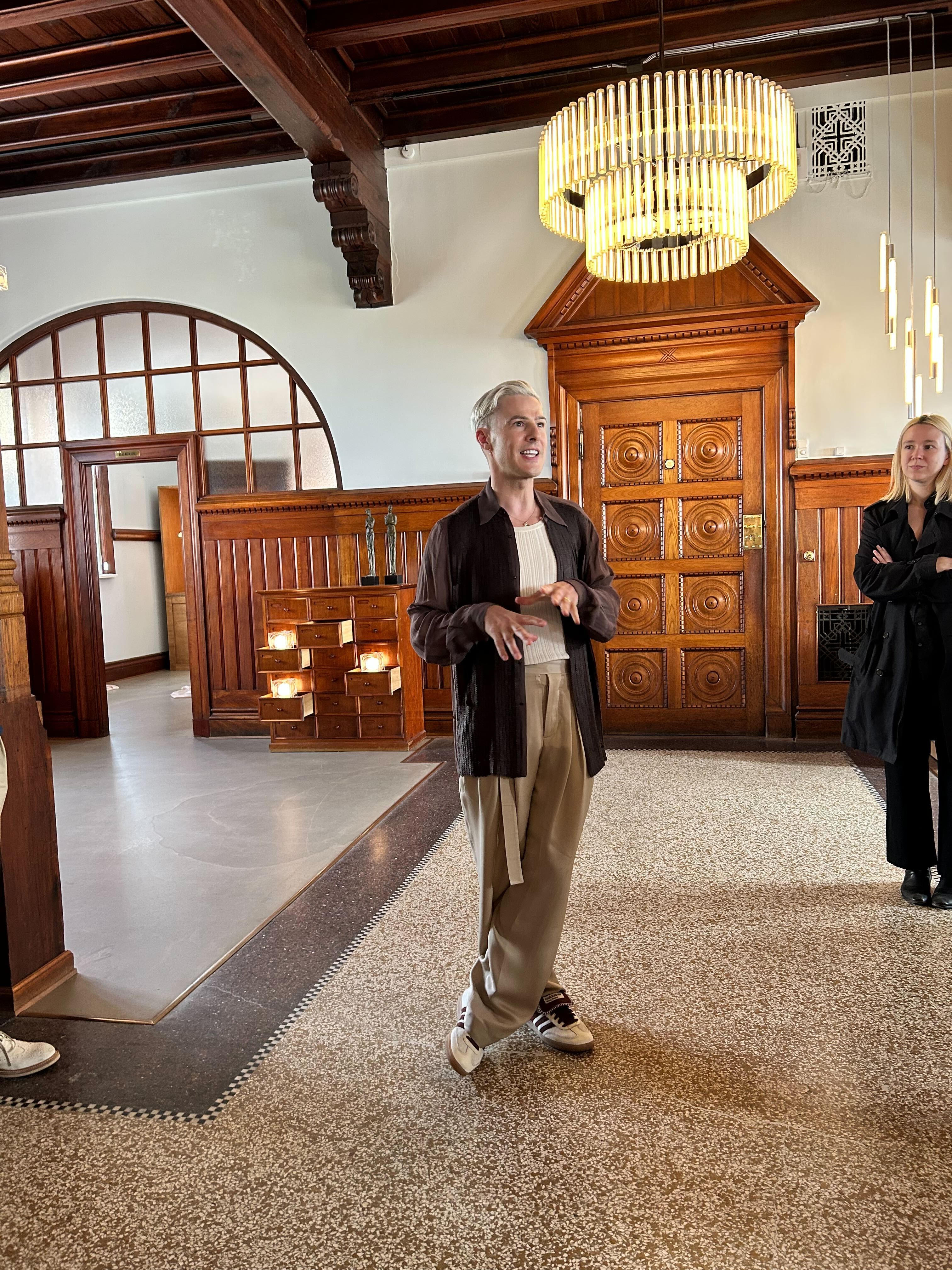
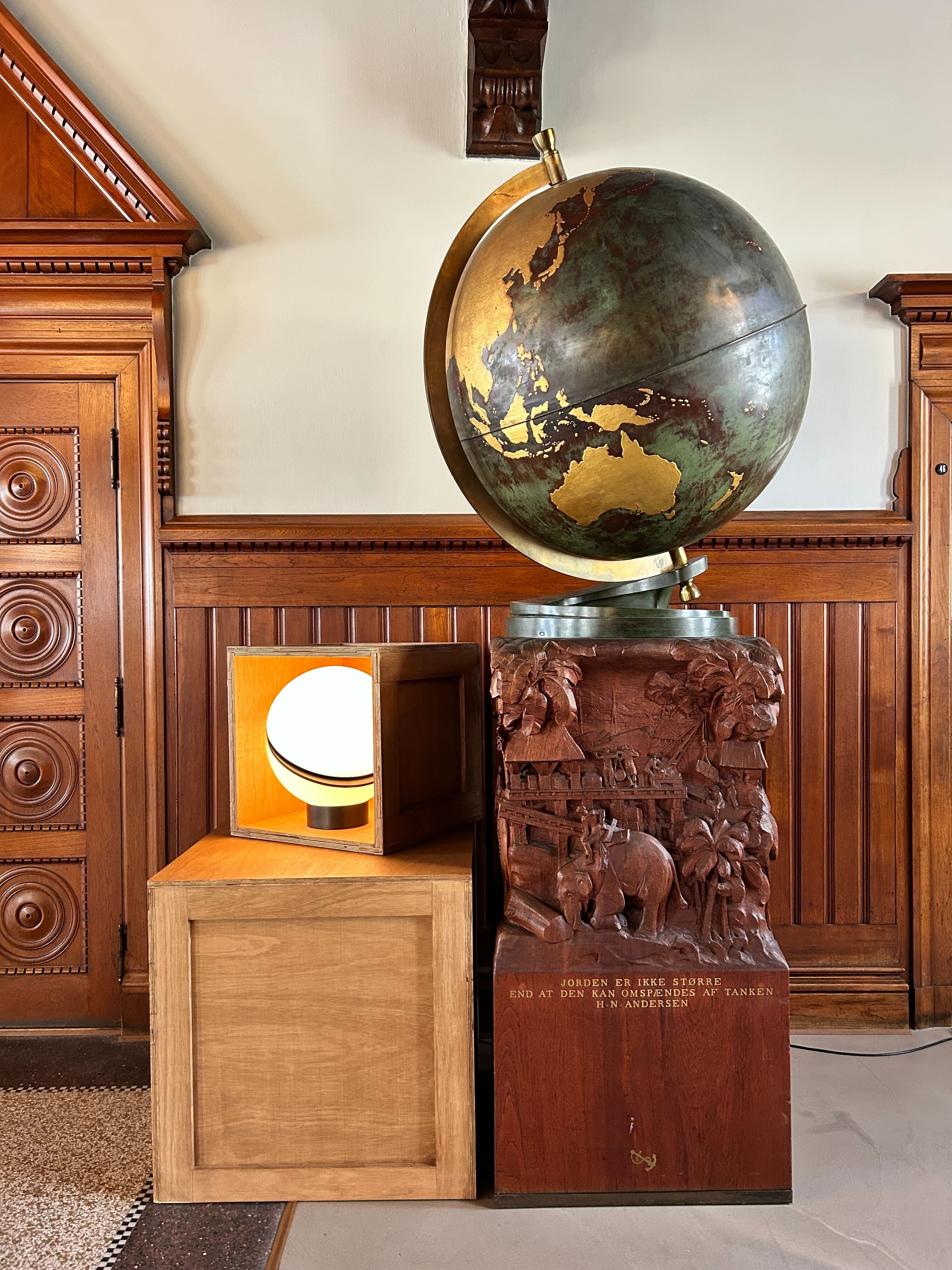
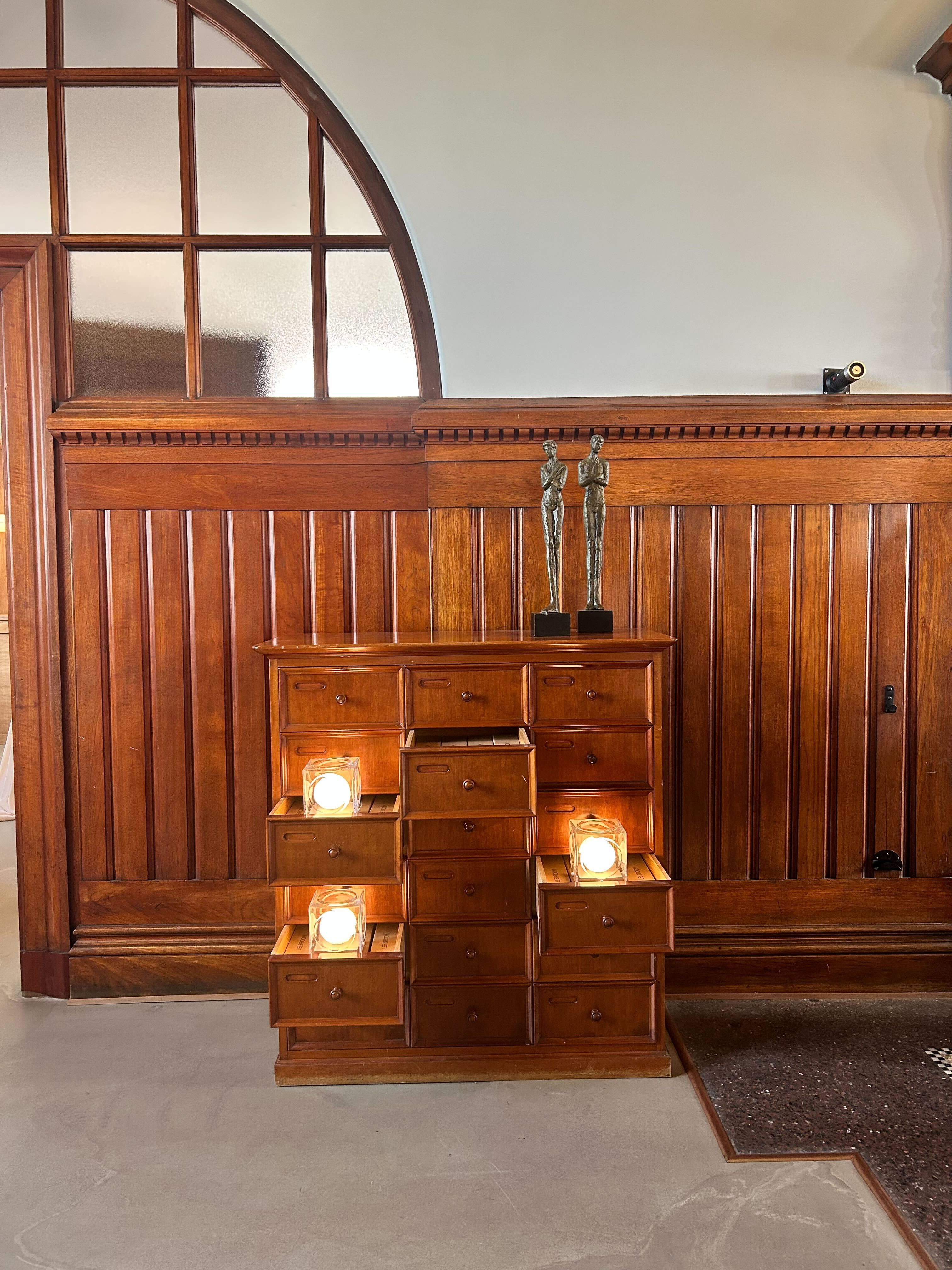
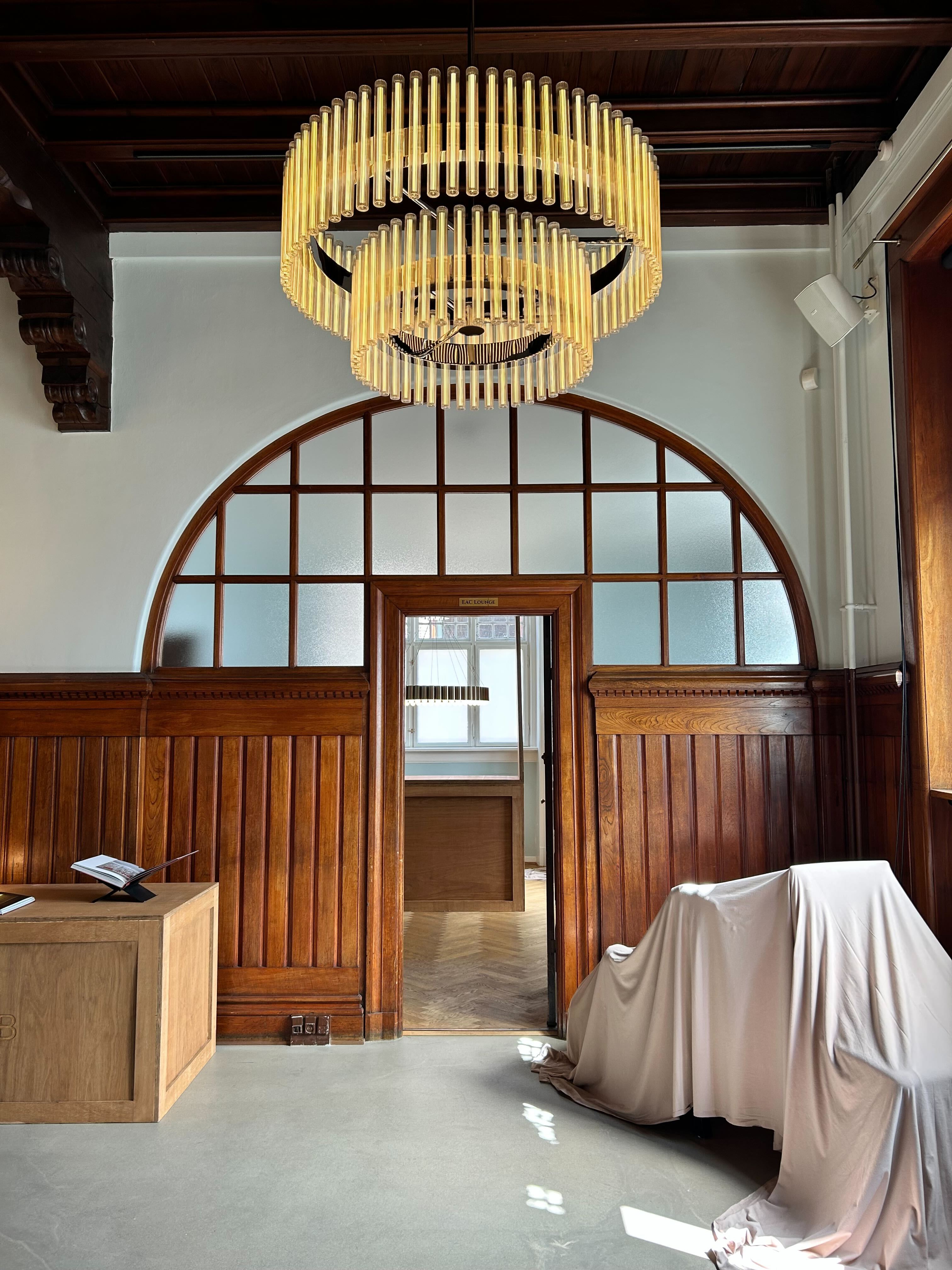
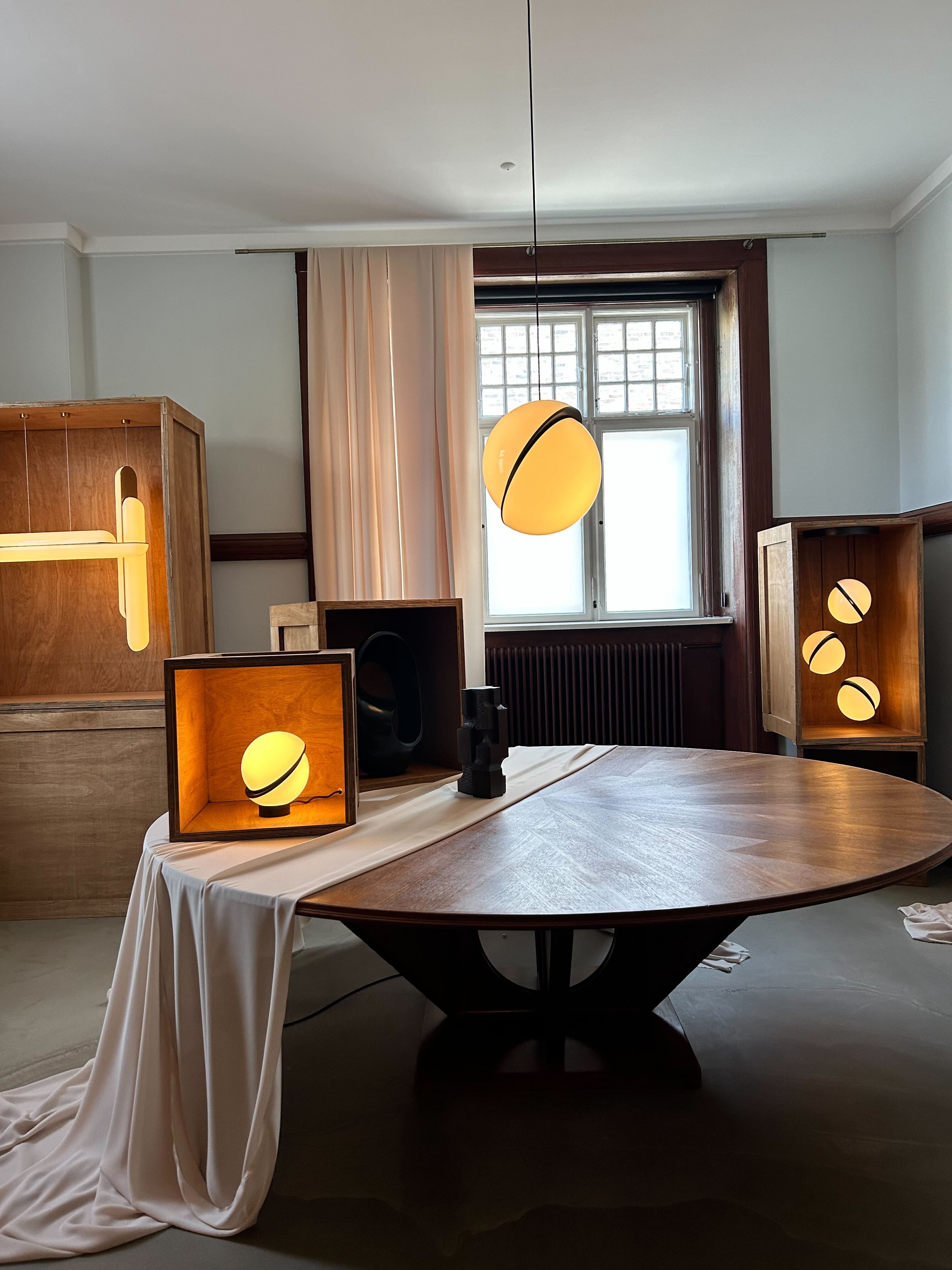
The grand, wood-panelled interiors of Copenhagen’s Asia House provided a theatrical setting for a retrospective showcase of lighting by British designer Lee Broom. Pieces – many reimagined in new finishes and configurations – were styled atop stacked wooden shipping crates (the same ones they were shipped to Denmark in) and draped with dust covers, a nod to the building’s history as the original headquarters of the East Asiatic Company (EAC), founded in 1897. Broom also unveiled his most accessible design to date: a portable glass brick lamp called ‘Chant’, priced at £285. If you visit, don’t miss the stairwell leading to the downstairs tearoom – a peaceful haven for a quick pit stop.
Asia House, Indiakaj 162100, Copenhagen
Back to school with Niko June
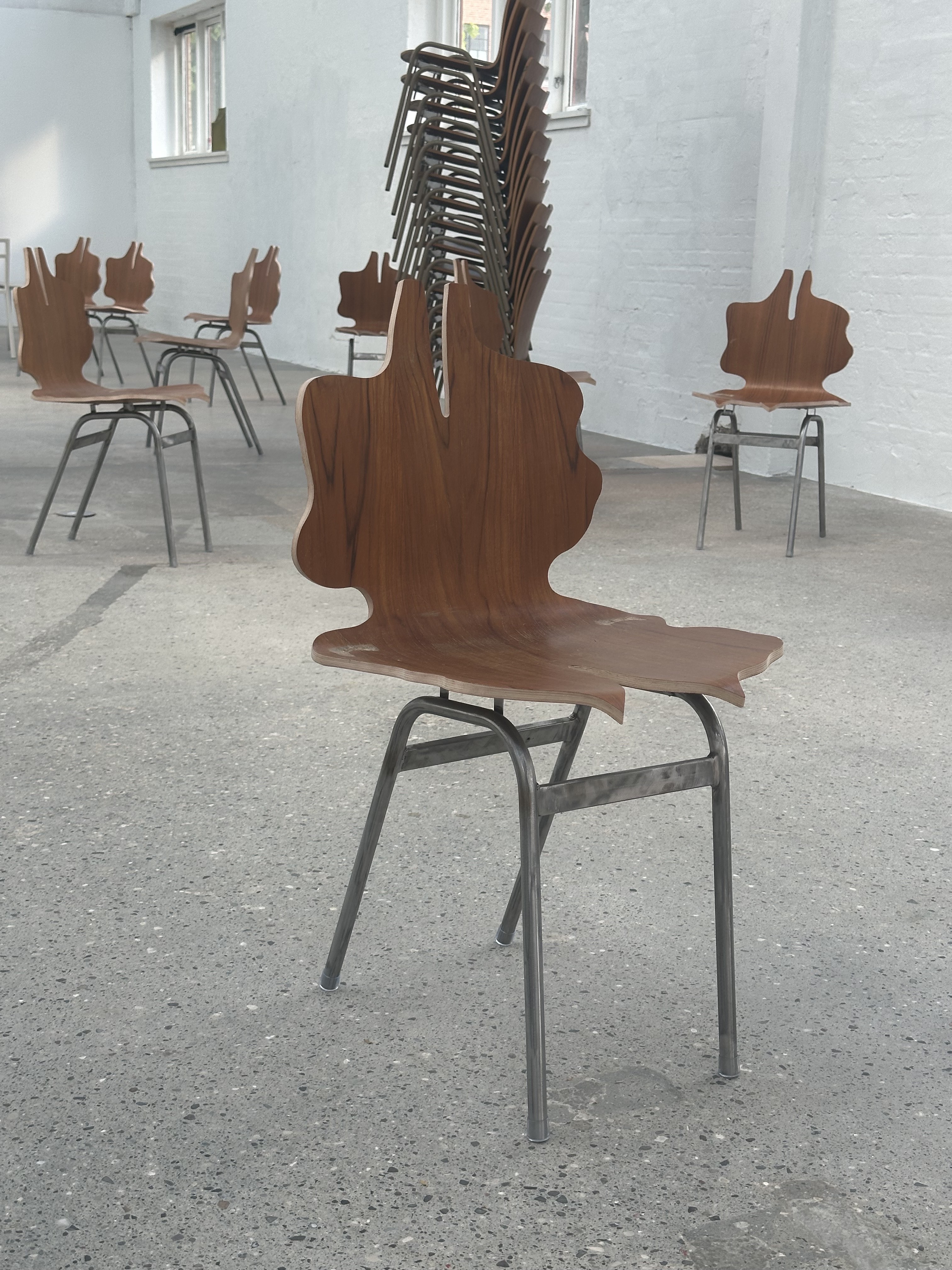
The guerilla designer-makers Niko June have turned their attention to the classroom with their latest offering. Sommerfugl means butterfly in Danish, and Niko June has requisitioned several standard classroom chairs from schools, reworking them individually in their Copenhagen workshop. ‘We didn't want to start over.’ They explain, ‘Only interfere just enough to alter their posture, shift their weight, encourage a new gesture. We left traces behind on purpose - of scratched legs, chewed edges, crooked screws. Their history is a collaborator. Sommerfugl is transformation through minimal removal and curious assembly.’
Dinner at Uno Duo
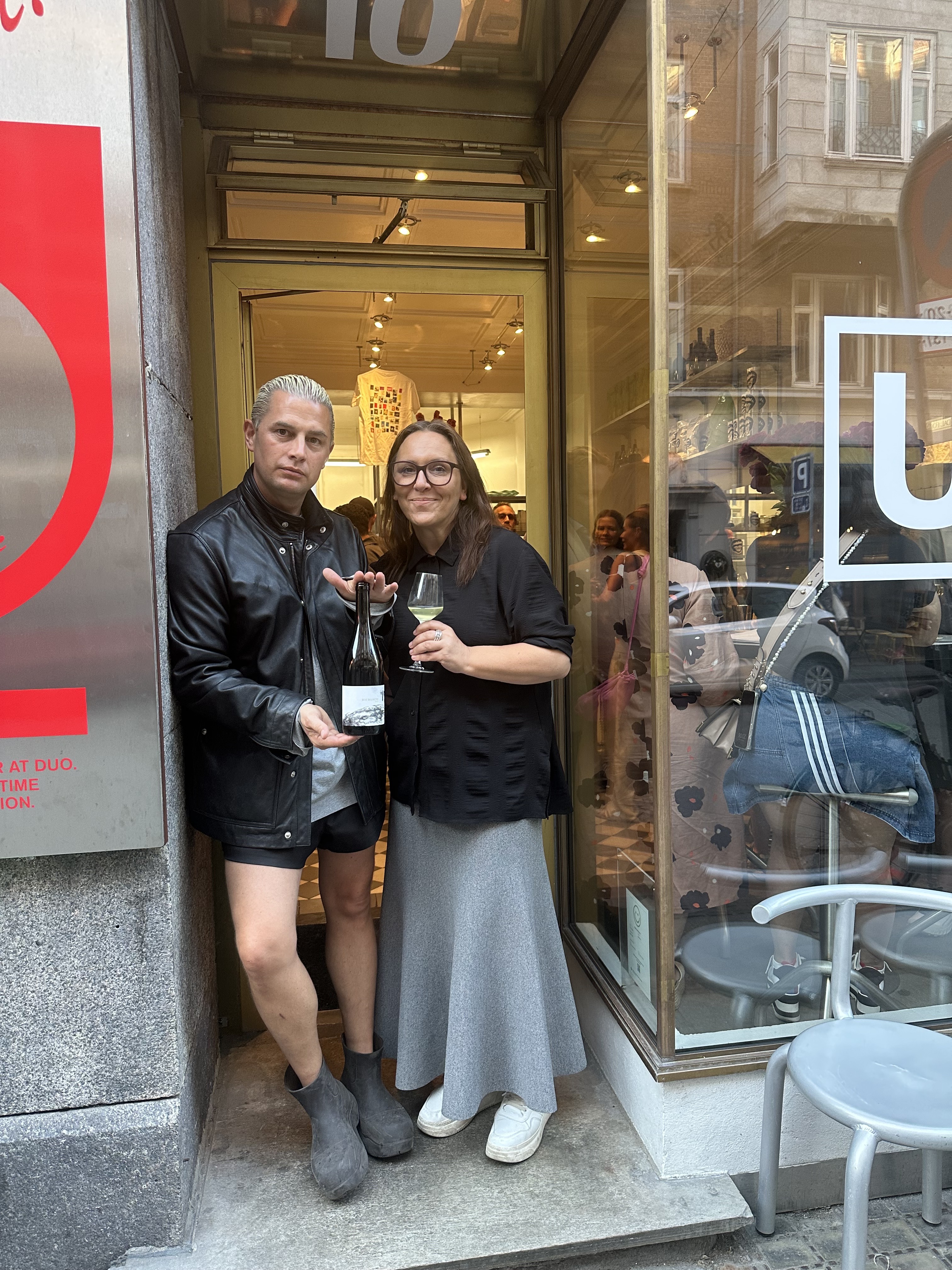
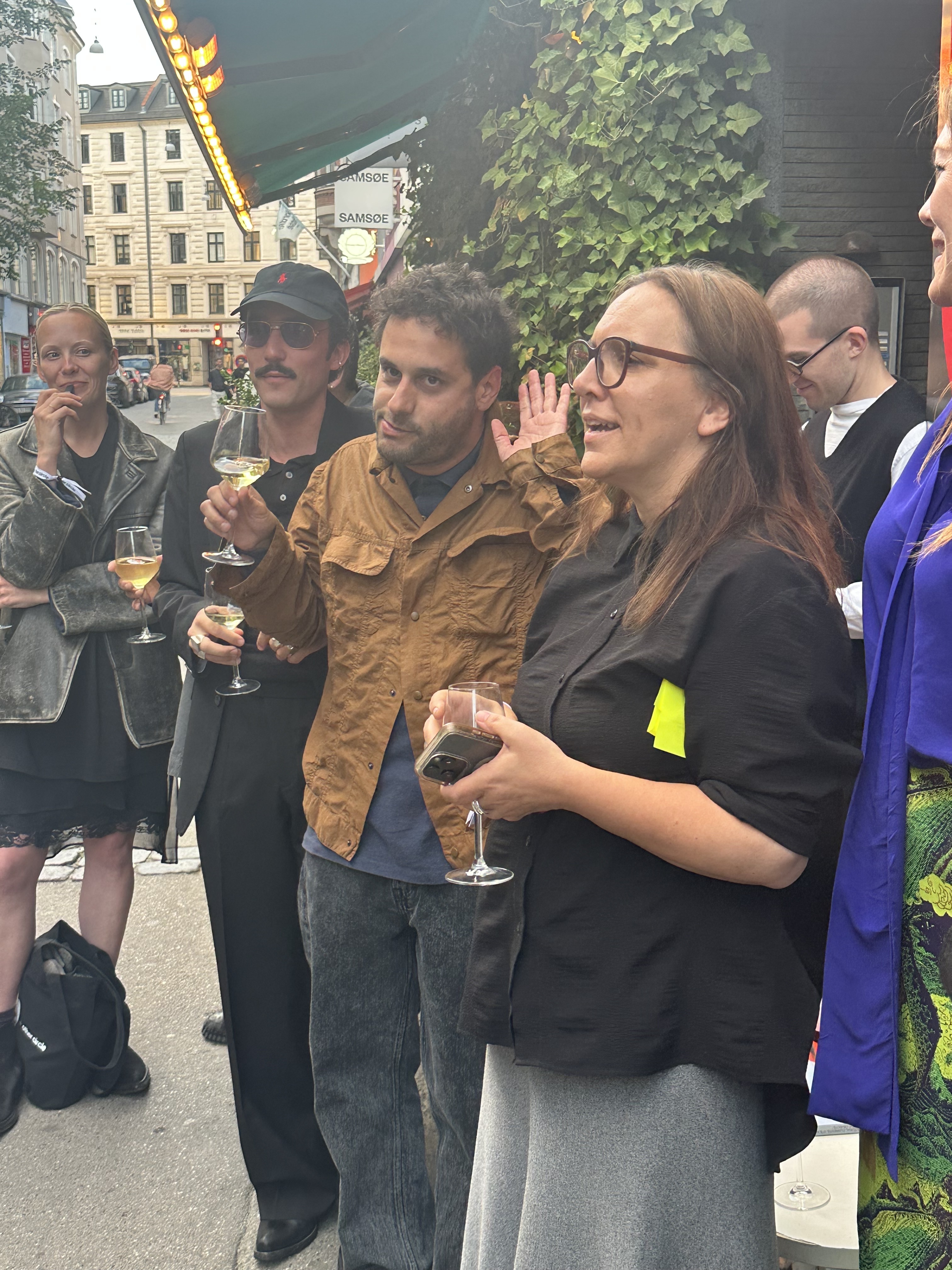
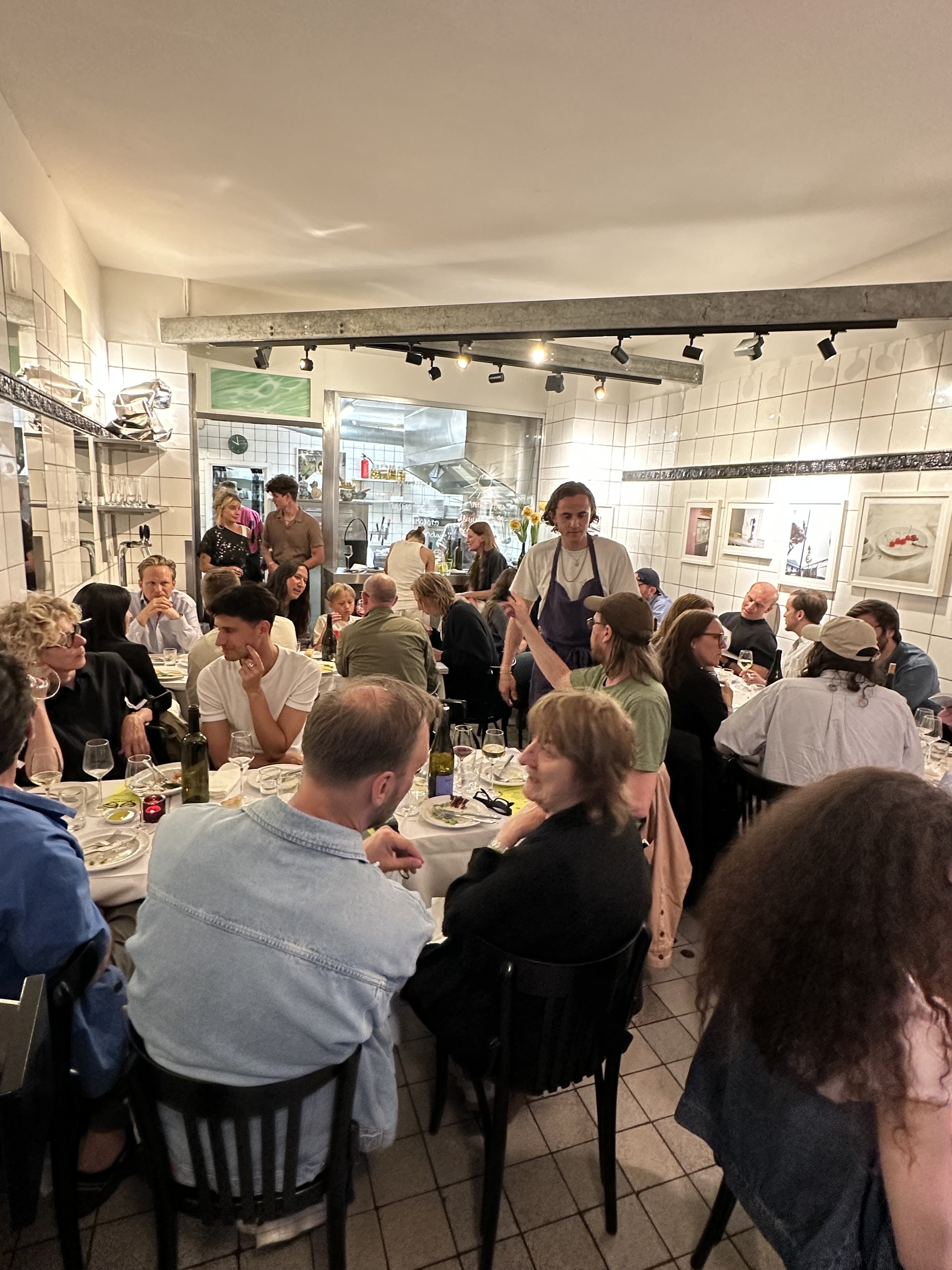
We celebrated the launch of the sixth edition of Swedish design title The New Era at Uno Duo with the magazine’s publisher and creative director of Nordiska Galleriet, Hanna Nova Beatrice, in partnership with Magniberg and NM3. Uno Duo is a chic Italian trattoria through a Danish lens, founded by Martin Gjesing of Moon studio, a Copenhagen-based creative agency. The evening was a riot of Nordic design folk, with Italian wines courtesy of NM3, with excellent arancini, pasta a limone and cannoli. Hugo Macdonald
A reissued gem at VERPAN
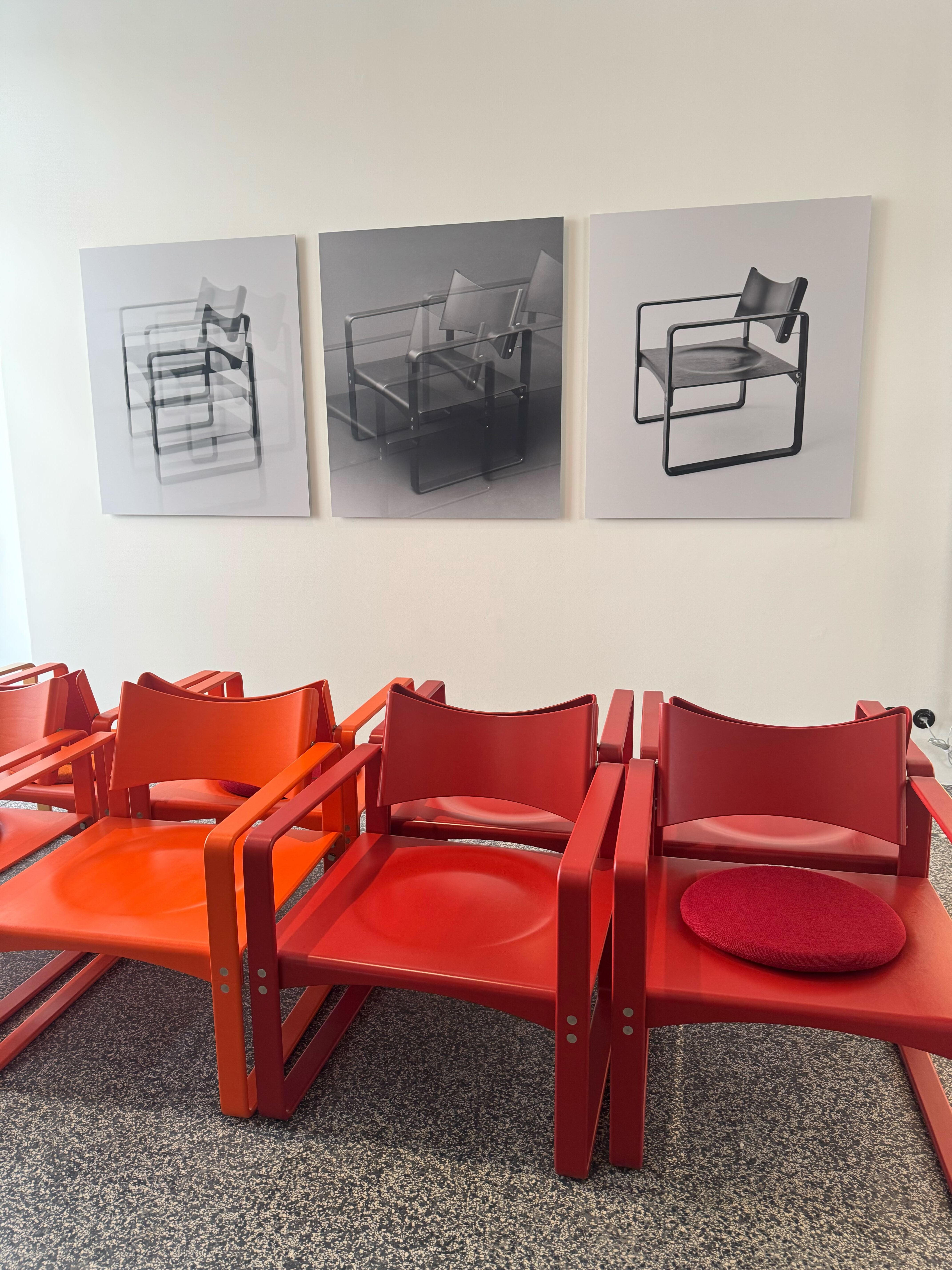
VERPAN, in close collaboration with Verner Panton Design AG, is reintroducing one of Verner Panton’s rare gems: the Series 270 F Armchair. The Series 270 F Armchair is an exploration of modularity and modernism in bent plywood. Originally developed in 1965/66, the light yet structured design offered a fresh take on functionality and form.
The Verpan showroom installation also features the iconic Fun lighting collection crafted from seashell discs, presented in an immersive setting where the seashells gently clinked in the Copenhagen breeze, creating a delicate soundtrack for the exhibition. Olly Mason
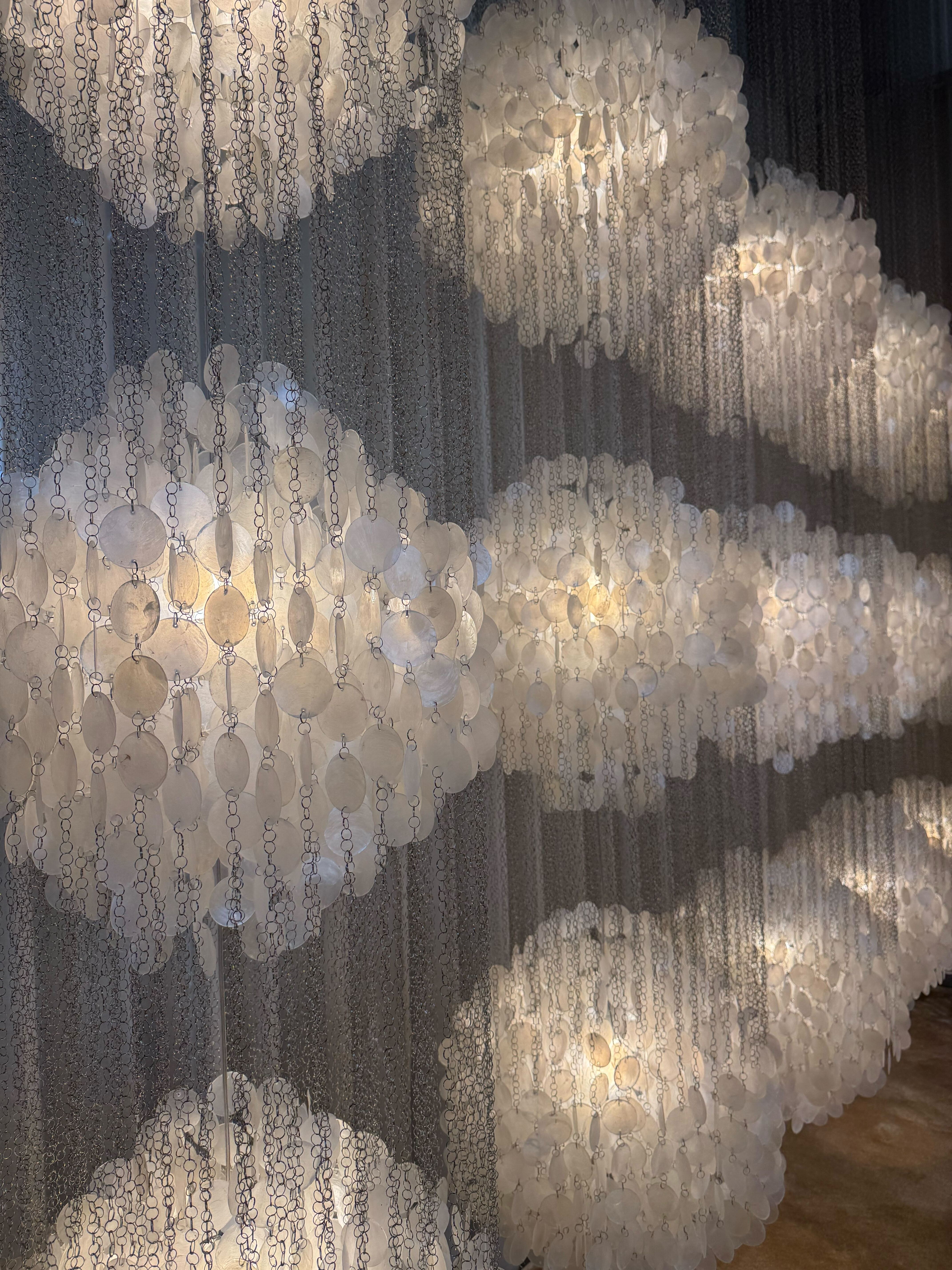
Tableau gallery’s Materia reimagines contemporary design in ancient materials

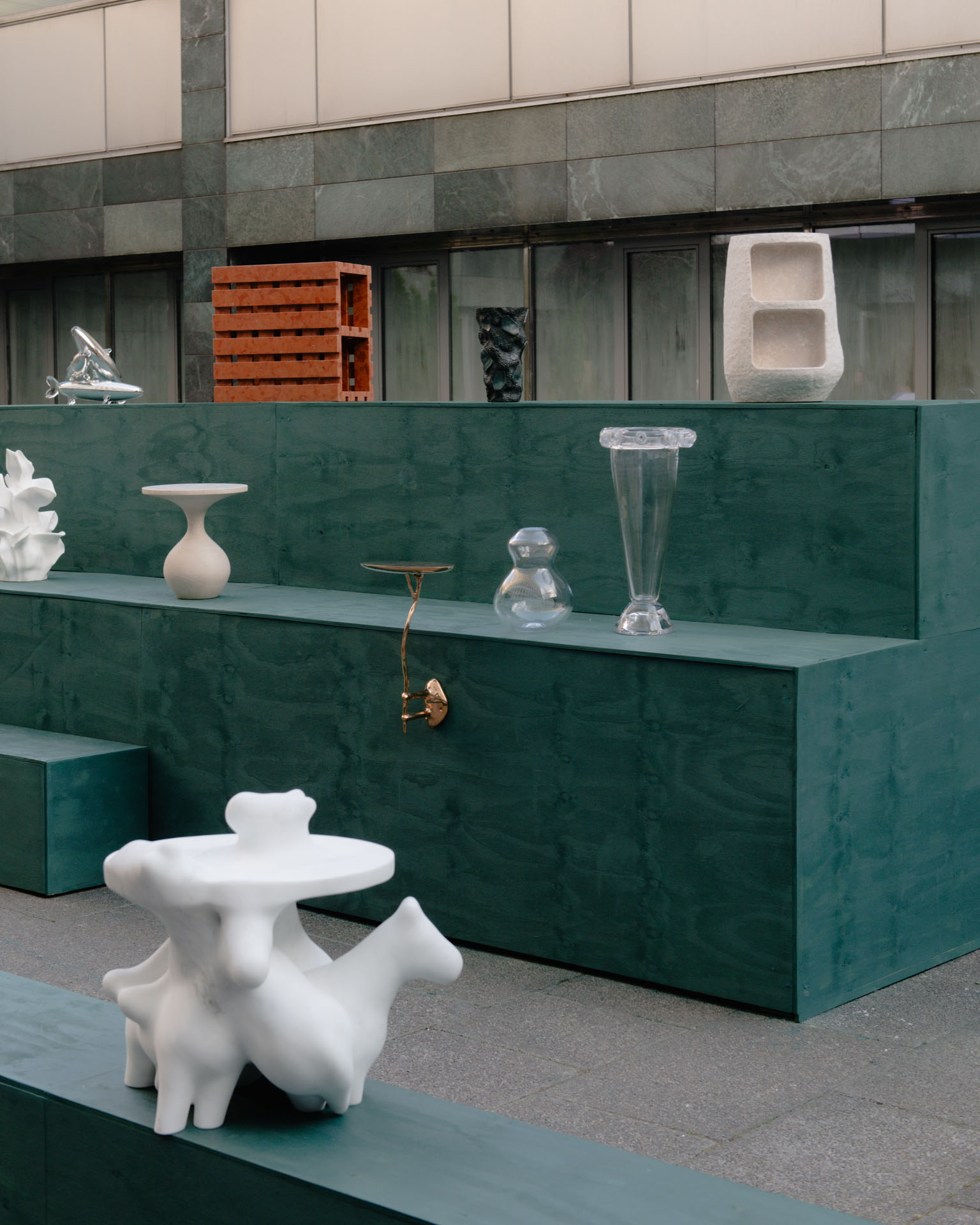
During the medieval age, visionaries and mystics experimented with the art of alchemy to transform mundane materials into precious ones. Lead into gold or herbs into elixirs. Part science, part mysticism, it was an entire discipline concerned with altering one material into another. During 3 Days of Design this year, Copenhagen-based design gallery Tableau, alongside Edition Solenne, staged an exhibition that channelled a strikingly similar concept. Called Materia, the show called on nine contemporary designers to rethink one of their works in an entirely new medium.
‘It’s a celebration of materials and production as an art in and of itself,’ said Tableau founder Julius Værnes Iversen at the opening, which staged the 27 pieces on green-coloured risers in the centre of a sun-dappled courtyard not far from the gallery. ‘We used the oldest materials artists have worked with: bronze, stone and glass.’ The group worked with artisans based in Pietrasanta, Italy, to reinterpret each design using traditional sculptural techniques. ‘It’s where all the masters have produced their work,’ he continued. ‘From Michelangelo to Henry Moore.’
Among the nine were Danish designer Helle Mardahl, known best for her whimsical confection-like glassware in sugary, pastel colours, who remade one of her Bon Bon vessels in giallo siena and milky white Botticino marble. Laurids Gallée, whose graphically rich, folkloric works are usually made in lacquered wood or translucent cast resin, created zoomorphic tables composed of intersecting fish or horses in Bianco Carrara marble and patinated bronze. And Andrés Reisinger plucked his designs – including a vase that resembled curving layers of stacked petals – from the digital realm, rendering them instead in orange-toned bronze. One of 3 Days of Design's most captivating projects, Materia is a celebration of materials and making, not just the finished object, but the transformation itself. Laura May Todd
‘What are you looking at?’ – Timorous Beasties

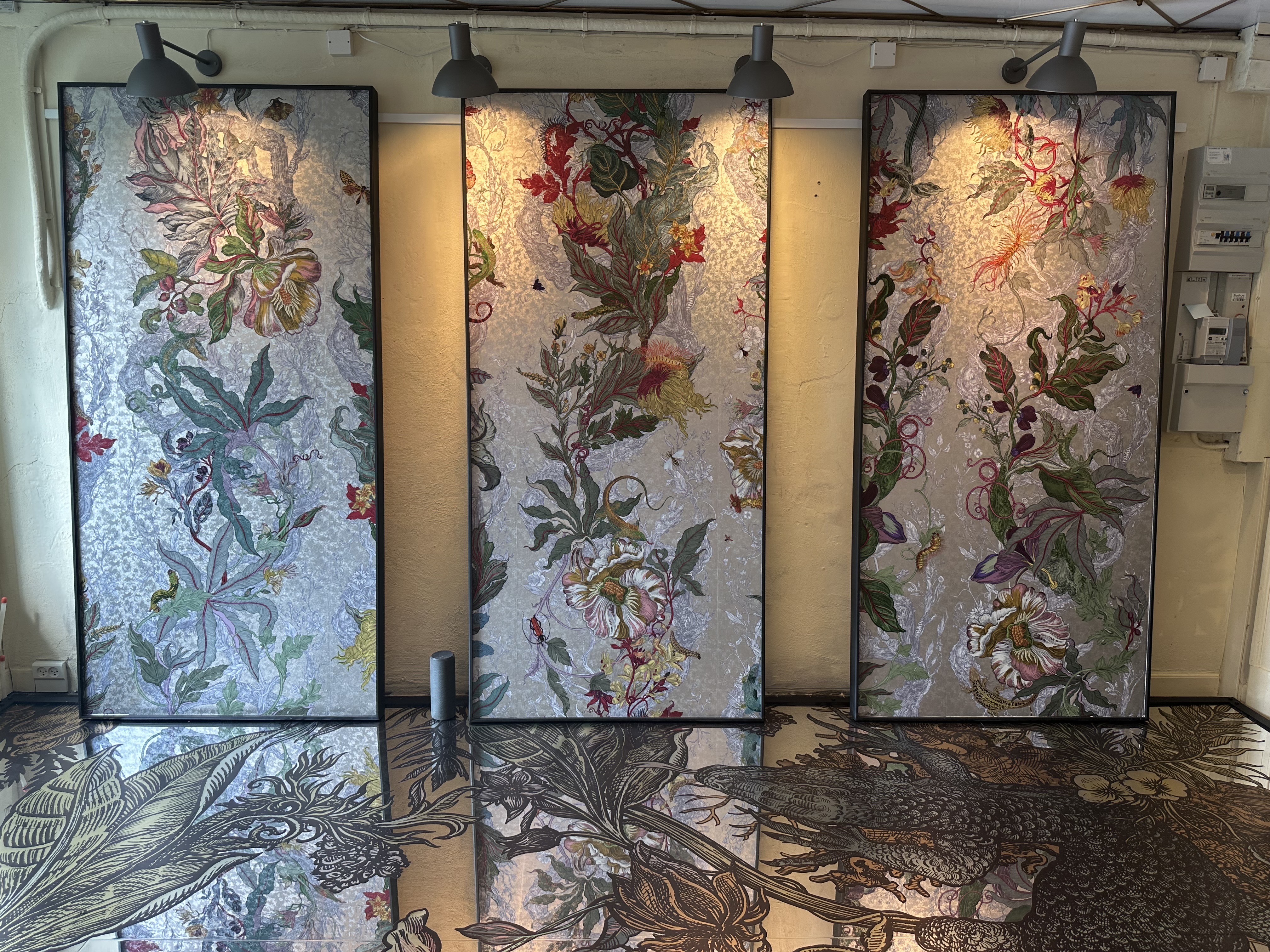

It was shoes off for a mesmerising canal-side display by Glaswegian print designers Timorous Beasties, in collaboration with curator Stacey Hunter of Local Heroes and The Scottish Government. The former fruit and vegetable shop has been adorned with a mirror-finish aluminium floor, onto which Timorous Beasties have printed an exuberant botanical print with lizards. Wall panels display the studio’s new collection ‘Straight out of the Jungle’ on one side. On the other is a fascinating lace curtain – a collaboration between Timorous Beasties and MYB Textiles, an Ayrshire-based weaver of madras and lace, founded in 1900. If the idea of lace curtains brings twitching nosey neighbours to mind, think again – this is something very special indeed. Hugo Macdonald
Other Circle
A new venture at 3 Days of Design has taken over The Lab – a series of industrial studio and production spaces on Vermundsgade. Taking notes from the success of Alcova and Capsule in Milan, Other Circle brings together an intriguing cast of young and mid-weight designers and brands, active in the intersection of design, art, music, food and fashion. There was a lot to take in here – moments of magic, interspersed with a casualness that at times felt like a graduation show (for better and worse). There is no doubt this inter-cultural, programmed type of show is the way forward, bringing engagement and life to the dusty old design exhibitions of yore. Here were some of our highlights… Hugo Macdonald

Balls Tables by House of Bolon
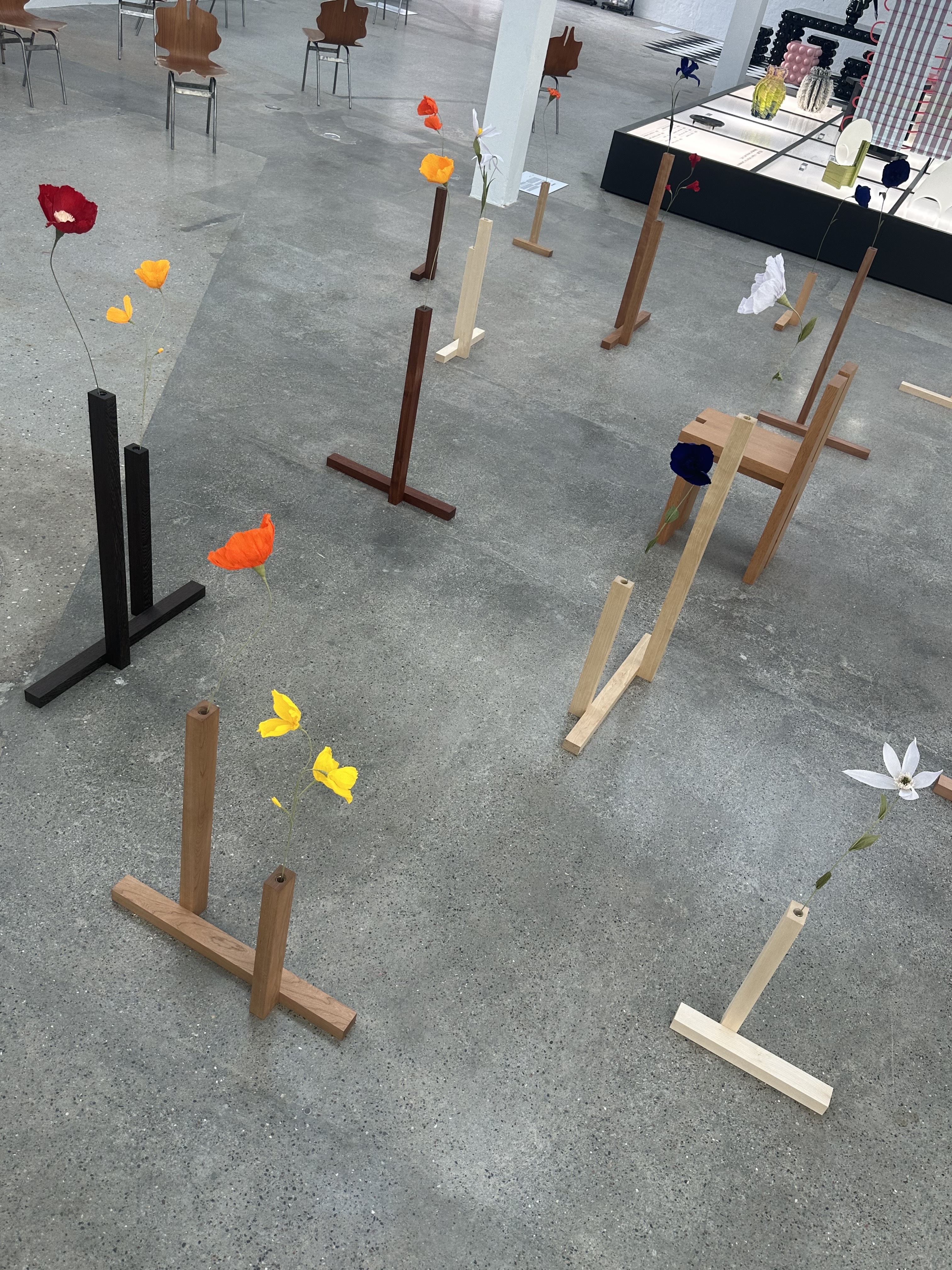
Mixed Grill by Nick Ross, made from thin strips of wood, trimmed away from raw boards used during the making of Nick’s Primitive Arrangements chairs shown during Salone. They were filled with handmade paper flowers.
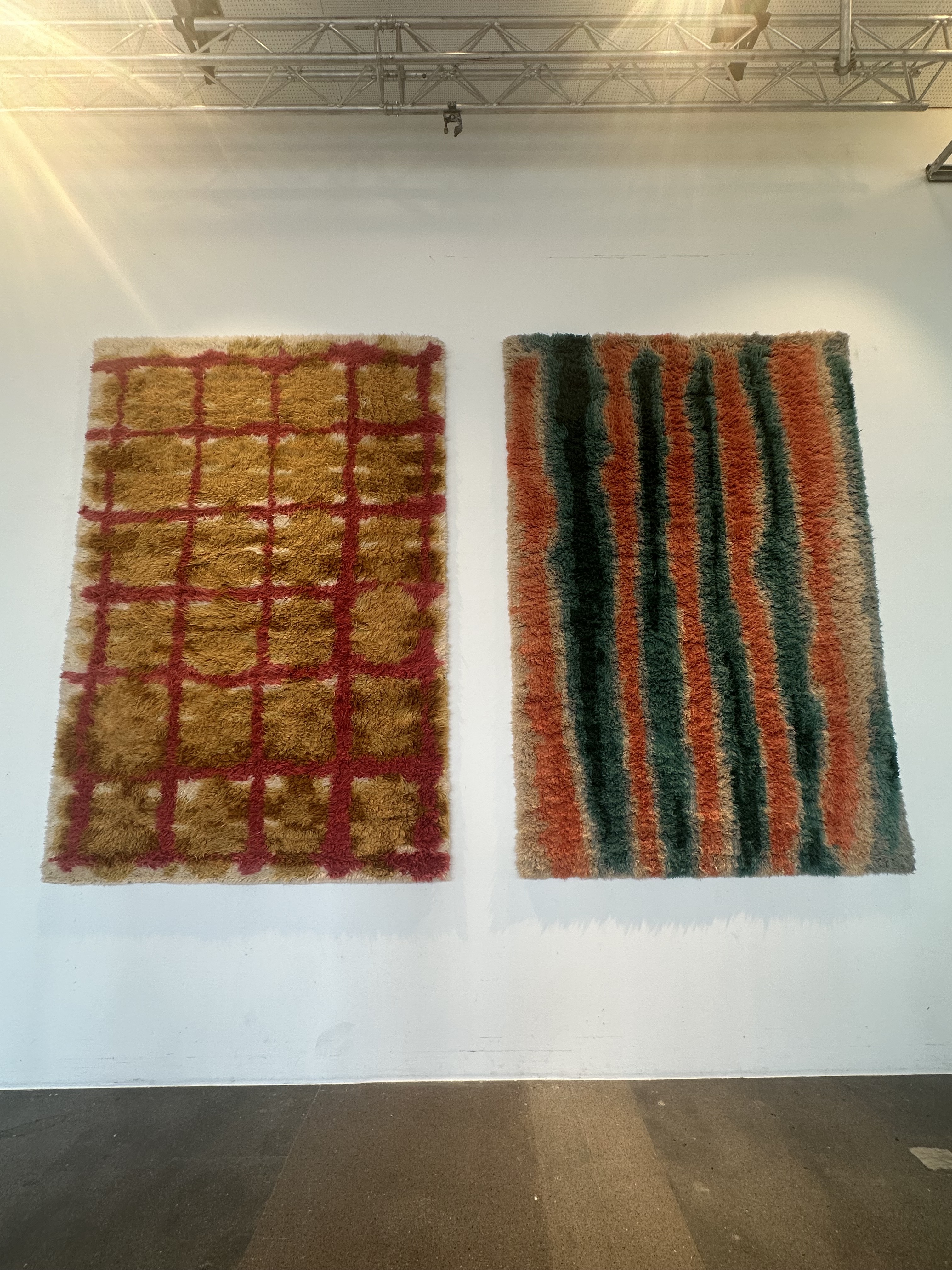
cc-Tapis x Rop van Mierlo – ‘Grandma Patterns’ rugs
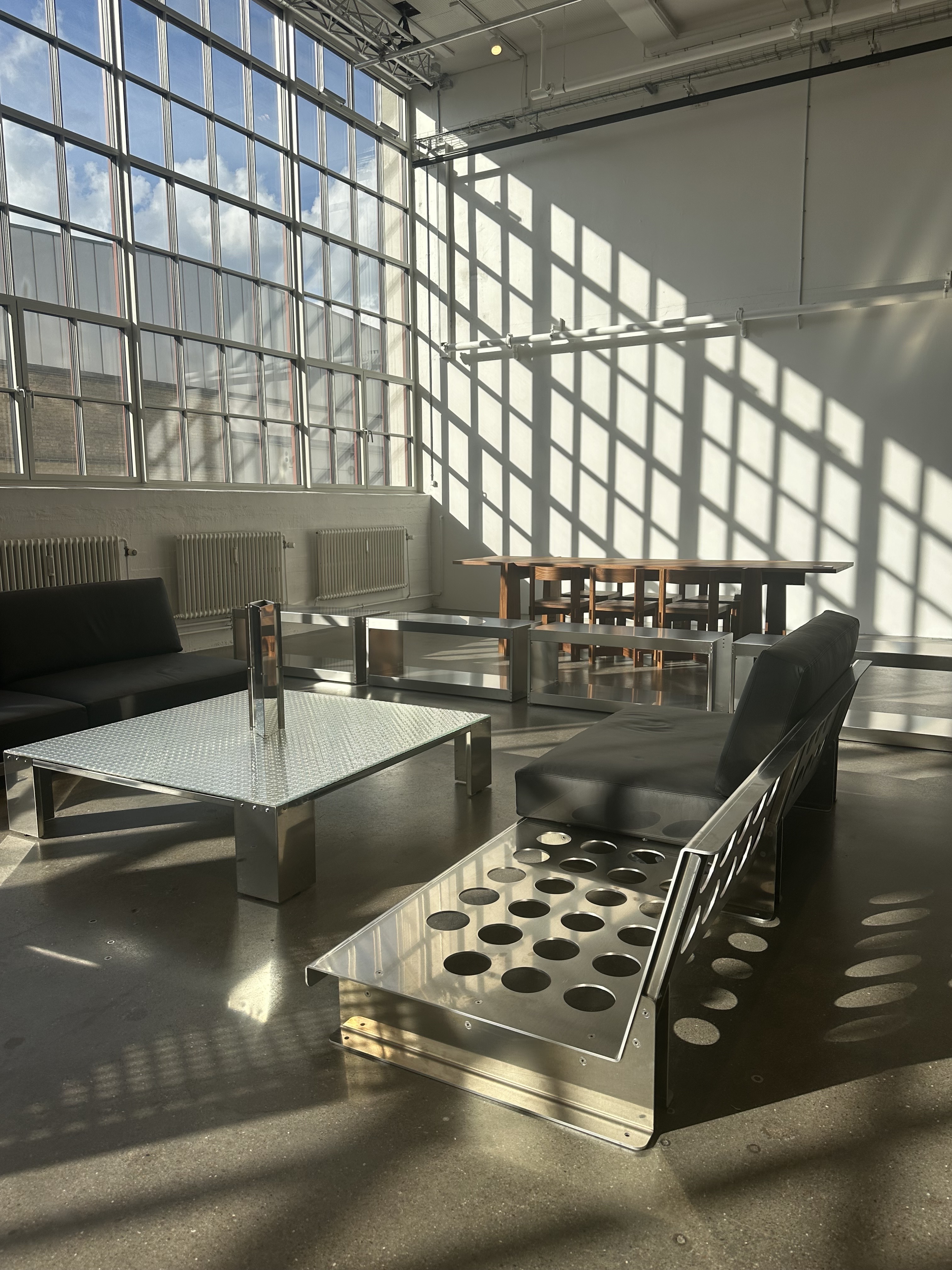
Furniture by NM3 – the Milan renegades win best caption competition: ‘The set-up has no story, no scenography; we don’t speculate with scenography, we show the product and only that, without any kind of storytelling’. Enough said! Let the light do the rest.

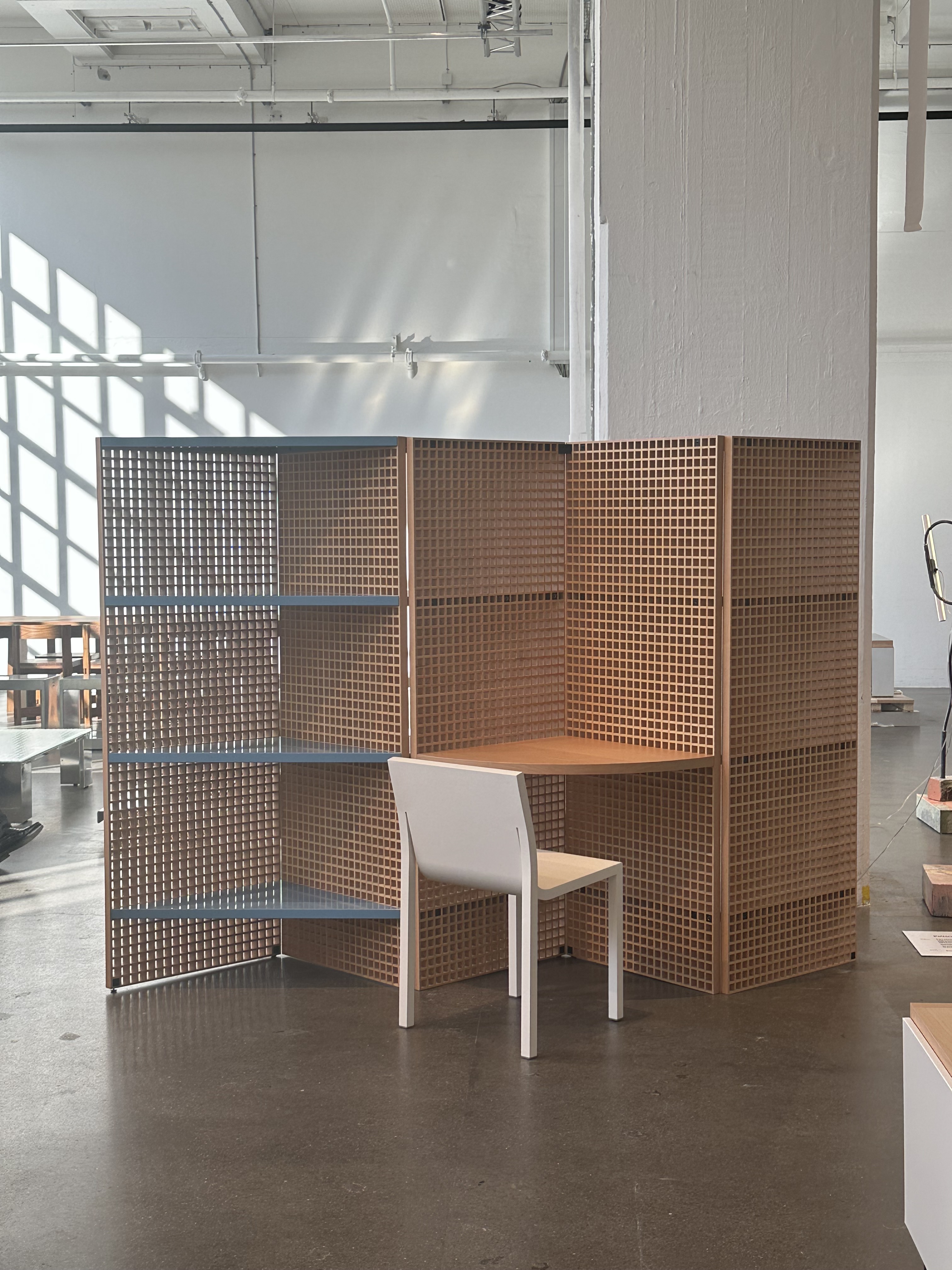
Muller van Severen + Office KGDVS + BD Barcelona – the Rasters collection is a glorious collection of paravents and cabinets made using solid beech, beech-veneered MDF and powder-coated steel.
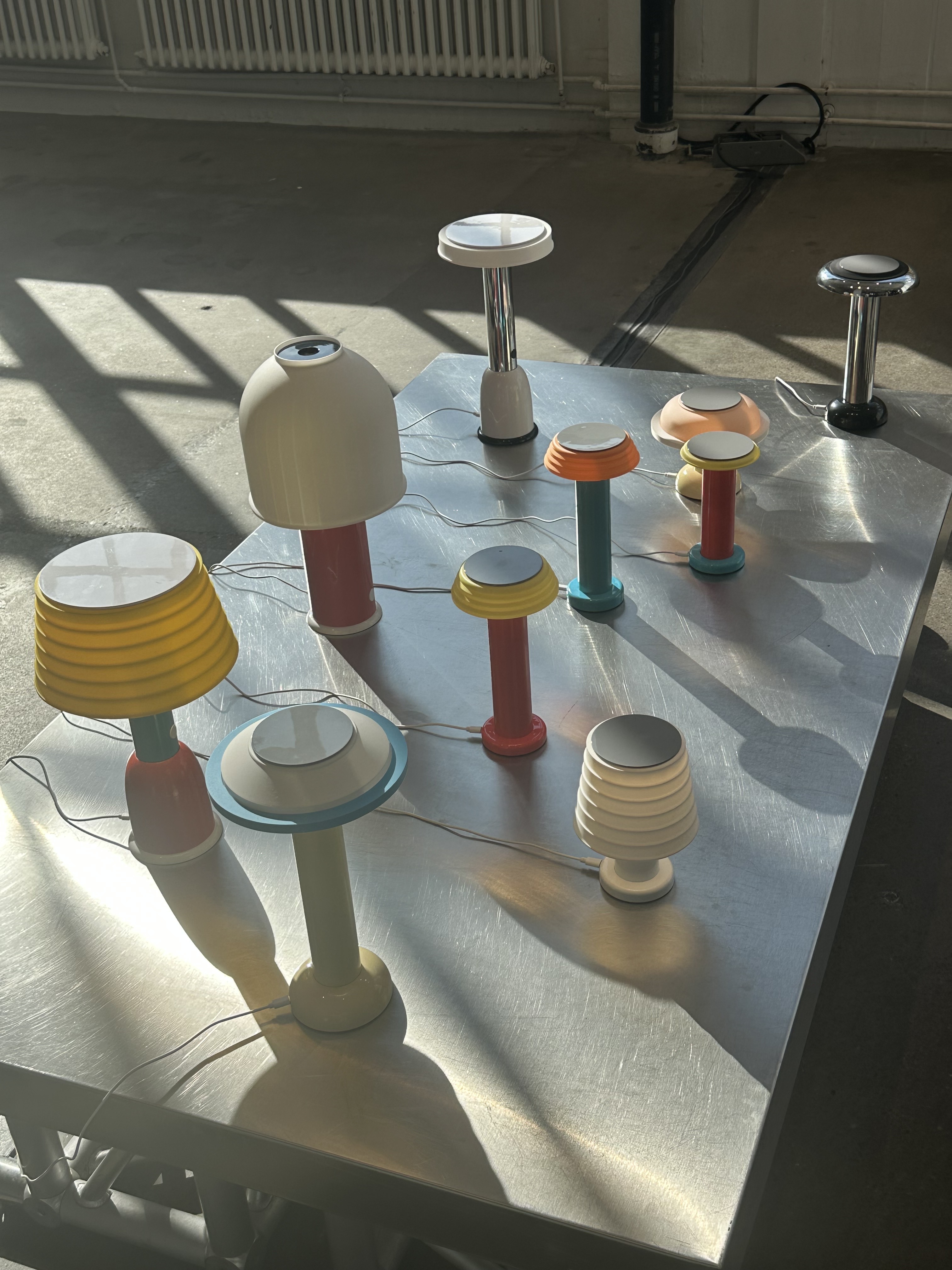

Dual Functionality lighting by Sowden. Jolly, clever descendants of Memphis that connect to a USB and contain a battery so they are portable.
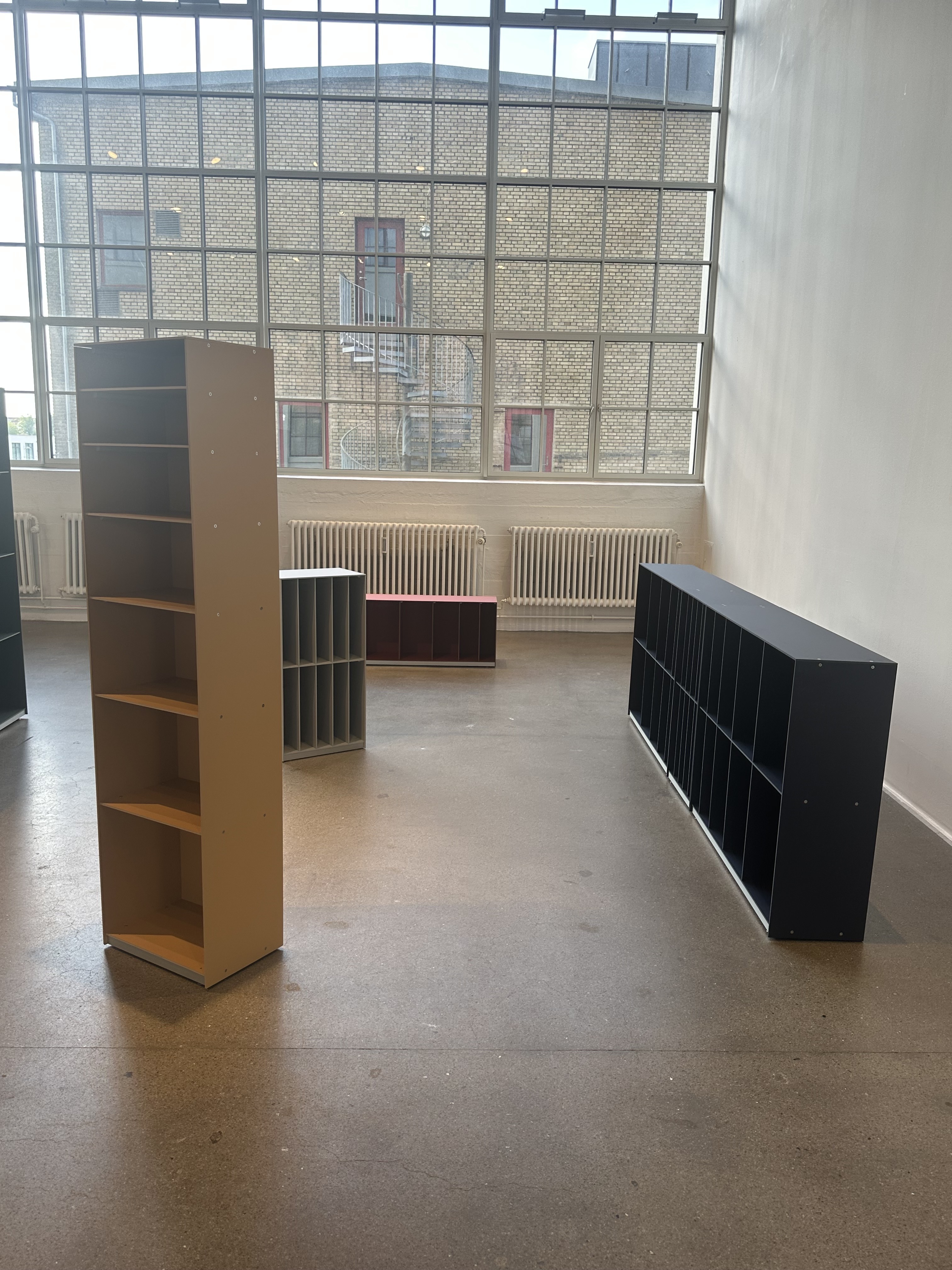

Snohetta + BD Barcelona – Sequence system. ‘More than a shelving solution,’ reads the text, ‘Sequence is a spatial narrative, shaped by variation, progression and momentum.’ No less.
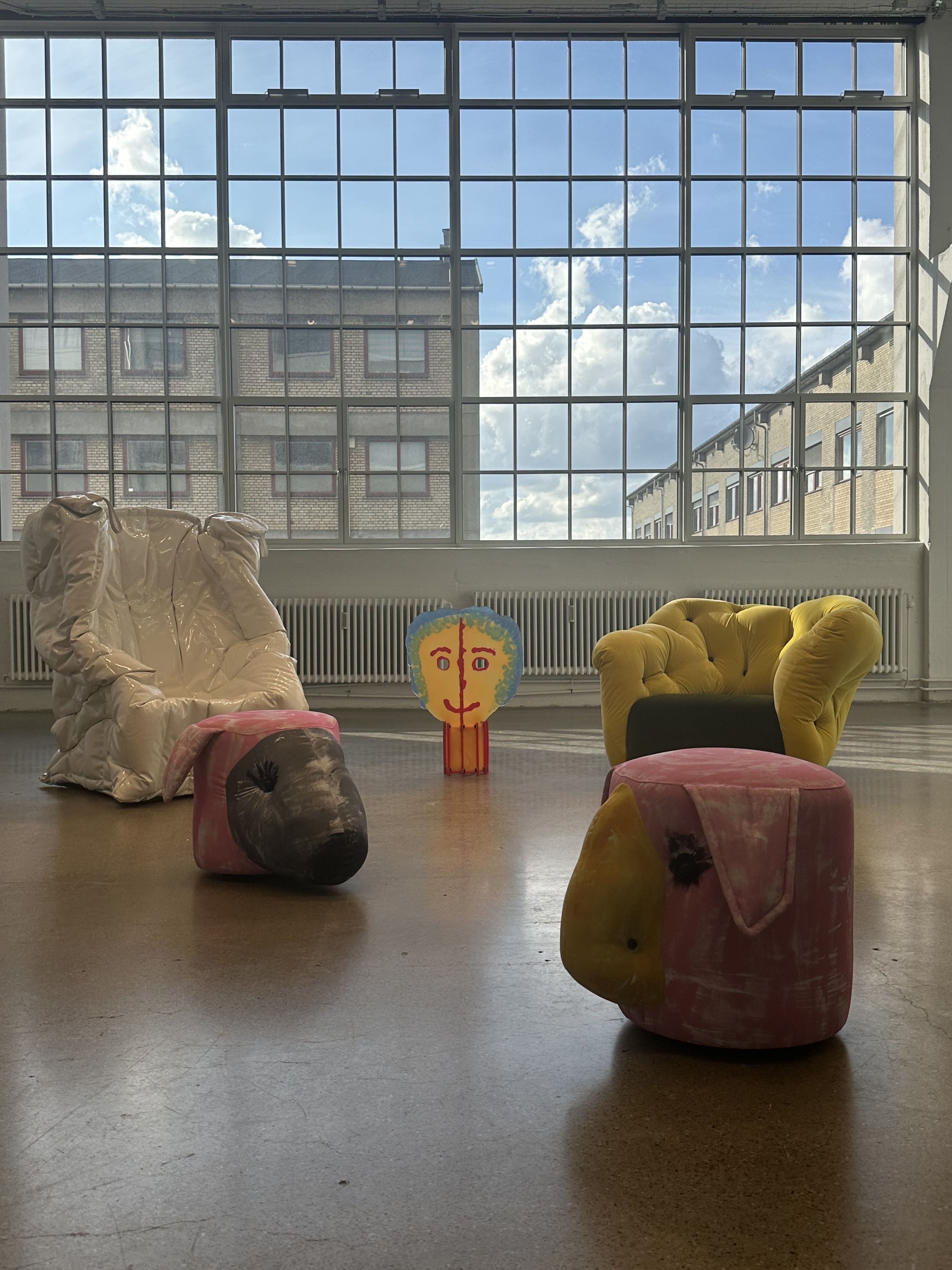
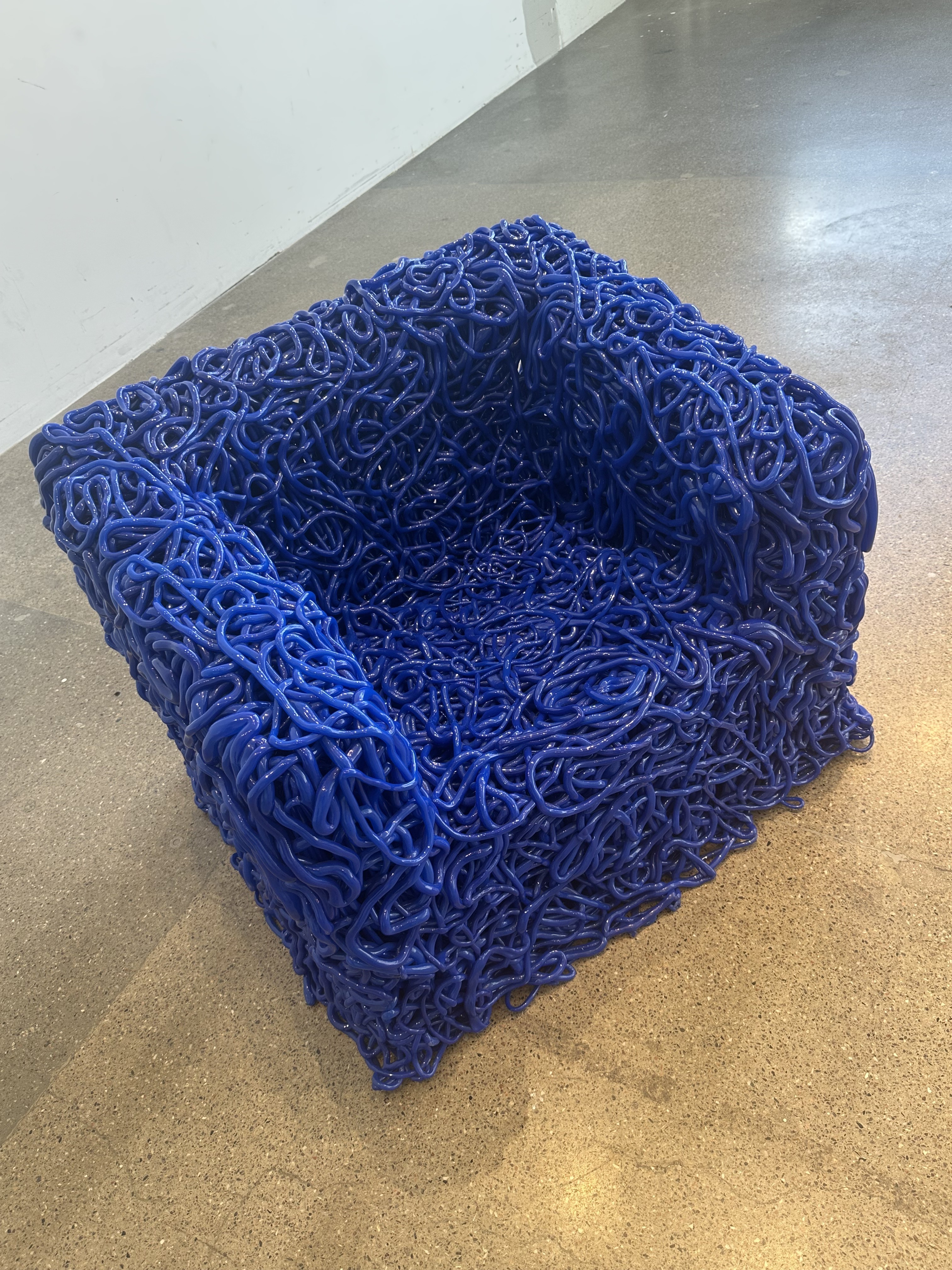
A wonderful group of the late genius Gaetano Pesce’s furniture for Meritalia
Staging by Michele Lamy and Oliver Gustav

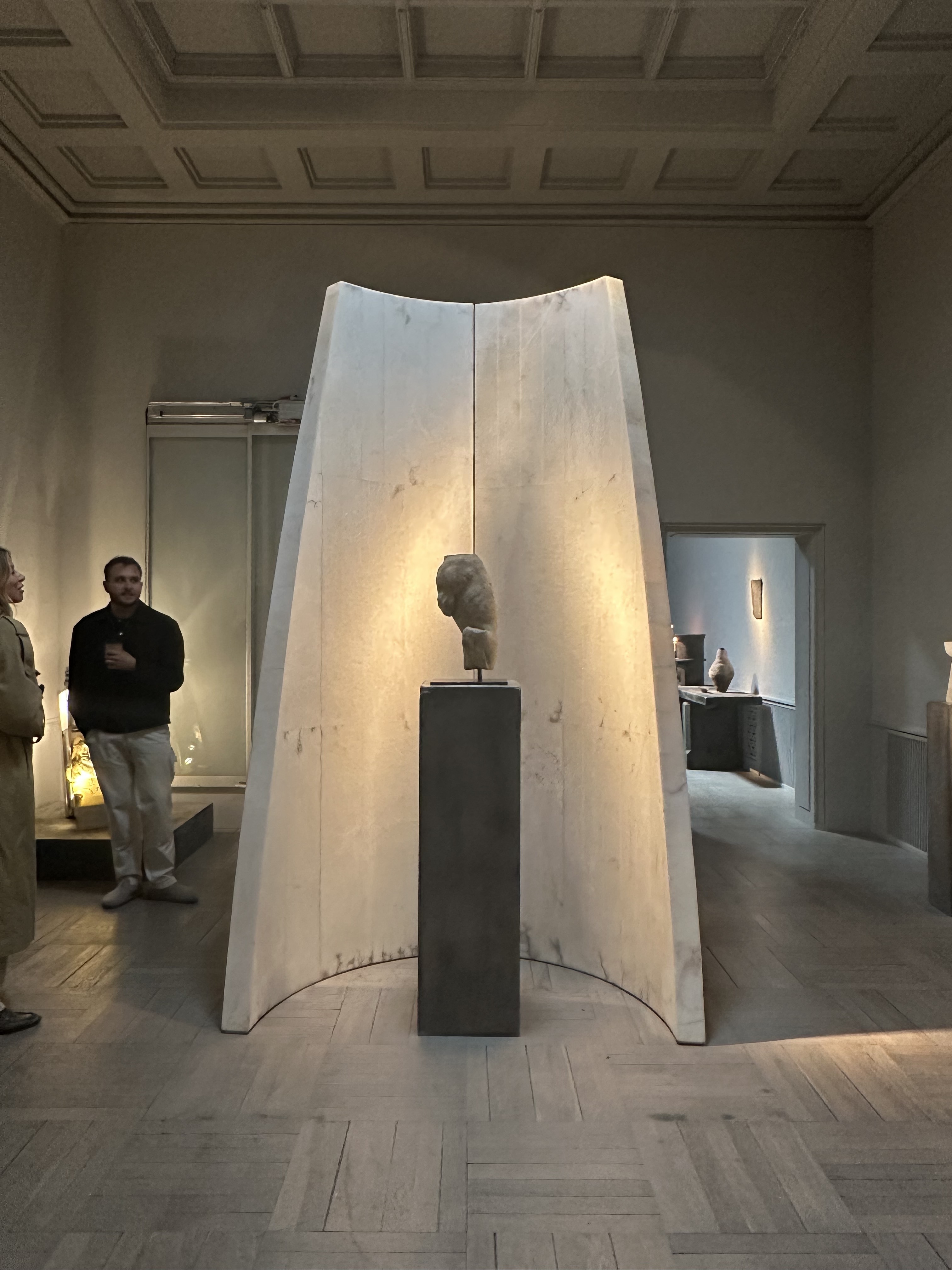
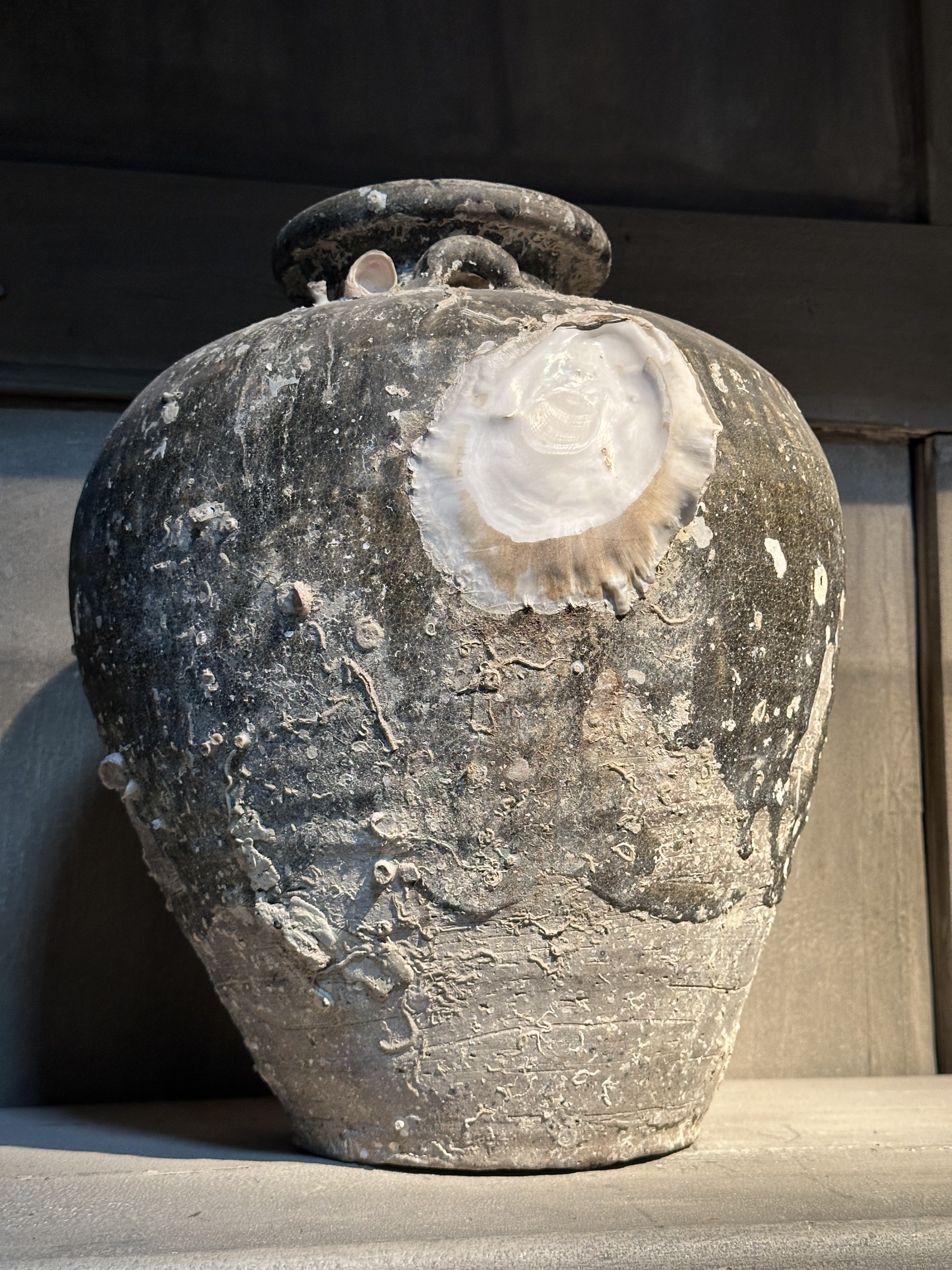


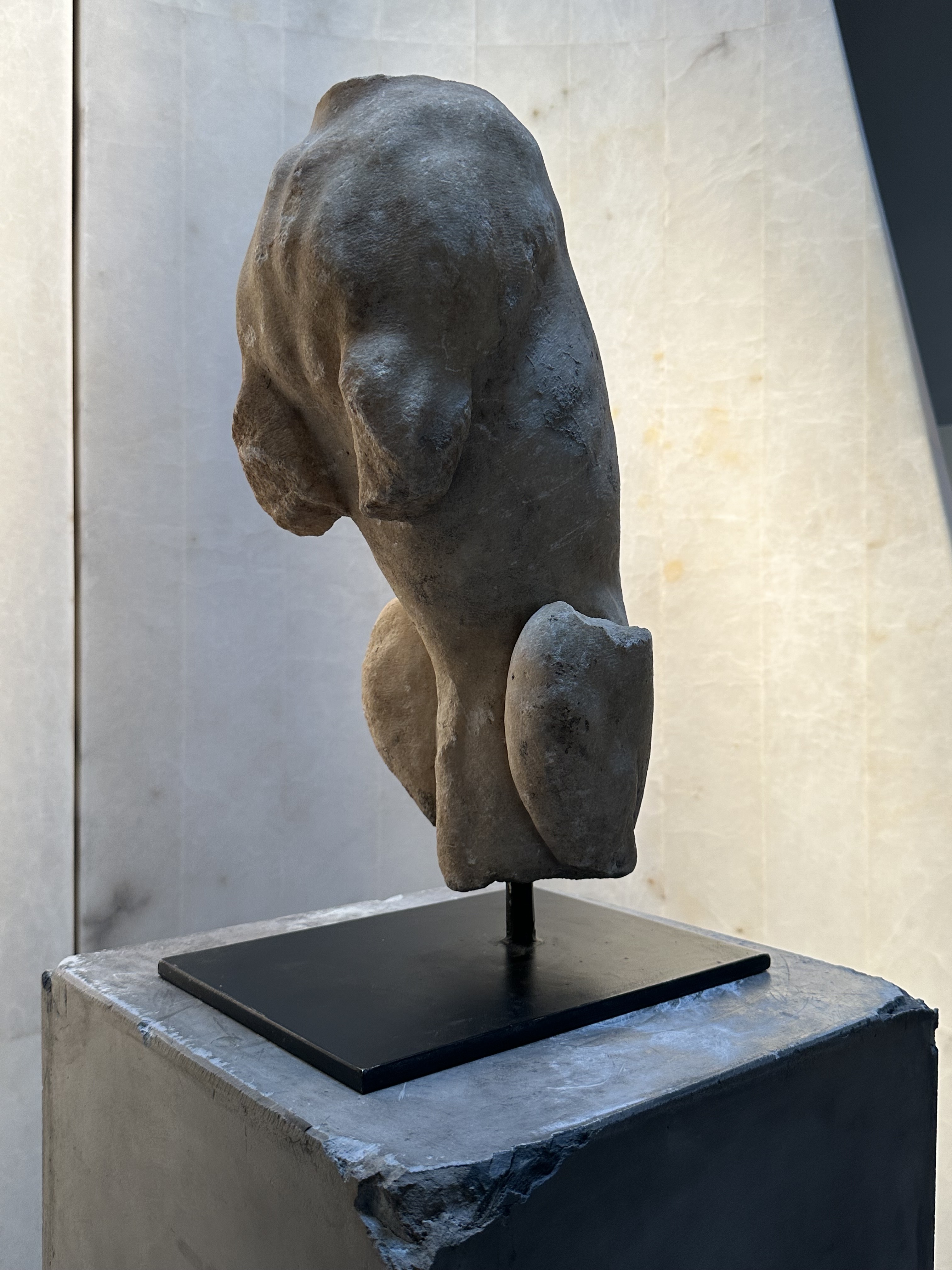

The soothing serenity of Oliver Gustav’s 1920’s studio is a much-needed breath of fresh air. The curator has collaborated with the inimitable force that is Michele Lamy for a staging of sculptural works by (amongst others)Lamy’s husband Rick Owens and their daughter Scarlett Rouge. Various masterpieces of extraordinary material expression sit in amongst Gustav’s own collections, including some breath-taking antiquities. Gustav’s spaces are an exercise in sensory saturation. ‘Letting people in here is like letting them into my heart,’ Gustav said, which we wholeheartedly understand. It is a deeply moving creative endeavour that he inhabits wholly. We emerged blinking into the daylight feeling as if we’d woken from a dream. Hugo Macdonald
Tadaima
‘Past Forward’, a curated exhibition by Tadaima for 3 Days of Design 2025, explores the dialogue between tradition and modernity. Set in a light-filled 550 sqm venue in Frederiksstaden, the exhibition brings together furniture, lighting, textiles, and art shaped by heritage and contemporary craftsmanship – where function meets form, and small-scale makers stand alongside established names. Sculptural and functional, minimal and expressive, Past Forward reflects on how design evolves over time.
The exhibition includes silverware by Zanetto, rugs by Nanimarquina, and tableware by Jiseungmin Ceramics, among others. Olly Mason
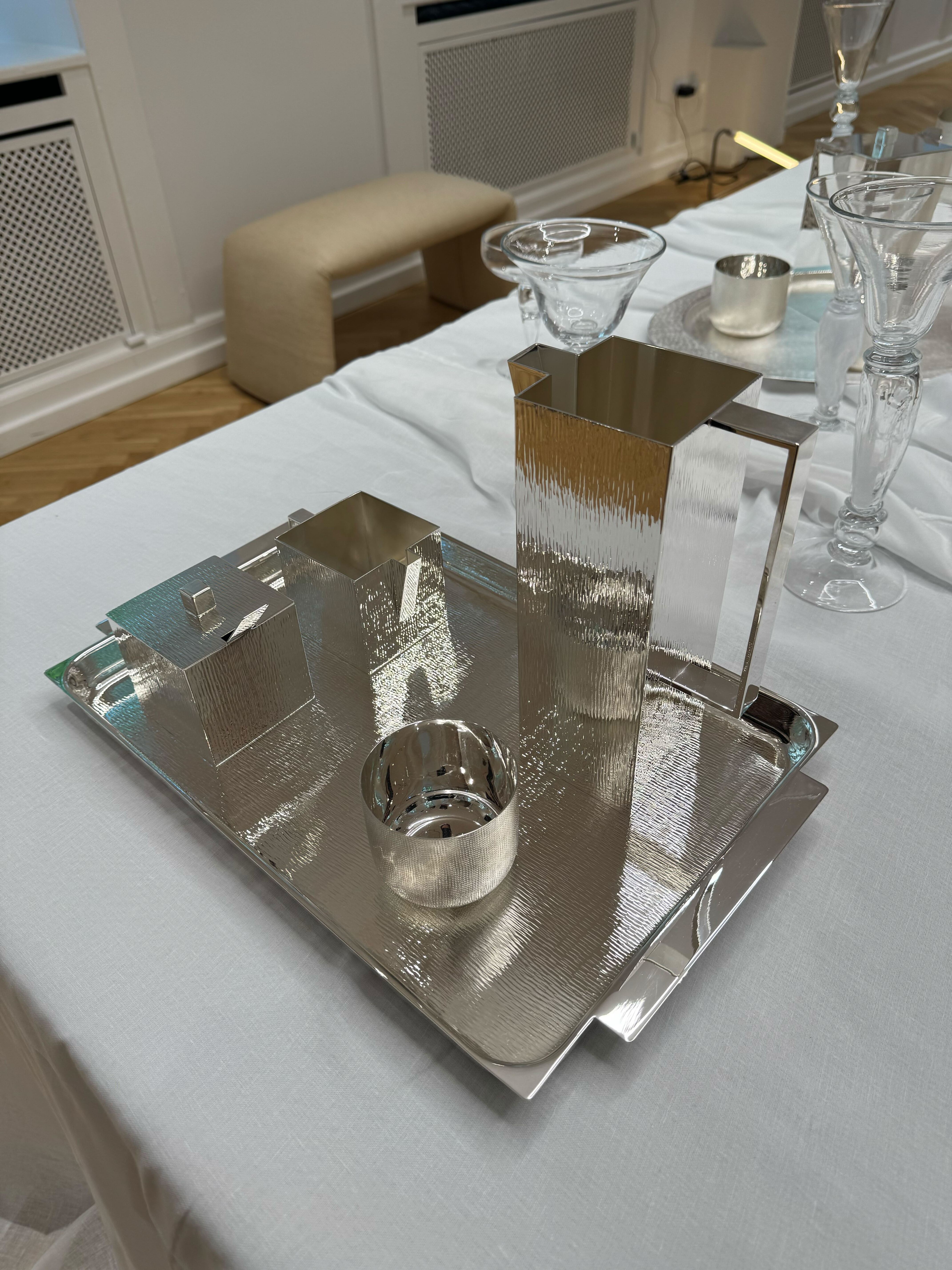
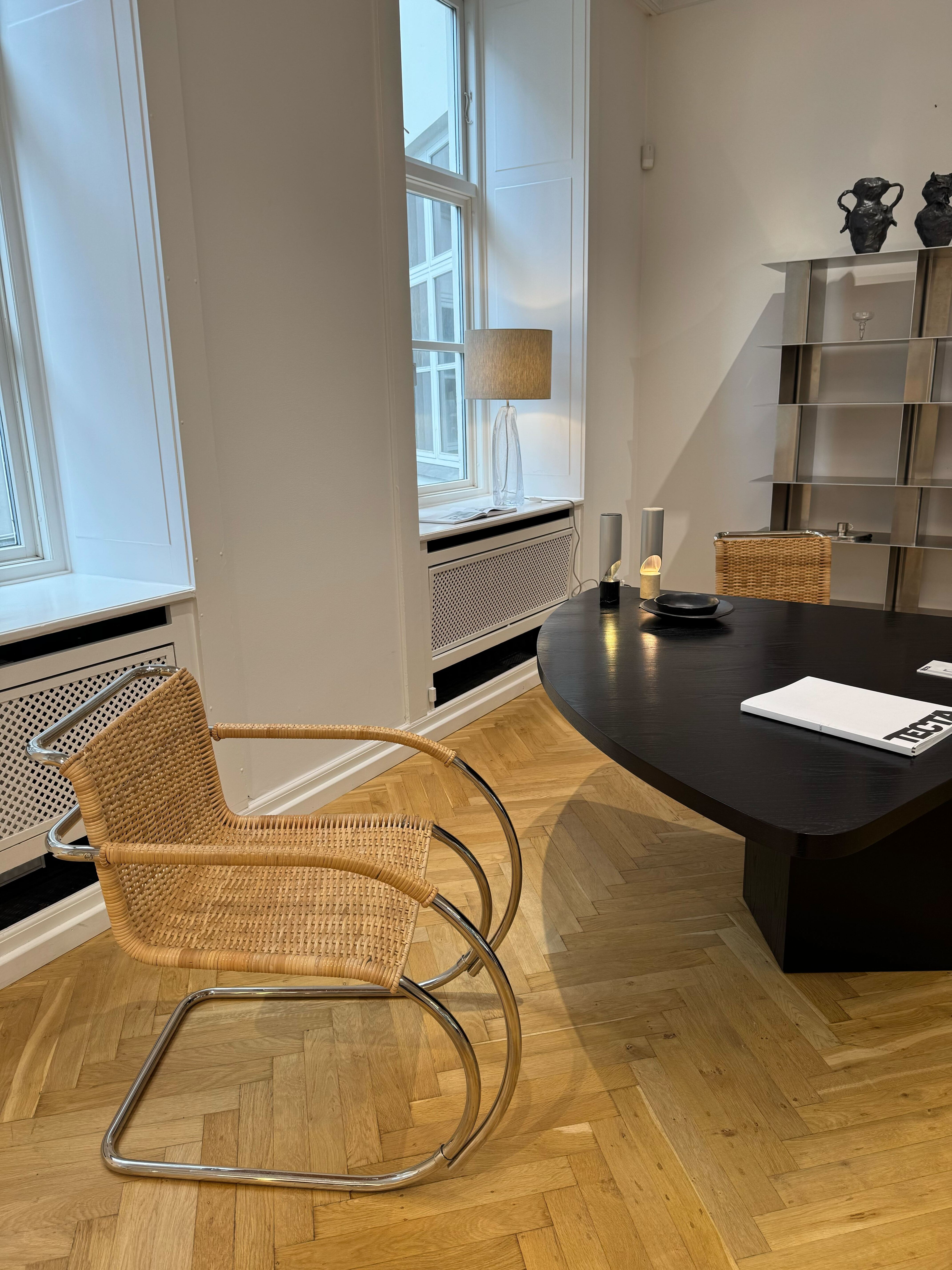



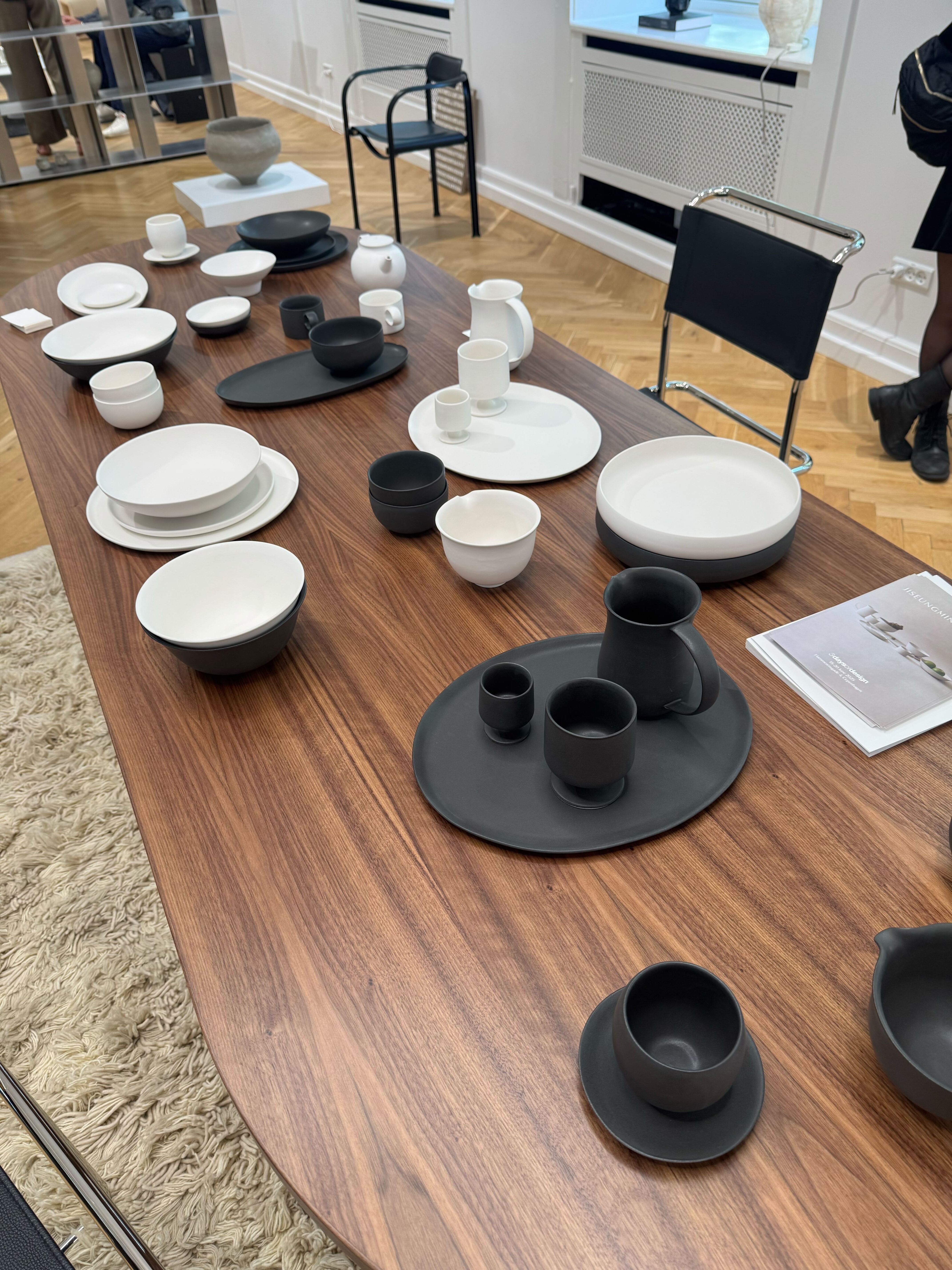
Hem
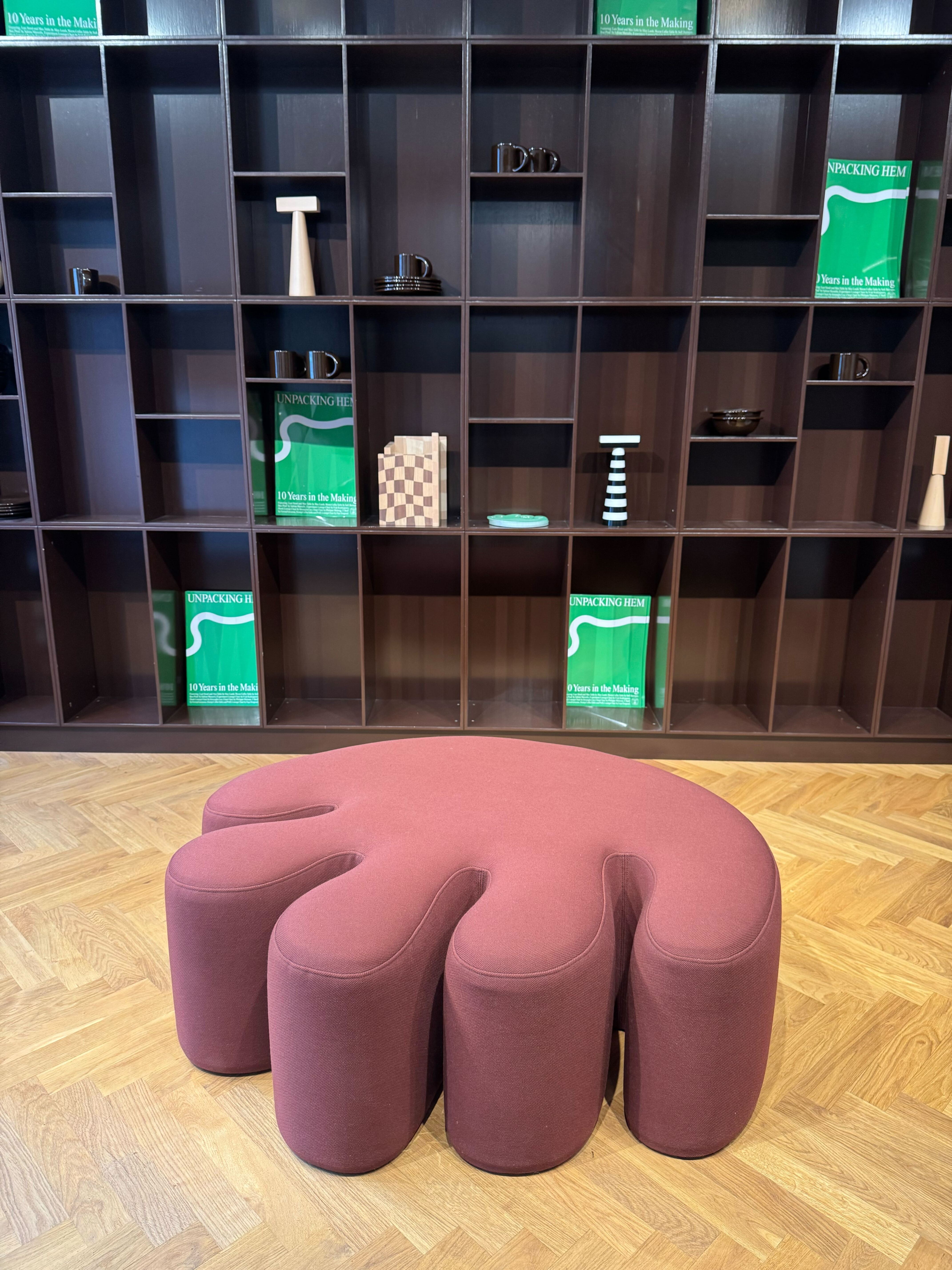
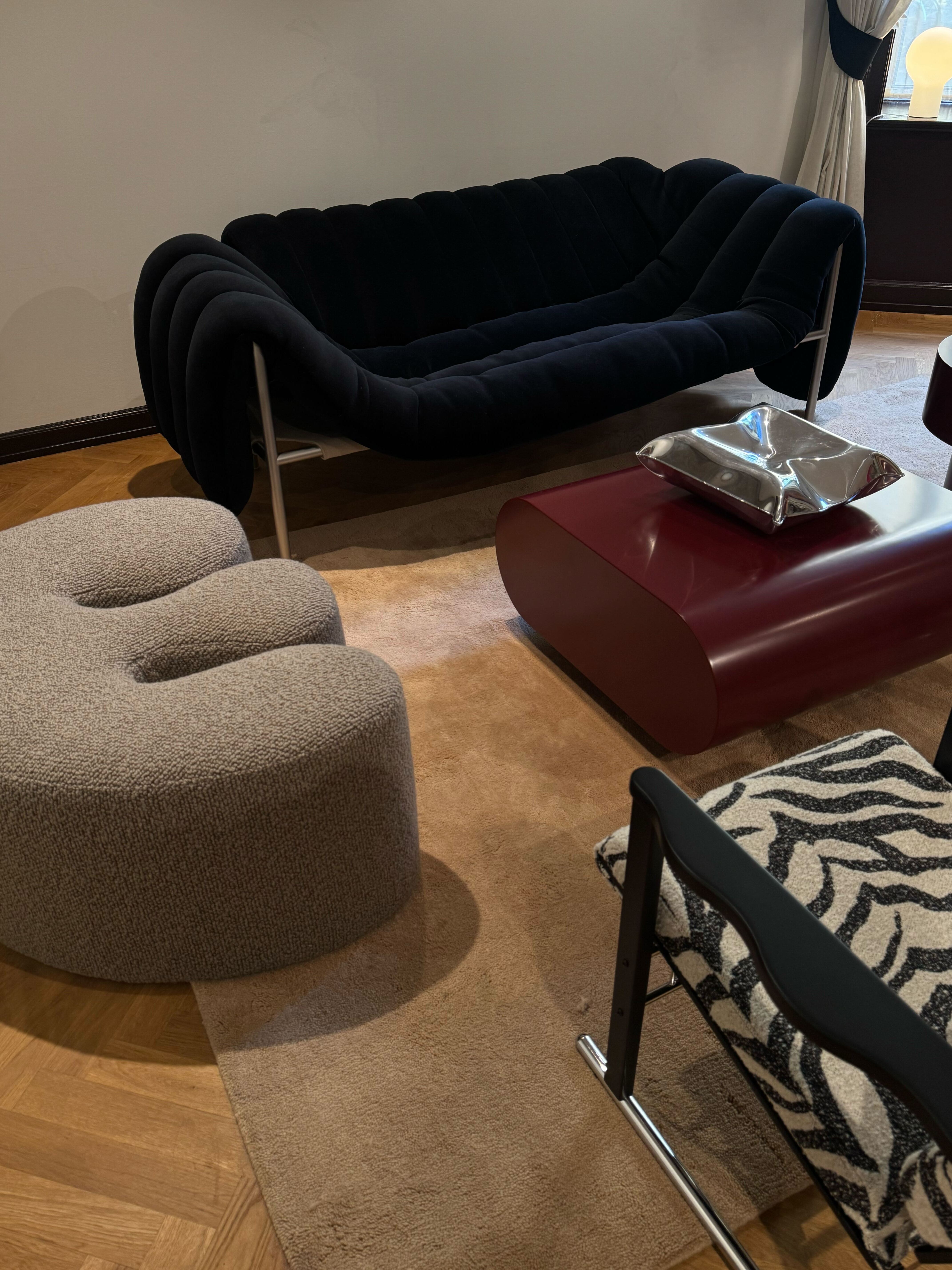
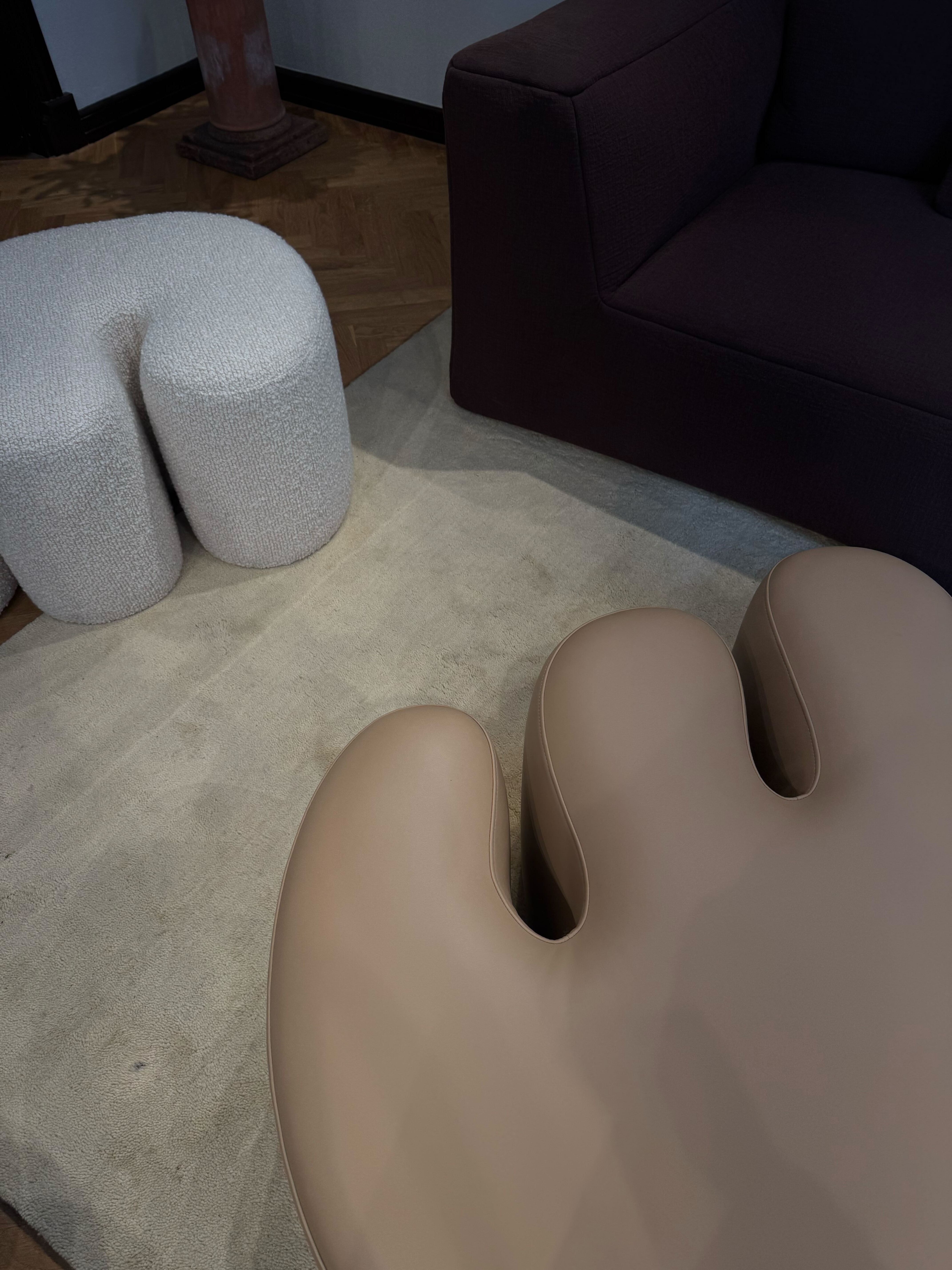
We visited the ‘Unpacking Hem’ exhibition, which has been 10 years in the making. To celebrate a decade of operation, the furniture brand has launched the Palma Pouf by London-based designer Kusheda Mensah. Olly Mason
A conversation with Project Materia
We stopped by Project Materia @project.materia, an exhibition concept by @tableau_cph and @editionsolenne, which invited a roster of artists and designers - including @reisingerandres, @laurids.gallee, @louiseroecph amongst others - to produce work in bronze, marble and glass. We spoke to its curator @julius_v_iversen, creative director of Tableau, who said that the exhibition is not just a showcase of ‘functional art and collectible design’ - but a showcase of material research. Sebastian Jordahn
A post shared by Wallpaper* (@wallpapermag)
A photo posted by on
Time & Style at Design / Dialogue

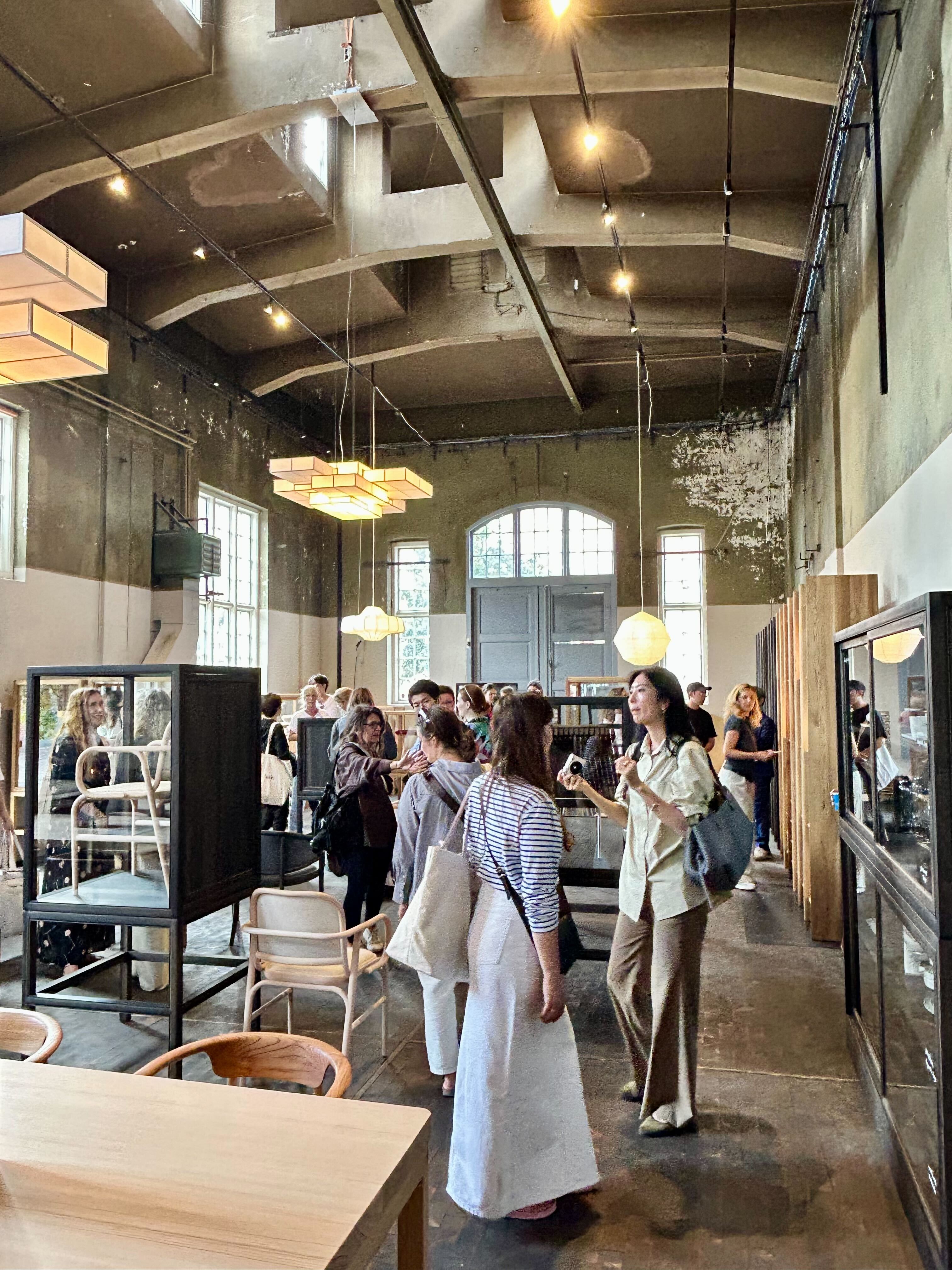
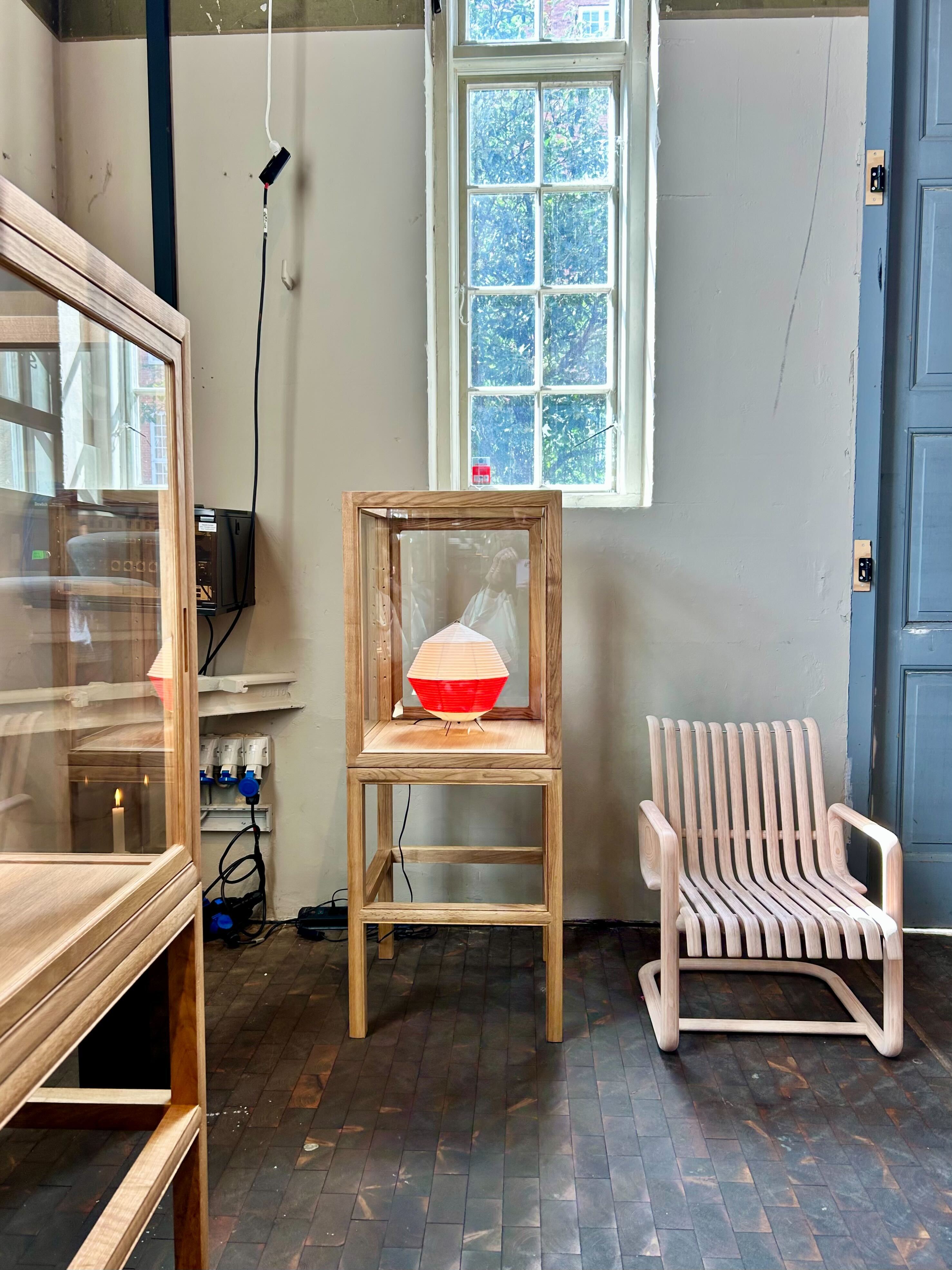
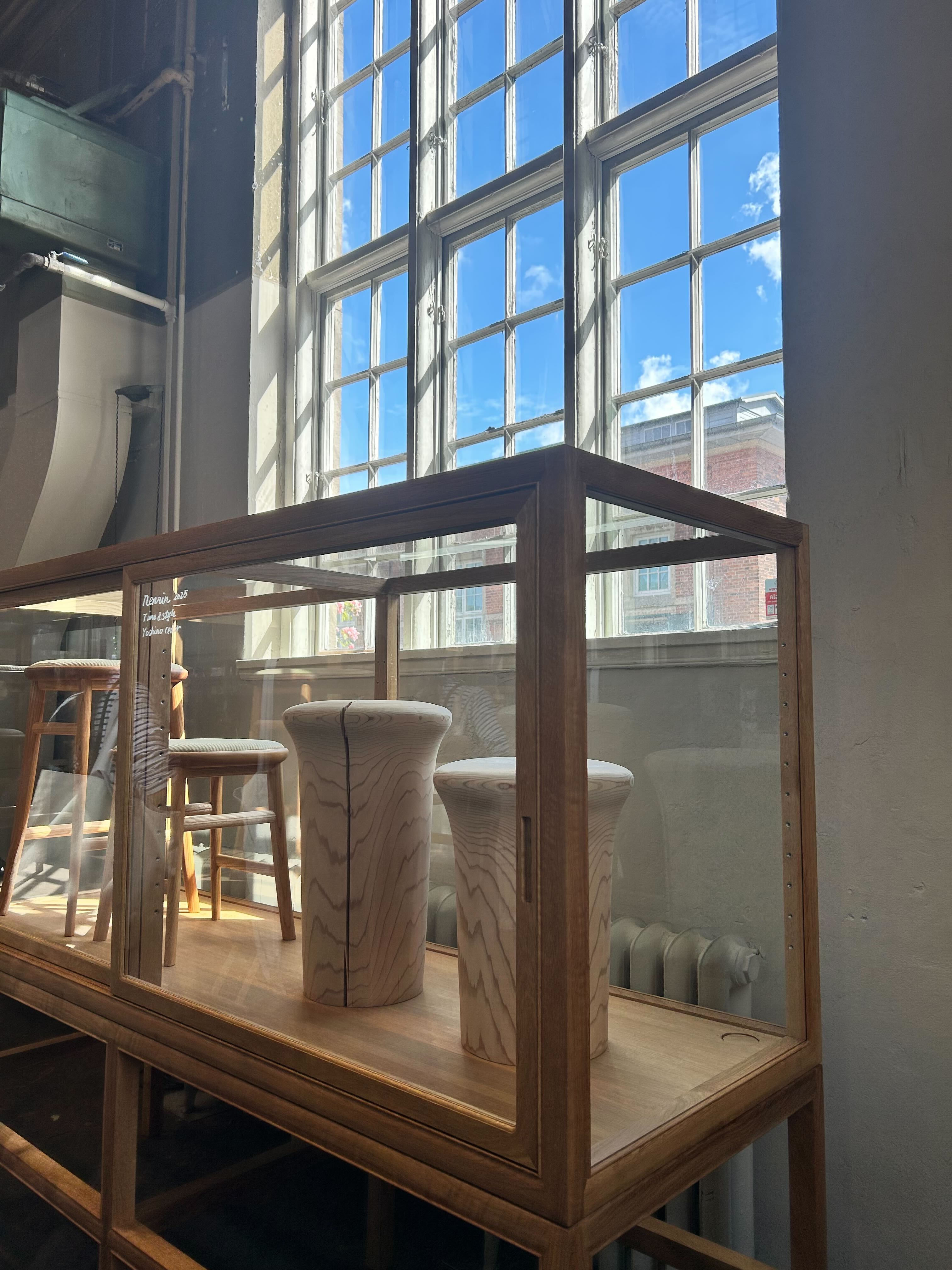
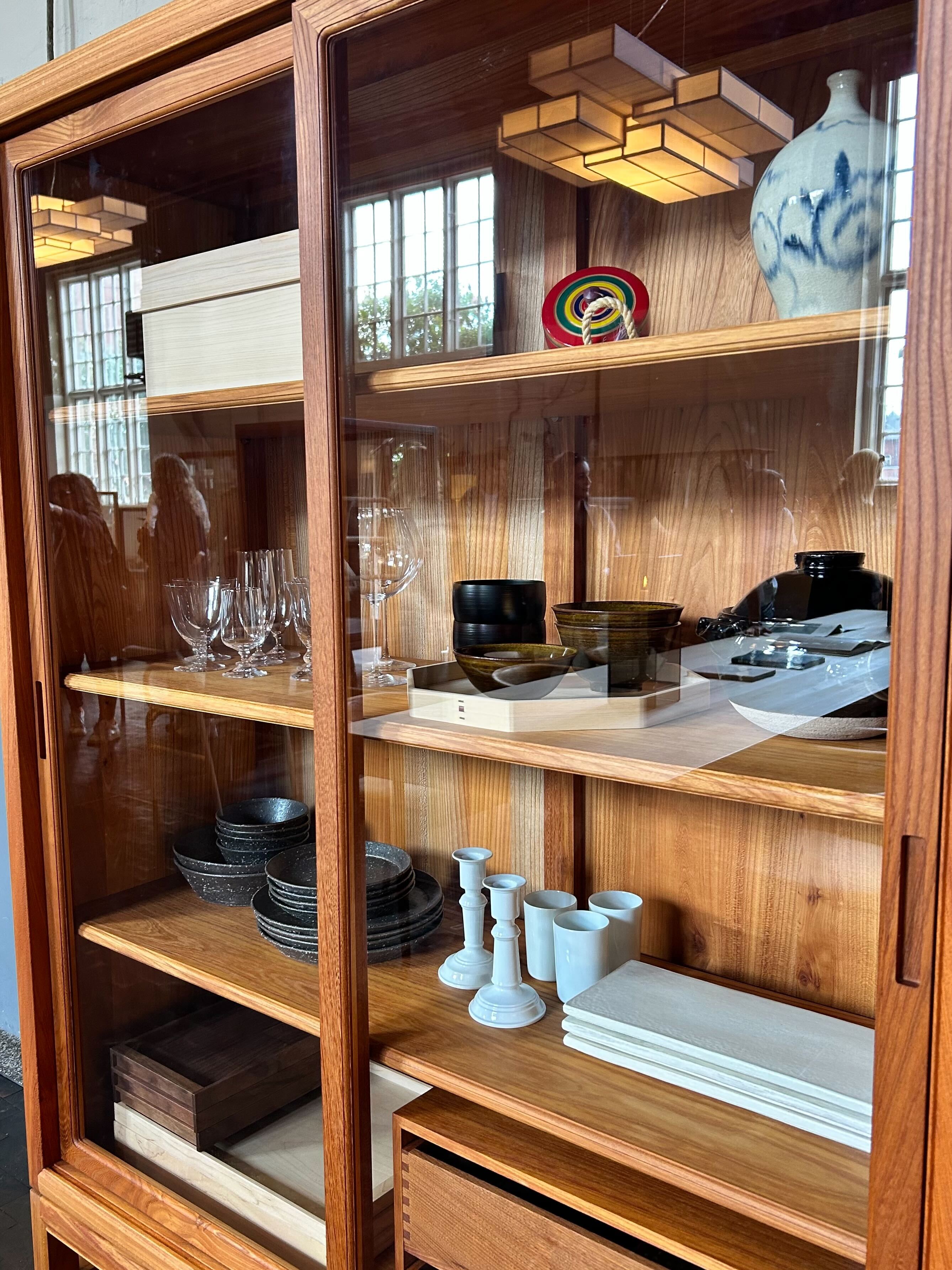

We entered Time & Style’s 3 Days of Design showcase through a heavenly scented canopy of roses trailing around the doorway of the former power station, Pakhus 11. Inside, beneath a double-height vaulted ceiling and surrounded by faded tiles and an endblock floor, the Japanese brand’s furniture – including pieces by Claesson Koivisto Rune and OEO Studio – is displayed like museum pieces in elegant glass vitrines. The presentation, which fuses Japanese and Danish design sensibilities, forms part of 'Design / Dialogue', a showcase curated by Ark Journal. Ali Morris
An homage to the Glass House by BassamFellows
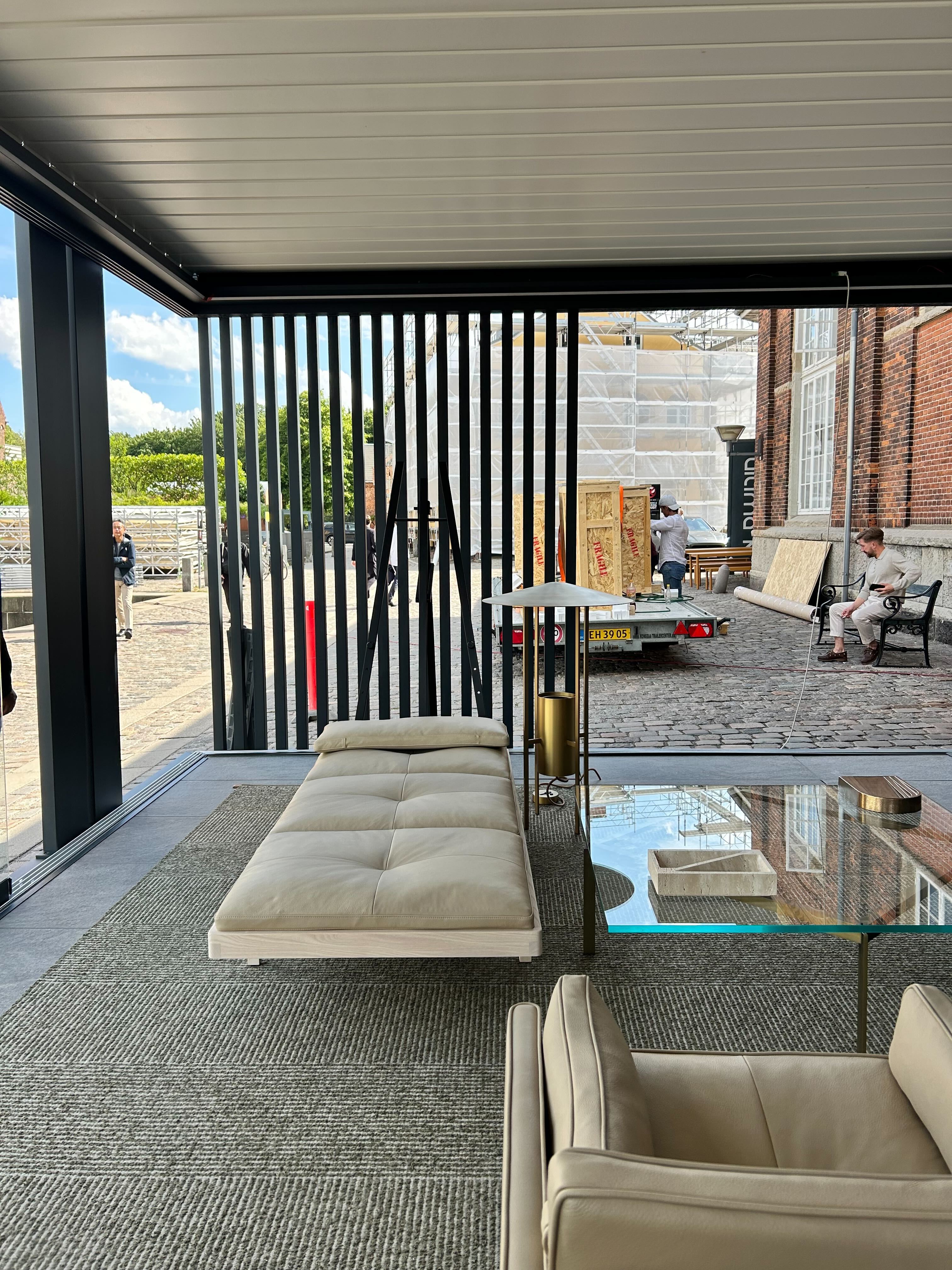
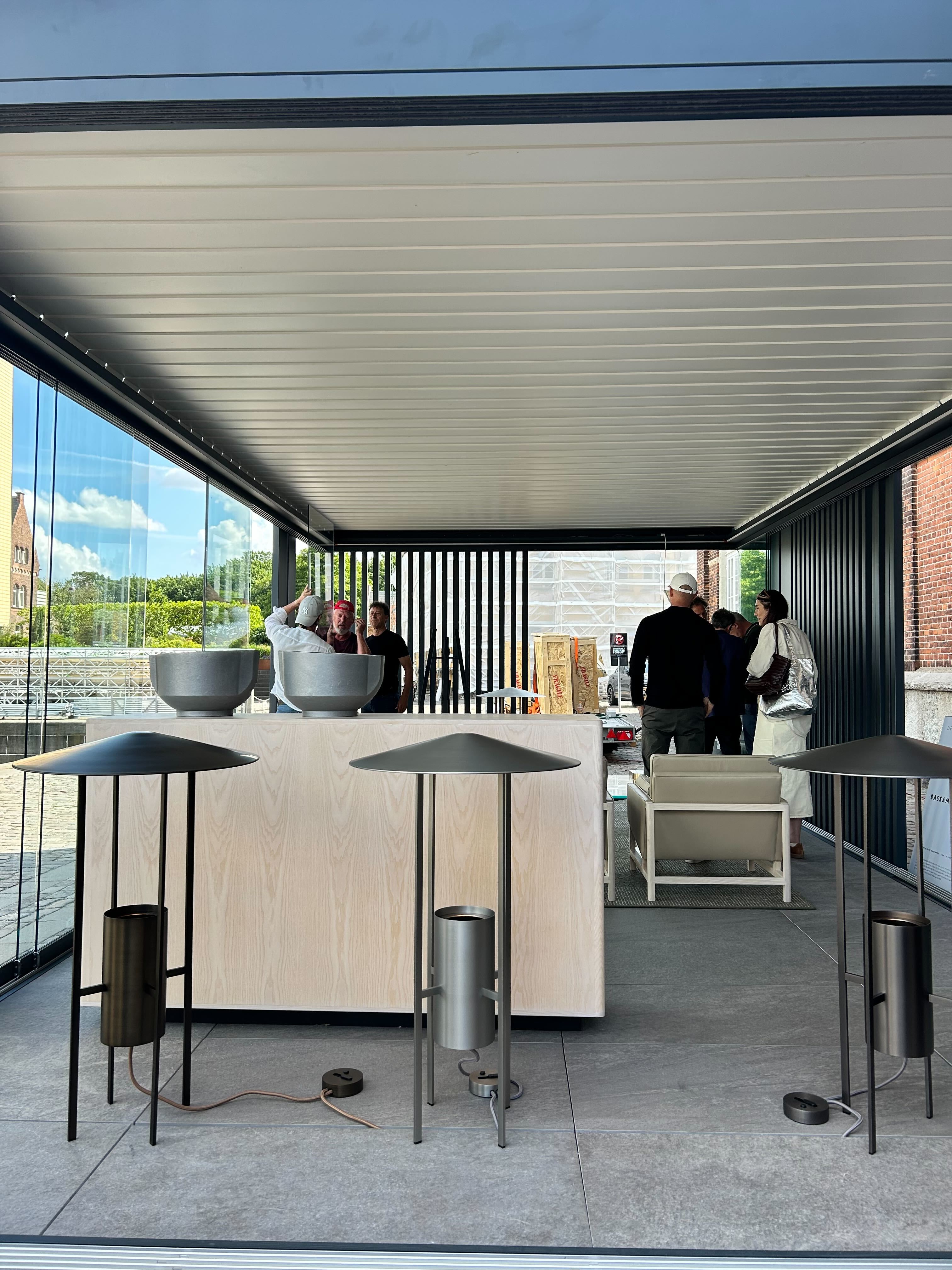
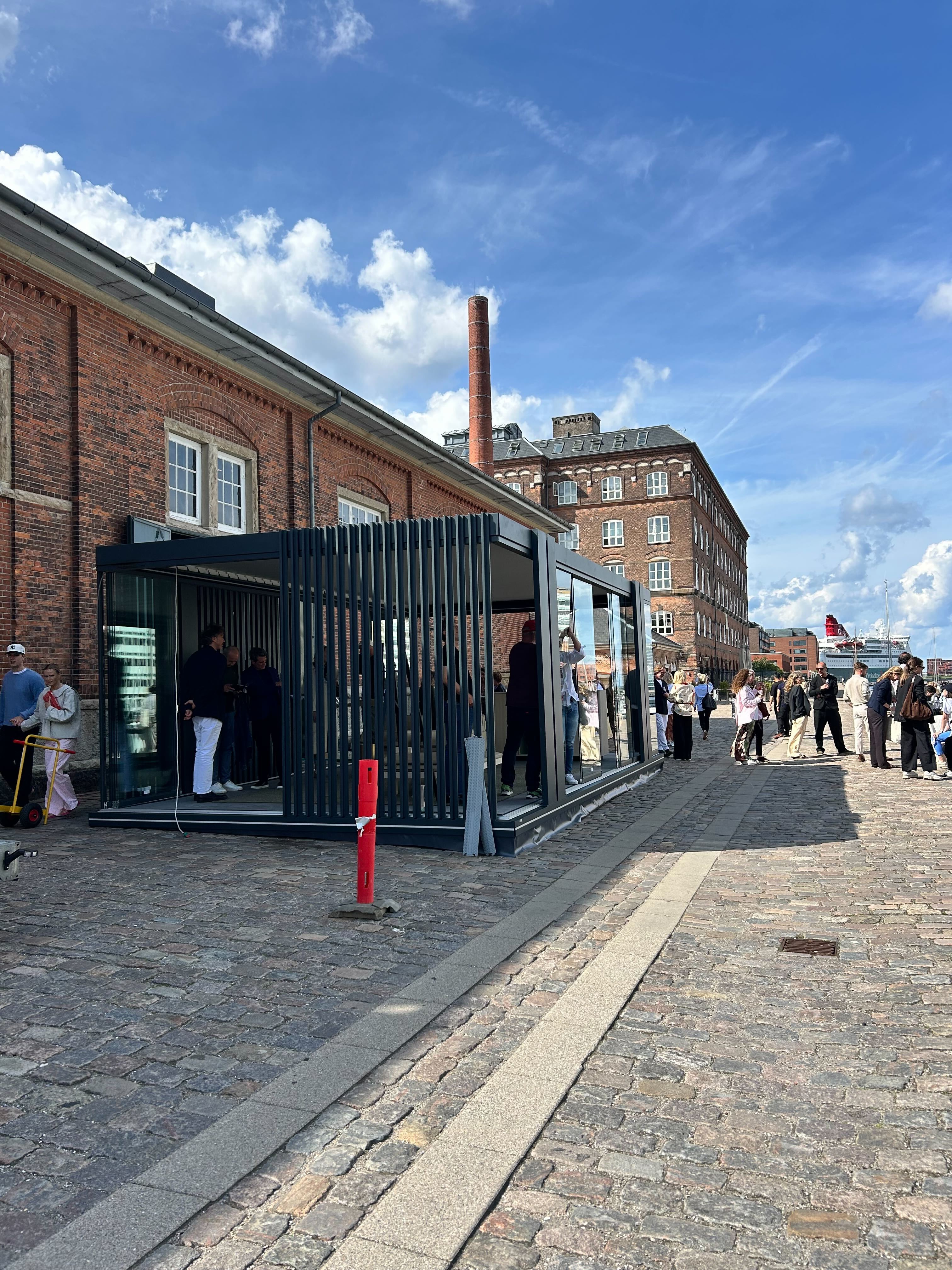
Bringing a slice of their native Connecticut to Copenhagen, furniture designers BassamFellows recreated the living room of Phillip Johnson’s Glass House by the harbour at Pakhus 11. While the layout of the furniture within the glass pavilion follows the original design, BassamFellows has inserted its own furniture in place of the original Mies Van Der Rohe pieces, including its reissue of the 1953 Philip Johnson and Richard Kelly lamp, originally made for the house. Ali Morris
Montana branches out into upholstery
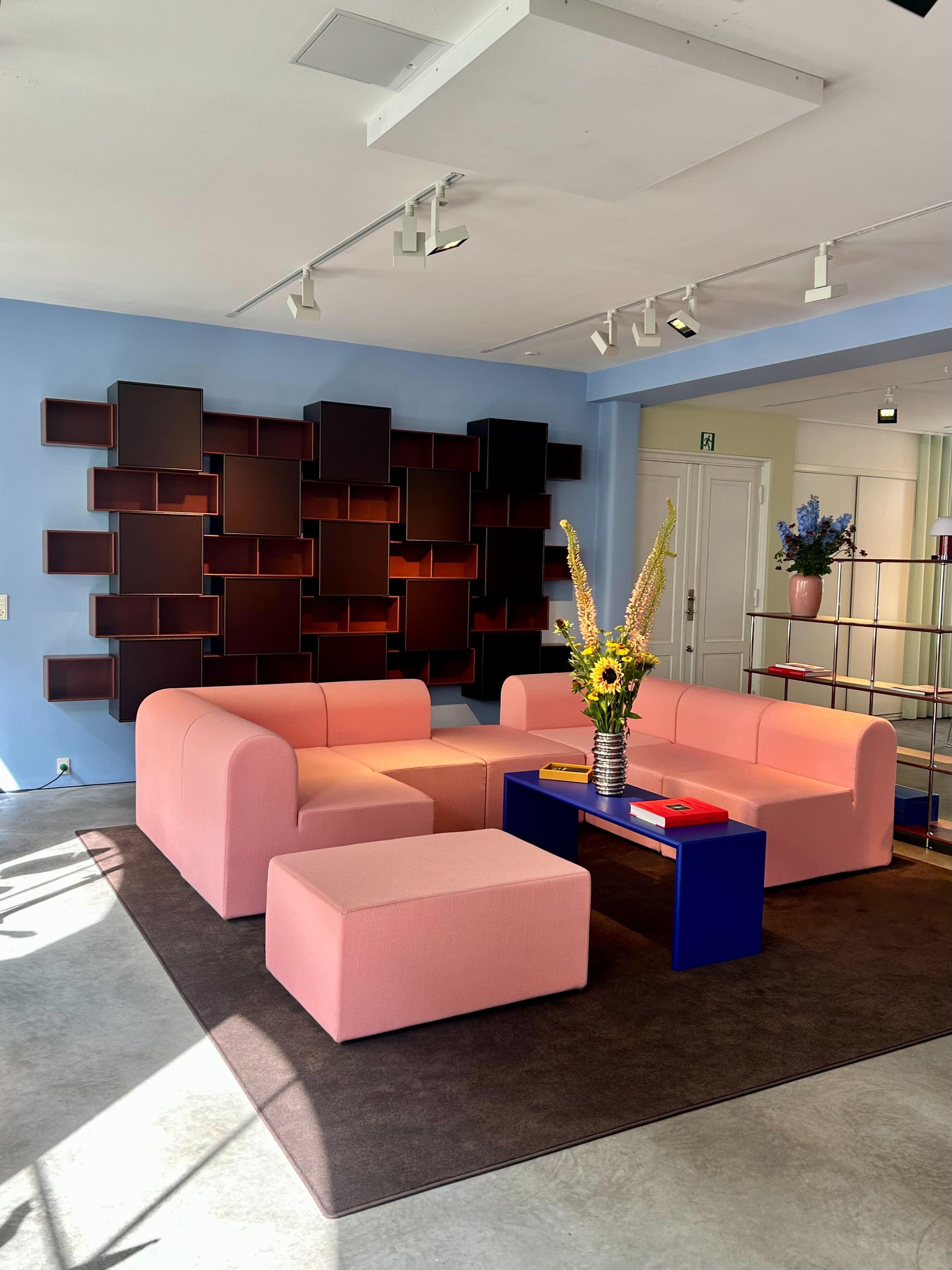
‘When people would ask me if Montana would ever make a sofa, I always said, “not in my lifetime". But I got convinced it was the right thing,’ says Joakim Larsen, CEO of Danish storage brand Montana. The design that changed his mind? An enduring favourite: the 'Paradigm' sofa by Erik Rasmusson, originally designed in 1969.
The reissued modular design, Larsen explains, aligns with Montana’s core belief that design should be flexible, offering the freedom to customise pieces to suit your taste and lifestyle.'Paradigm' certainly delivers – its modular parts can be endlessly reconfigured, while the removable covers let you switch things up when the mood strikes. This week, it’s on display in Montana’s showroom in a bold shade of pink that packs a punch. Ali Morris
HAY reissues a Mario Bellini classic

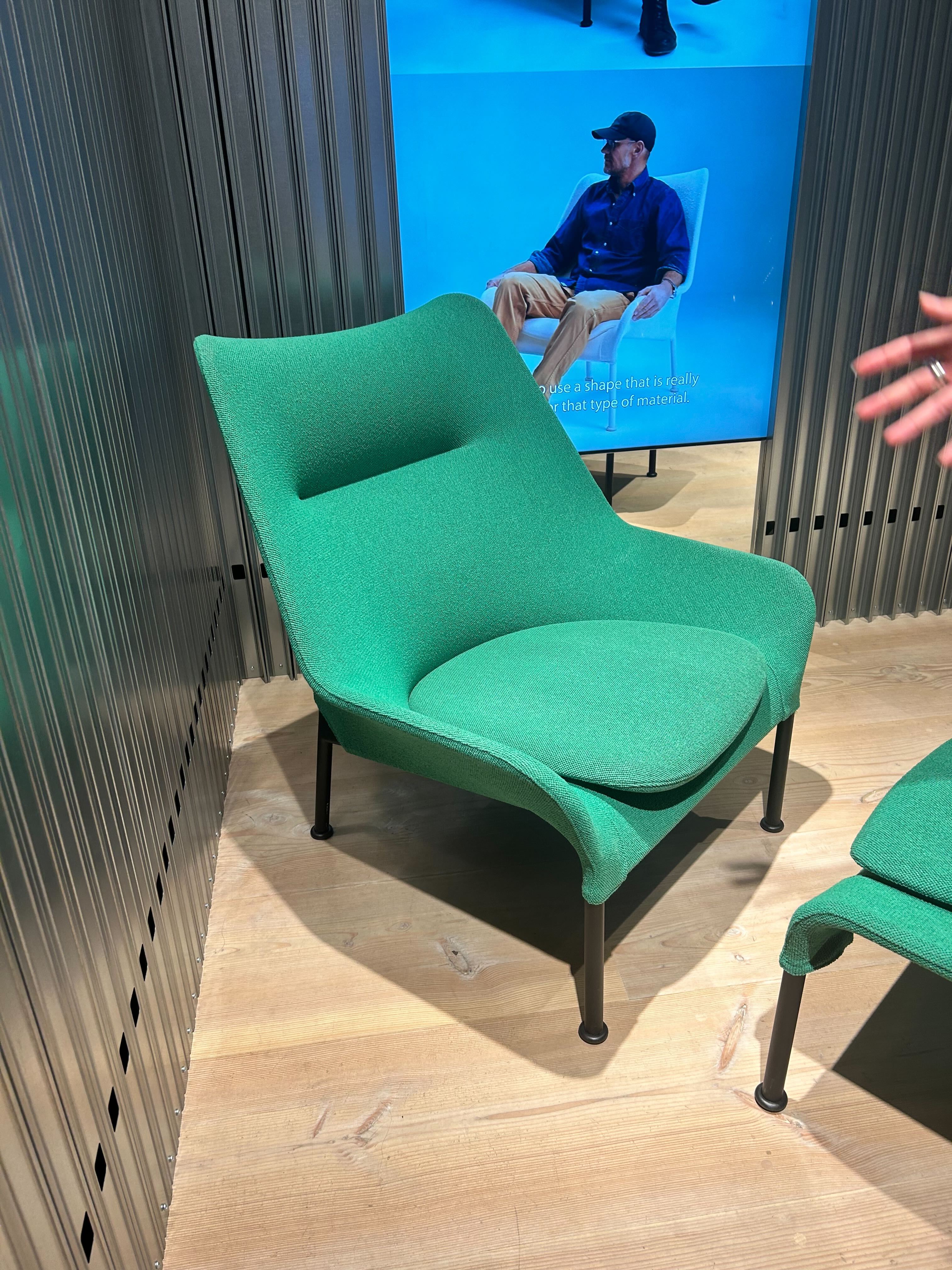
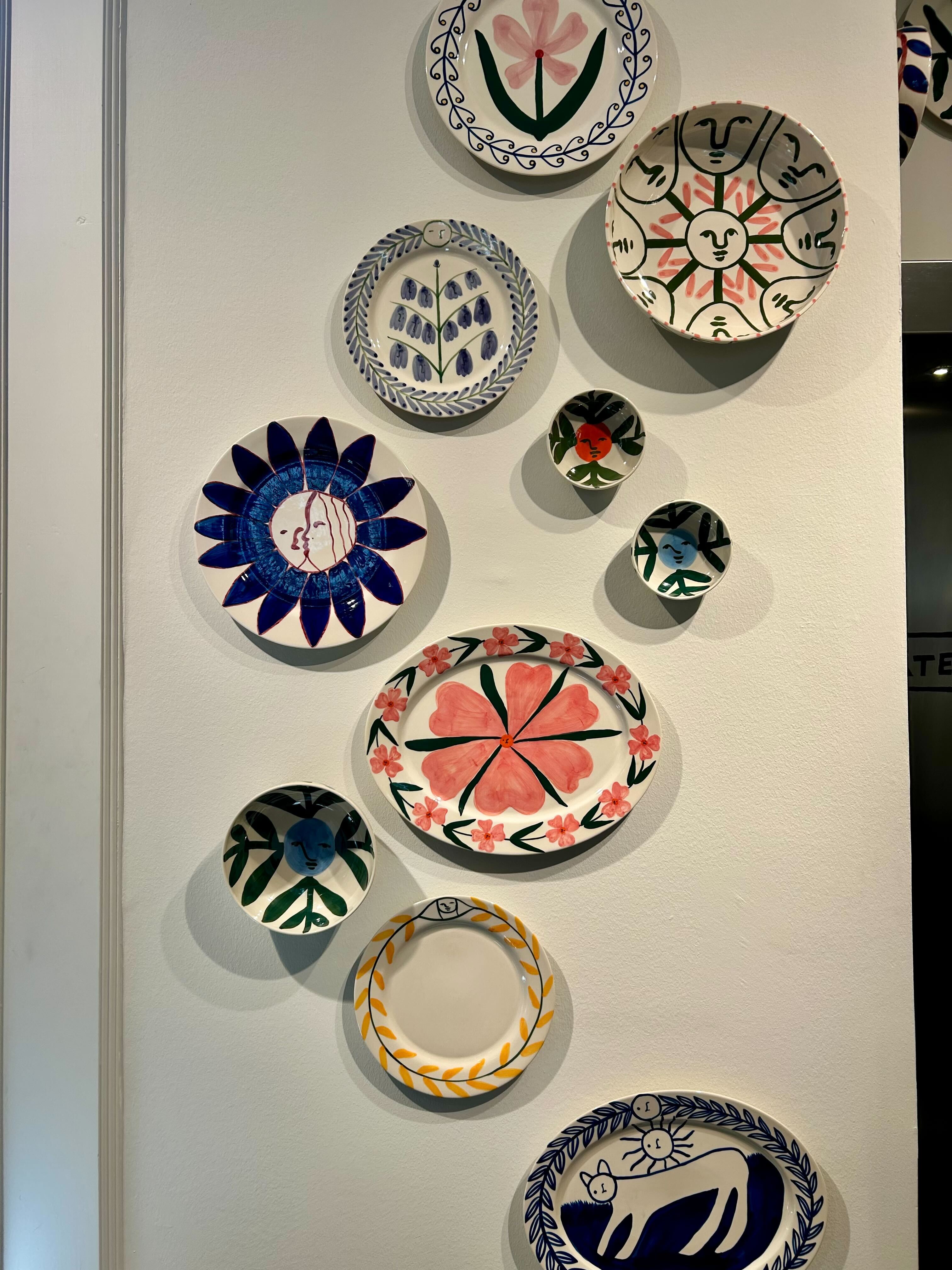
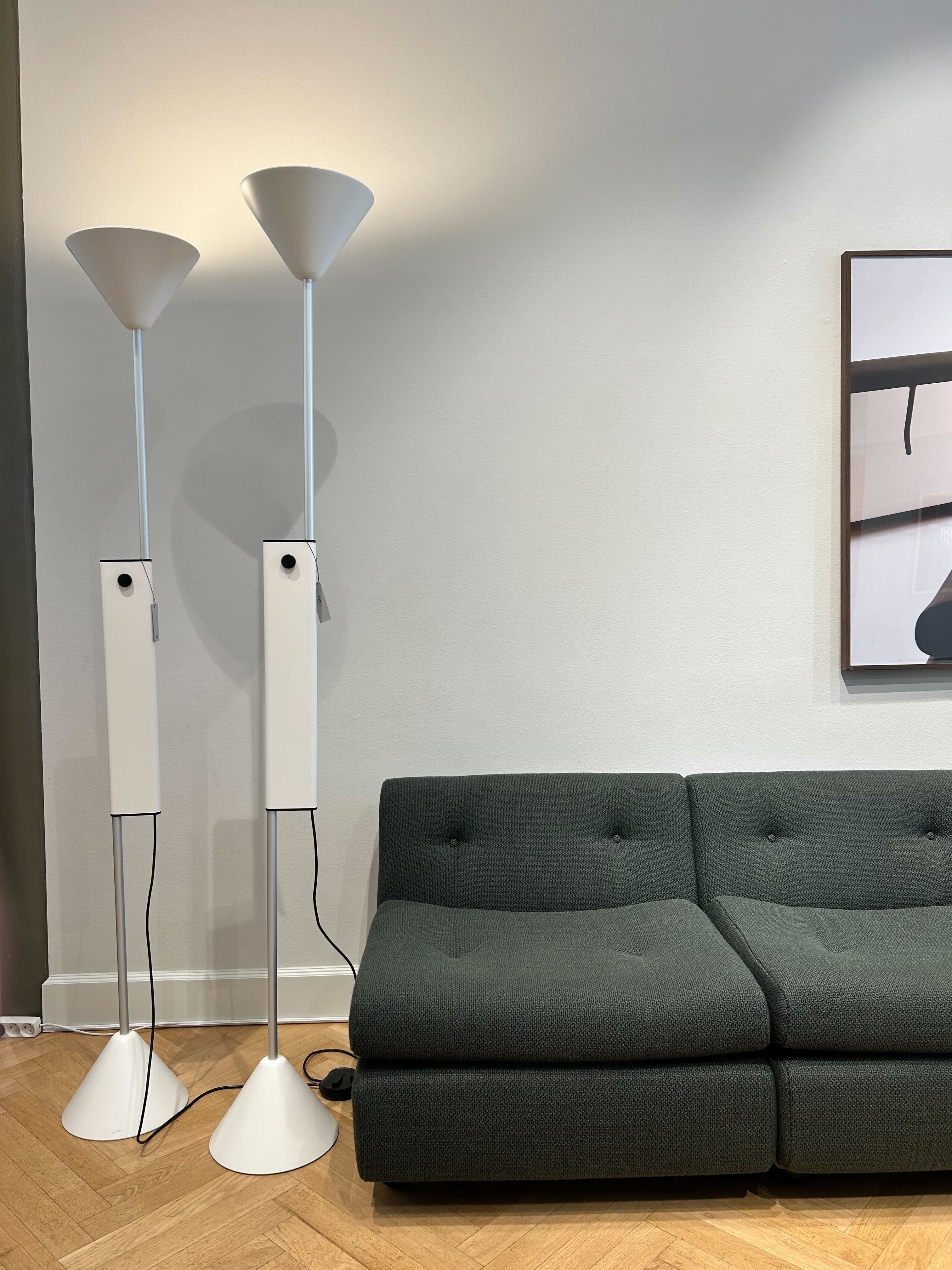

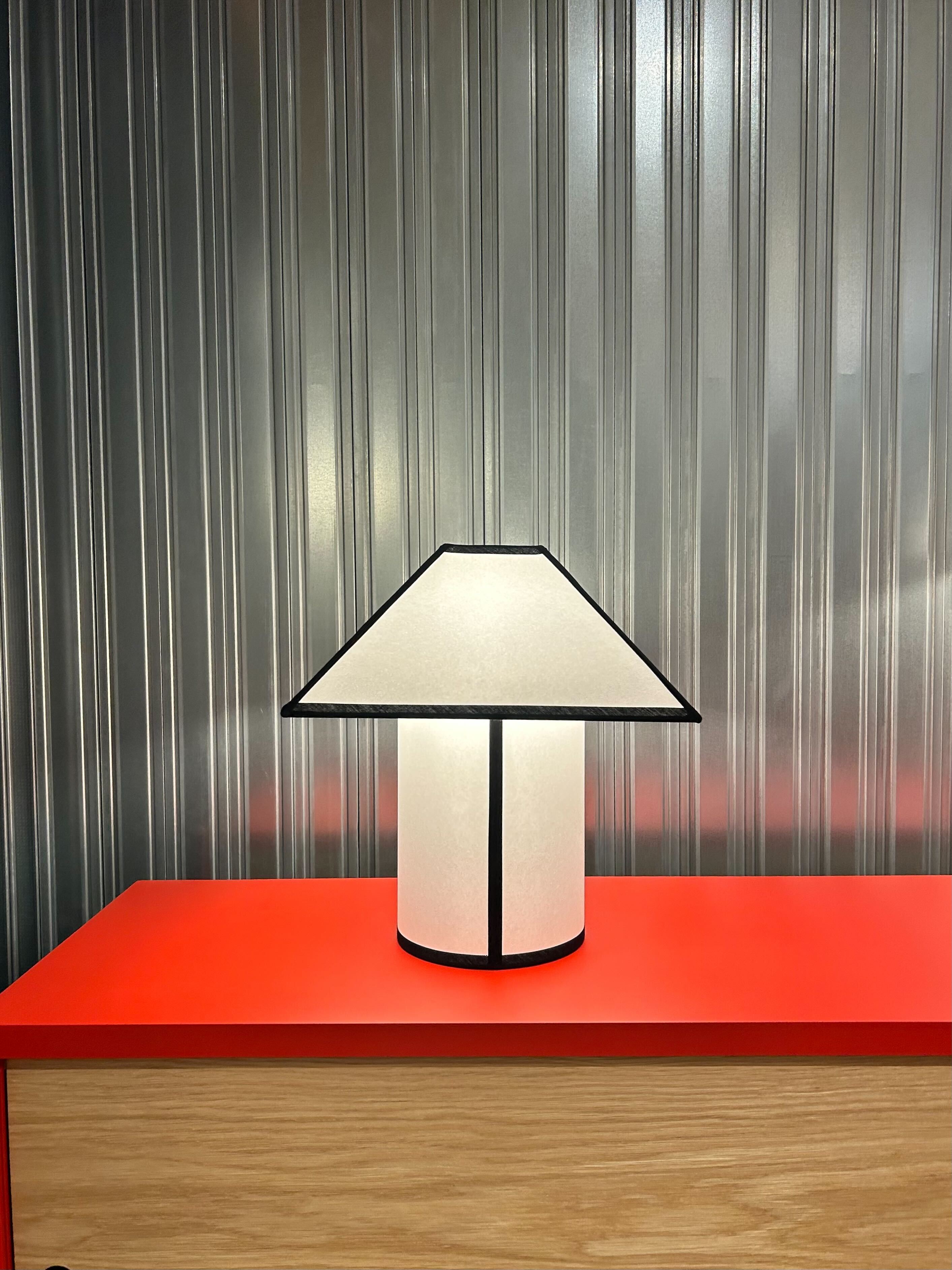
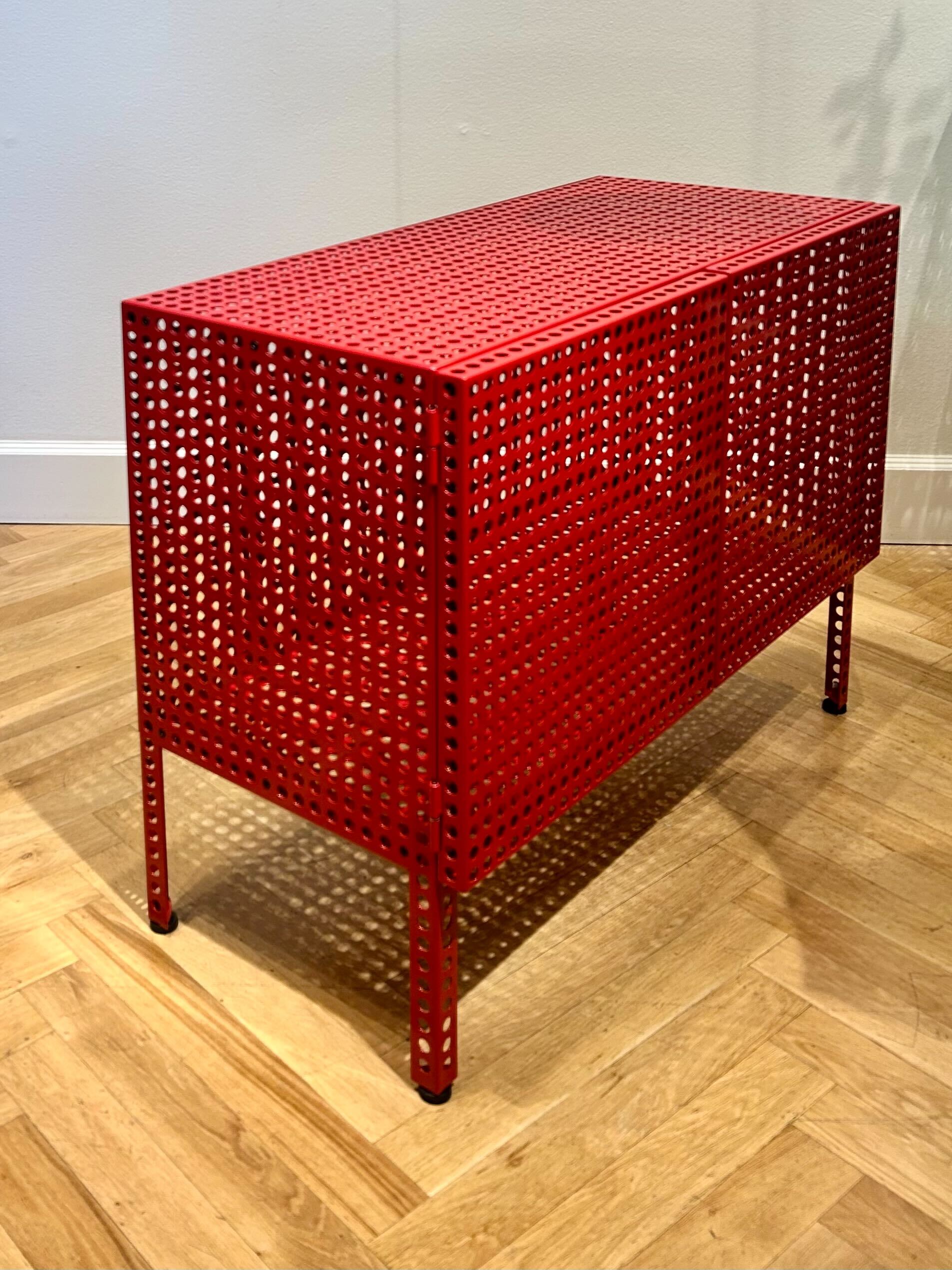
It’s safe to say HAY was one of the busiest showrooms we visited this week (closely tied with &Tradition). At its Østergade HQ, design fans gathered to see a slew of new launches, including a reissue of Mario Bellini’s 'Amanta' chair (pictured here next to a sculptural new uplight by Romain Sillon), mesh cabinets by Muller Van Severen, lamps that resemble line drawings by Slovenian designer Ana Kras, a painterly tableware collection by American artist Emma Kohlmann, and a foam-less lounge chair by Jonas Forsman.
The 'Amanta' joins a growing list of 1960s and ’70s seating classics being reissued, as the era continues to capture the current zeitgeist. Ali Morris
Fredericia celebrates Nanna Ditzel and Mogens Koch
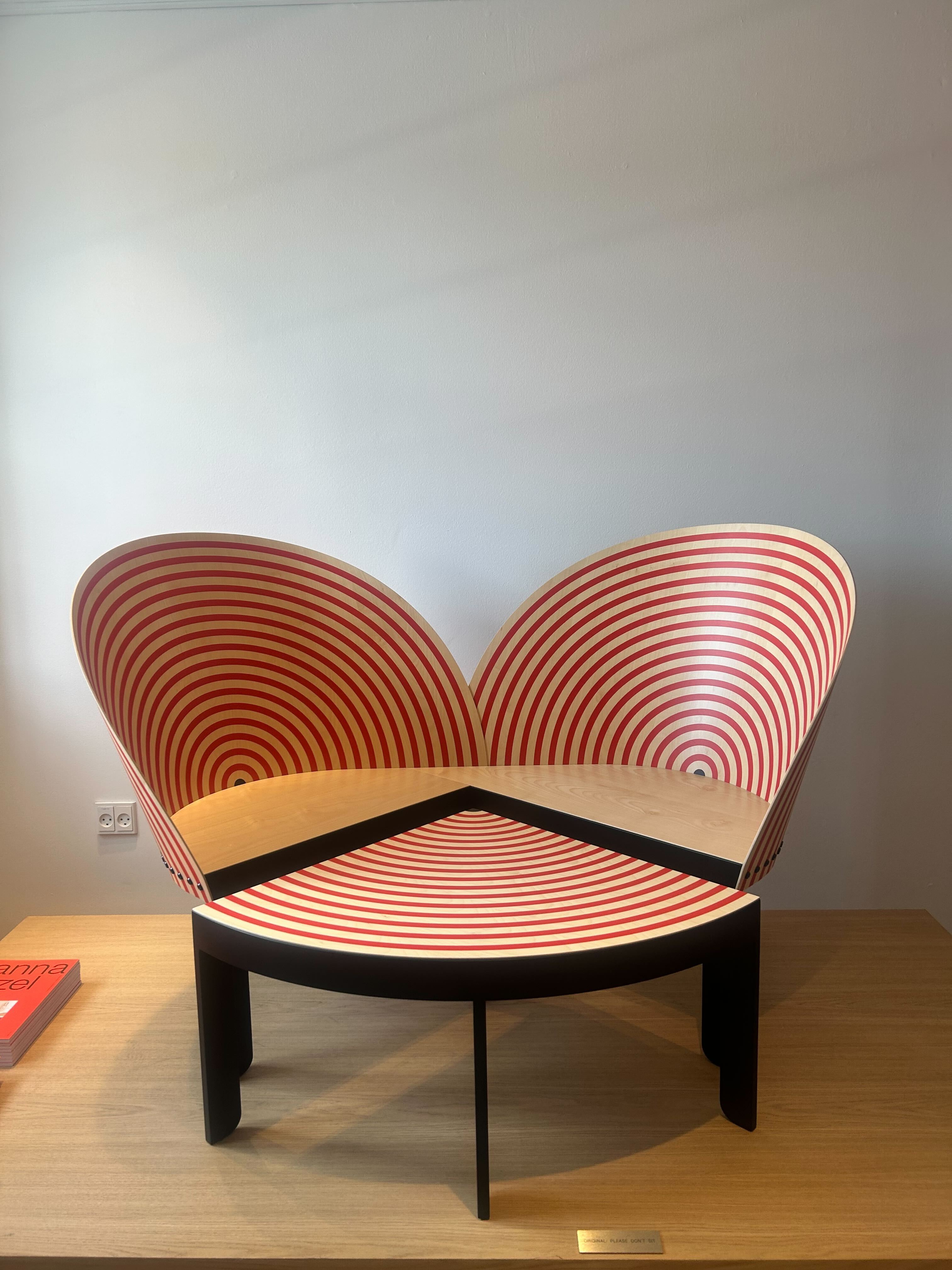
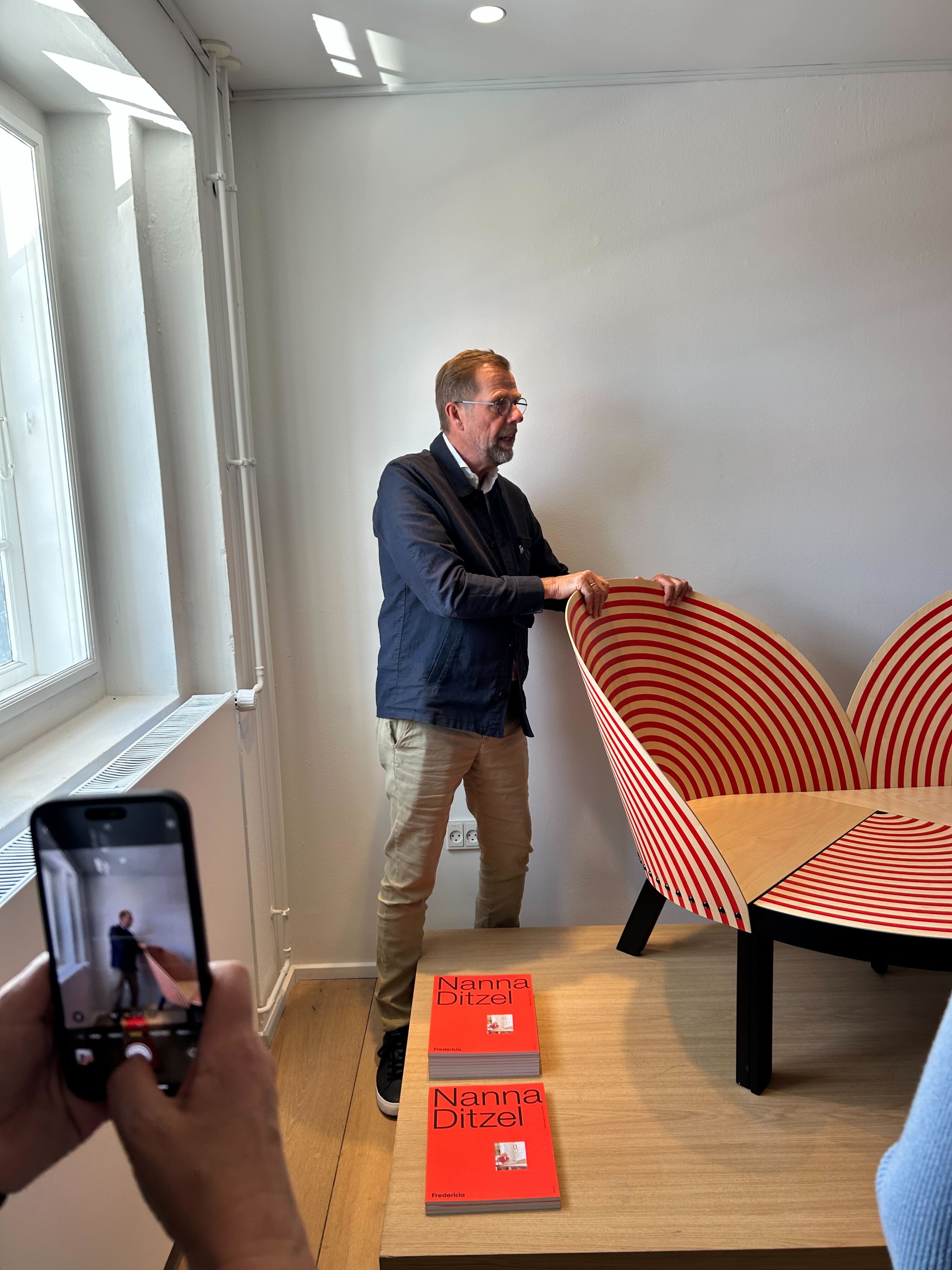
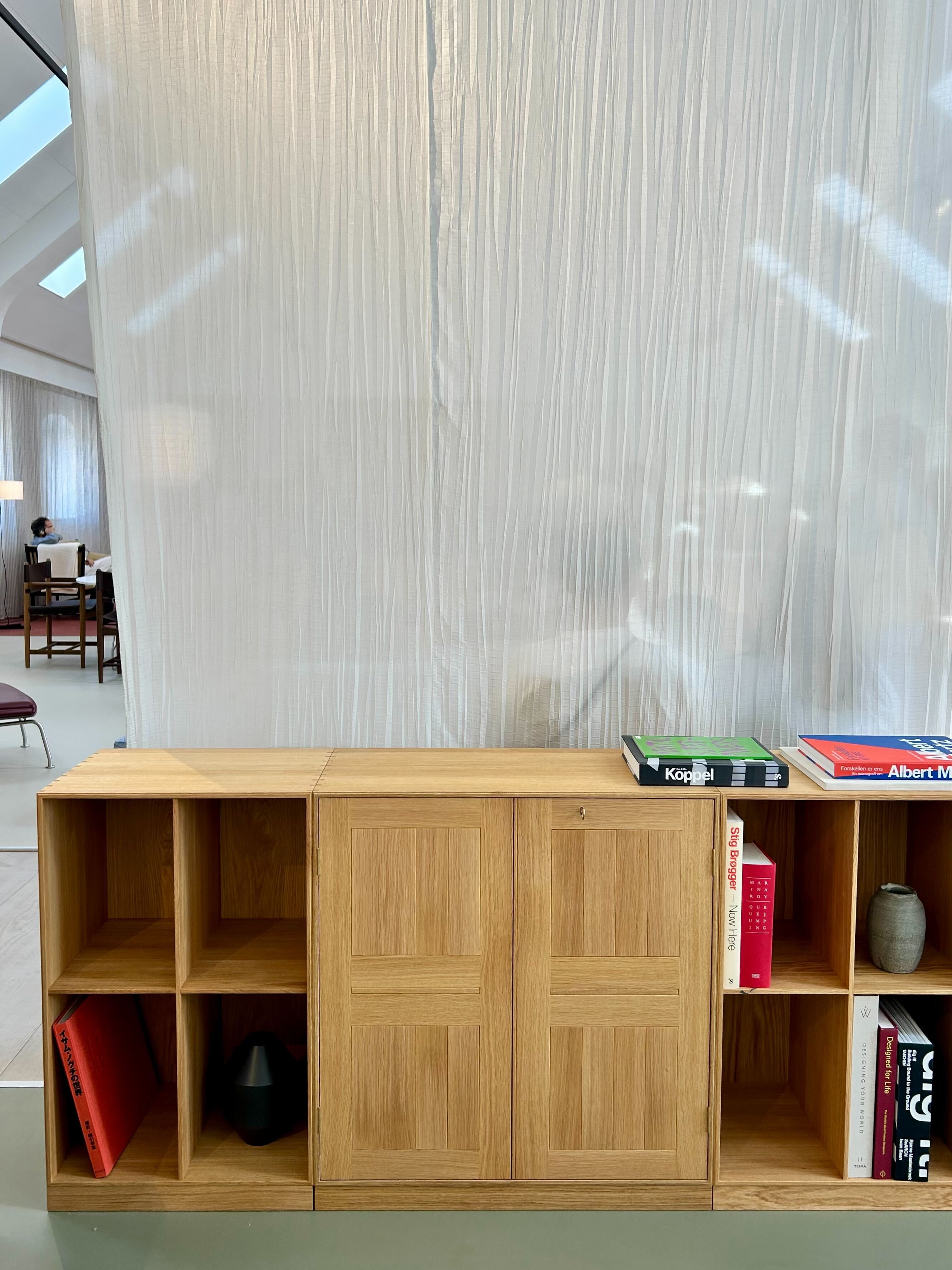
Social media has been awash with snaps of Fredericia’s reissued Nanna Ditzel bench – originally launched in 1989 – but what the pictures don’t capture is the surprising flexibility of its distinctive beech veneer backrest. During our visit, this was demonstrated to us by Fredericia owner Thomas Graversen, who had the honour of working closely with Ditzel over the last two decades of her life.
Praising her as one of the most brilliant minds he’s ever met, he told us: ‘She’s still alive through our collection. Her Trinidad chair sold close to 800,000. At one time, she was our biggest receiver of royalties.’
Less showy but no less beautiful, the brand also reissued a slender yet sturdy oak bookcase system, originally designed in 1928 by Danish architect Mogens Koch for his own home. Ali Morris
Layered turns canvases into rugs
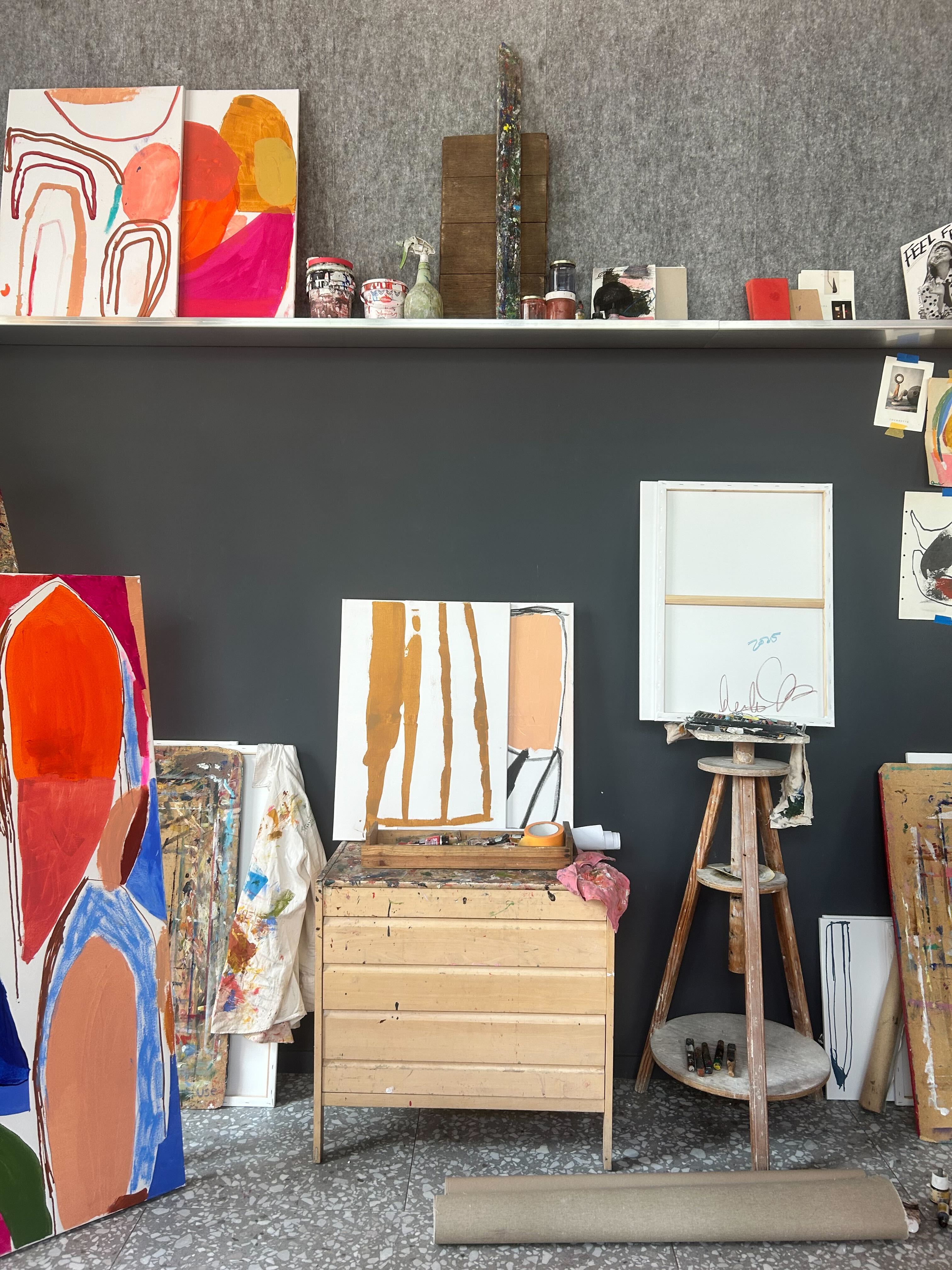
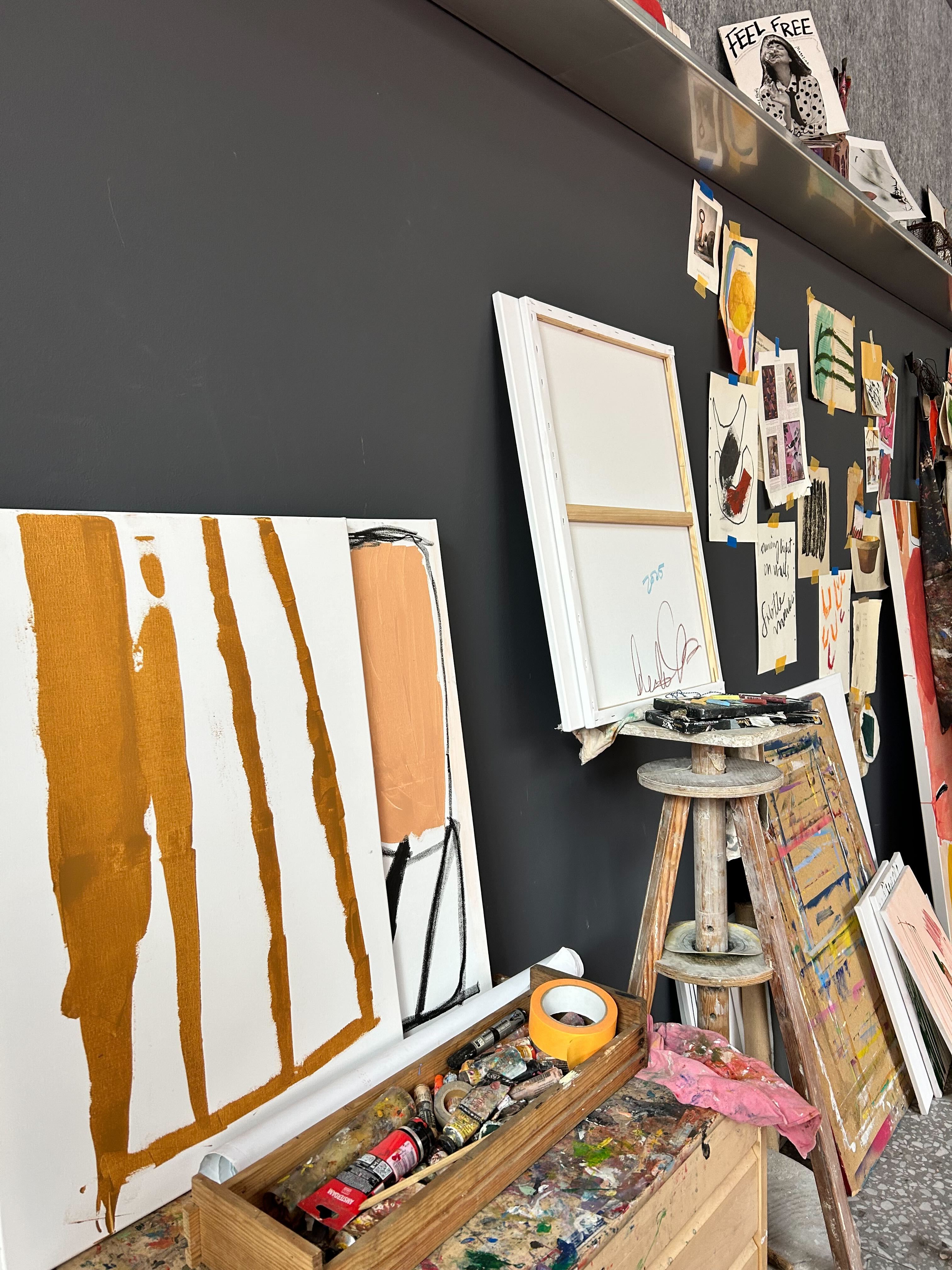

It’s often said that rugs are artworks for the floor – and Swedish rug brand Layered took that quite literally with the launch of a new collection by Portugal-based American artist Heather Chontos during 3 Days of Design. The brightly coloured, hand-knotted pieces are painstakingly crafted using 10–15 colours each and multiple dyeing techniques to evoke the texture and energy of brushstrokes.
The show, titled 'Fiket', is hosted at the city’s Kismet café, which has been styled by Chontos to resemble her own studio – complete with paint-splattered furniture, half-finished canvases, brushes and tools. Ali Morris
Artek x Marimekko
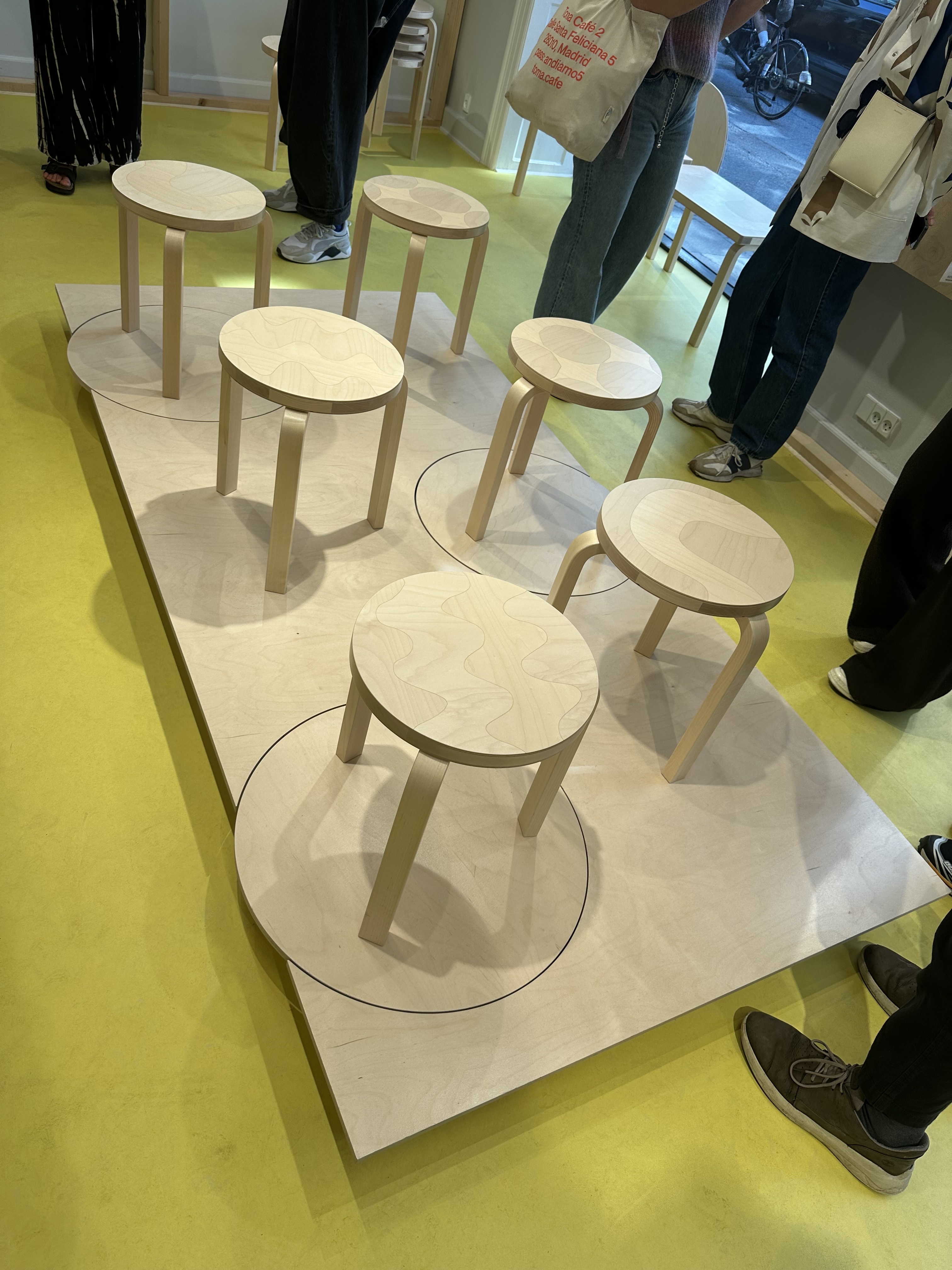
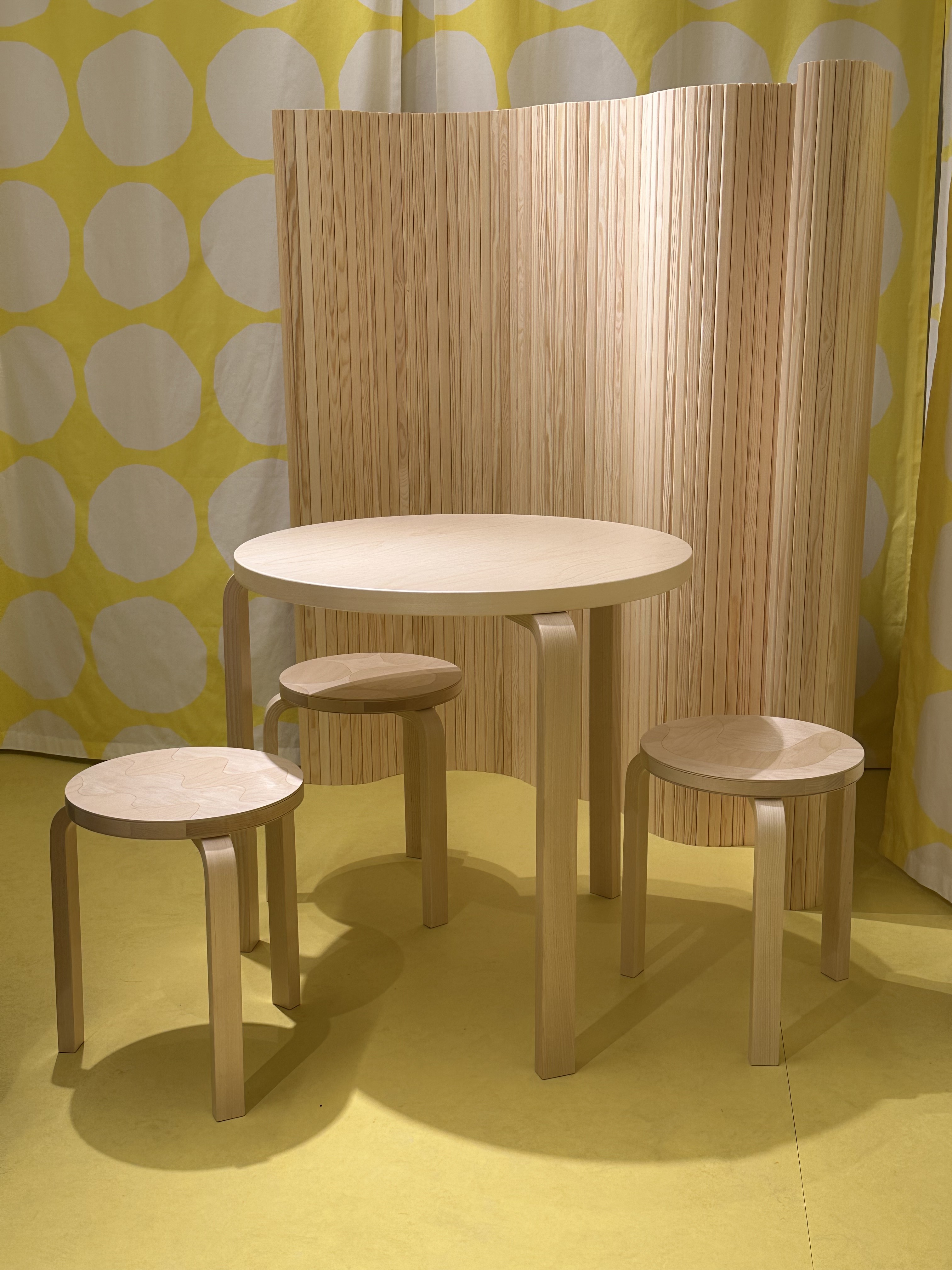
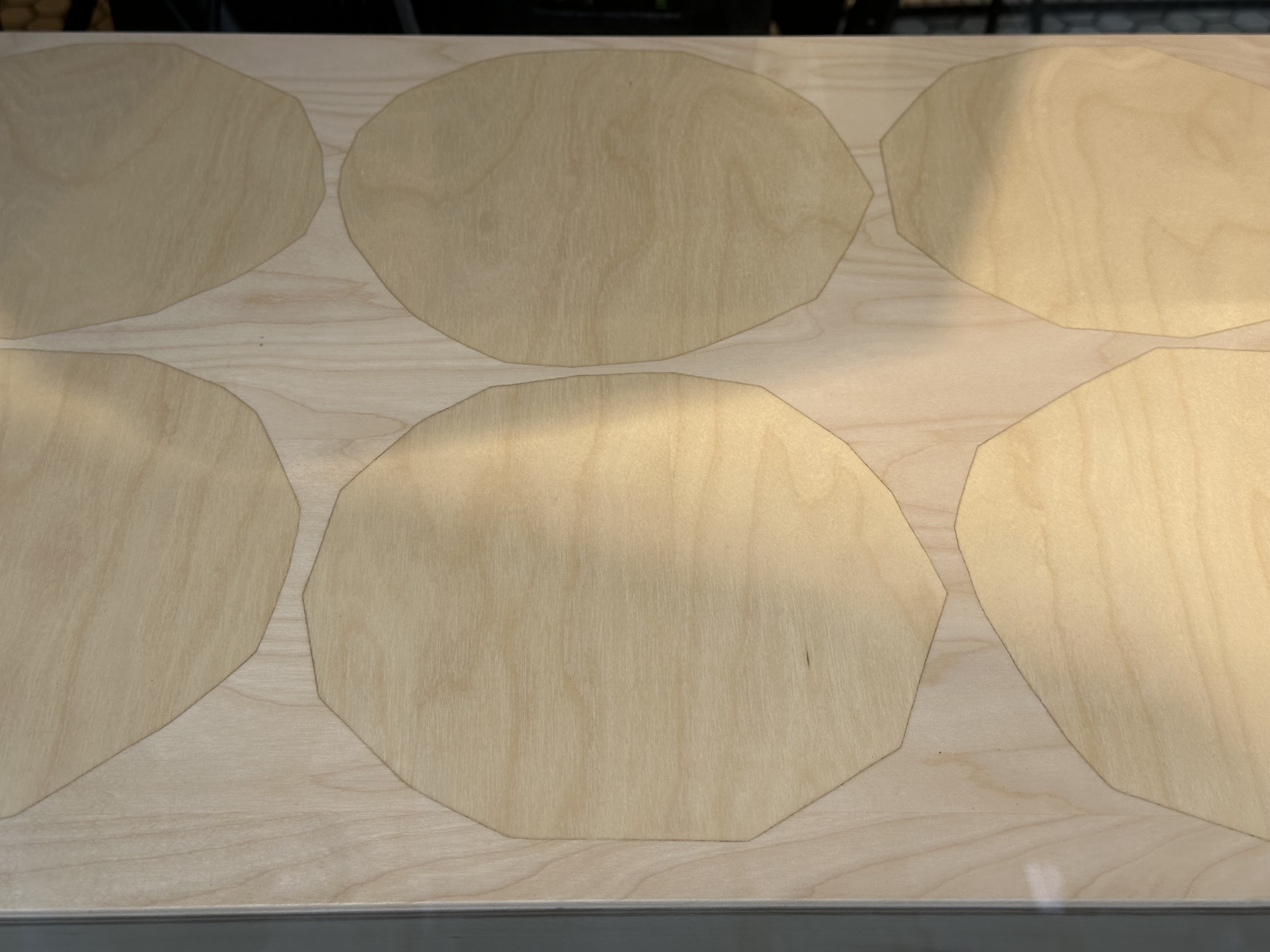

As part of Artek’s 90th anniversary celebrations, the house has partnered with another titan of Finnish design: Marimekko. The brands previewed their collaborative collection (which will be available from September) at Marimekko’s flagship on Pilestraede, revealing a series of Aalto’s beloved bentwood stools and tables, with laser-cut marquetry surfaces in Marimekko’s recognisable graphic print patterns. Using the contrast of the natural wood grain to gently accentuate the decorative effect, the furniture feels simultaneously elegant and playful, hand-crafted and coaxed by machine, paying homage to the origins of Artek’s original nomenclature: Art + Technology. We feel Alvar and Aino would approve. Hugo Macdonald
‘Modern Romance’ by Tekla

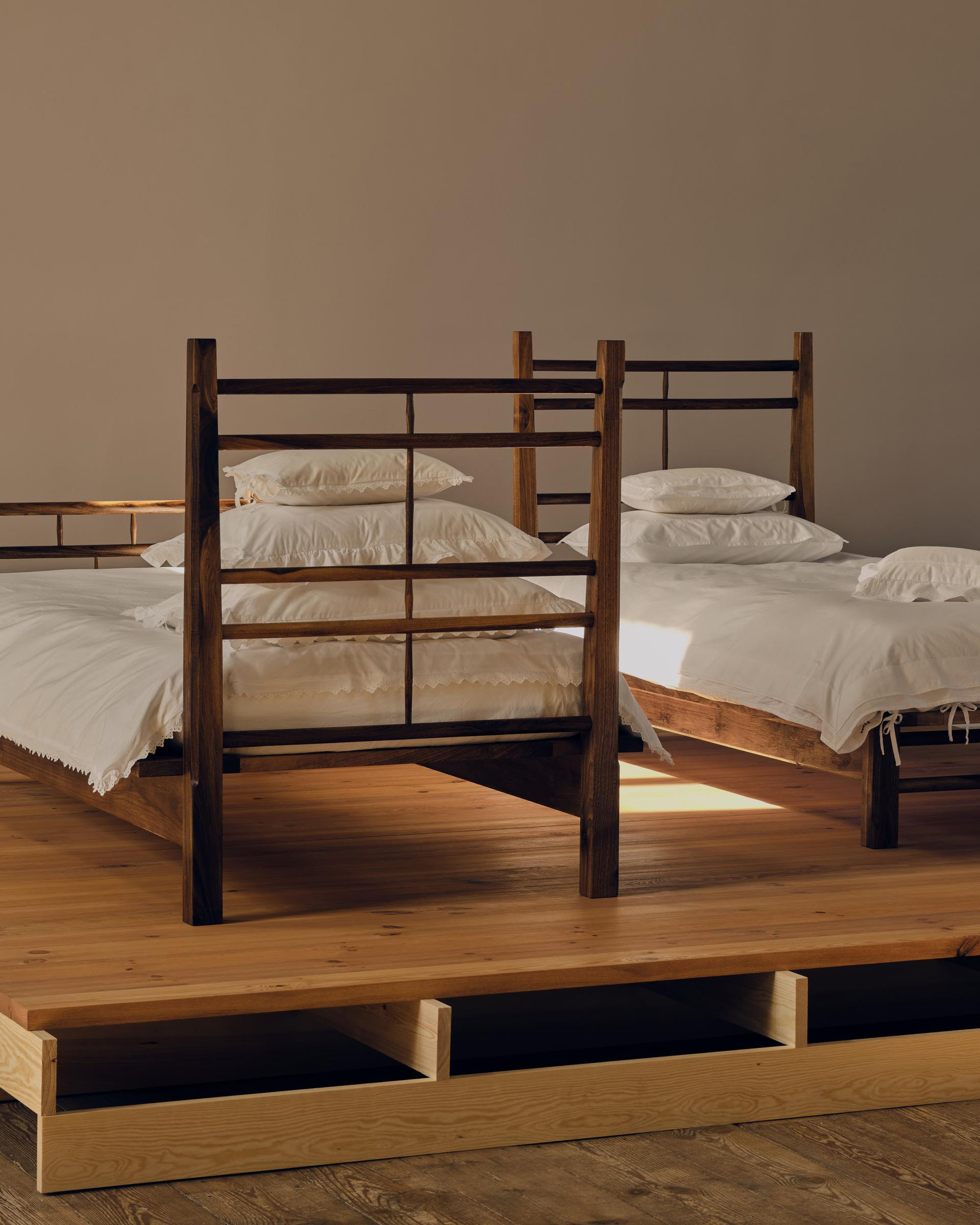
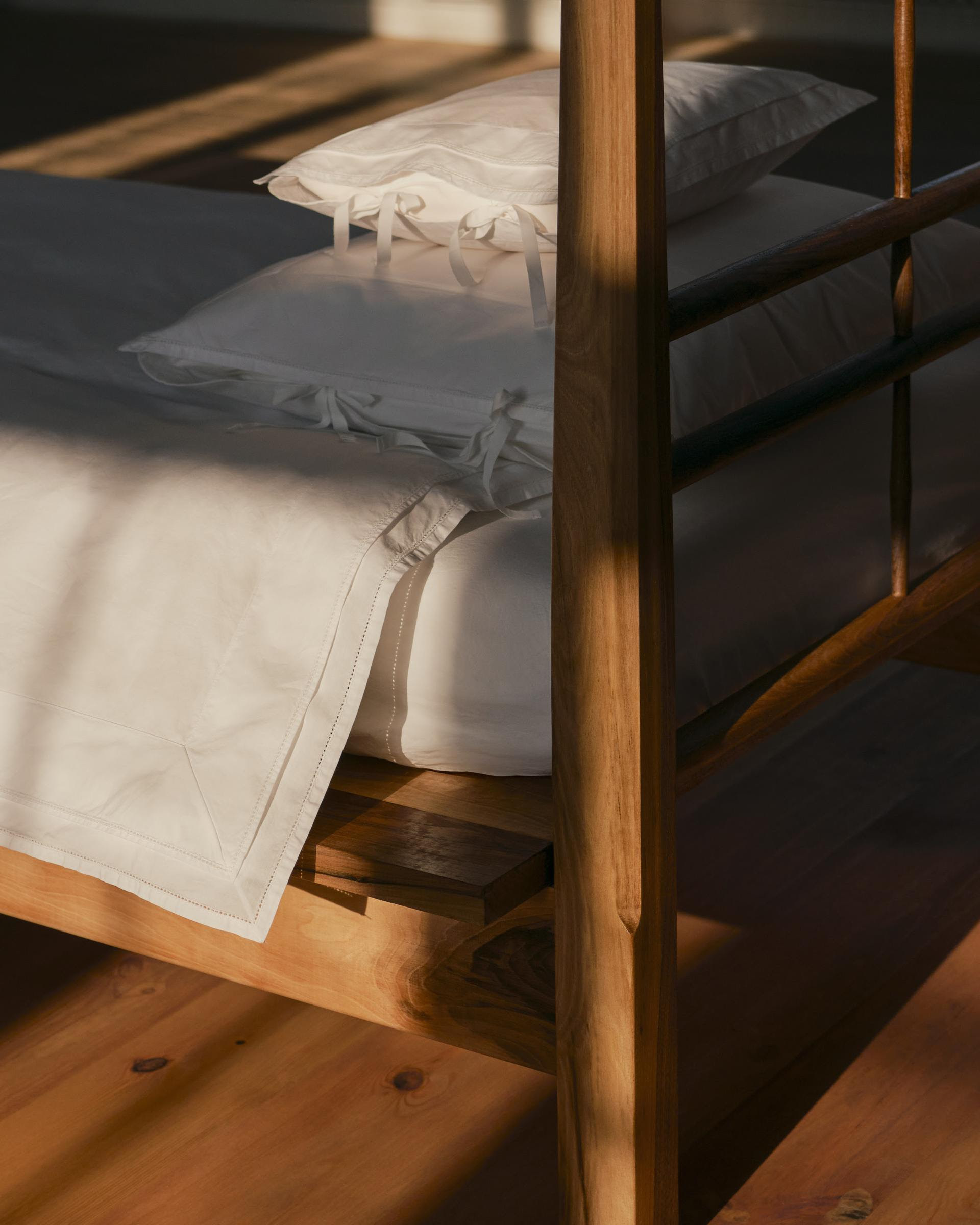
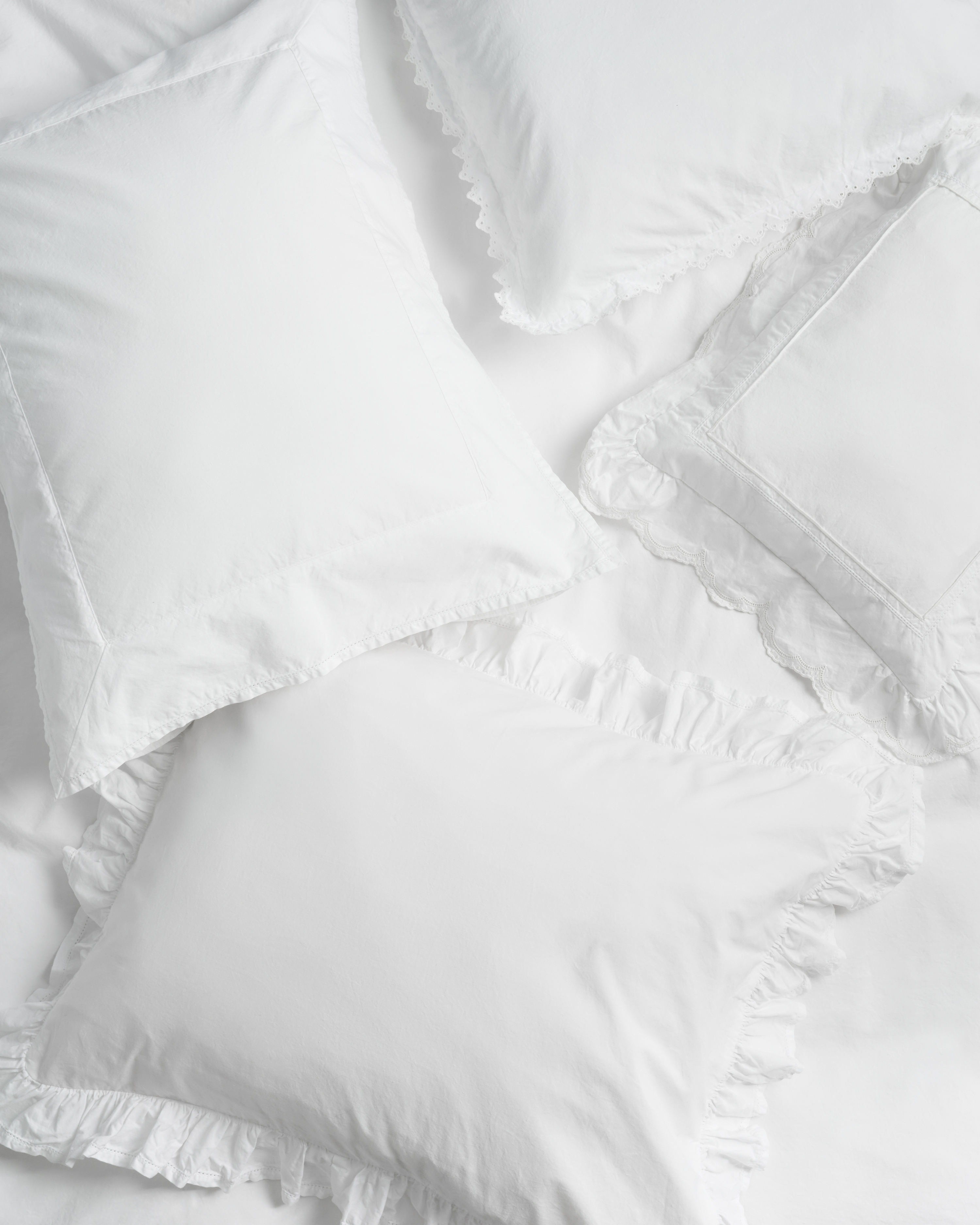
In a short space of time since launching in 2017, the young Danish textile company Tekla has become a byword for cool, crisp modernity in the bedding and blanket department. Proof perhaps that we’re all seeking comfort these days from the familiarity of bygone times, the brand has unveiled a new range incorporating broderie anglaise, inspired by bedding of yore. In a beautiful installation titled ‘Modern Romance’ at the Charlottenburg Palace, wooden beds were made-up with the new collection - powerfully juxtaposing the grandeur of the decorative interior with the intimate, detailed craft of the bedding. The collection, available to buy already from Tekla’s website, is made in Portugal with organic cotton in a 200-thread count, which is lightly stonewashed for softness. Charlie Hedin, founder and creative director of Tekla said: ‘The broderie anglaise collection is inspired by heirloom bed linens and traditional fabrics found in parts of Europe. These intricate pieces embody craft and quality, something we’ve wanted to capture in our own, more modern take on the style.’ We say: dreamy. Hugo Macdonald
Copenhagen’s CRD Studio invited us home for their 3 Days of Design presentation
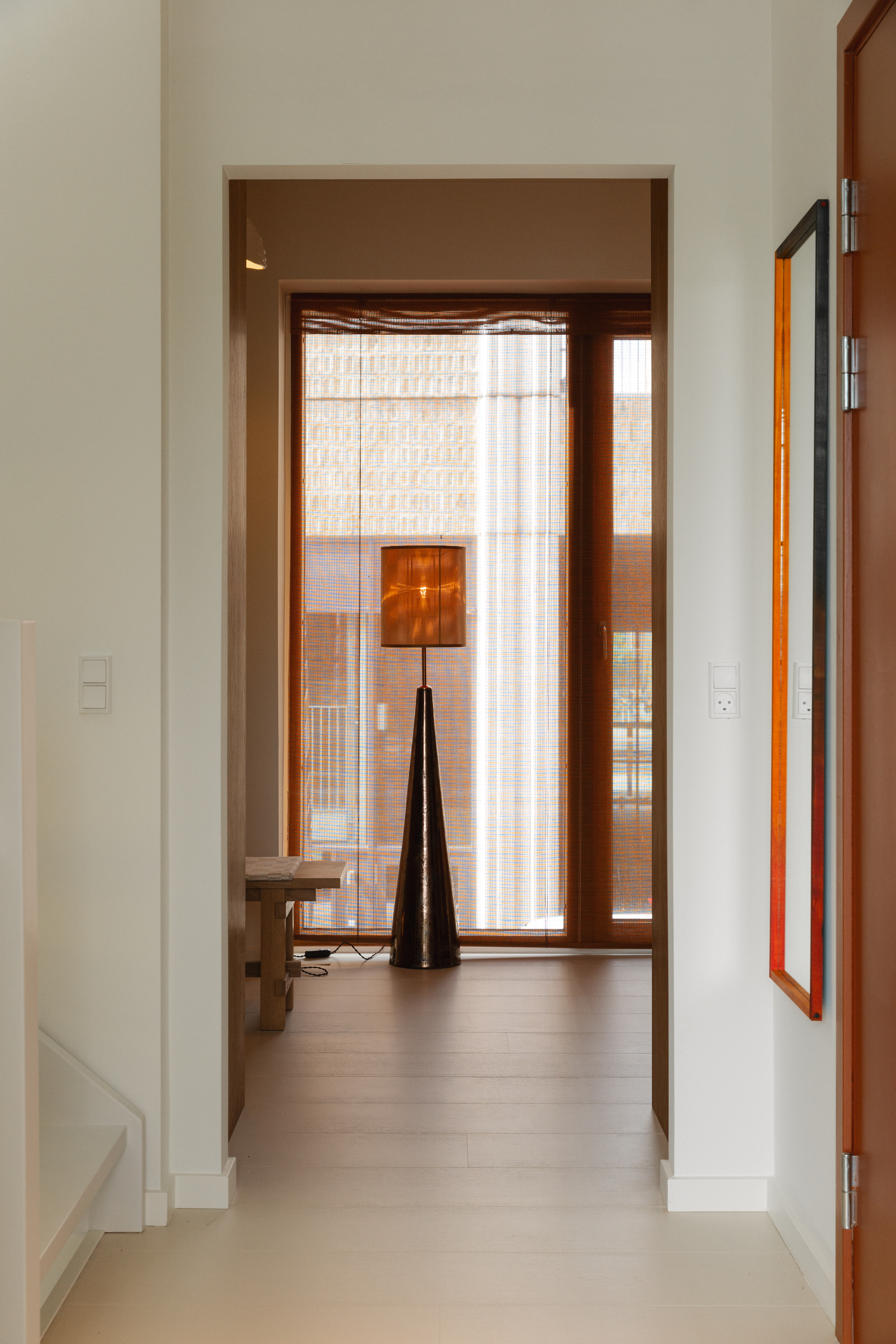
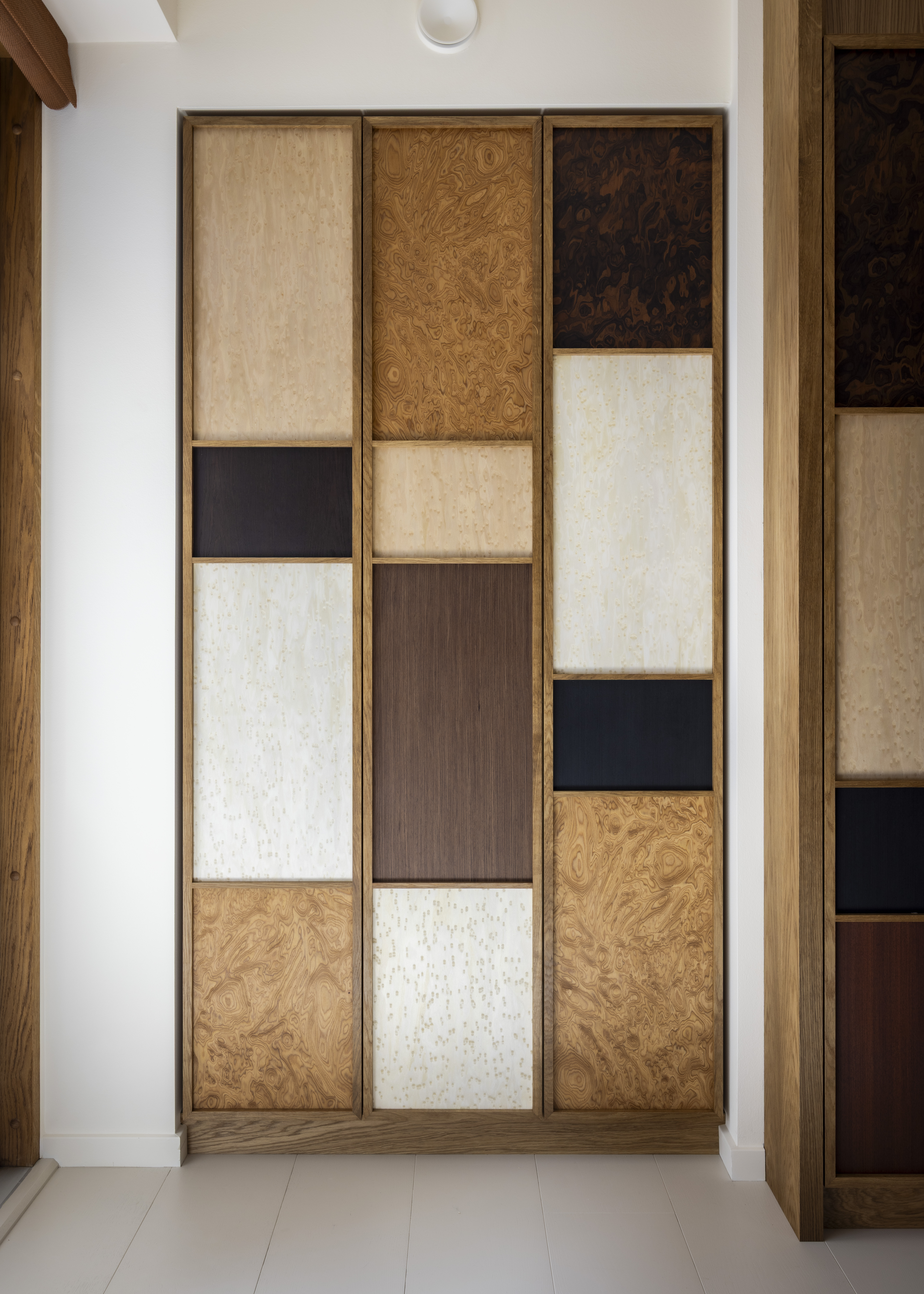
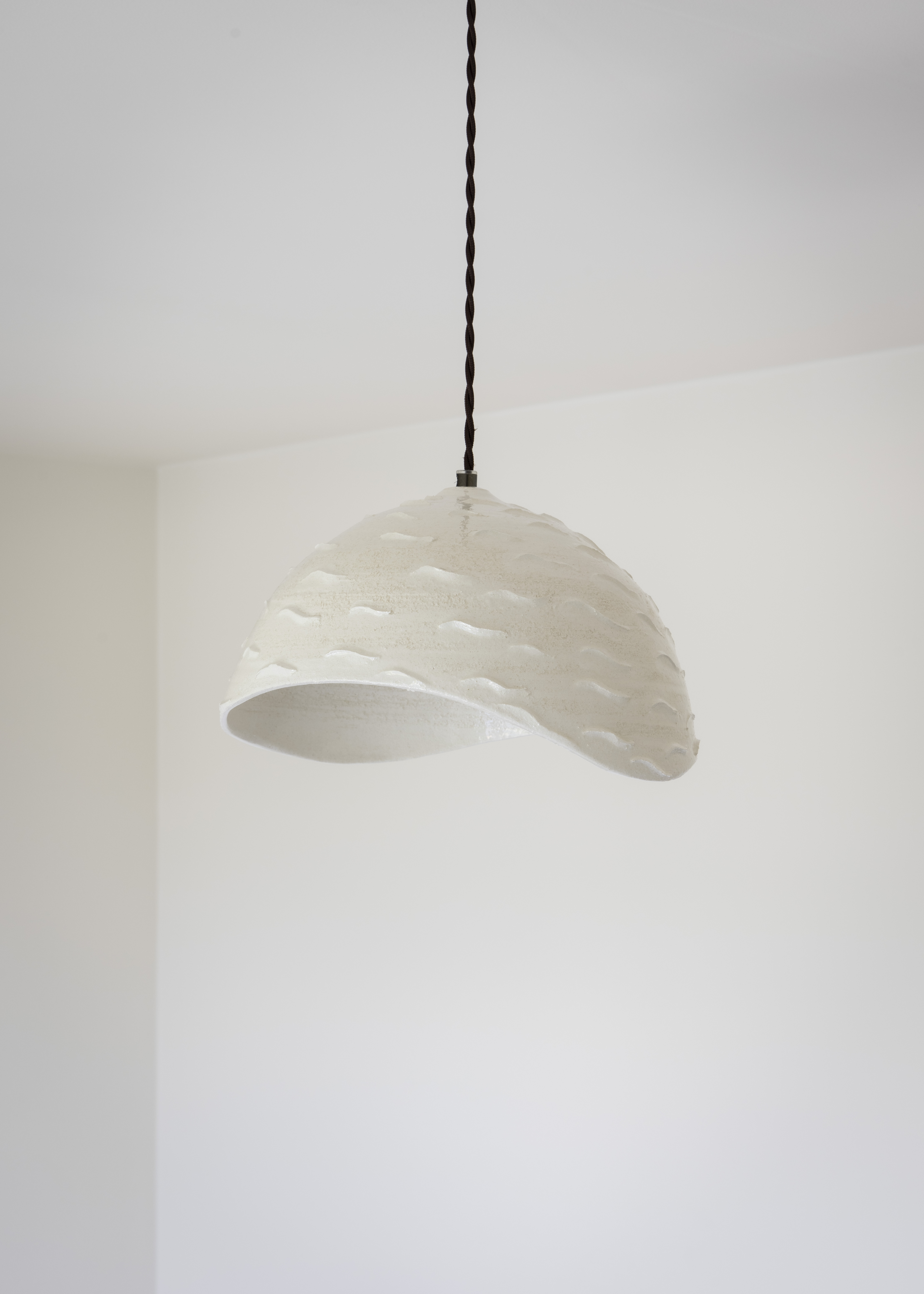
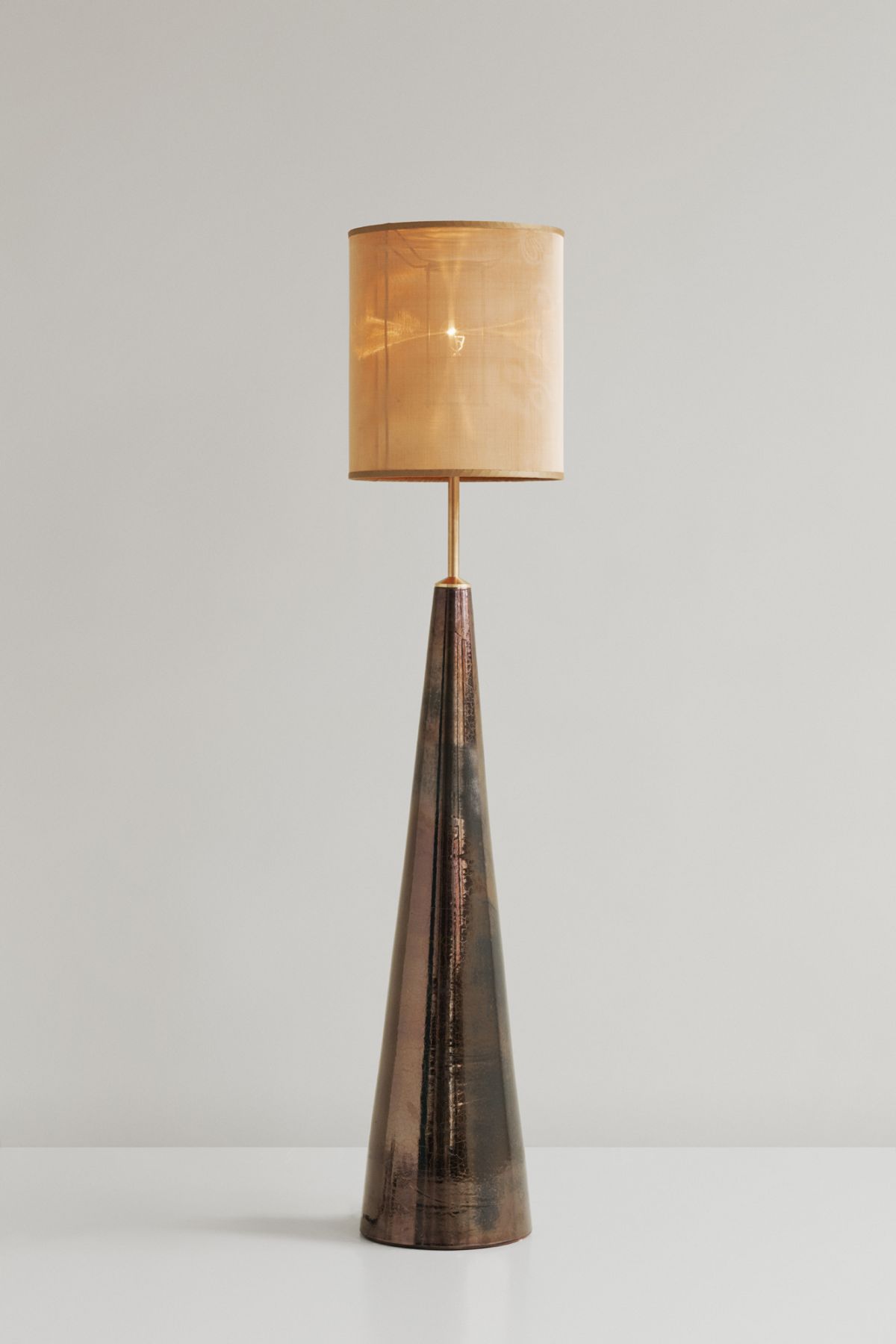
3 Days of Design undeniably offers the opportunity to see a side of Copenhagen often closed behind doors. But the access usually extends only to curated furniture showrooms, off-the-beaten-track museums and quiet neighbourhood galleries. Rarely, however, are visitors afforded a glimpse into the city’s lived-in domestic spaces. This year, though, CRD Studioowner Cathrine Raben Davidsen opened the doors of her new home on Paper Island – a three story modern dockside townhouse overlooking Copenhagen’s famed Henning Larsen-designed opera house – inviting guests into her richly layered interiors and unveiling her firm’s latest collection in an intimate, residential setting.
Best known in the design world for her ceramic lamps exhibited at Milan’s Nilufar gallery, the painter and sculptor used the occasion to debut a striking new line of bespoke cabinetry, created in collaboration with master furniture maker Kim Dolva of Københavns Møbelsnedkeri. According to Raben Davidsen, the balanced forms draw inspiration from Japanese Sashiko embroidery and the structured abstraction of Piet Mondrian’s paintings.
Built into a quiet upstairs room in the waterfront home, the centrepiece – Sashiko Cabinet 01 – is crafted from stained oak, its front panels upholstered with a collage of off-cut textiles from Milanese fabric house Dedar. The patchwork was handsewn into geometric compositions, adding warmth and tactility to the clean architectural lines. Two additional pieces – Sashiko Cabinet 02 in pale flamed maple and Sashiko Cabinet 03 in fumed oak – echo the same structural language. Another variant– designed to be fully customisable for future clients – trades fabric for richly grained Alpi veneers, allowing for a more minimalist, wood-forward finish while maintaining the same attention to texture and rhythm.
Set against the backdrop of Raben Davidsen’s own home, the showcase offered a rare opportunity to experience a collection in a domestic setting, allowing visitors to witness the pieces come to life within a true lived-in context.
Danish design sensibility meets material innovation in a new collection from MycoWorks
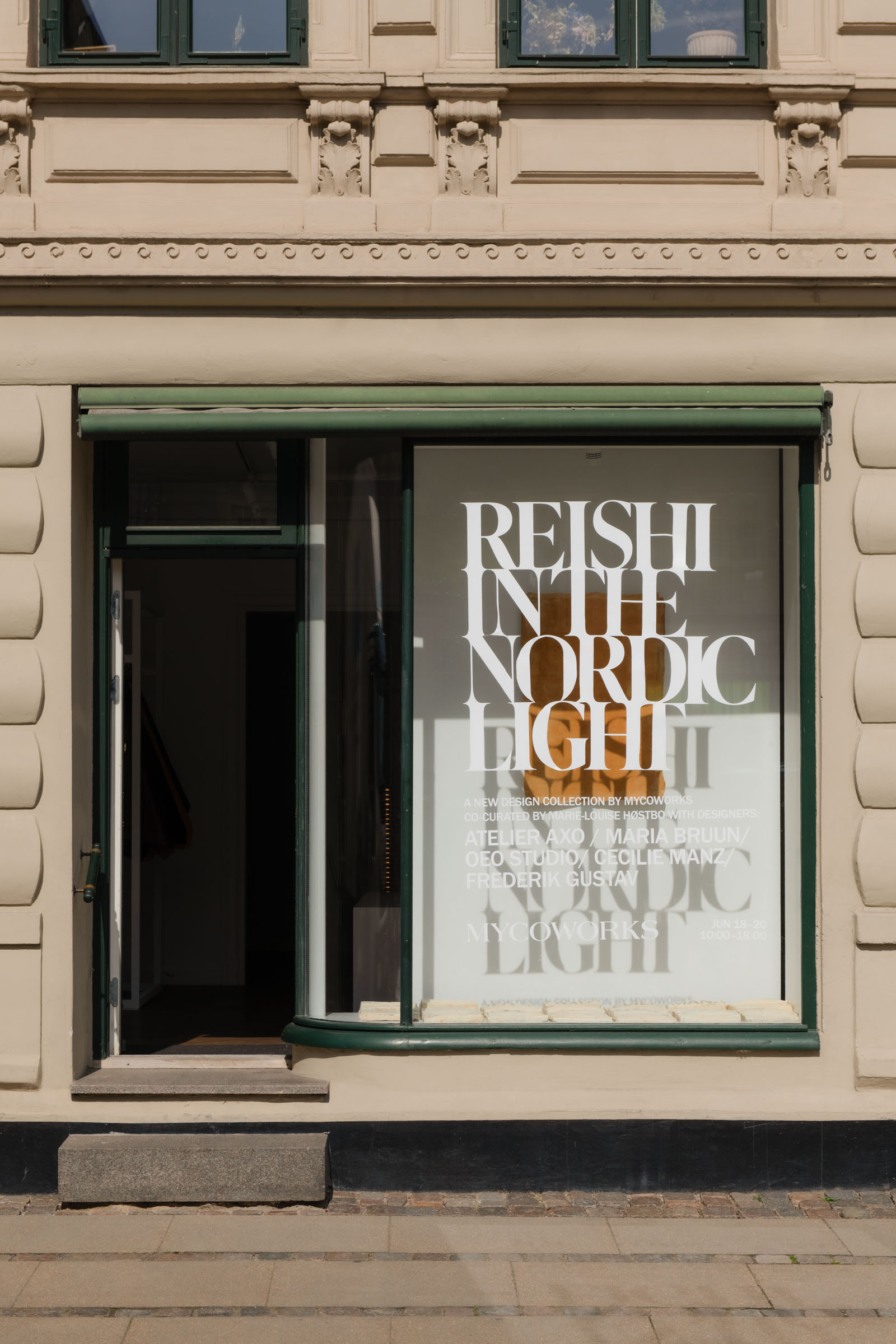
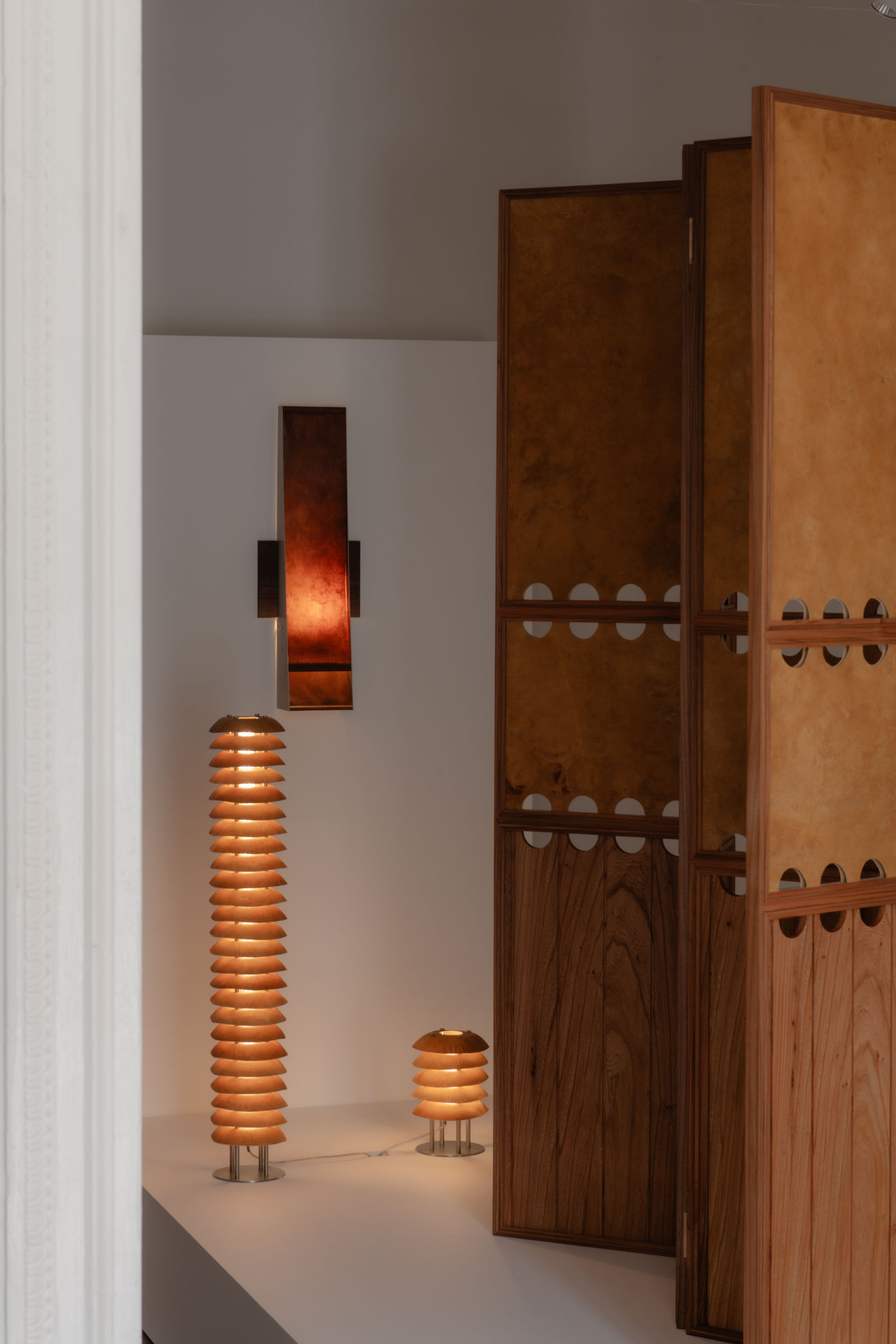
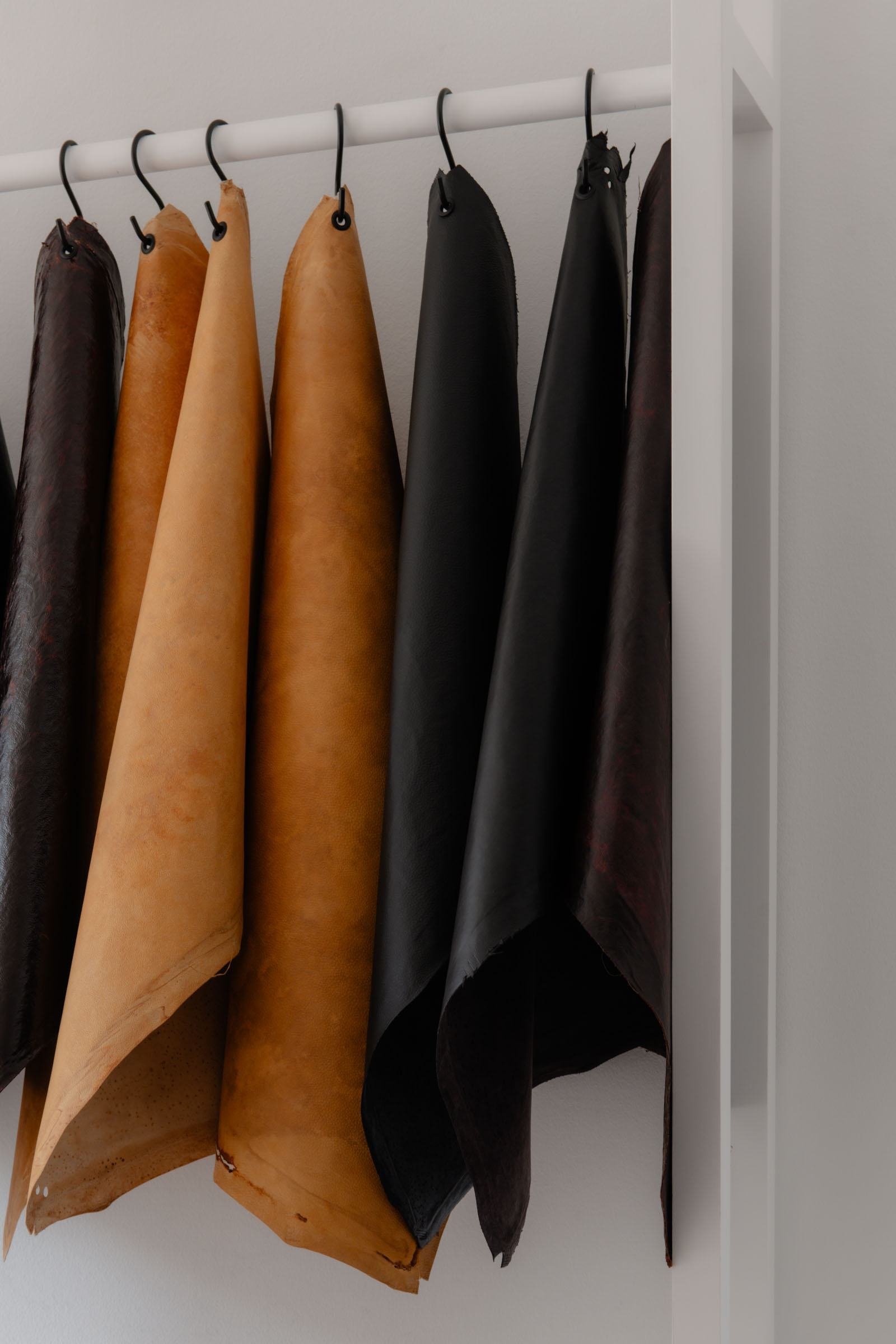
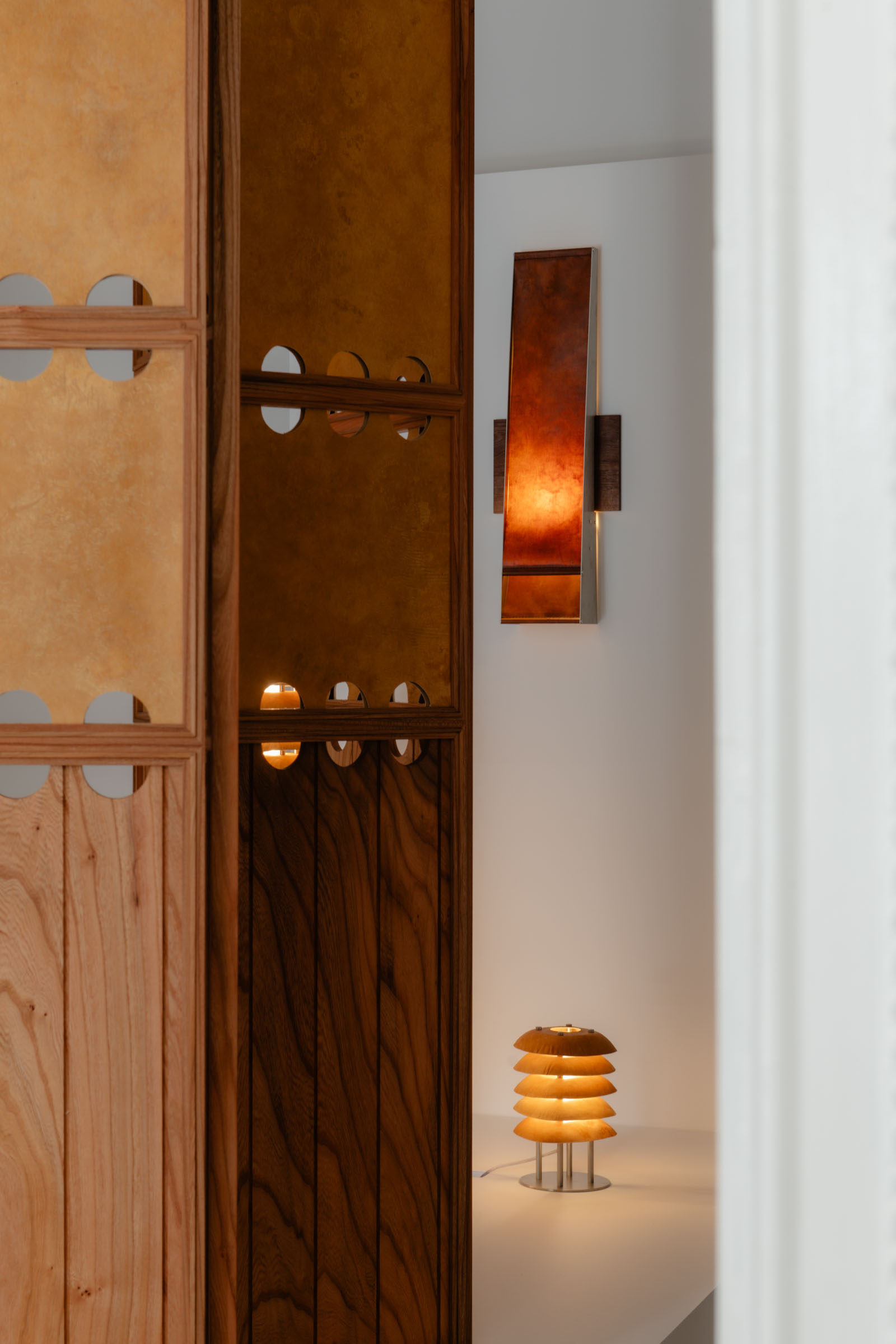
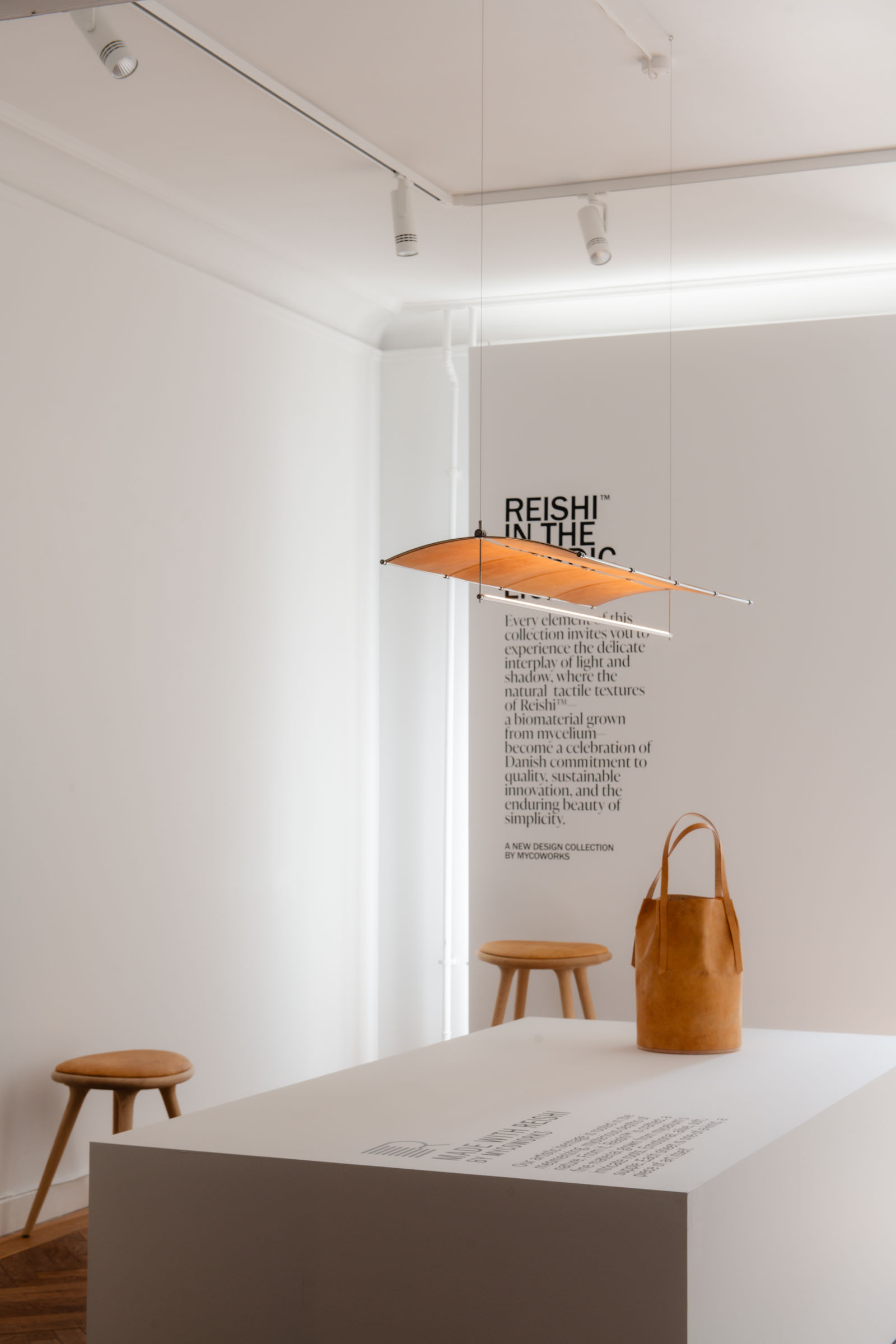
Danish design, often associated with blond wood and the pared-back forms of mid-century figures such as Arne Jacobsen – as well as contemporary brands like Frama – hasn’t traditionally been seen as a driver of material innovation. But a new collection unveiled at 3 Days of Design seeks to challenge that notion. Reishi in the Nordic Light, a collaboration between US-based biomaterials company MycoWorks and Danish architect-curator Marie-Louise Høstbo, explores the potential of Reishi – a leather-like material made from mycelium, the root system of fungi – through the lens of emerging Danish talent.
For the exhibition, Høstbo invited five local designers – Maria Bruun, Frederik Gustav, Cecilie Manz, OEO Studio and atelier axo – to create new works using Reishi. 'The brief was to create something that was durable, functional and beautiful,' she explained. 'Each designer interpreted the material in their own way.'
Copenhagen-based atelier axo drew inspiration from the sawtooth roofs of industrial buildings near their studio, designing a wall-mounted light that echoes those jagged silhouettes. To achieve a sense of transparency in the typically opaque material, they oiled a sheet of amber-toned Reishi, producing a soft, ambient glow.
OEO Studio also explored lighting, designing a series of tiered floor lamps as a tribute to Poul Henningsen’s groundbreaking luminaires, first unveiled at the Paris Expo exactly a century ago. 'They tried something entirely new with Reishi, boiling the sheets and placing them into a pressure mould to create three-dimensional shades. Danish design is known for pressure moulding, but also for shaded, indirect lighting – a style that debuted in Paris in 1925. It’s an ode to Poul Henningsen, celebrating the centenary of Danish lighting design,' explained Høstbo.
Though united by a shared material, each of the pieces remains grounded in a recognisably Danish sensibility. 'In the Danish design tradition, we’re taught to make objects that transform and connect to the spaces where we spend our lives,' said Høstbo. 'This has been an interesting experience for the designers – showing that Danish design is not only referencing the archives, but also looking ahead.'
